

The Ultimate Peru Itinerary: From One Week to One Month of Travel
By Author Arakita Rimbayana
Posted on Last updated: 6th October 2023
Home to an abundance of cultural and archaeological sites, many of which are surrounded by breathtaking nature, Peru is guaranteed to exceed your expectations. And then there’s the local cuisine: many agree Peru’s culinary scene is one of the best in the world.
Whether you’ve got a week or two weeks in Peru (or perhaps even more), there’s plenty of time to explore the country’s famed archeological sites, hit the beach, or head into the jungle, all the while treating yourself to the country’s unique offering of traditional coastal and Andean dishes.
Machu Picchu is on everyone’s list when it comes to a vacation in Peru, and it’s to understand why. In fact, all of our four Peru travel itineraries include a visit to what is by far the country’s premier tourist attraction. But there’s plenty more to add to your Peru vacation itinerary.
Often forgotten, northern Peru also offers big adventure, from surfing to archeological sites that are significantly older – and perhaps more impressive – than better-known Machu Picchu.
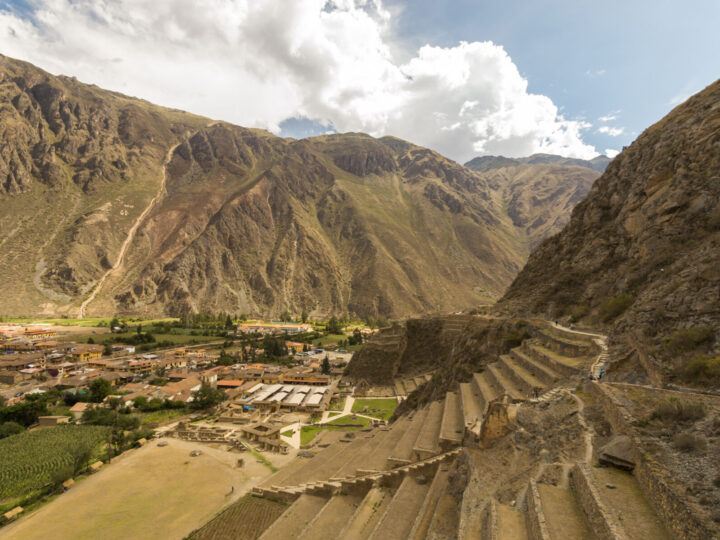
Luckily, these different Peru itineraries can help you explore the country’s most acclaimed destinations and get you off the beaten trail.
Click to navigate this article:
What should you consider before planning your itinerary?
- Altitude sickness is no joke in Peru , especially if you plan to hike or trek. Our itinerary focuses on helping you adjust to the altitude slowly while exploring the best of Peru. Generally, your body needs two weeks to get used to it completely. However, a couple of days of adjustment is better than nothing. Drinking plenty of water and having enough sleep usually help with altitude sickness. You can also consume coca leaf tea and apply herbal oil made for this type of sickness; both are available in most local markets in Peru. Alternatively, consult your doctor before departing your home country as they can prescribe you medication, such as acetazolamide, to ease symptoms of altitude sickness. It’s worth noting that eating spicy, sour, and greasy seafood combined with alcohol can exacerbate the symptoms of altitude sickness. Drinking a cup of coca or muña tea in the morning and after a big meal is one of the known remedies for stomach discomfort.
- Instead of doing both the Colca Canyon hike and the Inca Trail, it’s best to choose only one, no matter how long your itinerary is. There are so many cool things to do in Peru other than just trekking, and it would be a loss to miss them while you’re here. Besides, both trails are strenuous – especially considering the altitude – and you may end up spending the rest of your vacation recovering – rather than enjoying Peru.
- Different regions in Peru usually have different weather conditions. For example, Arequipa is a high-altitude desert where the sun is quite intense, yet Lima and its shores have their own microclimate where winter days are mostly cloudy, but it almost never rains. With that in mind, before you finalize your itinerary, it’s worth reading our article on the best time to go to Peru to learn when’s the best time of the year to travel there.
- Peru is an affordable destination. Dining at a fancy restaurant generally costs less than $50 USD for two, even in the capital city, Lima, while you can expect to spend around $70 USD per night for a decent mid-range hotel, or around $15 USD per night for a bed in a dorm room. Transportation is also very affordable: flights between Lima and Cusco can cost as little as $100 USD one-way, while a bus covering this route can cost as little as $45 USD. As a result, you can cover a lot of distance during even a shorter trip. Read out complete guide to how much it costs to travel in Peru for more information.
- There are only a few direct domestic flights within Peru that don’t travel through Lima . Most flights have at least one stop in the capital city. There are plentiful bus routes throughout the country, although many routes wind through the mountains and it’s wise to always pay for a more expensive bus company, as cheaper operators can be dangerous; we recommend using companies such as Cruz del Sur , Oltursa , TEPSA , Movil and Civa for their higher safety credentials. Bus Bud is a great site for finding bus tickets before you travel, but they are often cheaper bought at the bus station directly. If you have significant issues with motion sickness, do bring medication.
- Public transport in Peru is accessible and affordable. Bus routes pass each city’s popular places, while taxis are cheap, too. A one-kilometer trip usually costs around S/4 ($1 USD) or less. Note that most taxis are unmetered, so it’s best to agree upon the fare before you get into one.
- Packing for your trip to Peru depends a lot on what you plan on doing. To visit Machu Picchu, pack light and comfortable clothing, alongside a waterproof jacket as there’s a high chance of rain. Medication to help you deal with altitude sickness (and motion sickness if you plan on taking long bus rides) is always helpful. Sunblock is very important, particularly in high-altitude destinations such as Cusco where the sun is more powerful. Packing a wide-brim hat is also useful. Check out our complete South America packing list for more details.
Planning Your Trip to Peru?
Save time, stress & money with a customized travel itinerary planned for you by a Peru expert
One week in Peru
Overview of this one-week Peru itinerary:
- Days one and two: Cusco and the Sacred Valley
Days three and four: Machu Picchu
Day five: cusco, days six and seven: lima.
One week in Peru is enough to explore Machu Picchu and the former capital of the Inca, the historic city of Cusco before heading back to Lima for a final few days on the coast.
Day one: Cusco
Instead of Lima, make Cusco your first stop in Peru. Landing here only requires a further one-and-a-half-hour flight from the capital – and which is definitely the best way to get from Lima to Cusco. And it’s worth the chance to dive into the cultural highlights right away. Cusco also offers some of the best tour companies for Machu Picchu.
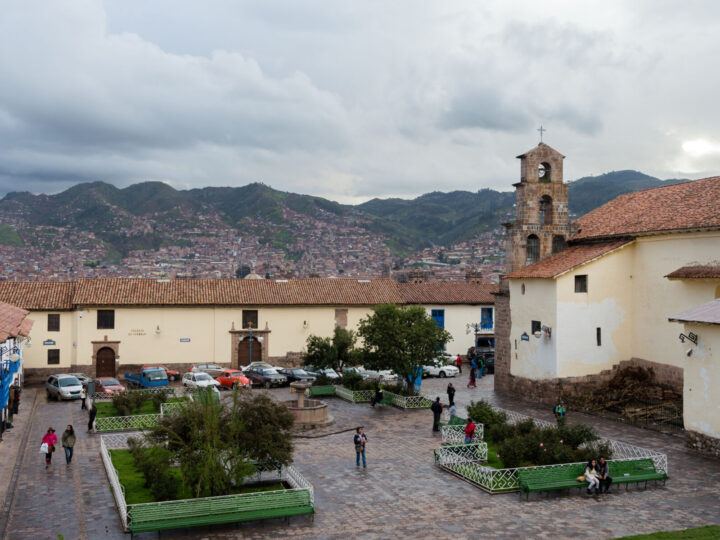
Spend your first day in Cusco taking things nice and easy; at 3,400 meters (around 11,000 feet) above sea level, this city can leave you feeling breathless. Adjust to the altitude and the low oxygen levels by exploring the old town – the focal point of this city – on foot.
Head to the Museo Inka (Inca Museum) to explore over 10,000 Inca artifacts including mummies and gold figurines, as well as the Museo de Arte Precolombino (Museum of Precolombian Art) to admire gold and silver ornaments, some of which date as far back as 1250 BC.
End your walking tour with a visit to the cathedral , where you can find painter Marcos Zapata’s famous rendition of Leonardo da Vinci’s The Last Supper, just this time featuring a guinea pig as part of the feast.
If you’re still feeling good, take the 15-minute walk uphill to the Sacsayhuaman site , a walled complex that served as both a temple and fortress for the Inca and has fantastic views of the city. An easier alternative is a taxi ride from the city; expect to pay around S/10-25 ($2.5-6.3 USD), although the exact fare depends on which road is accessible on that day.
Where to stay in Cusco: Promising affordable comfort in a charming setting, El Mercado ($210 USD double) is a perfect getaway in the city center. The 32 bedrooms are decorated with modern furnishings and artwork, adding a modern twist to a historic casona .
Where to stay in Cusco on a budget: Few places offer the degree of comfort and affordability as MOAF Boutique Hotel ($80 USD). The rooms are bright thanks to plenty of natural light and have modern furnishings and pleasant neutral decoration. This helps to enhance the rooftop views available in some bedrooms, as well as in various communal areas.
Day two: The Sacred Valley
On your second day, it is time to explore the different attractions of the Sacred Valley , where the Urubamba River brings life to otherwise barren land. Take a colectivo (a public van), bus, or taxi from Cusco to the Sacred Valley and the town of Pisac . The former is the cheapest and easiest option; you’ll find they leave every ten minutes or so from Puputi Street, and cost between S/4-10 ($1-2.5 USD).
Pisac is a peaceful little town where you can hike (or take a taxi) to a magnificent Inca fortress that sits in the hills above. The views of the Sacred Valley from the site are mesmerizing. Located only an hour away from Cusco and also home to a busy daily market (although it’s best visited on a Sunday), Pisac is one of the best day trips from Cusco.
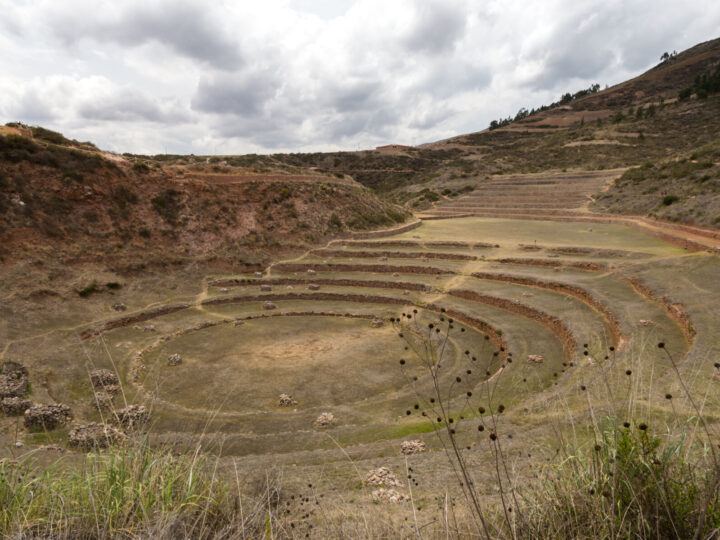
Other great options in the Sacred Valley are Moray , a series of concentric circular stone terraces that were used for testing out growing crops in different conditions, as well as the Salinas de Maras (Maras salt pans), where local people have panned for salt for hundreds of years. You can take local transportation to get to them, or book this tour that’ll take you to each.
From Pisac in the Sacred Valley, you can return to Cusco or continue downriver to Ollantaytambo , another picturesque town home to further archeological sites, as well as horseback riding, rafting and hiking tours. The train to Machu Picchu is available from both.
Where to stay in Ollantaytambo: Right next to the train station, but home to a lush garden and suntrap terrace, El Albergue ($142 USD double) is a tranquil place to while away the evening. They also have a fantastic on-site restaurant that cooks up ingredients from the hotel’s organic vegetable garden.
Where to stay in Ollantaytambo on a budget: Rustic but clean bedrooms are the norm at the affordable Picaflor Tambo Guest House ($42 USD double) run by owners who will ensure you have the most comfortable stay possible.
Head northeast along the train to reach Aguas Calientes , a small town at the base of Machu Picchu and which is filled with bars, restaurants, and markets. The train ride from Cusco to Aguas Calientes takes four to five hours, while the one from Ollantaytambo only takes one and a half hours.
If you choose the latter option, you can spend your morning visiting Ollantaytambo’s archaeological sites before departing and the afternoon in Aguas Calientes relaxing in your hotel, soaking in the thermal baths that give the town its name, or even checking out the local butterfly sanctuary .
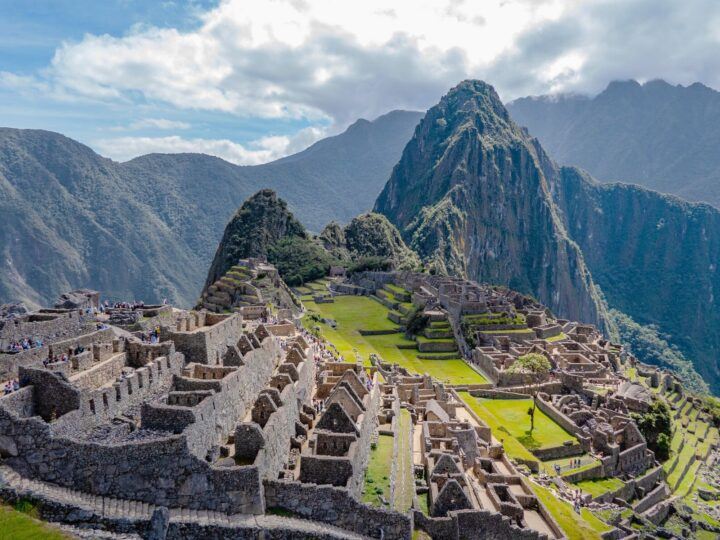
The next day, get up bright and early to board the earliest bus from Aguas Calientes to Machu Picchu – at 5:30 am. By doing this, you can expect to be one of the first to arrive at the site. What a treat: there’s nothing like enjoying your first view of the ruins accompanied by little else than the sound of birdsong.
For the best weather – and for a clear, unobstructed view of the site’s magnificent stonework – read our guide to the best time to visit Machu Picchu and Peru in general.
Feeling adventurous? Eschew the bus and instead hike from Aguas Calientes up to the entrance of Machu Picchu.
However, depending on your fitness level, the hike can take between one and two hours – so start early if you want to see the site at its quietest.
Be aware when planning your trip to Machu Picchu that you must book tickets well in advance as there is a limit on the number of people who can enter the site per day. Your ticket gives you four hours within the grounds, and it generally takes around two hours to explore Machu Picchu.
Note that it’s now mandatory to visit with a guide, which you can hire at the entrance to the site, although you’ll have more control over the language they speak if you book with a tourism agency in Cusco.
It’s another couple of hours to your visit if you plan to hike up Huayna Picchu, too (just note you’ll need to buy a ticket with permission to visit Huayna Picchu in order to do this). This hike is strenuous, but the views across the entire site are a highlight of any trip to Machu Picchu.
It can be pricey visiting Machu Picchu, so make sure to read about how much it costs to visit the Inca citadel before planning your trip.
Return to Cusco in the evening by train.
Spend one last day exploring historic sites, as well as enjoying the city’s culinary traditions. Explore the imposing buildings of the formerly impressive Inca temple of Q’orikancha, join tourists and locals alike for locally-brewed beer in Cholos, head to the ChocoMuseo for a workshop on chocolate-making and spend an evening sampling heady pisco cocktails and listening to lively local music at the Museo del Pisco .
Wrap up your Cusco itinerary by visiting the Mercado San Pedro (San Pedro market), where you’ll find sweaters, bags, and knick-knacks made from Alpaca wool. While these are also available in other markets around the city, you’ll find them for the best prices in San Pedro.
Head back via plane to the capital city, Lima . Two days in Lima is just the right amount of time in order to get a glimpse of life in this dynamic city. Head to the trendy Barranco neighborhood , home to uber-chic cafes and chic bars in restored mansions, with all of this just a few steps away from the beach.
For an insight into the grittier side of Lima, head by taxi to the Callao neighborhood where Lima’s former shipping district and one of its most dangerous places has been transformed through street art and shops selling local arts and crafts – just don’t stray far aware from local hub Callao Monumental as the area remains dangerous for visitors.
Don’t miss the city’s renowned dining scene. For haute cuisine, head to Barranco and the world-famous Central , or dine on Nikkei (a Peruvian take on sushi) at Maido in Miraflores.
Any visitor to the city can’t miss the quintessential Peruvian dish: ceviche , so head to La Mar or Punta Azul in Miraflores to sample your newest favorite dish – washed down with a crisp glass of white or a pisco sour. After all, Peru is the best country in South America for affordable yet outstanding dining .
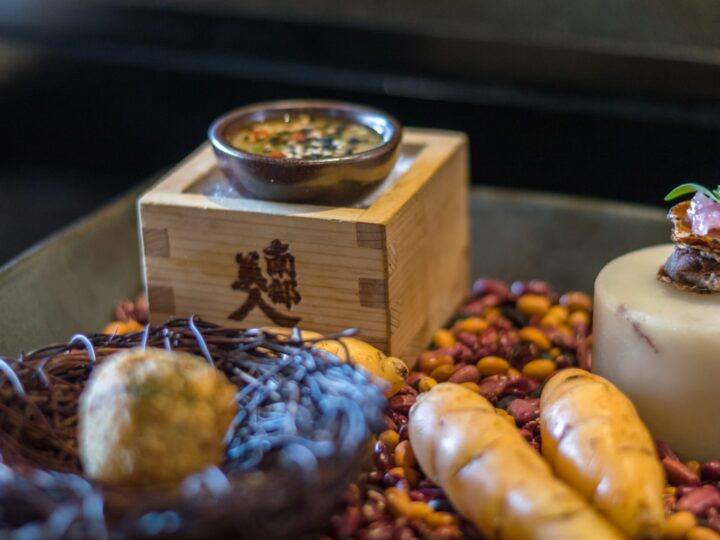
Spend your last days here museum-hopping (the Museo Larco is one not to miss), exploring the old town around the Plaza Mayor , or up the ante by testing the waves of the Pacific Ocean on a surfboard.
Where to stay in Lima: The Barranco neighborhood is known as a place of poets, artists and creatives, so there’s nowhere better to stay than in Second Home ($135 USD double), a grand, eight-room guesthouse in the former home of Peruvian sculptor Victor Delfin, who you might even spot pottering around the house if you’re lucky.
Where to stay in Lima on a budget: One of our favorite places to stay when we’re in Lima, the Lighthouse Bed and Breakfast ($40 USD double) is run by a Peruvian-British couple and offers a handful of doubles with private bathrooms in a pleasant residential area in Miraflores. The terrace out the back where breakfast is served is a gorgeous place to while away the day.
Where to stay in Lima on a budget: Located in Miraflores and offering a youthful, friendly guide Selina Lima ($53 USD double) is our budget pick. (read our comprehensive Selina Lima review ) . Even though it’s a hostel, comfortable and stylishly presented private rooms with private bathrooms are available.
Got more time to spend in Cusco? Read our Cusco itineraries article for trips from three to ten days in length.
10 days in Peru
Overview of this 10-day Peru trip planner:
- Days one through three: Cusco and the Sacred Valley
- Days four through seven: The Inca Trail
Day eight: Machu Picchu
Days nine and ten: lima.
10 days in Peru is the perfect length of a trip that allows you to add the Inca Trail to your Machu Picchu trip. Follow the itinerary above but, instead of taking the train straight to Aguas Calientes on day three of the itinerary above, take a hiking tour of the Inca Trail to Machu Picchu .
Days four through seven: Inca Trail
The trails built by the Inca throughout the Andes were used to connect what was once a vast empire to its territories across Peru and into neighboring Ecuador, Bolivia and Chile.
Known as the Qhapaq Ñan (Royal Road), many of these paths remain today and can be explored on foot – much the same way as they would have been used by the Inca royalty and pilgrims.
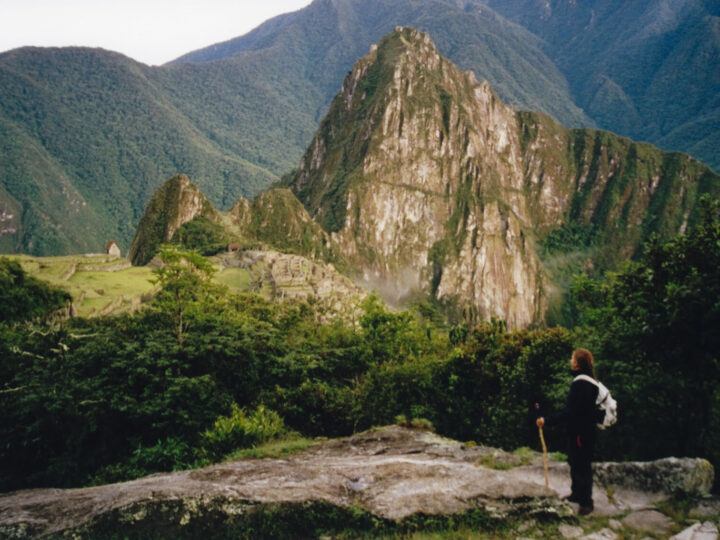
Hiking to Machu Picchu on the 40-kilometer (25-mile) Inca Trail generally takes four days and joining a guided tour is required. If you see three-day Machu Picchu tour operators, it is likely only for the fittest travelers, or the tour only includes part of the trail.
We recommend reading our extensive guide on what you need to know about hiking the Inca Trail before signing up for any tour and reading our comparison of the Inca Trail and Salkantay Trek (another popular trek to Machu Picchu) to understand our options.
This hike is strenuous and can be dangerous in some parts. Even for experienced hikers, it’s challenging, so listen to your body, take your time, and pause if you need to.
The good news is you don’t need to pack food or a tent as those will be provided by the tour company. Some companies even offer a porter service, so you don’t need to carry anything during the entire hike!
The Inca Trail leads directly to Machu Picchu through what is known as the Sun Gate – named as such because the sun’s rays pass through here on the summer solstice. The view from here is also legendary and a privilege only to those who reach the site from the Inca Trail.
Once you’ve explored this magnificent stone fortress, descend to Aguas Calientes via the path or take one of the public buses from the gate of Machu Picchu.
Depending on what time you get to town and your train schedule, you can either spend the night in Aguas Calientes or go directly to Cusco, where you’ll find flights to Lima.
As per the previous itinerary, spend the last two out of your ten days in Peru tasting local dishes, visiting museums, or simply relaxing on the beaches of Lima.
Two weeks in Peru
Overview of this two-week Peru vacation itinerary:
Days one and two: Lima
Day three: pisco and ballestas islands, day four: nazca, days five to eight: arequipa and the colca canyon, days nine and ten: cusco and the sacred valley.
- Days eleven and twelve: Machu Picchu
- Day thirteen: Cusco
- Day fourteen: Lima
With two weeks in Peru, you can explore four main destinations – Lima, Nazca, Arequipa, and Machu Picchu – and famous attractions near to these main draws.
Instead of going straight from Lima to Machu Picchu, spend two days exploring Lima as you would on the last days of the previous itineraries, and then take a day trip from Lima to the Ballestas Islands and Nazca.
Take the bus four hours south to Pisco , one of the most popular towns within striking distance of the city because of – well, you can guess from its name – Pisco, the famous Peruvian spirit. In this town, tourists can visit vineyards and sample their products.
However, if you’re short on time, head directly for Paracas , one of the most popular destinations to visit in Peru . This is where the boat trip to Ballestas Islands, aka the Peruvian Galapagos, starts.
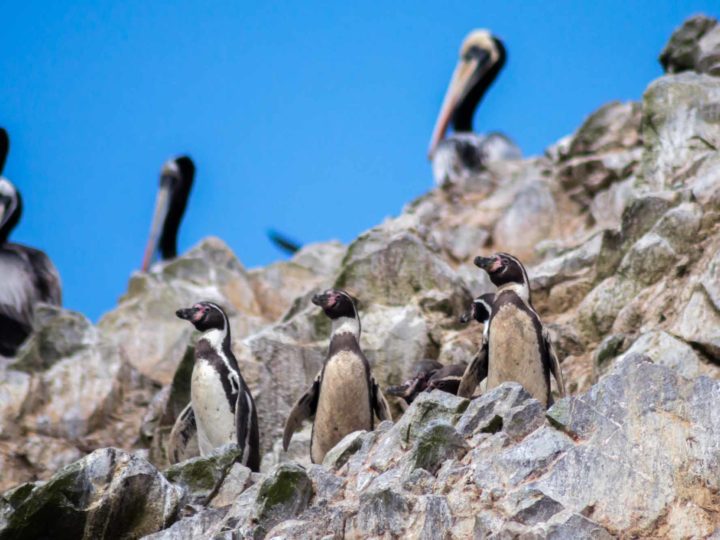
While they’re certainly not as impressive as their Ecuadorian namesake, the Ballestas Islands are still full of a rabble of wildlife, that can include everything from Humboldt penguins to sea lions and pelicans.
Since the entire archipelago is a national reserve, you’re not allowed to swim or disembark on any of the islands, but your two-hour boat tour will give you front-row seats to the raucous melee of sea life that lives upon them.
Book with a local tour company on the day or in advance here .
Stay overnight in Paracas, ready for an early bus the next morning.
Where to stay in Paracas: Located just meters from the beach, the chic Casa Paracas ($108 USD double) will make you wish you had more time to hang here and soak up the sunshine. All rooms have their own private balconies, as well as much-appreciated air conditioning.
Where to stay in Paracas on a budget: Basic but budget-friendly, Atenas Backpacker Hospedaje ($18 USD double) is an extremely cozy home-away-from-home, with plenty of communal spaces and an extremely welcoming atmosphere.
Your next stop is Nazca , a four-hour bus journey from Paracas. This is where you’ll find the massive geoglyphs, the Nazca Lines , whose origins – and purpose – remain one of the greatest mysteries in the world.
For the best views of these remarkable lines, which are in the form of hummingbirds, spiders and bold geometric patterns, take a flight over the desert from the airport in Nazca.
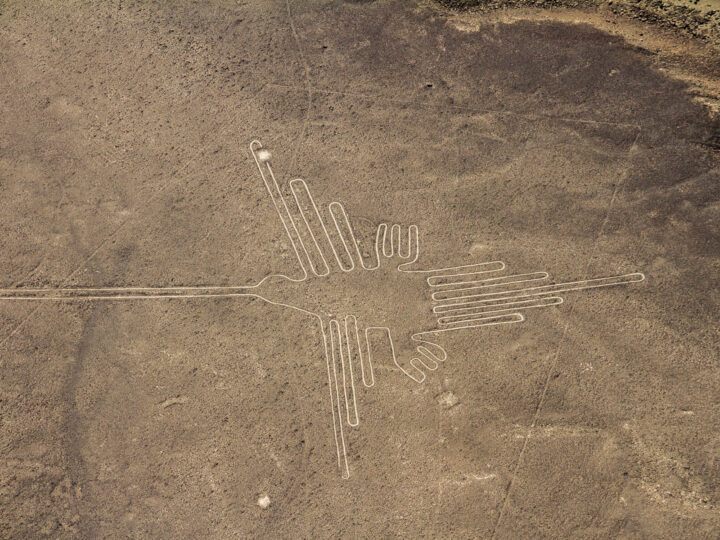
There’s not much to do in Nazca besides wandering around the Plaza de Armas, so get an early night ready for tomorrow.
Where to stay in Nazca: It’s no looker, but Nasca Travel One Hostel ($22 USD) has everything you need for a comfortable one-night stay and is extremely clean and comfortable, particularly as it’s a little away from the town center meaning you’re guaranteed a peaceful night’s sleep.
A six-hour bus journey from Nazca brings you to the White City, Arequipa . Situated in the volcano-studded highlands of southern Peru at 2,335 meters above sea level, Arequipa is your first introduction to altitude, so take it easy once you get off the bus.
Arequipa is a striking place: Volcán Misti stands tall above the city, and the buildings around the center are built using dazzlingly white volcanic stone.
Spend the remaining part of the day exploring Arequipa’s old town – the Monasterio de Santa Catalina , a vast and beautiful nunnery, and the seventeenth-century cathedral are two not to miss – before an evening tasting the lip-smacking rocoto relleno (stuffed spicy pepper), a traditional Arequipan dish.
For more highlights of the city, read this article about things to do in Arequipa and our guide to the best places to stay in Arequipa .
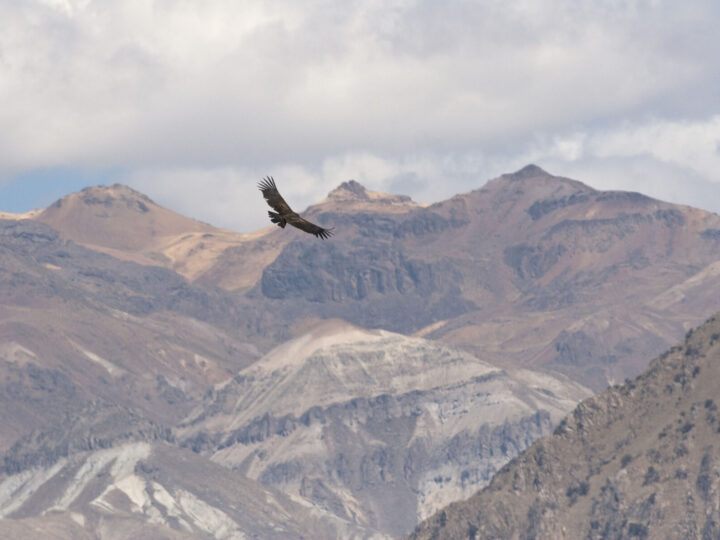
On the afternoon of day six, hop on a minivan to Chivay (3.5 hours) and then onto Cabanaconde (1.5 hours) and spend the night there in preparation for the Colca Canyon trek .
The next day, embark on the two-day Colca Canyon trek , which starts from Cabanaconde and heads down into the bottom of the canyon.
Unlike the Inca Trail where you sleep in tents, you will be spending nights within rustic lodgings inside Sangalle, the oasis town at the bottom of the canyon, offering you a soft bed and a pleasant night’s sleep. But don’t be fooled: this hike is challenging.
After a day hiking into the canyon the only way back out is up – a climb of 1,200 meters (4,000 feet) over a five-kilometer (three-mile) stretch.
Return to Arequipa by bus for an overnight bus to Cusco or for a final night in the city before a bus the next morning.
Where to stay in Arequipa: Set in a charming old house with a gorgeous courtyard for a leisurely cup of coffee or cold beer, La Hostería Boutique Hotel ($72 USD) double) is one of Arequipa’s (and Peru’s) most luxurious hotels . A pool, sun terrace and spa facilities are just some of the highlights here.
Where to stay in Arequipa on a budget: The family-run La Casa de Margott ($30 USD double) has clean and spacious rooms, as well as a pleasant roof terrace for lounging in.
It’s a fair distance from Arequipa to Cusco, so you can expect a ten-hour bus journey to get you from the coastal highlands and up into the Andes.
Unlike flying, which can lead to altitude sickness due to the rapid change in altitude, taking a bus to Cusco is a much gentler form of transport and gives you the opportunity to view some of the country’s incredible mountain landscapes.
Finish your itinerary by following the one-week in Peru itinerary, just shaving off a day in Lima at the very end.
Adapting this itinerary: Want to hike the Inca Trail instead? Spend days fix and six in Arequipa, then head to Cusco for the Inca trail for days seven through ten, with day eleven at Machu Picchu. Spend days twelve and thirteen in Cusco, before heading back to Lima on day fourteen.
One month in Peru
Overview of this one-month Peru backpacking itinerary:
Days three and four: Trujillo and Huanchaco
- Days six and seven: Cajamarca
- Days eight to ten: Chachapoyas
Day eleven: Lima
- Day twelve: Pisco and the Ballestas Islands
- Days thirteen: Nazca
Days fourteen to seventeen: Arequipa and the Colca Canyon
- Days eighteen to nineteen: Puno and Lake Titicaca
- Days twenty to twenty-one: Cusco and Sacred Valley
- Days twenty-two to twenty-five: The Inca Trail
Day twenty-six: Machu Picchu
- Day twenty-seven: Cusco
- Days twenty-eight to thirty: Puerto Maldonado
Do you have one whole month to spend exploring Peru? Lucky you: you’ve got time to add northern Peru to your itinerary. In addition, a slower pace of travel means your body will have the time to adjust to the altitude changes well.
One month in Peru is also plenty of time for seeing the most unmissable destinations in Peru: going to the north but without excluding Machu Picchu or the Inca Trail, as well as stopping in Pisco and the Ballestas Islands and Arequipa, plus a trip into the jungle in Puerto Maldonado.
Touch down in Peru’s lively capital city, Lima . While it might be packed with traffic and a little rough around the edges, this city is a place you’ll soon fall in love with.
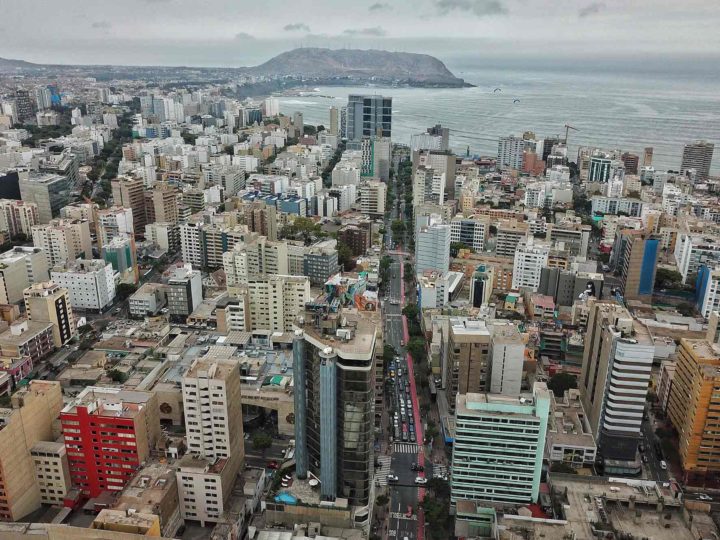
Spend your days museum-hopping (the Museo Larco is one not to miss), exploring the old town around the Plaza Mayor , or up the ante by testing the waves of the Pacific Ocean on a surfboard.
You can also head to the trendy Barranco neighborhood , home to uber-chic cafes and chic bars in restored mansions, with all of this just a few steps away from the beach.
Any visitor to the city can’t miss ceviche, so head to La Mar or Punta Azul in Miraflores to sample your newest favorite dish – washed down with a crisp glass of white or a pisco sour.
From Lima, it’s a grueling nine-hour bus journey to reach Trujillo .
A better alternative is to take one of the multiple one-hour, forty-minute flights from Lima to the airport in Trujillo, which is an easy taxi ride into the city.
Trujillo is a city on few travelers’ bucket lists – but the intrepid who make it here are in for a treat. Many are unaware of the civilizations that predate the Inca Empire, but the archeological sites they left behind are often just as remarkable as Machu Picchu – made more so by the relative lack of visitors at these destinations.
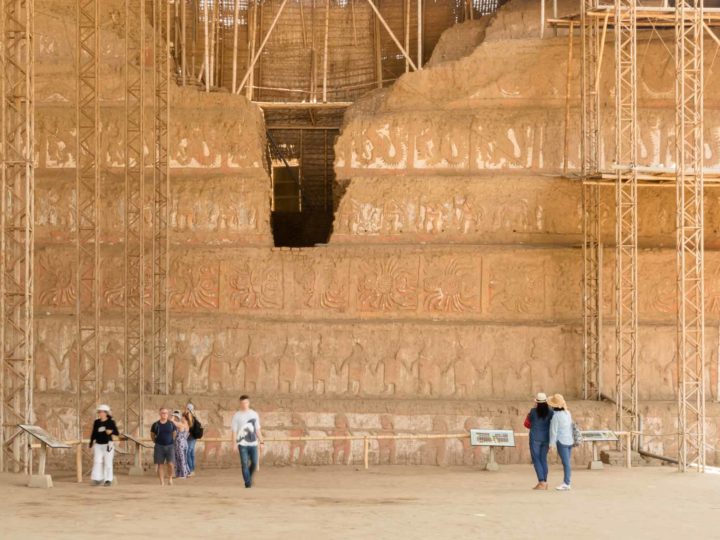
Spend half a day learning about Peru’s remarkable past by taking a bus to Chan Chan , an archeological site just five kilometers away from the city of Trujillo.
Chan Chan was once the capital of the Chimú Empire and is the largest adobe brick city discovered anywhere on earth, having been home to 60,000 people at its apogee around 850 AD.
At the heart of this city was a fortress where temples once paneled with gold, and courtyards and walls decorated with finely carved fish and other symbols of the sea can still be explored.
Another unmissable site to explore in the region is that of the Huacas de Moche . The two pyramids known as the Huaca del Sol and Huaca de la Luna date from 500 AD and are adorned with polychrome friezes, which have been remarkably well preserved and depict the sacrificial rituals with which the Mochica civilization has become associated.
Best explored by a tour from Trujillo, they’re an easy half-day trip from the city.
Alternatively, spend a day on a tour of the Complejo Archeólogico El Brujo (The El Brujo Archeological Complex), a series of small pyramids in which the mummified remains of the Señora de Cao, a shamanic leader, were discovered.
Her body – bearing tattoos of fish, snakes, and spiders – as well as gold and silver artifacts found within her tomb, are on display in the on-site museum.
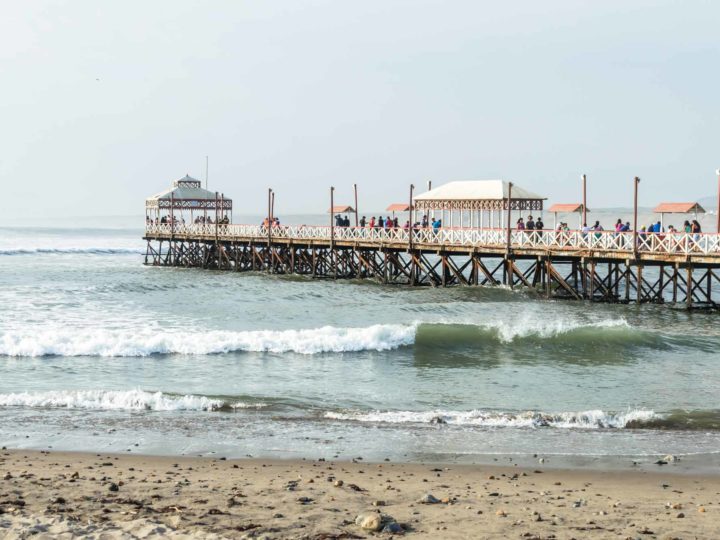
For a relaxing afternoon, consider dropping into Huanchaco , a beachside village a 45-minute bus journey north of Trujillo. Oozing buena onda (good vibes), it’s a great place to swim or surf. Read more about this Peruvian beach town in our complete guide to Huanchaco .
Where to stay in Trujillo: Located not far from the Plaza de Armas, Tierra Viva Trujillo ($100 USD double) might be located within a soulless tower block, but the hotel’s design and clean but chic bedrooms make up for this fact.
Where to stay in Huanchaco: Accommodation options abound, including the glorious tranquil yoga hostel, ATMA $7 USD dorm, $21 USD double), with cozy rooms and a very chilled vibe.
Days five and six: Cajamarca
Your next stop is Cajamarca , an historic Andean town sitting 2,750 meters (9,000 feet) above sea level and a six-hour bus journey east of Trujillo. Home to beautiful buildings constructed during the Spanish conquest, the city’s roots go much deeper.
Head to the El Cuarto del Rescato , the only remaining Inca building in the city and where the Inca emperor, Atahualpa, was captured and later executed by the Spanish and follow this with a trip to the Casa Museo Nicolás Puga, a privately owned museum showcasing 2,000-year-old textiles and other incredible pre-Hispanic treasures.
Adapting this itinerary: Want a more relaxing few days? Head north along the coast (10 hours by bus from Trujillo) for a few days of glorious beach time in Máncora, where the sun shines all year long, and the turquoise water temperature is pleasant for swimming and a popular destination to learn surfing or kitesurfing. A favorite among backpackers thanks to its wild nightlife, Máncora can be replaced with the neighboring surf enclave of Lobitos (1.5 hours south) or the tranquil – and pricey – luxury resorts of remote Las Pocitas. Try the truly remote bungalows at Yemaya ($126 USD double), which are right on the beach.
Spend a day outside of the city by taking a bus to the Ventanillas de Otuzco , a pre-Inca necropolis where the Cajamarca people were buried in holes cut into the volcanic rock. On your way back, visit the Baños del Inca, the Inca thermal baths that are still in use today for a relaxing soak.
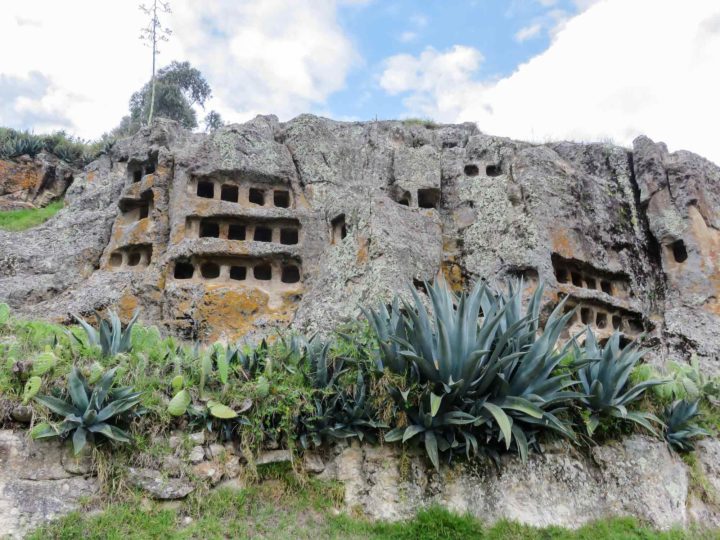
Bear in mind that the bus ride up the mountains is a rough drive, and you might prefer to fly instead – although it won’t save you a huge amount of time. All flights go via Lima (1.5 hours) before heading to Cajamara (1 hour 15 minutes).
Where to stay in Cajamarca: Just off the Plaza de Armas and with a beautiful, flower-filled courtyard, El Cabildo Hostal ($35 USD double) promises comfortable, if somewhat old-fashioned, accommodation.
Where to stay in Cajamarca on a budget: Extremely comfortable and with a location good for both the Plaza de Armas and the bus station, the family-run Chakra Runa Backpacker ($12 USD double) is guaranteed to offer a warm welcome.
Days eight, nine and ten: Chachapoyas
Deeper into the Andes is the market town of Chachapoyas . Getting here isn’t easy: the most direct route is a ten-hour minibus journey, through damp cloud forest and alongside steep mountainsides. Though surrounded by spectacular views, this route is not for the fainthearted.
With that said, Chachapoyas is worth visiting for one particular reason: Kuélap. This site is known as the Machu Picchu of Northern Peru thanks to its mountain-top location – accessible only via cable car, minibus, or a grueling four-hour hike – and the fact it’s the largest ancient stone structure in Peru. It also pre-dates Machu Picchu.
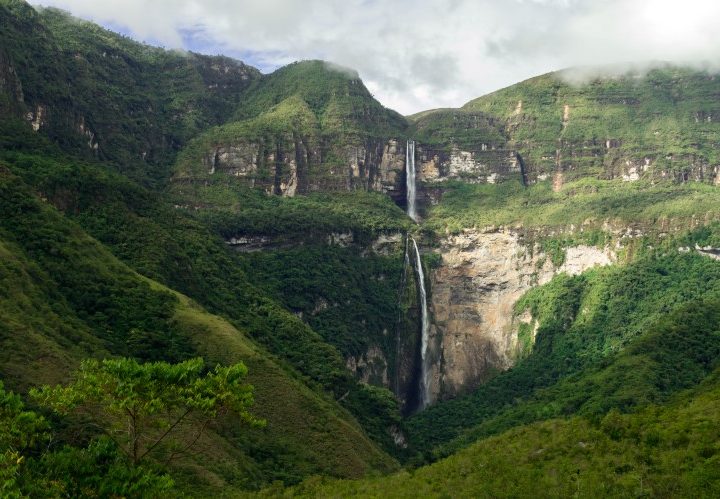
Read more about this magnificent fortress city in our guide to visiting the fortress of Kuélap , which is worthy of a full-day tour from Chachapoyas.
Spend the next few days exploring other key archeological sites, such as the row of ancient sarcophagi located on a wall at Karajía or dropping in at the Museo de Leymabamba , where 219 mummies from the Chachapoya people are on display.
Alternatively, take a bus to Cocachimba and hike to some of the tallest one-drop falls in the world, the dazzling Cataratas de Gocta (Gocta Waterfall).
Where to stay in Chachapoyas: The most luxurious lodgings in Chachapoyas are La Xalca Hotel ($100 USD), another colonial mansion with large, antique-furniture decorated bedrooms, some of which have pretty balconies overlooking the central courtyard and an extensive breakfast buffet. If you’re visiting in winter, ask for a room with carpet, not tiles.
Where to stay in Chachapoyas on a budget: The best budget option in town is Chachapoyas Backpackers Hostal ($22 USD), which has well-sized rooms, all with a private bathroom.
Take a flight with ATSA Airlines (only Monday, Thursday and Saturday; 1.5 hours) from Chachapoyas airport, or a minibus to Jaén (four hours) and a flight from there to Lima (1.5 hours).
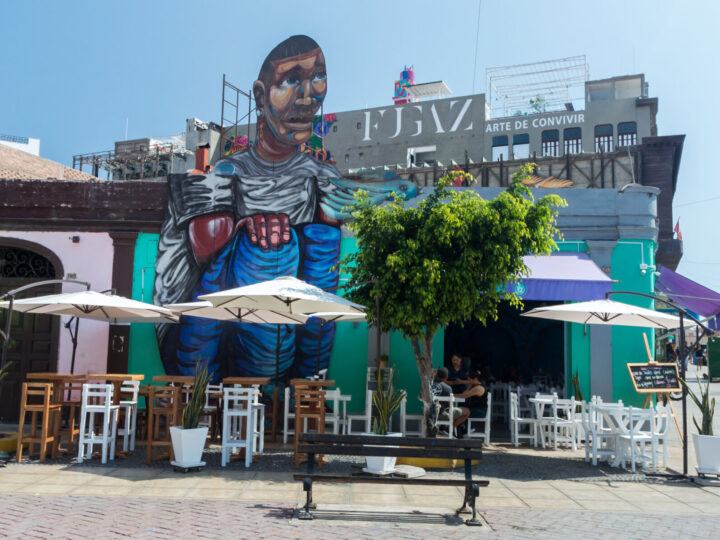
Spend the afternoon relaxing or catching up on any museums or restaurants you didn’t get a chance to visit on your first stay here.
Day Twelve: Pisco and Ballestas Islands
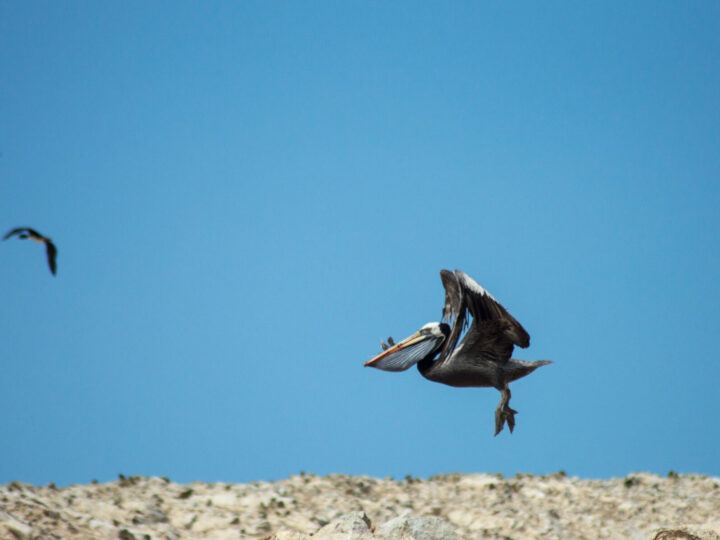
Stay overnight in Paracas, ready for an early bus the next morning.
Day thirteen: Nazca
Spend the remaining part of the day exploring Arequipa’s old town – the Monasterio de Santa Catalina, a vast and beautiful nunnery, and the seventeenth-century cathedral are two not to miss – before an evening tasting the lip-smacking rocoto relleno (stuffed spicy pepper), a traditional Arequipan dish.
For more highlights of the city, read this article about things to do in Arequipa and find out where you should stay in the White City .
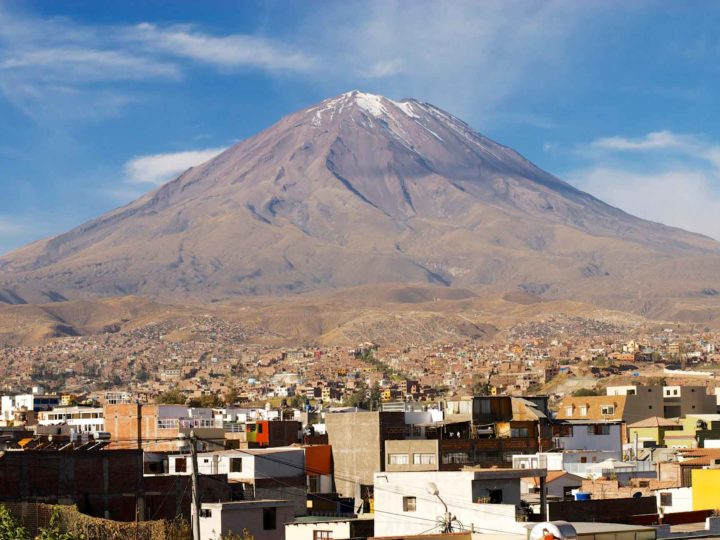
On the afternoon of day six, hop on a minivan to Chivay (3.5 hours) and then onto Cabanaconde (1.5 hours) and spend the night there in preparation for the Colca Canyon trek.
The next day, it’s time to embark upon the two-day Colca Canyon trek , which starts from Cabanaconde and heads down into the bottom of the canyon.
Return to Arequipa for a final night in the city before a bus to Puno the next morning.
Day eighteen and nineteen: Puno and Lake Titicaca
Hop on a six-hour bus that’ll promise fantastic views, especially when navigating the Salinas y Aguada Blanca Reserva Nacional, as it climbs further up into the Andes Mountains to arrive at what can seem to be the very top of the world.
At this high altitude of 3,800 meters (12,507 feet) lies Lago Titicaca, a vast lake covering more than 8,000 square kilometers and spit by the border between Peru and Bolivia. It’s Peru’s most impressive body of water – and one of the most scenic lakes in the whole of South America .
You’ll arrive in Puno , the gateway for all destinations in the Lake Titicaca area. Though small, this city houses accommodations catering to travellers.
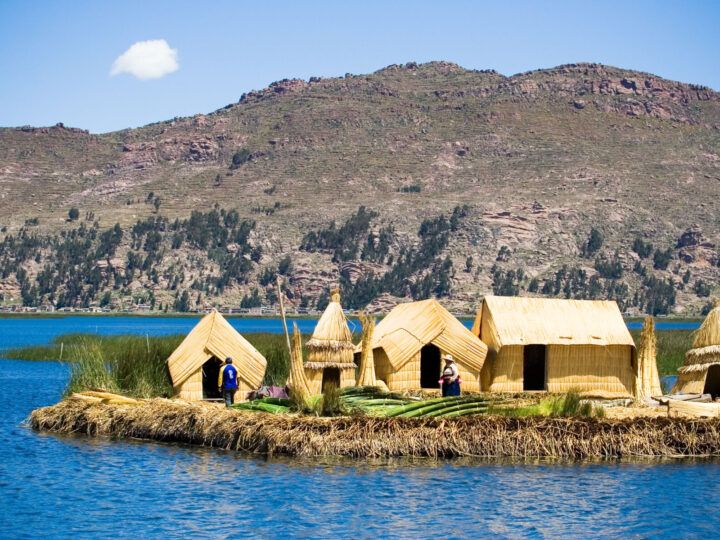
Several options for day trips from Puno are available, but the one to Uros Islands is a must. Comprising over 120 islands, this man-made archipelago is the focal point of Lake Titicaca. Also known as the Floating Islands, each of the islands is made of totora or reeds woven by hand.
You can now stay in a reed guesthouse on the islands – just bear in mind that your money won’t necessarily go to the families themselves. All Ways Travel is the only company I know who pay the communities directly and equitably.
Besides Uros, there are two main destinations on the Peruvian side of Lake Titicaca: Taquile and Amantani. Both are reachable by sailboat and have been inhabited for thousands of years.
Nowadays, they’re best known for their striking textile weaving and you can even spend a night here staying with a local family.
If you can, go further across to the Bolivian side to the Isla del Sol (Sun Island), which is crisscrossed with Inca archeological sites and promises, from every point on the island, spectacular views of Lake Titicaca.
Take your time exploring Lake Titicaca’s secluded corners before you move on to Cusco and Machu Picchu.
Where to stay in Puno: With a flower-filled courtyard and bedrooms tastefully decorated with art, you’ll feel a world away from the bustle of the city at Casa Panqarani ($40 USD double). It even has an excellent on-site restaurant.
Days twenty and twenty-one: Cusco and the Sacred Valley
You should be nice and acclimatized to altitude by now, but it’s still worth taking things easy by exploring the old town – the focal point of this city – on foot. Head to the Museo Inka (Inca Museum) to explore over 10,000 Inca artifacts including mummies and gold figurines, as well as the Museo de Arte Precolombino (Museum of Precolombian Art) to admire gold and silver ornaments, some of which date as far back as 1250 BC.
If you’re still feeling good, take the 15-minute walk uphill to the Sacsayhuaman site , a walled complex that served as both a temple and fortress for the Inca and has fantastic views of the city.
An easier alternative is a taxi ride from the city; expect to pay around S/10-25 ($2.5-6.3 USD), although the exact fare depends on which road is accessible on that day.
On your second day, it is time to explore the Sacred Valley , where the Urubamba River brings life to otherwise barren land. Take a colectivo (a public van), bus, or taxi from Cusco to the town of Pisac. The former is the cheapest and easiest option; you’ll find they leave every ten minutes or so from Puputi Street, and cost between S/4-10 ($1-2.5 USD).
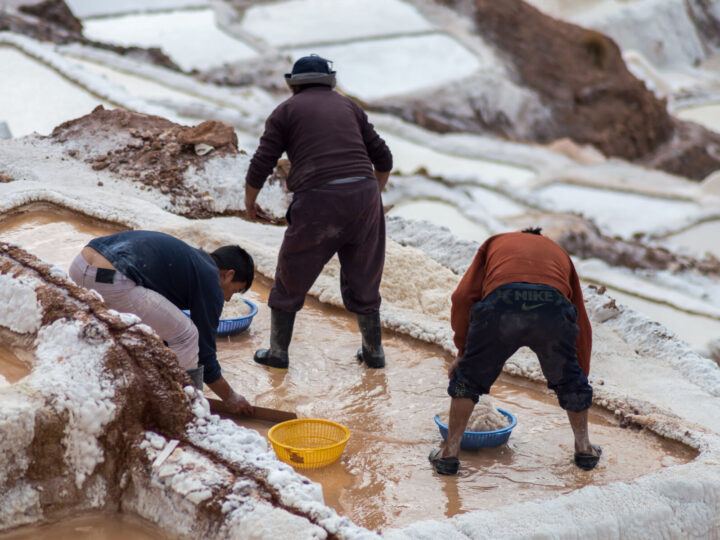
Pisac is a peaceful little town where you can hike (or take a taxi) to a magnificent Inca fortress that sits in the hills above. The views of the Sacred Valley from the site are mesmerizing.
Located only an hour away from Cusco and also home to a busy daily market (although it’s best visited on a Sunday), Pisac is one of the best day trips from Cusco.
Other great options in the Sacred Valley are Moray , a series of concentric circular stone terraces that were used for testing out growing crops in different conditions, as well as the Salinas de Maras (Maras salt pans), where local people have panned for salt for hundreds of years. You can take local transportation to get there, or book this tour that’ll take you to each.
Day twenty-two to twenty-five: The Inca Trail
The trails built by the Inca throughout the Andes were used to connect what was once a vast Empire to its territories across Peru and into neighboring Ecuador, Bolivia, and Chile.
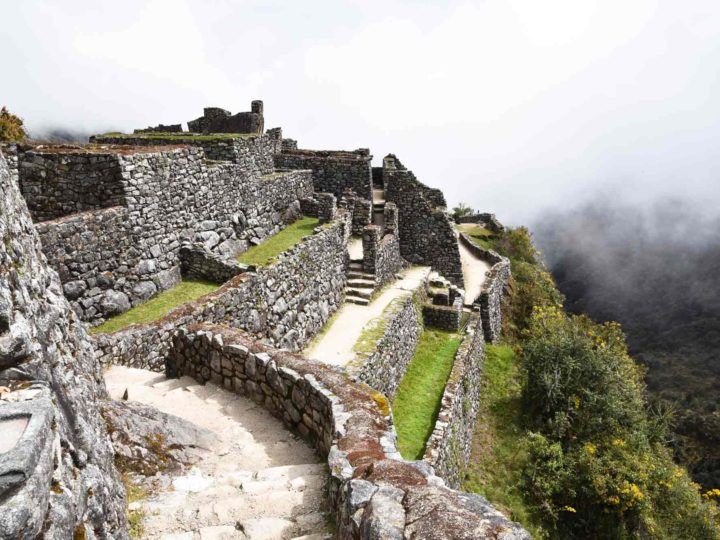
Hiking to Machu Picchu on this 40-kilometre (25-mile) trail generally takes four days and joining a guided tour is required. If you see three-day Machu Picchu tour operators, it is likely only for the fittest travellers, or the tour only includes part of the trail.
We recommend reading our extensive guide on what you need to know about hiking the Inca Trail before signing up for any tour; alternatively, if you want even more of a challenge, consider hiking the Salkantay trek instead .
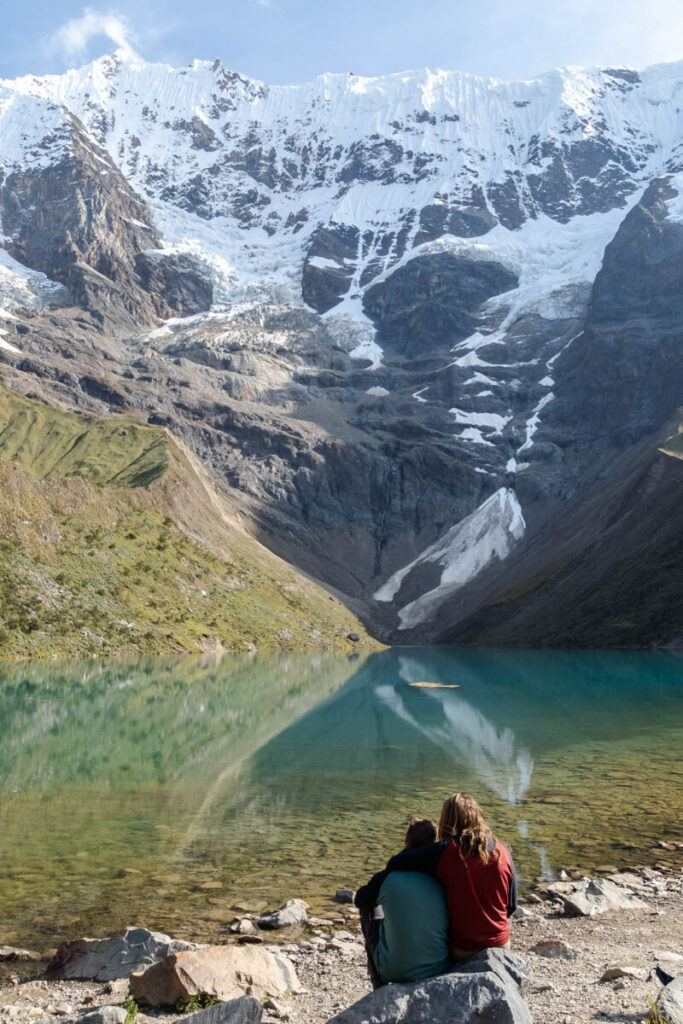
Want a cheeky 5% discount on the Inca trail or Salkantay trek?
Alpaca Expeditions are not only one of the most sustainable companies offering Salkantay and Inca trail treks to Machu Picchu, but their guides, porters and chefs are the ultimate hosts.
They’re now offering Worldly Adventurer readers a 5% discount on all of their hikes – just mention Worldly Adventurer when you enquire!
Depending on what time you get to town and your train schedule, you can either spend the night in Aguas Calientes or go directly back to Cusco.
Day twenty-seven to thirty: Puerto Maldonado
From Cusco, it’s a 45-minute flight to Puerto Maldonado , the last stop on your adventurous month in Peru.
Located at the confluence of the Tambopata and Madre de Dios rivers, Puerto Maldonado is unlike all the other regions you have explored so far: here we’re deep into the tropical rainforest, a place renowned for its rich, untouched wildlife and extremely comfortable eco-lodges, many of which are accessed solely by boat.
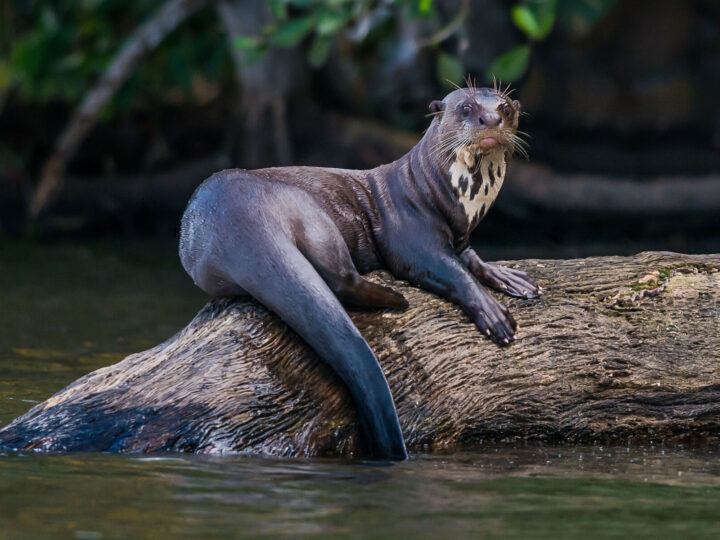
Book a three-night stay in an eco-lodge located in the hard-to-reach and strictly protected Reserva de la Biosfera del Manu (the Manu Biosphere Reserve) or in one of the cheaper lodges located in the Reserva Nacional Tambopata (TambopataNational Reserve) Wherever you stay, you can expect to spot numerous species of monkeys, caiman, capybara and, if you’re extremely lucky, giant otters.
At the end of your stay, return to Lima by plane (1.5 hours) and onto your flight back home.
Where to stay in and around Puerto Maldonado: Located in the Tambopata National Reserve, the fantastic Tambopata Research Center ($236 USD double) is the ultimate place to stay for piranha fishing, nocturnal hiking, birdwatching, ayahuasca rituals, and more.
FAQs about planning a Peru itinerary
How much does a trip to peru cost.
Excluding your flights in and out of Peru, budget travelers can keep their daily travel here below $30 USD per person. But if you plan on staying at hotels and eating at more expensive restaurants, you should budget around $50 USD per person per day. If you’re staying for two weeks in Peru, you’ll need at least $350 USD spending money for expenses outside of tickets and souvenirs.
What should you take to Peru?
Climates and weather conditions vary considerably across Peru, so your packing list will reflect this. Make sure you have light and comfortable hiking clothing, alongside a waterproof jacket for the Inca Trail and Machu Picchu.
Bring medication to help you deal with altitude sickness (and motion sickness if you plan on taking long bus rides), as well as sunblock and a wide-brim hat.
Comfortable hiking shoes, plus a pair of trainers for inside cities, are invaluable, while plenty of layers should keep you warm as you travel from the hot, humid coast up into the mountains. For more detailed information, check out our complete South America packing list .
How far is Lima from Machu Picchu?
Technically, it’s only around 500 kilometers away. But if you plan on getting to Machu Picchu from Lima by car or bus, the distance covers more than 1,000 kilometers, and it will take more than a day in a bus. The best way to reach Machu Picchu from Lima is by flying to Cusco and taking a train to Aguas Calientes.
How can you plan a trip to Machu Picchu?
Planning a trip to Machu Picchu depends on how you want to see this archeological site. If you’re wanting to hike the Inca Trail, you’ll need to book with a tour operator based in Cusco, who will organize your permits for food, porters, accommodation, meals, transportation to and from Cusco and permits for entry to Machu Picchu.
If you want to visit independently, you will need to purchase your own tickets for Machu Picchu via the government’s website . Note that you will need to decide at the point of purchase if you want to include Huayna Picchu, Machu Picchu mountain and the Museo de Sitio Manuel Chavez Ballon (an informative museum about the site located in Aguas Calientes, not Machu Picchu).
You will also need to book your own transportation to and from the site (either via train or minivan), as well as your overnight accommodation in Aguas Calientes. We recommend arriving the day before you visit Machu Picchu but booking an afternoon ticket; by 2pm, the skies should be clear if they’re cloudy in the morning, and most day trippers and Inca Trail hikers will have left by this point, leaving the site must quieter to explore.
What souvenirs should you bring back from Peru?
Peru offers many kinds of souvenirs. We recommend buying handmade Alpaca wool products, such as sweaters and hats. They are available at most local markets, but the best and cheapest ones are available at San Pedro Market, Cusco.
Thursday 28th of December 2023
Great itineraries! Curious what your suggestions would be for 3 weeks in Peru with kids ages 8-14? Any places that would *not* be good with kids? Thinking we'd just take the MP train and not the Inca trail. But would Puerto Maldonado be okay? Tour to Kuelap? Thanks!
Steph Dyson
Sunday 14th of January 2024
Hi Scott, I don't think any of those places wouldn't be good with kids. They're all interesting places to visit and I can't see why it would be an issue. Steph
World Travel Explorers
Sunday 12th of February 2023
Thanks for such a detailed guide and interesting itinerary. We're looking to go to Peru later this year and Cusco in particular sounds amazing.
Wednesday 8th of March 2023
Great - have a brilliant trip! Steph

Home » Itineraries » Peru Itinerary
Peru Itinerary
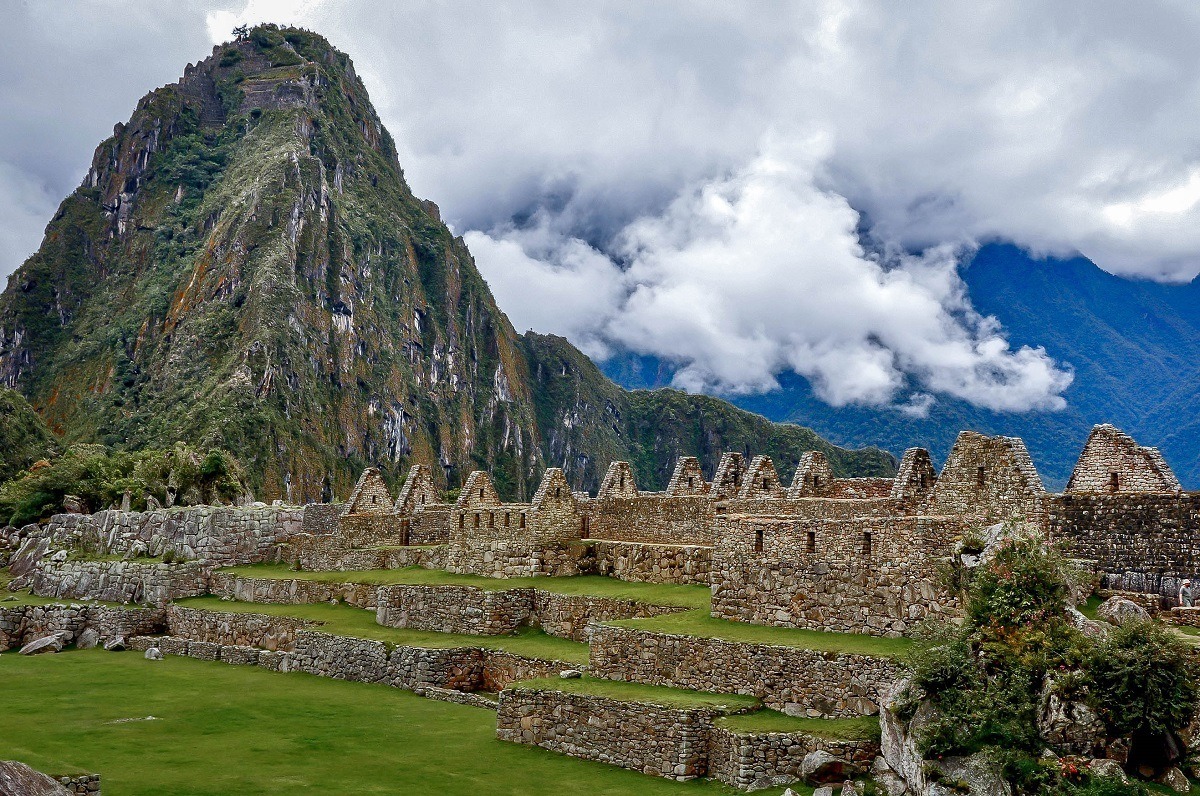
The landscape of Peru is all about drama. It goes from soaring mountains to plunging valleys–most dotted with ancient ruins alongside modern farms and towns. It was this landscape that was our first introduction to the glory of South America. In our short, 10 day Peru itinerary, we saw numerous ruins throughout the Sacred Valley, the imposing Machu Picchu, islands in Lake Titicaca, and the sights of the larger cities of Cusco and Lima.
10 Days in Peru
Day 1: arrive in lima, day 2: sacsayhuaman ruins, day 3: pisac and ollantaytambo in the sacred valley, days 4 & 5: machu picchu, day 6: cusco, day 7: cusco to puno, day 8: islands of lake titicaca, days 9 & 10: visit lima, peru travel recommendations.
The first day was exclusively a travel day from the US (10+ hours flying from the East Coast). While it’s not exciting, it’s important to account for this when you’re planning a Peru trip and considering how much time will be needed away from work and home. We arrived in Lima around 10pm and spent the night at the hotel airport.
Hotels by Lima International Airport
Airport hotels are all about convenience. The Wyndham Costa del Sol Lima is a great option because it actually connects to the airport for maximum ease, and it even has a pool.
Another great option is the nearby Holiday Inn Lima Airport .
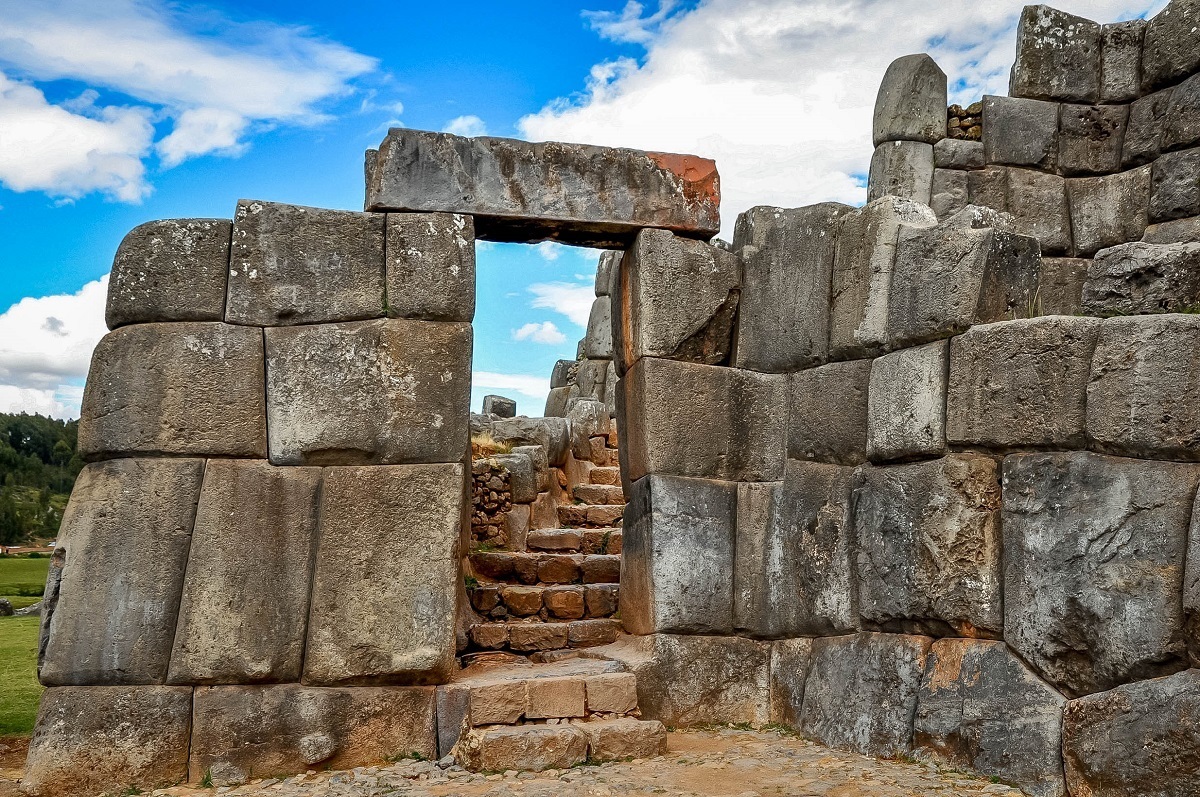
Day 2 of our 10 days in Peru brought an early-morning flight to Cusco and the real start of our Peruvian adventure.
The first stop on our Peru itinerary was the ruins at Sacsayhuaman in the Sacred Valley, northwest of Cusco. Built around 1100, this was the historic capital of the Inca Empire. Miraculously, the massive stones at Sacsayhuaman were all carefully cut to fit together and assembled without mortar.
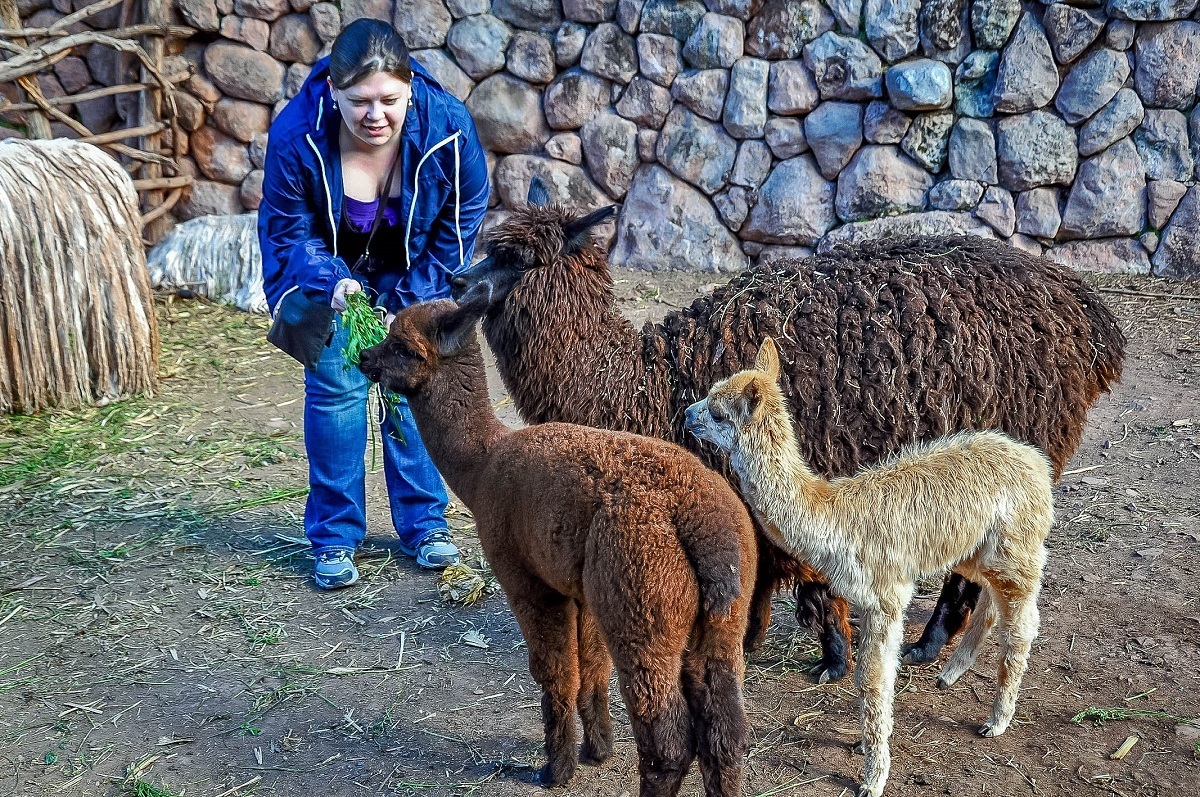
In the afternoon, we headed to the Living Museum of Awanakancha, a collective that features local weavers and craftspeople making indigenous items. About 25km from Cusco, they also have a large group of llamas and closely-related animals such as vicuna and alpaca. We fed the animals and watched them run wild before heading to Urubamba for a much-needed good night’s rest.
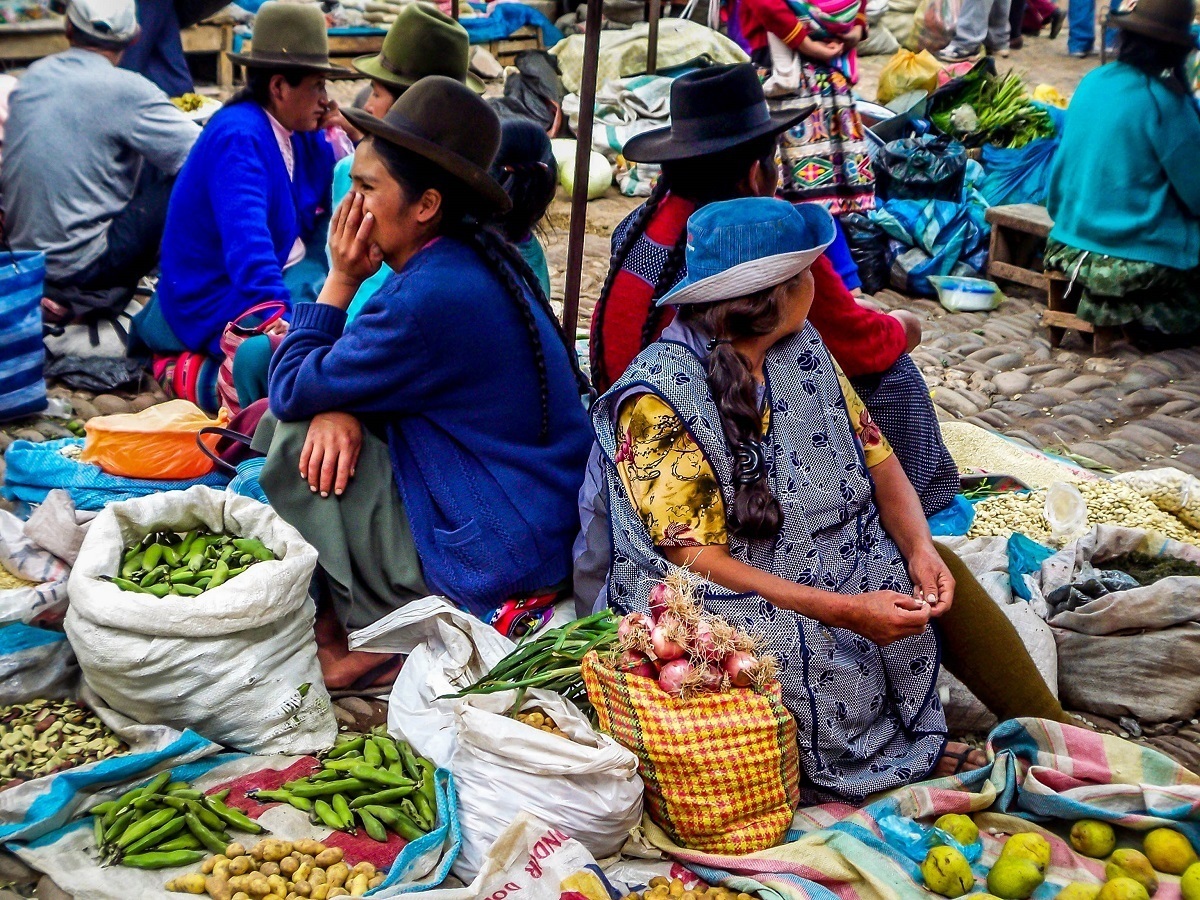
The morning began with a 45-minute drive north from Urubamba to Pisac. At over 11,000 feet, the Pisac ruins tower over the valleys below. We spent several hours hiking among the footprints of the stone buildings and over the agricultural terraces before heading in to the main town. Note that if you live at sea level or aren’t in the world’s best shape, this hike could be a bit challenging (it was for us). Luckily, it was also gorgeous and completely worth the sunburn.
It was a market day in Pisac (markets take place on Tuesday, Thursday, and Sunday), so we had the chance to indulge our love of local experiences like this. We spent a long time wandering the aisles of textiles, souvenirs, fresh produce, and meat, even trying a few fruits that don’t grow in North America. The activity and all the locals in their traditional dress were amazing sights and really a highlight of our 10 days in Peru.
After a stop for lunch, we drove 1.5 hours northwest from Pisac to the ruins of Ollantaytambo. In the 1400s, these ruins were the Incan emperor’s estate. The storehouses and terraces are spectacularly preserved.
Hotels in the Sacred Valley
The peaceful Sonesta Posada del Inca Yucay Hotel was our home for two nights in the Sacred Valley. Its setting among the mountains and beautiful architecture can’t be beat.
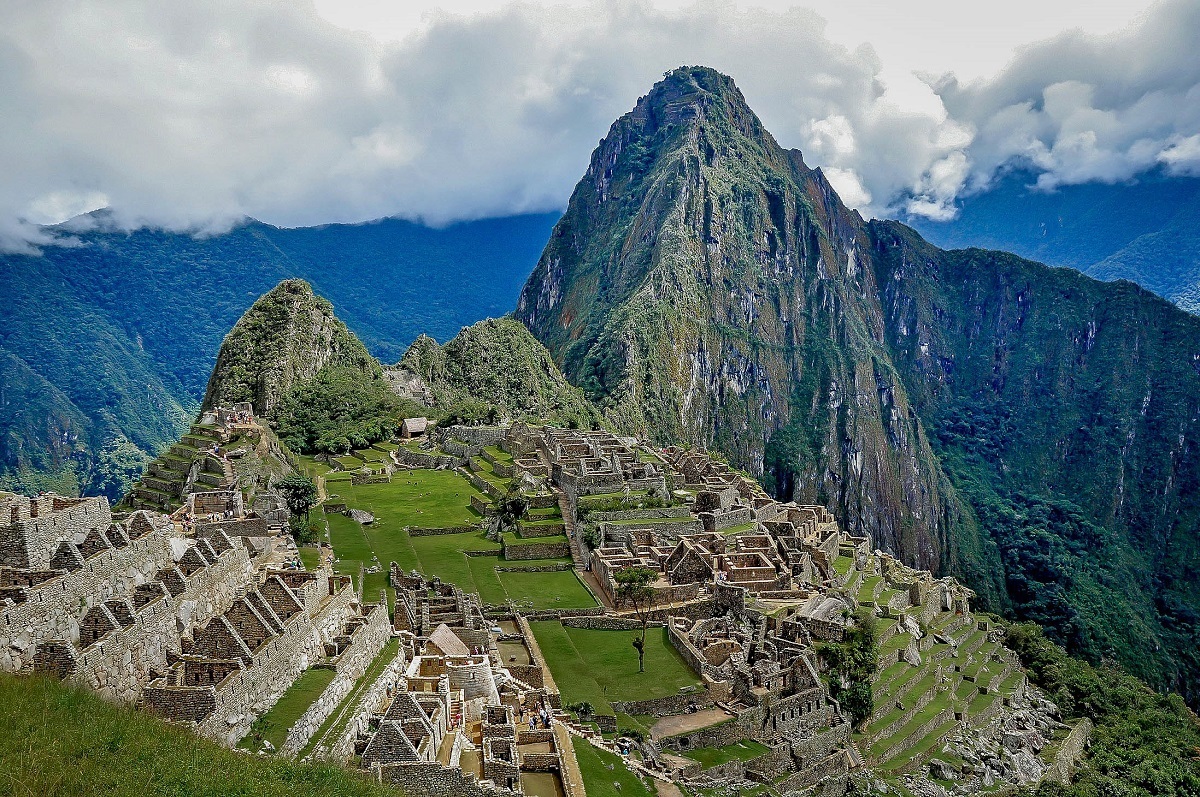
One day isn’t enough to see Machu Picchu and, for many people, this is the most important stop in Peru, so we dedicated portions of two days to this magnificent site. In the morning of Day 4, we took Perurail to Aguas Calientes (Machu Picchu Pueblo) where we boarded the bus bound for the main archaeological site.
Machu Picchu itself is stunning and better than any photo you’ve ever seen of the ruins. After a quick break for lunch at the Sanctuary Lodge, we spent much of the late morning and afternoon wandering among the buildings. In the evening, we returned to Aguas Calientes to wander the town. Day 5 of our Peru vacation brought a similarly lovely adventure with another trip up to the ruins and several hours walking around before taking the train back to Cusco.
Hotels near Machu Picchu
The Hotel Hatun Inti Boutique Machupicchu was our base for exploring Machu Picchu. With jacuzzi tubs and views over the river, this hotel is top-notch.
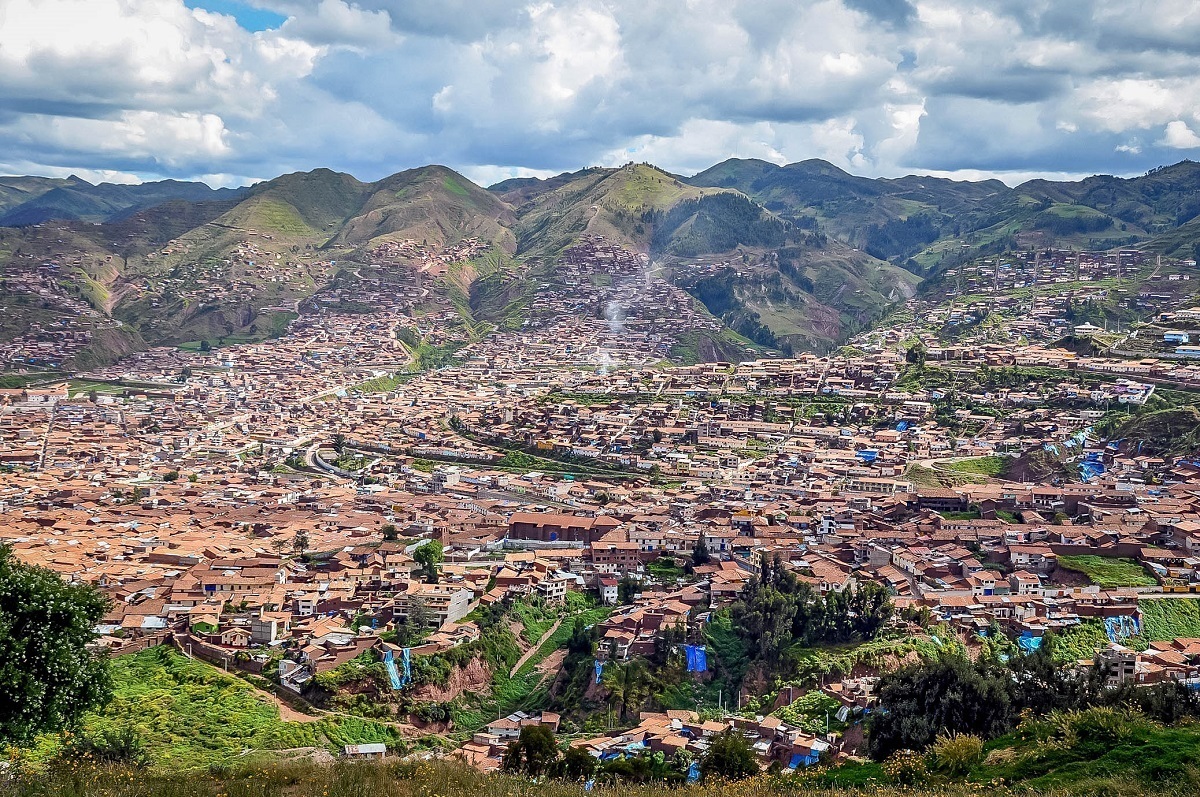
Cusco was once the capital of the Incan Empire and receives a steady stream of millions of tourists each year for good reason. It is full of history, beautiful buildings, and good food. Every street feels like an opportunity to discover something new. Our walking tour of Cusco was one of the highlights of our Peru trip itinerary.
Hotels in Cusco
Close to restaurants and shops and with an amazing breakfast spread, Casa San Blas Cusco was our favorite place to stay in Peru. In the old center of Cusco, the hotel is quiet and has stunning views yet is close to everything.
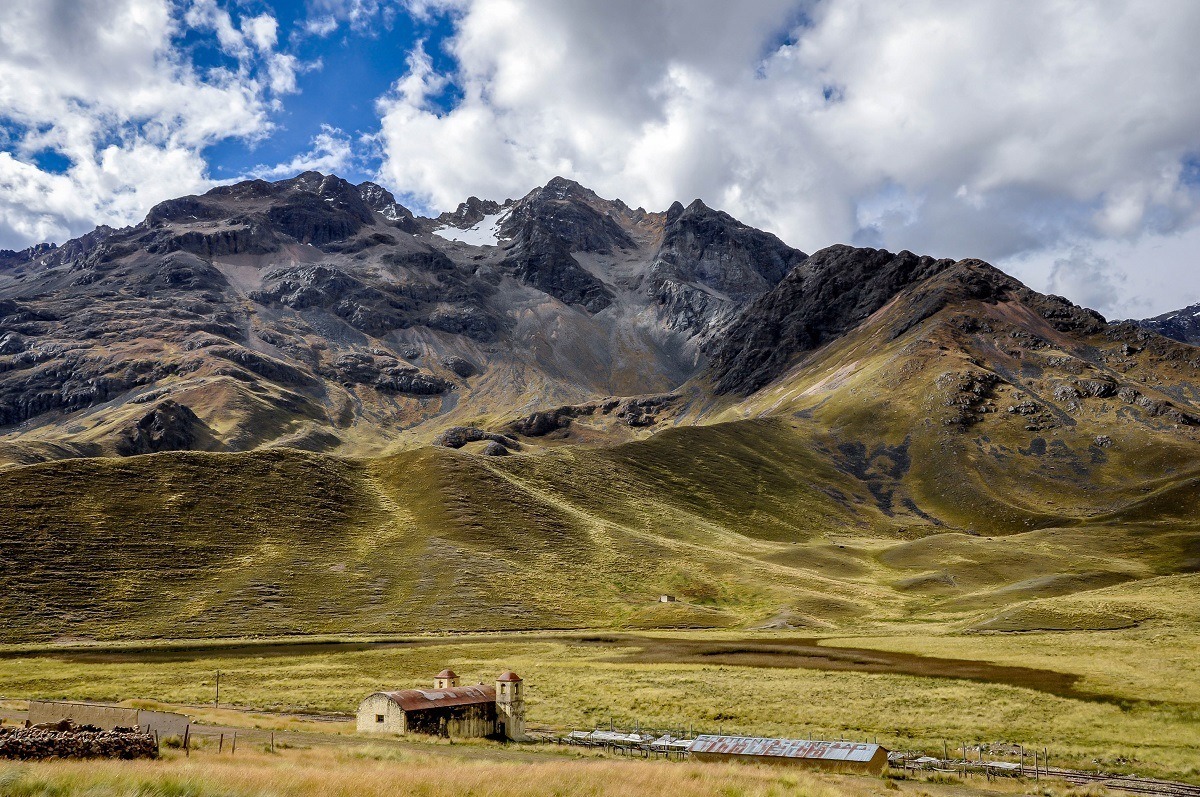
The seventh day of our Peru adventure brought a long drive south from Cusco to Puno , a town at the edge of Lake Titicaca. We stopped several times along the way at various ruins to break up the journey. Our stops included:
- Archaeological park of Pikillaqta, a pre-Incan development of the Wari peoples
- Church of San Pedro of Andahuaylillas, a 16th century church with what is considered the “Sistine Chapel of the Americas”
- La Raya Pass, a mountain pass with amazing views
- Archaeological site of Raqchi, which contains the remains of the massive Temple of Wiracocha as well as 200 stone storehouses
- Pukara, a museum and 6000-year-old archaeological site
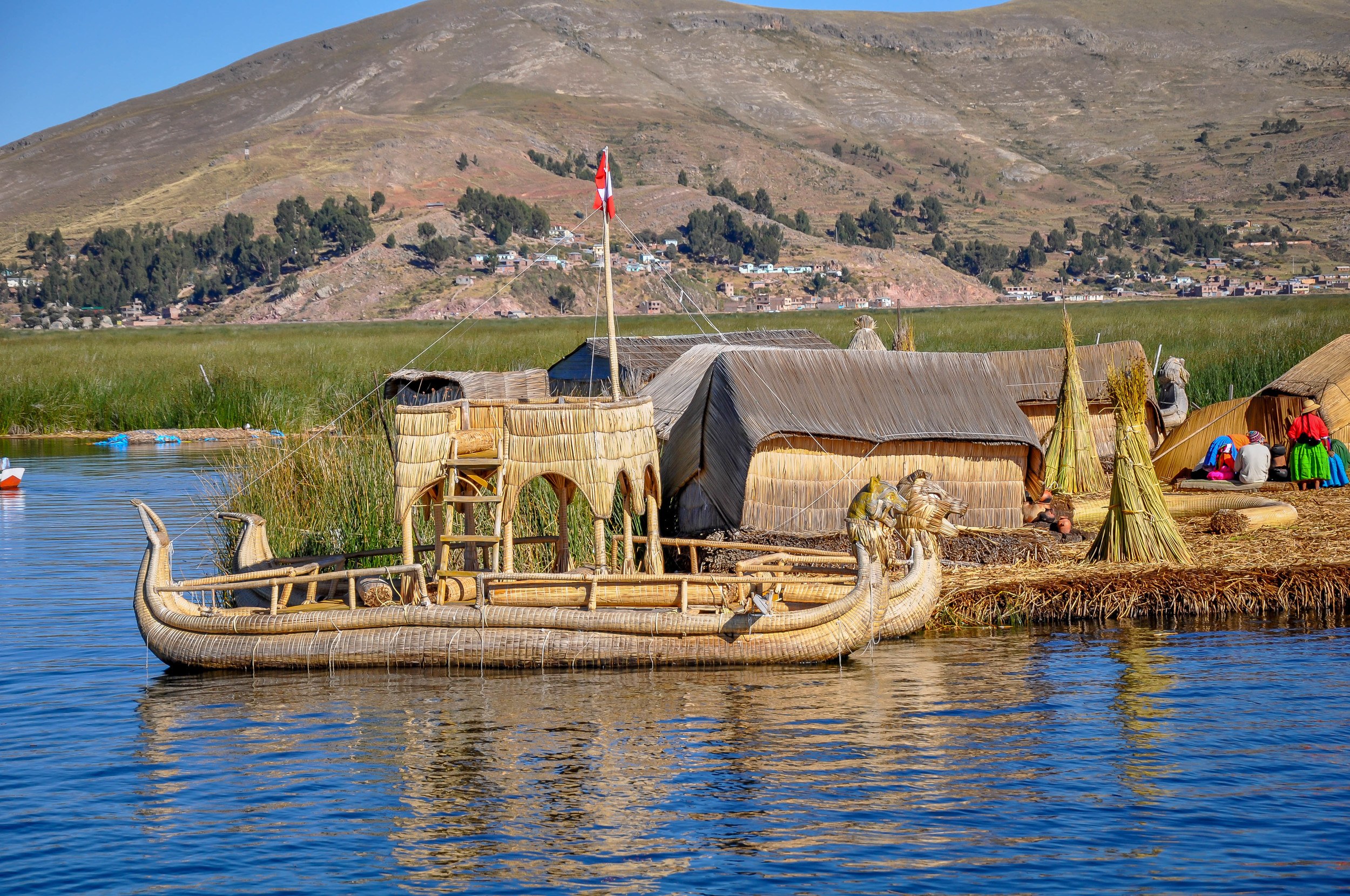
The next stop was Puno to visit Lake Titicaca, the highest navigable body of water in the world. More specifically, we were visiting the Uros islands and Taquile in this massive lake. From Puno, it was a 10-minute drive to the pier and an hour on the boat to the manmade islands of Uros. These unique islands are made from tightly interlaced reeds, but every step around the island is a bit squishy and damp, as you’re well aware that you’re in the middle of Lake Titicaca.
From Uros , we headed out across Lake Titicaca to Taquile, a nearby natural island. Our boat dropped us off on the south side and we climbed to the top, stopping for a traditional lunch along the way. We explored the town for a few hours before returning to Puno.
Hotels in Puno
Our base during our time in Puno was Hacienda Plaza de Armas . While not a luxurious property, it was clean, comfortable, and super-affordable.
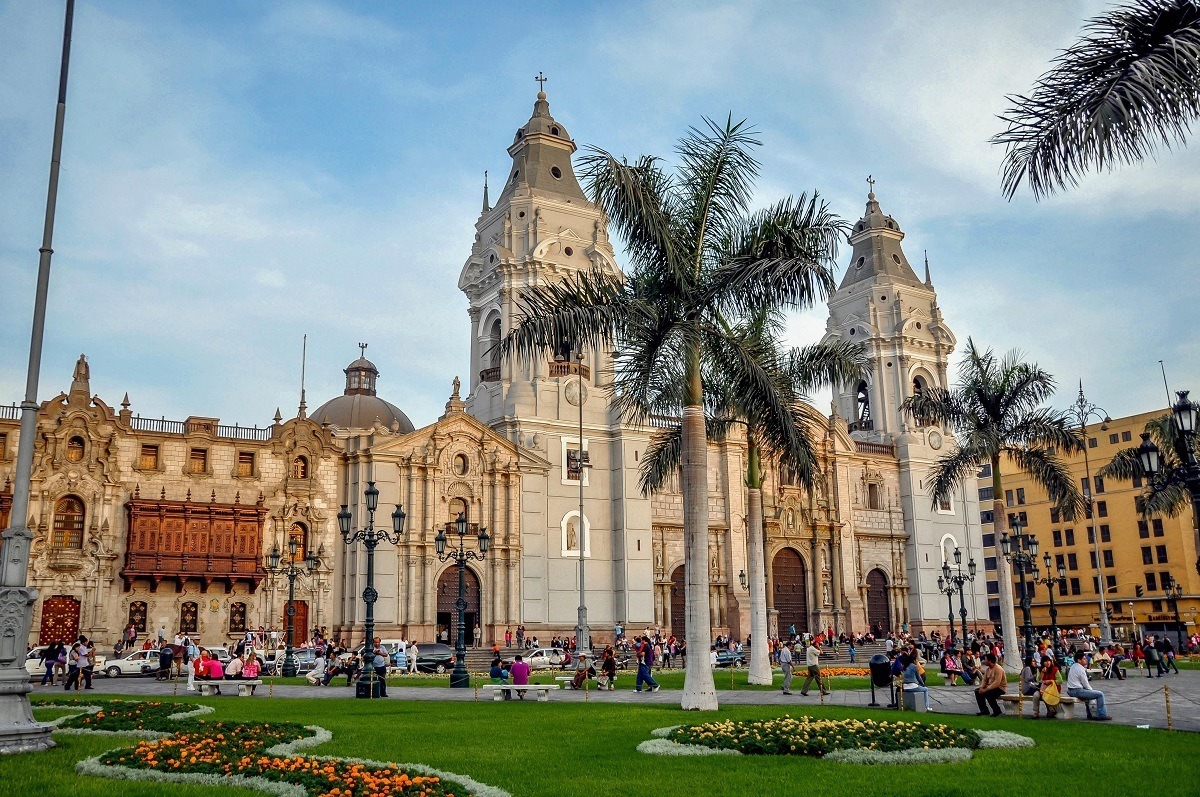
We had planned to spend nearly two full days wandering the beautiful city of Lima. Unfortunately, a bit of food poisoning put us behind schedule, but we still got to see plenty of the highlights of Lima . We wandered Plaza Mayor, visited the main square, and marveled at the catacombs of the Monastery of San Francisco. After some time strolling the malecon, it was time to board our late flight bound for the US after a great trip.
Hotels in Lima The Miraflores district of Lima is the primary tourist district, featuring parks, beaches, and great restaurants. We stayed at the well-located Casa Andina Premium Miraflores .
Tour Operator : While we normally plan all of our trips independently, for our time in Peru we went with a specialist in the region, Kuoda Travel , which offers luxury private tours in Peru. There are also some great Peru tours with Intrepid Travel or find the right Peru tour for you.
Hotels : Peru has a staggeringly broad range of accommodation options. We recommend looking at Booking.com for a comprehensive selection of Peruvian lodging options.
Travel Insurance : Visiting Peru and Machu Picchu is a trip of a lifetime. Given the relative cost of 10 days in Peru, this would be one instance where we’d buy travel insurance. We bought our travel insurance from Travel Guard .
Booking through these sites may help support Travel Addicts and earns us a few pennies, at no additional cost to you.
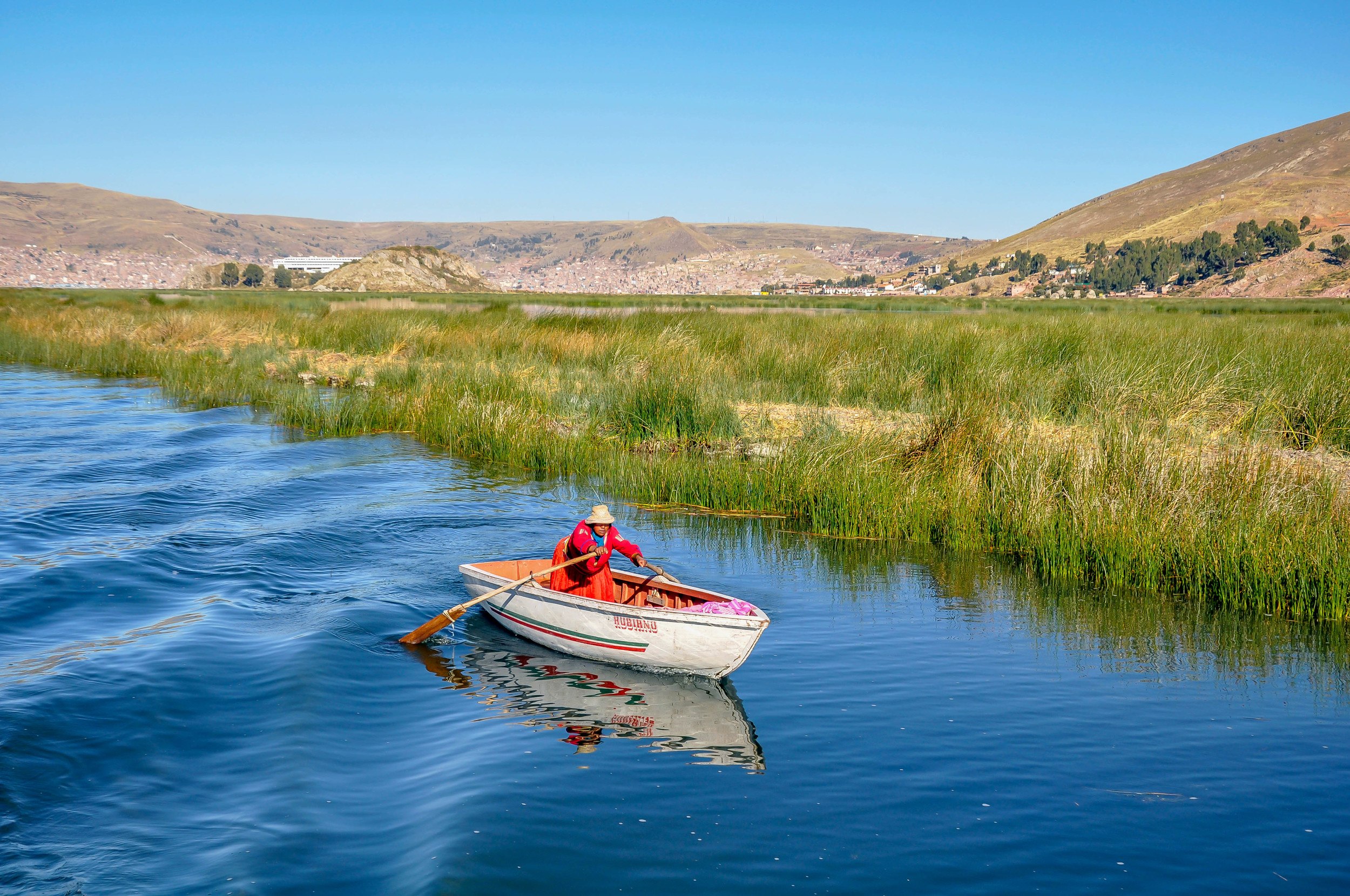
This site uses Akismet to reduce spam. Learn how your comment data is processed .
Thursday 28th of March 2024
This is pretty much what we are looking for...flying from Philly or Baltimore in Dec. We have always planned our travel independently but thought it would be good for guidance. Thank you for your blog!! We understand there are some amazing restaurants---your take? Mary
Laura Longwell
Friday 29th of March 2024
We had some incredible food. It probably sounds crazy to say about vegetables, but corn, beans, potatoes, and avocados are all more delicious there than anywhere. At least with the corn and potatoes, I'm sure it has to do with the varieties being grown. Don't miss the ceviche.
Tuesday 2nd of January 2024
Thanks for this blog post! What did you do with your luggage when you were at Machu Picchu on the 2nd day? Did the hotel hold it for you even though you had checked out? Thanks!
Lance Longwell
Wednesday 3rd of January 2024
Left it with the hotel in Aquas Calientes. They had a luggage room.
Wednesday 26th of April 2023
Hi - this itinerary looks perfect for us. Am I correct that you flew from Lima to Cusco but the return trip was all driving with these stops along the way? Was driving in Peru relatively easy? Thanks!
Tuesday 30th of May 2023
Yes, we flew from Lima to Cusco. Then drove from Cusco to Puno/Lake Titicaca. We then drove to Arequipa (we were supposed to have time in Arequipa, but my illness threw the schedule off). From Arequipa, we flew back to Lima early. We hired a driver for the trip (money well spent), but I wouldn't be opposed to driving (particularly the Cusco to Puno portion, which was very easy).
Thursday 10th of March 2022
We are group of 3 and want to visit Peru in May.
- Destinations
Amazing 12 Days in Peru: Exploring the Best of Peruvian Wonders
This site uses affiliate links, meaning that if you make a purchase through our links, we may earn an affiliate commission.
Embark on an unforgettable adventure through Peru, a country teeming with awe-inspiring landscapes, ancient ruins, and vibrant culture!
During these 12 days in Peru , you will delve deep into the heart of the Amazon rainforest, stand in awe of the enigmatic ruins of Machu Picchu, immerse yourself in the bustling cities of Lima and Cusco, and explore the captivating beauty of the Sacred Valley. Get ready to be amazed by Peru’s rich history, natural wonders, and warm hospitality as you embark on this remarkable journey.
You Might Also Like:
What is Peru Known For: 29 Things That Make Peru Famous and Unique
What to Pack for Peru: 14 Detailed Essentials for an Adventure-Filled Exploration
6 Epic Day Trips from Cusco (Discover Natural and Ancient Marvels!)
- 1. Amazing 12 Days in Peru: Exploring the Best Peruvian Wonders
- 1.1. DAY 1 - Arrival in Cusco and Exploration of Cusco's Historic Gems
- 1.2. DAY 2 - Day Trip from Cusco to Sacsayhuaman, Qenko, Puka Pukara, Tambomachay, and Pisac
- 1.3. DAY 3 - Exploring the Marvels of the Sacred Valley: Maras, Moray, and Ollantaytambo
- 1.4. Day 4 - Day Trip from Cusco to Rainbow Mountain - Exploring the Vibrant Heights
- 1.5. Day 5 - Journey to Aguas Calientes: Gateway to Machu Picchu and Exploration of Aguas Calientes
- 1.6. Day 6 - Machu Picchu Exploration
- 1.7. Day 7 - Journey into Tambopata National Preserve: the Heart of Peruvian Amazon
- 1.8. Day 8 - Tambopata Rainforest Adventures - Macaw Clay Lick and Mammal Clay Lick Encounter
- 1.9. Day 9 - Tambopata Rainforest Adventures - Canopy Observation Tower and Journey to Lima
- 1.10. Day 10 - Lima's Exploration: Rich Heritage and Cultural Marvels
- 1.11. Day 11 - Day Trip from Lima to Lake Titicaca - The Islands of Uros and Taquile Island
- 1.12. Day 12 - Day Trip from Lima to the Nazca Lines, Chauchilla Cemetery, Antonini Archaeological Museum
- 2. Intrepid Scout's Tips for 12 Days in Peru Itinerary
Amazing 12 Days in Peru: Exploring the Best Peruvian Wonders
Day 1 - arrival in cusco and exploration of cusco's historic gems.
Arrival in Cusco
Cusco City Tour
Plaza de Armas
- Coricancha (The Temple of the Sun)
- San Pedro Market
- 12-Angled Stone
Arrival in Cusco: How to Get Around and Where to Stay
- How to Get Around in Cusco
When it comes to exploring the captivating city of Cusco, knowing how to get around is key to making the most of your visit. From ancient ruins to bustling markets and picturesque neighborhoods, Cusco offers a plethora of sights and experiences just waiting to be discovered. To help you navigate this vibrant city with ease, we have put together a guide to assist you in getting around Cusco efficiently and conveniently.
Walking: Cusco’s compact city center makes it ideal for exploring on foot. Stroll through its narrow cobblestone streets, absorb the charming atmosphere, and discover hidden gems at your own pace. Walking is a great way to appreciate the city’s architecture, vibrant markets, and local culture up close.
Taxis: Taxis are readily available throughout Cusco, and they provide a convenient and flexible way to get around the city. You can easily flag down a taxi on the street or find them at designated taxi stands. It is advisable to negotiate the fare or ensure the meter is used before starting your journey.
Private Guide/Driver: Having a private driver and a guide is the best way to go. This option gives you total flexibility. Also, having a knowledgeable guide by your side is simply invaluable.
Tour: There are plenty of full-day or half-day tours that cover all the major attractions in Cusco. Check out this tour: Cusco City Sightseeing, San Pedro Market, Cathedral, and Qorikancha Temple
- Where to Stay in Cusco
When deciding on the ideal place to stay in the captivating Cusco, look no further than the vibrant district of San Blas . This bohemian neighborhood is a hidden gem that offers a unique and unforgettable experience for visitors seeking a blend of charm, culture, and convenience.
Here are some places, that I always enjoy staying in:
Antigua Casona San Blas is a charming boutique hotel in Cusco’s San Blas district, known for its warm hospitality and rich cultural experience. You can relax in the peaceful central courtyard, surrounded by lush greenery and a soothing fountain. The hotel also features an onsite restaurant , serving delectable dishes that showcase the flavors of Peruvian cuisine. From traditional Peruvian specialties to international favorites, the restaurant at Antigua Casona San Blas offers a delightful dining experience for guests. With its prime location in the vibrant San Blas neighborhood, you will have easy access to art galleries, handicraft markets, and delightful cafes.
Atoq San Blas Hotel is another one of my favorite spots. It is a charming boutique hotel located in Cusco’s San Blas district. With its cozy and inviting atmosphere , comfortable rooms, and rooftop terrace boasting panoramic views of the city, it offers a delightful stay if you are seeking a blend of comfort and cultural exploration. Situated amidst art galleries, craft shops, and quaint cafes, you can immerse yourself in the vibrant art scene of San Blas. The attentive staff is always ready to provide personalized service and recommendations for local attractions, ensuring a memorable experience in the heart of Cusco.
Quinta San Blas by Ananay Hotels is a luxurious boutique hotel located in the charming San Blas district of Cusco. With its elegant design, sophisticated rooms , and serene courtyard, it offers a haven of tranquility in the heart of the city. You can indulge in the finest amenities, savor delectable cuisine at the renowned restaurant, and explore the vibrant art scene and cultural attractions of San Blas.
Intrepid’s Tip:
Cusco Tourist Ticket – Is It Worth Buying? (5 Important Things to Know)
12 Proven Strategies to Prevent Altitude Sickness in Cusco (Master the Heights!)
Cusco City Tour: Plaza de Armas, Coricancha, San Pedro Market, 12-Angled Stone
Welcome to Cusco, the historic capital of the Incan Empire!
In this exhilarating exploration, you will immerse yourself in the enchanting Plaza de Armas, marvel at the architectural brilliance of Coricancha, delve into the vibrant local market, and uncover the captivating mystery of the 12-Angled Stone. Prepare to be captivated by the rich heritage, architectural marvels, and cultural tapestry that define this remarkable city.
Nestled at the heart of Cusco, the Plaza de Armas stands as a testament to the city’s rich history and vibrant culture. Once known as Huacaypata , an esteemed ceremonial space for the Incas , it continues to be a lively gathering spot for locals and visitors alike . Surrounded by magnificent historical buildings, charming restaurants, and delightful shops, the Plaza captivates with its grandeur and charm.
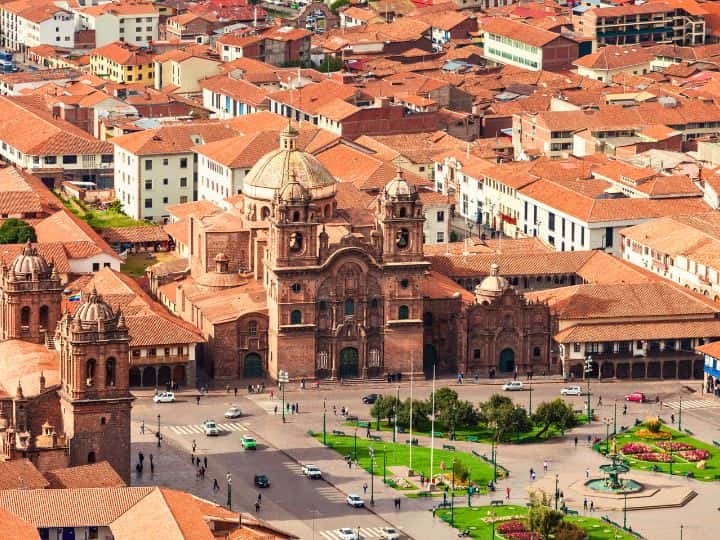
Plaza de Armas, Cusco / 12 Days in Peru Itinerary
This iconic square showcases a harmonious blend of Spanish colonial architecture , with its picturesque arcades framing the perimeter. It holds significant historical importance as a central hub in the Incan road network, connecting Cusco to far-reaching corners of the empire. The plaza’s legacy as a crossroads of ancient civilizations is embraced by the modern vibrancy it exudes today.
Overlooking the square, the Cathedral Basilica of the Assumption of the Virgin stands tall, a masterpiece of Renaissance, Gothic, and Baroque styles. Inside, the cathedral houses a breathtaking collection of colonial art, a testament to Cusco’s captivating cultural heritage.
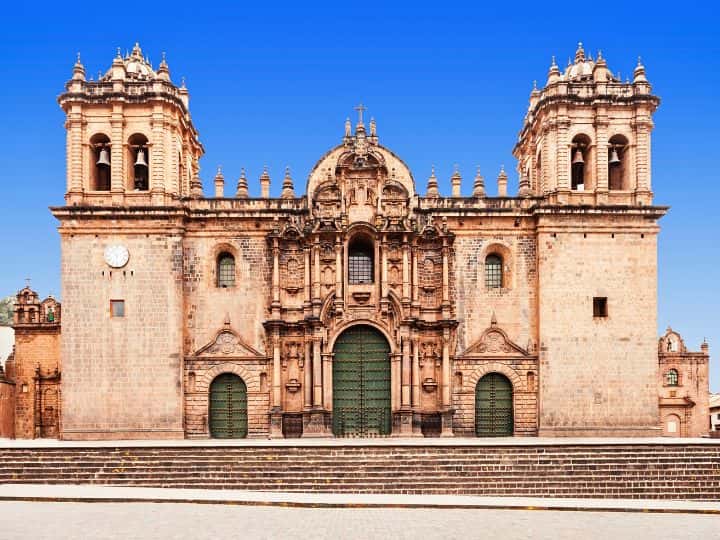
Cathedral Basilica of the Assumption of the Virgin, Cusco / 12 Days in Peru Itinerary
Adjacent to the cathedral, the Church of the Society of Jesus (Iglesia de la Compañía de Jesús) captivates with its ornate Baroque facade and exquisite altars, a celebration of artistry and devotion.
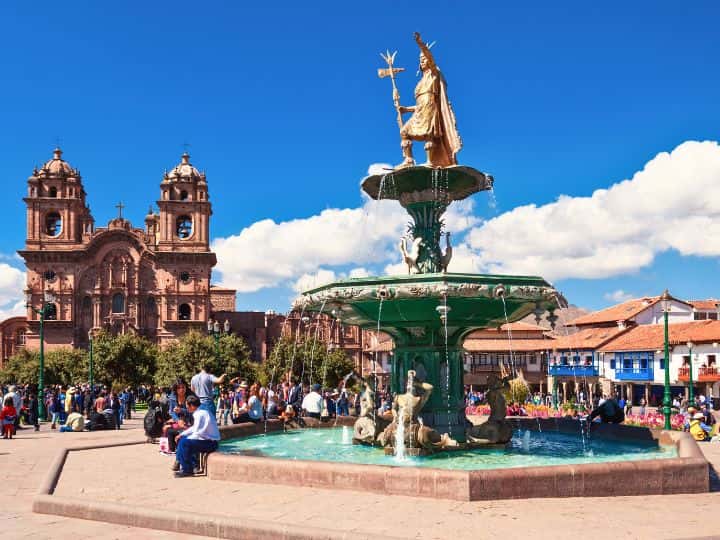
Iglesia de la Compañía de Jesús, Cusco / 12 Days in Peru Itinerary
Coricancha , also known as the Temple of the Sun , stands as a testament to the Incan Empire’s profound reverence for the celestial deity, Inti, the sun god. As the most sacred and revered temple in the Incan civilization, Coricancha held a position of utmost importance in the spiritual and cultural life of the empire.
The architectural splendor of Coricancha was awe-inspiring , with its walls once adorned in resplendent gold, a manifestation of the Incan civilization’s opulence and devotion. Inside, the temple housed an array of precious artifacts and statues, symbolizing the intrinsic connection between the sun, the Incan royalty, and the prosperity of the empire.
The arrival of the Spanish conquistadors in the 16th century marked a turning point in the temple’s history. In an effort to suppress indigenous religious practices, the Spanish forcibly converted Coricancha into a church , renaming it Santo Domingo.
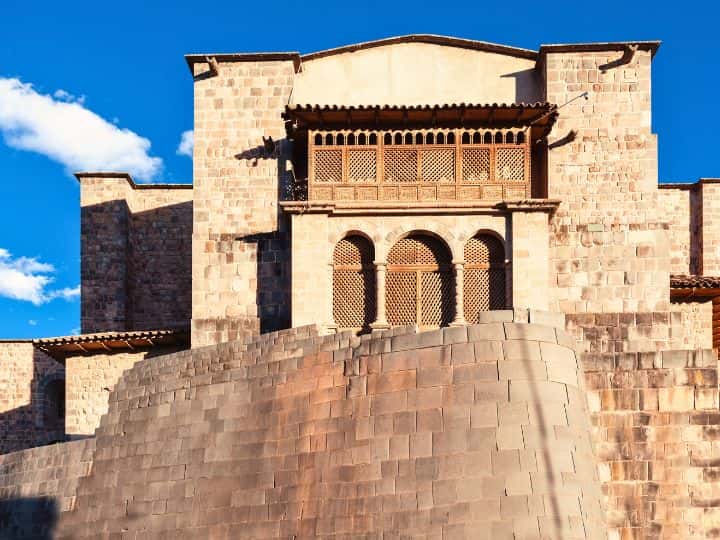
Cornicancha (Temple of the Sun) / 12 Days in Peru Itinerary
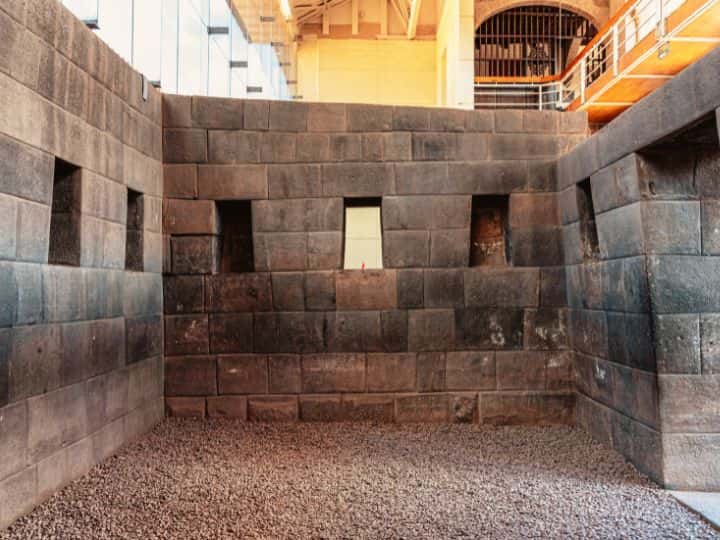
The imposing Spanish colonial architecture mingled with the original Incan stonework, creating a distinctive blend of two cultures , a vivid testimony to the complexities of Peru’s colonial past. Despite the tragic partial destruction the temple endured due to earthquakes and looting over the centuries, Coricancha continues to exude an aura of spiritual significance and cultural heritage.
San Pedro Market Experience
San Pedro Market (Mercado de San Pedro) is a vibrant and bustling market that offers an authentic glimpse into the local culture and culinary delights of the region. Located just a few blocks away from the Plaza de Armas, this bustling market is a must-visit destination for both tourists and locals alike.
Indulge in an assortment of delicious Peruvian fruits, such as lucuma, chirimoya, and aguaymanto. Many vendors offer freshly squeezed fruit juices , perfect for a refreshing pick-me-up.
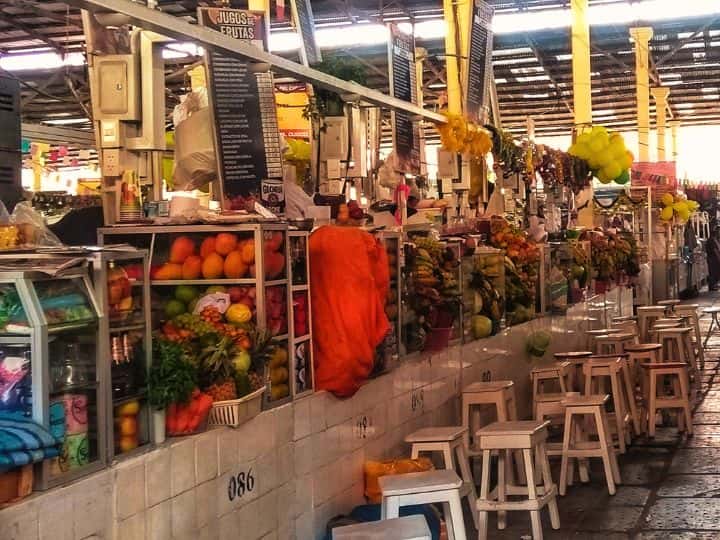
San Pedro Market in Cusco / 12 Days in Peru Itinerary
Try Anticuchos . These mouthwatering skewers are a Peruvian street food classic. They consist of marinated beef hearts or other meats, grilled to perfection and served with potatoes and a savory sauce.
Sample Peru’s famous ceviche , a dish made with fresh fish or seafood marinated in lime juice and mixed with onions, cilantro, and Peruvian rocoto peppers. It’s a refreshing and zesty culinary delight.
Try traditional Peruvian empanadas filled with a variety of savory ingredients, such as meat, cheese, or vegetables. They make for a delicious and portable snack while exploring the city.
Try Chicha Morada . This non-alcoholic beverage is made from purple corn, fruits, and spices. It’s both refreshing and flavorful, a perfect drink to quench your thirst.
The 12-Angled Stone
Nestled along Hatunrumiyoc Street , the 12-Angled Stone stands as an awe-inspiring testament to the ingenuity of Incan craftsmanship. This remarkable piece of stonework showcases meticulous precision, fitting seamlessly into the surrounding wall without the need for mortar.
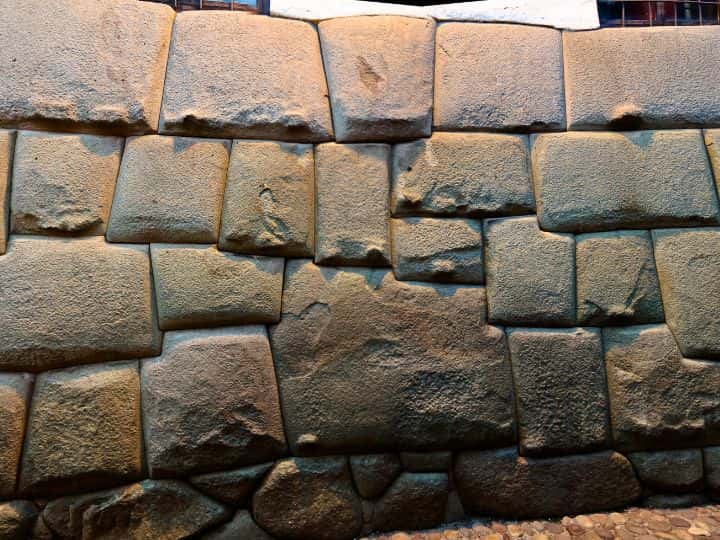
12-Angeled Stone, Cusco / 12 Days in Peru Itinerary
- Thought to have once adorned an esteemed Incan palace or temple, the 12-Angled Stone carries profound symbolism within its immaculate carvings. Many believe it represents the twelve months of the Incan calendar , reflecting the profound connection the Incas had with the celestial cycles and the natural world.
Read: Amazing 2 Days in Cusco (Explore Cusco’s Cultural Treasures)
12 Unforgettable Experiences and Activities in Cusco (Unlock the Magic of Inca’s Capital)
DAY 2 - Day Trip from Cusco to Sacsayhuaman, Qenko, Puka Pukara, Tambomachay, and Pisac
- Sacsayhuaman
Puka Pukara
Tambomachay.
Today you will embark on a captivating exploration of ancient wonders in the Cusco region of Peru.
In this section of your journey, you will unravel the mysteries of Sacsayhuaman’s impressive fortress walls, delve into the intricate stonework at Qenko, witness the military ruins of Puka Pukara, marvel at the ancient water features of Tambomachay, and immerse yourself in the vibrant town of Pisac.
Prepare to be transported back in time as you discover the rich history and architectural brilliance of these extraordinary sites!
PRO TIP: The best way to reach these sites is on a private tour . With a private tour, you can have a dedicated vehicle and guide, allowing for a more personalized experience.
Joining a guided tour specifically these destinations is a popular choice. These tours provide transportation from Cusco to the sites, along with a knowledgeable guide. Check out this half-day tour, small group tour: Sacsayhuaman, Tambomachay, Puka Pukara, and Qenko .
Sacsayuaman
Sacsayhuaman is a remarkable archaeological site located just on the outskirts of Cusco. This ancient fortress showcases the architectural prowess of the Incas and offers visitors a glimpse into the grandeur of their civilization.
The site’s most striking feature is its massive stone walls , expertly crafted by Incan engineers. The walls are constructed from large stones, some weighing over 100 tons, that fit together with incredible precision. The stones are cut and shaped with such accuracy that they interlock without the use of mortar. This exceptional engineering technique, known as “ashlar,” has withstood the test of time, with many of the walls remaining intact despite centuries of exposure to the elements.
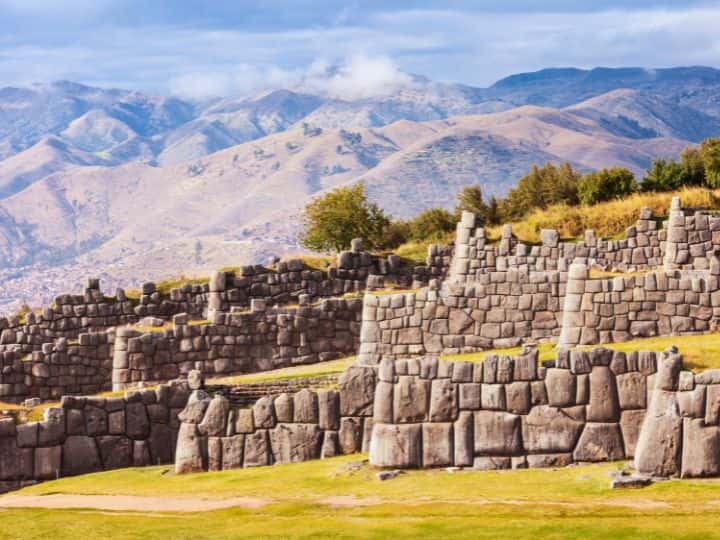
Sacsayhuaman / 12 Days in Peru Itinerary
Walking along the impressive walls of Sacsayhuaman , you can marvel at the scale and intricacy of the stonework. The precision with which the stones were placed is a testament to the Incas’ advanced knowledge of construction and architecture.
The site’s strategic location on a hill overlooking Cusco allowed it to serve as both a fortress and a ceremonial center during the Incan era.
Beyond its architectural significance, Sacsayhuaman offers breathtaking views of Cusco and the surrounding Andean landscape. From the elevated vantage point, you can appreciate the layout of the ancient Incan capital, with its distinctive terraced hills and urban planning.
The panoramic vistas make Sacsayhuaman a popular spot for photographers!

View of Cusco from Sacsayhuaman / 12 Days in Peru Itinerary
Qenko is a mesmerizing ancient site located just a short distance from Cusco. As you step into this historic complex, you will be transported to an era when the Inca Empire flourished, and spiritual rituals held great significance.
The site’s name, “Qenko,” is derived from the Quechua word meaning “labyrinth” or “zigzag,” which aptly describes the intricate network of stone chambers and passages found here. Carved into the natural rock formations, these chambers are adorned with elaborate and precise stonework, a testament to the Inca civilization’s architectural prowess.
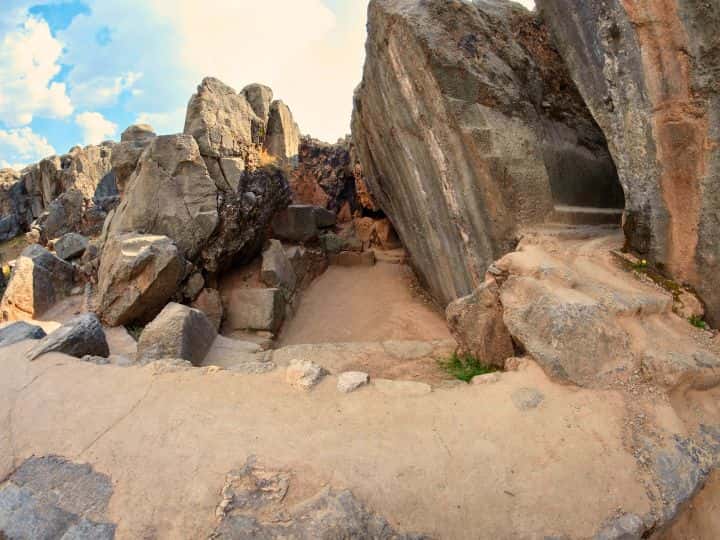
Qenko / 12 Days in Peru Itinerary
Qenko’s primary function was as a sacred place for spiritual and ceremonial rituals . The site is believed to have been dedicated to worshipping various deities and ancestral spirits.
The central feature of Qenko is an enormous rock, sculpted into a unique zigzag pattern, representing the mythological creature of the Andean worldview, the “Puma.”
As you explore Qenko’s nooks and crannies, you will encounter fascinating rock formations that resemble animal shapes, such as snakes and condors. These natural elements, integrated with the man-made stone structures, highlight the Incas’ profound connection with their surroundings and their reverence for the forces of nature.
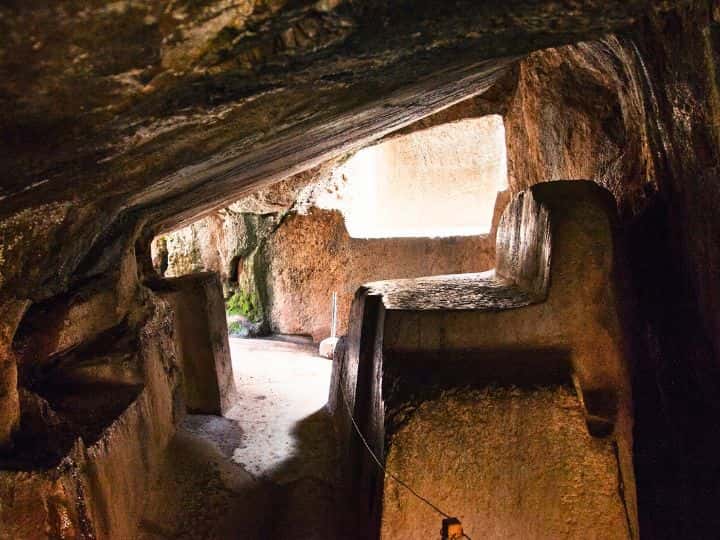
The site’s design and alignment with celestial events suggest that it played a role in astronomical observations and calendrical rituals . It is believed that the Incas conducted rituals and ceremonies during solstices and equinoxes to honor the changing seasons and celestial cycles.
Visiting Qenko allows you to step back in time and imagine the spiritual significance and vibrancy of this sacred site during the Incan era.
Puka Pukara is an intriguing archaeological site that unveils the remnants of a military fortress from the Inca period. The name “Puka Pukara” is Quechua for “Red Fort,” owing to the reddish hue of the stones used in its construction.
The site’s strategic location on a hilltop offers commanding views of the surrounding landscape, allowing it to serve as a watchtower and defensive stronghold. Many historians and archaeologists believe that Puka Pukara played a significant role in protecting important Incan sites and routes, such as Tambomachay and Sacsayhuaman.
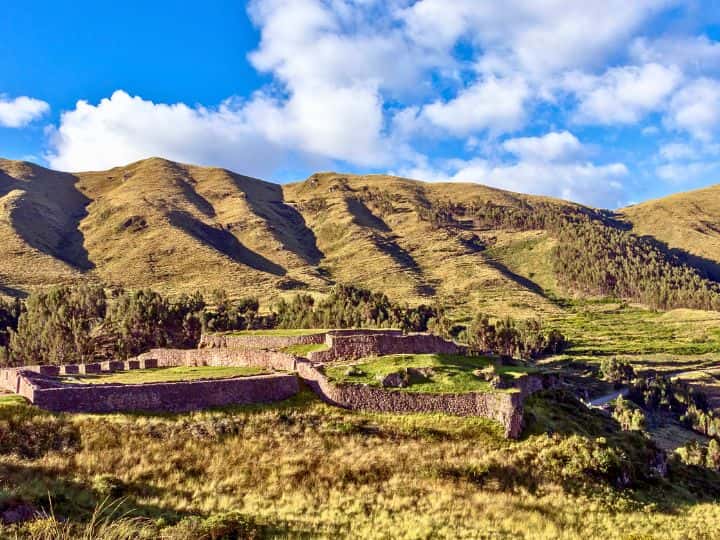
Puka Pukara / 12 Days in Peru Itinerary
The architecture of Puka Pukara exhibits the signature precision of Incan stonework, with walls built using a combination of cut stones and mortar. The incorporation of military features, such as walls with loopholes for defensive purposes, further supports the notion that it functioned as a military fortress.
In addition to its military significance, Puka Pukara likely served as a way station for travelers and traders passing through the region. It is believed that it also functioned as a resting place for the Incan elite during their journeys.
Tambomachay archaeological site showcases the Incan civilization’s profound reverence for water . The name “Tambomachay” is derived from the Quechua words “tanpu” and “mach’ay,” which together mean “resting place.”
The site is renowned for its remarkable water features and aqueducts , which are a testament to the Inca’s advanced engineering and architectural skills. Tambomachay served as a place of worship and ritual, with water playing a central role in Incan ceremonies.
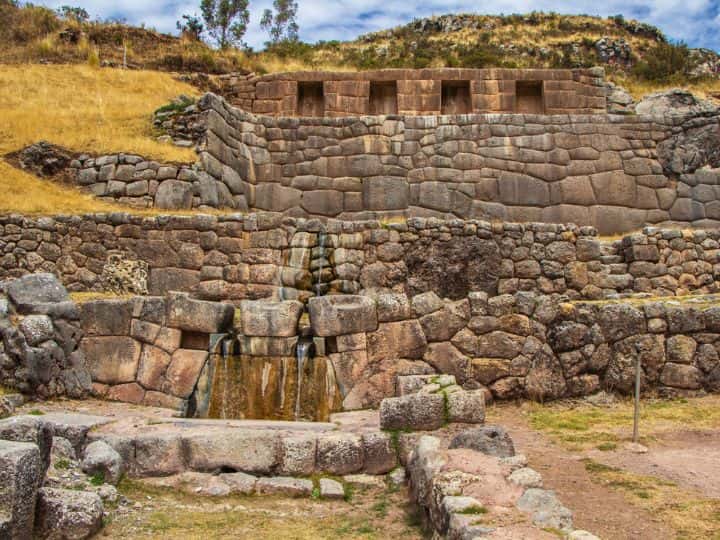
Tambomachay / 12 Days in Peru Itinerary
The intricate network of aqueducts supplied water to ceremonial baths and fountains, a symbolic representation of the Incas’ veneration of water as a source of life and purification . The precise construction and alignment of the aqueducts allowed the water to flow smoothly and consistently, even in the dry Andean climate.
The site’s architectural design incorporates finely carved stone walls, terraces, and niches, which further highlight the Incan mastery of harmonizing with the natural environment. Tambomachay’s location near natural springs added to its sacred significance as a place of water worship.
Pisac offers a delightful blend of vibrant culture and ancient history. The town is renowned for its bustling market , which draws visitors from all over. The market is filled with an array of traditional handicrafts crafted by skilled local artisans. Here, you can find beautifully woven textiles, intricate pottery, hand-carved wooden pieces, and an assortment of jewelry, all reflecting the rich cultural heritage of the region. Bargaining is a customary practice in the market, adding to the lively and interactive shopping experience.
The market also offers an opportunity to savor authentic Peruvian cuisine and local delicacies, adding a flavorful dimension to your visit.
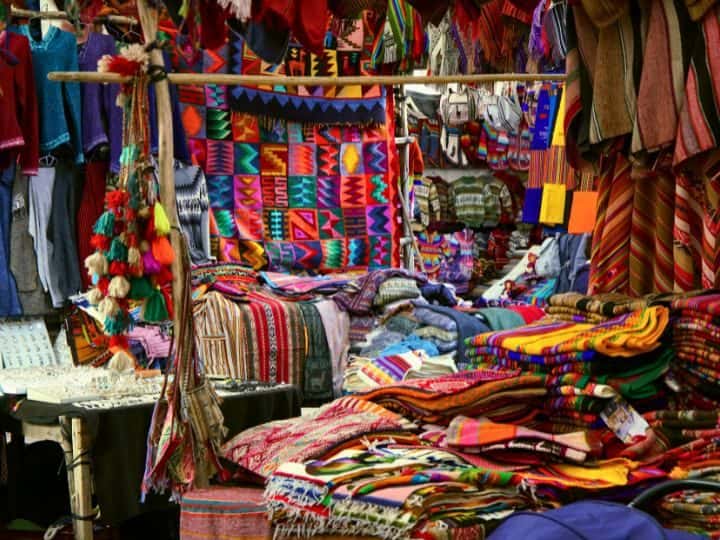
Pisac Market / 12 Days in Peru Itinerary
Aside from the bustling market, Pisac is home to ancient Incan ruins perched high above the town on a mountain ridge. The Pisac Ruins boast an impressive series of agricultural terraces, temples, and residential areas. Exploring these archaeological wonders allows you to trace the steps of the Incan civilization and marvel at their advanced engineering and architectural skills.
The panoramic views from the Pisac Ruins are nothing short of breathtaking, as they offer an uninterrupted vista of the Sacred Valley below.
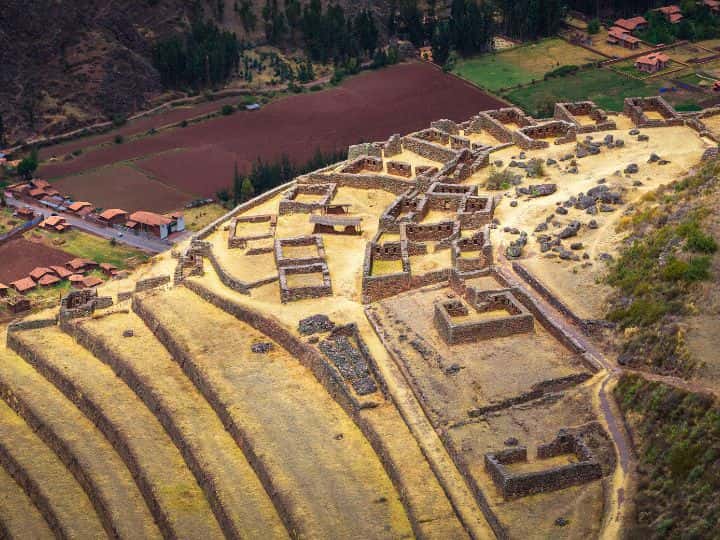
Pisac / 12 Days in Peru Itinerary
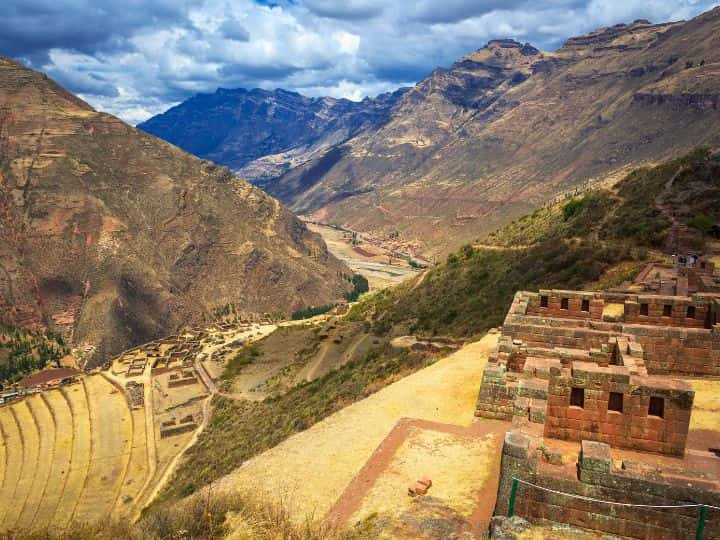
13 Top-Rated Attractions in the Sacred Valley ( Besides Machu Picchu)
Day 3 - exploring the marvels of the sacred valley: maras, moray, and ollantaytambo, ollantaytambo.
Today you will embark on a captivating day trip through the stunning landscapes of Peru’s Sacred Valley. On this adventure, you will delve into the intriguing salt mines of Maras , witness the mysterious agricultural terraces of Moray , and explore the ancient fortress of Ollantaytambo .
Get ready to be awed by the natural beauty, historical significance, and engineering marvels that await you in this enchanting region!
PRO TIP: The best way to reach Maras, Moray, and Ollantaytambo is on a private tour . With a private tour, you can have a dedicated vehicle and guide, allowing for a more personalized experience.
Joining a guided tour specifically tailored for Maras and Moray is a popular choice. These tours provide transportation from Cusco to the sites, along with a knowledgeable guide. One of the tours that you should check out is Full Day Maras, Moray, and Ollantaytambo . It is a small group (up to 14 people), full-day tour.
The Maras Salt Mines have been in operation since Incan times, producing salt through evaporation of the local saline spring waters.
The mines consist of thousands of individual salt pans , forming a striking mosaic of white crystalline salt against the mountainous backdrop.
Local families from nearby communities work together to maintain and harvest the salt, following traditional methods passed down through generations.
The intricate network of channels and pools allows for controlled water flow, ensuring the formation of high-quality salt crystals.
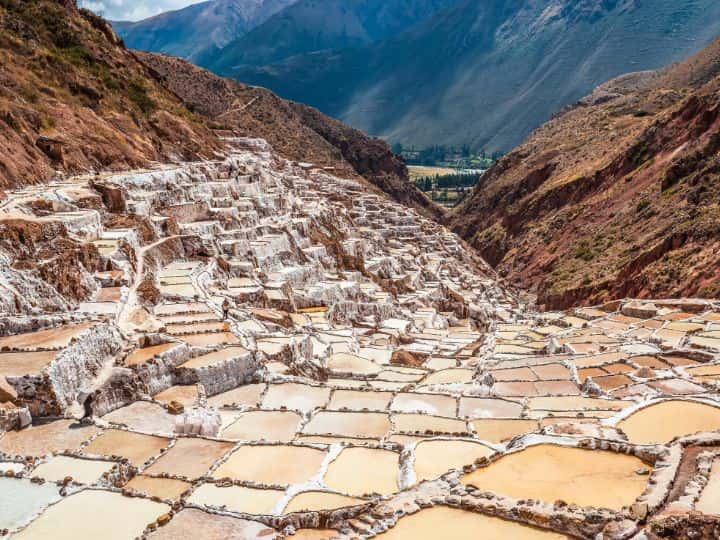
Maras Salt Mines / 12 Days in Peru Itinerary
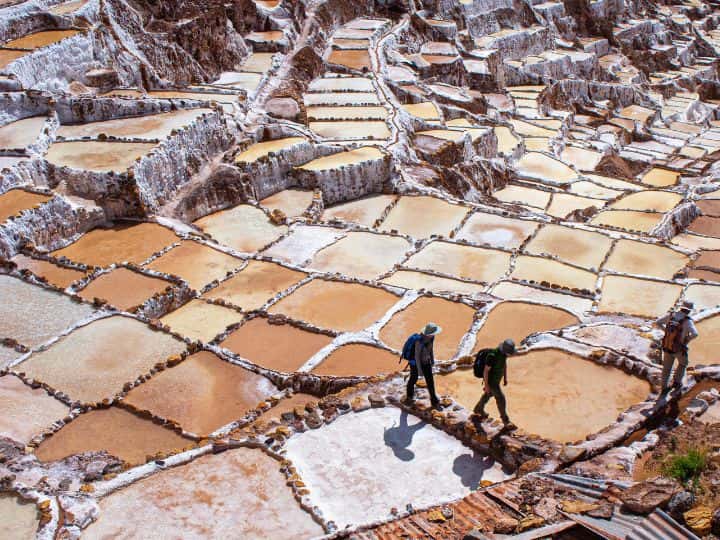
Learn More About Maras Salt Mines:
Cusco to Maras Salt Mines: 6 Things to Discover in Sacred Valley’s Natural Wonder
Moray is an archaeological site featuring impressive concentric agricultural terraces , reminiscent of a natural amphitheater.
The purpose of the terraces is believed to be experimental farming , as each terrace provides a different microclimate for testing various crops.
The temperature difference between the top and bottom terraces can vary by as much as 15 degrees Celsius (27 degrees Fahrenheit), showcasing the advanced knowledge of the Incas in agriculture.
The design of Moray is thought to have been influenced by astronomical alignments and served as a sacred site for the Incas.
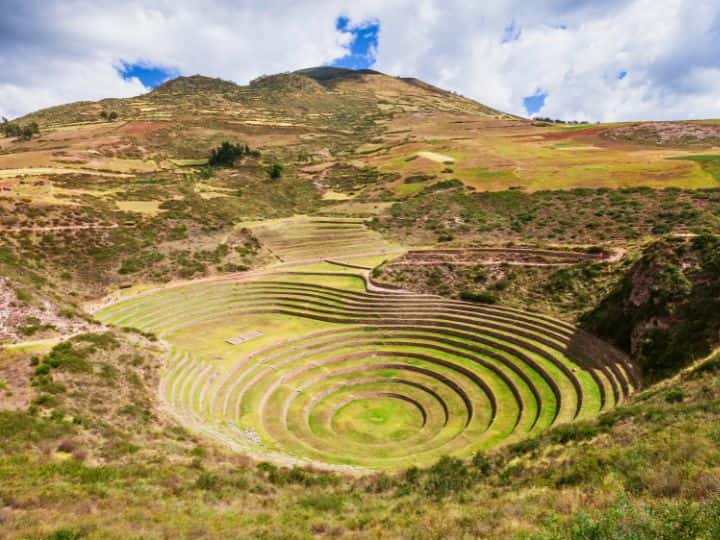
Moray / 12 Days in Peru Itinerary
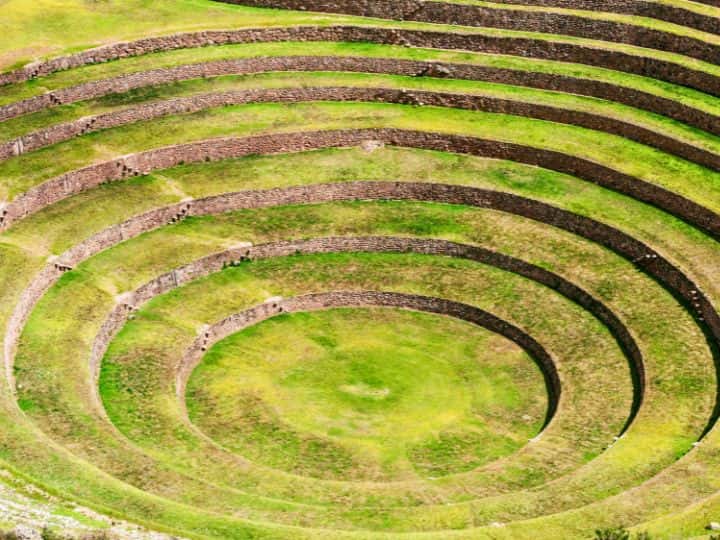
Learn More About Moray:
From Cusco to Moray: 4 Fascinating Discoveries at the Enigmatic Circular Terraces
Ollantaytambo is a captivating Incan archaeological site that holds a rich tapestry of history and architectural marvels. As you wander through its well-preserved ruins, you will be transported back in time to a civilization that thrived with strategic foresight and engineering brilliance.
- Strategic Fortress and Agricultural Center
Ollantaytambo served as a strategic fortress that guarded the entrance to the Sacred Valley, making it a vital military stronghold during the Incan era. Its elevated position provided a commanding view of the surrounding valley, allowing the Incas to monitor and defend their territories effectively.
In addition to its military significance, Ollantaytambo was an essential agricultural center , with its terraced hillsides utilized for cultivating crops in the challenging Andean landscape.
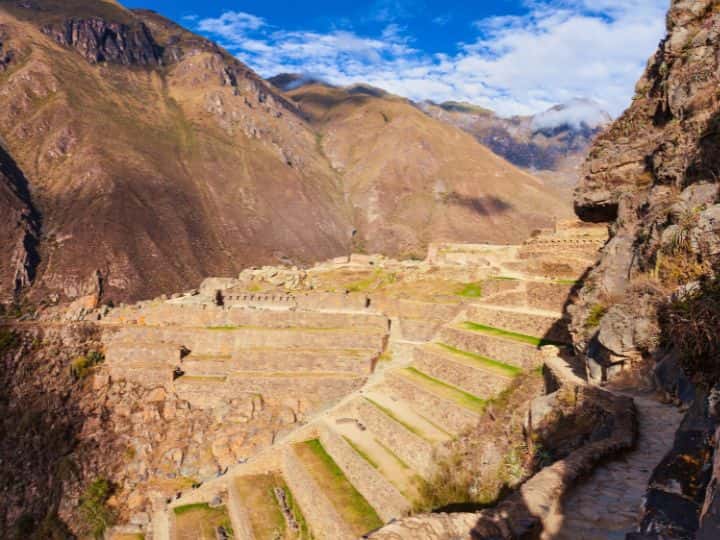
Ollantaytambo / 12 Days in Peru Itinerary
- Impressive Stone Structures and Engineering Feats
The site’s stone structures and terraces are a testament to the Incas’ advanced engineering skills. The precision with which the massive stone blocks were cut and fit together is awe-inspiring, creating walls that have withstood centuries of time.
The Incas ingeniously engineered a network of water channels that efficiently directed water from nearby streams for irrigation and domestic use, showcasing their expertise in managing precious water resources.
- Role During the Spanish Conquest
Ollantaytambo played a significant role during the Spanish conquest of Peru.
When the conquistadors, led by Francisco Pizarro, arrived in the region, the site served as a strategic stronghold for the Incas to resist the invasion. The well-organized layout of the terraces and fortified structures provided a temporary victory for the Incas, as they successfully defended the site against the Spanish forces in the Battle of Ollantaytambo.
The site’s historical importance during this critical period of Peruvian history adds depth to its allure and significance.
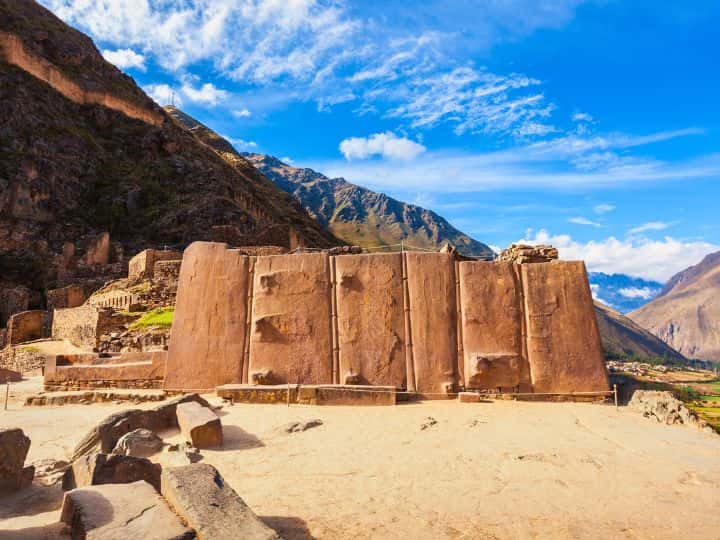
- Ingenious Construction Techniques
One of the most astonishing aspects of Ollantaytambo is the transportation and placement of its massive stone blocks . The stones used in the construction of the fortress were sourced from quarries located several miles away.
The Incas displayed extraordinary ingenuity in moving these enormous blocks across rugged terrains, using a combination of ramps, sleds, and human labor.
The precision and craftsmanship with which the stones were cut and fitted together illustrate the Incas’ mastery of construction techniques and their deep reverence for the art of building.
Ollantaytambo is a living testament to the enduring legacy of the Inca Empire and a destination that will leave you in awe of the architectural brilliance of this ancient civilization.
Learn More About Ollantaytambo:
Cusco to Ollantaytambo: 15 Fascinating Things to Discover at Peru’s Ancient Fortress
Day 4 - Day Trip from Cusco to Rainbow Mountain - Exploring the Vibrant Heights
- Rainbow Mountain
Today you will embark on an extraordinary day trip from Cusco to Rainbow Mountain , a natural wonder that will leave you awe-inspired.
Located in the Peruvian Andes, this majestic mountain showcases a kaleidoscope of vibrant colors , created by the presence of various minerals in the rock layers. Get ready for an exhilarating hike through stunning landscapes as you discover this unique geological phenomenon.
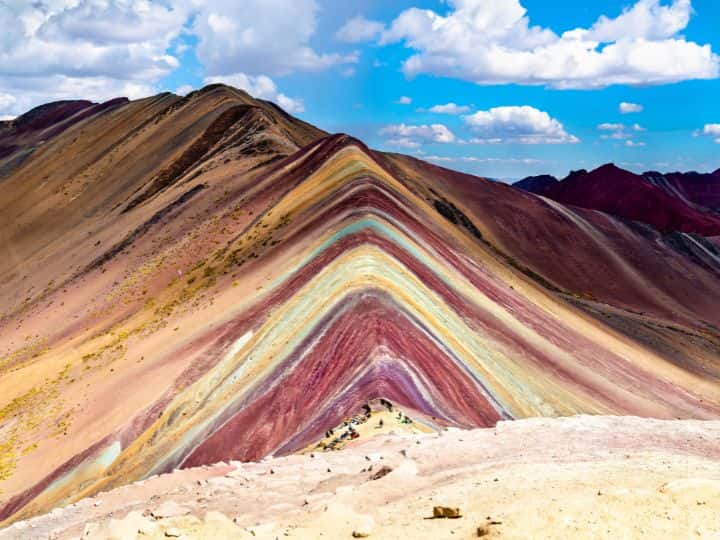
Rainbow Mountain / 12 Days in Peru Itinerary
PRO TIP: When planning a day trip from Cusco to Rainbow Mountain, there are several transportation options to consider:
- Organized Tour: Joining an organized tour is probably the most popular and convenient option for visiting Rainbow Mountain. Numerous tour companies in Cusco offer day trips to Rainbow Mountain, providing transportation from Cusco to the trailhead and guiding you along the trek. This option eliminates the need for individual logistics and allows you to focus on enjoying the experience.
Here is a tour that you might want to check out: Rainbowbow Mountian – Full-Day Tour . Another popular option is Rainbow Mountain with ATVs .
- Private Transfer: For a more personalized and flexible experience, you can arrange a private transfer from Cusco to the trailhead of Rainbow Mountain. This option offers greater control over your itinerary and allows you to customize the trip according to your preferences.
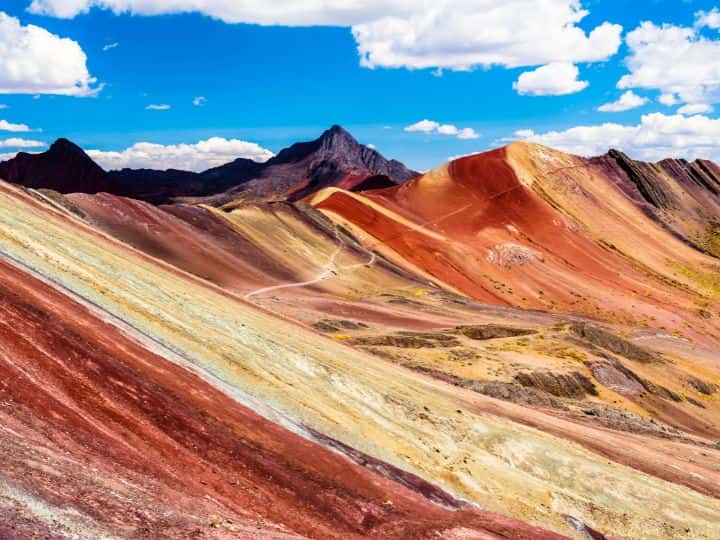
GOOD TO KNOW:
- Rainbow Mountain, also known as Vinicunca, rises majestically to an elevation of 5,200 meters (17,060 feet) above sea level.
- The mountain’s distinctive colors, ranging from hues of red, pink, yellow, and turquoise, are a result of the mineral-rich composition of the sedimentary layers.
- It remained hidden beneath a thick layer of ice and snow for centuries before being exposed due to glacial retreat.
- The vibrant colors of Rainbow Mountain create a breathtaking and otherworldly landscape, attracting adventurers and nature enthusiasts from around the world.
Here is what you need to know about the hiking experience:
- The hike to Rainbow Mountain is challenging and requires a good level of fitness due to the high altitude and steep sections.
- The trail takes you through picturesque valleys, past grazing alpacas and llamas, and offers stunning views of snow-capped peaks.
- The hike typically spans around 7 to 9 kilometers (4 to 5.5 miles), taking approximately 3 to 4 hours to reach the summit.
- It is recommended to acclimate to the altitude in Cusco for a few days before attempting the hike to minimize the effects of altitude sickness.
- Reaching the summit of Rainbow Mountain rewards you with breathtaking panoramic views of the surrounding mountain ranges and valleys.
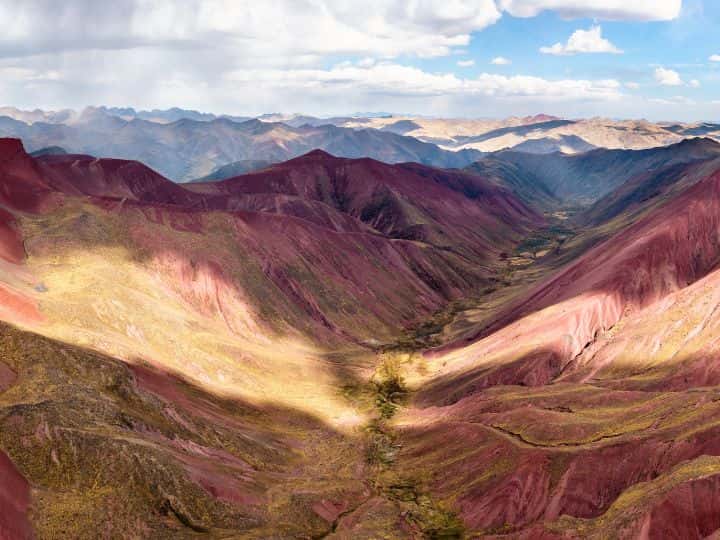
Red Valley Near Rainbow Mountain / 12 Days in Peru Itinerary
PRO TIP: Be prepared for changing weather conditions, as the high altitude can bring chilly temperatures and swift weather changes.
More Ideas for Day Trips from Cusco:
Day 5 - Journey to Aguas Calientes: Gateway to Machu Picchu and Exploration of Aguas Calientes
- Journey from Cusco to Aguas Calientes – Gateway to Machu Picchu
Exploring Aguas Calientes
Overnight in aguas calientes.
Today you are going to start a captivating journey to the renowned UNESCO World Heritage Site, Machu Picchu.
Day 5 involves reaching Aguas Calientes, the gateway to Machu Picchu, while Day 6 is dedicated to witnessing the breathtaking sunrise over the ruins, exploring the awe-inspiring citadel, and returning to Cusco with memories that will last a lifetime.
Journey from Cusco to Aguas Calientes: Gateway to Machu Picchu
One of the most convenient ways to reach Machu Picchu (without hiking) is by taking the train.
There are two train companies available: the PeruRail and the Inca Rail .
The train journey will take you through breathtaking landscapes of the Andes Mountains and lush valleys, providing a scenic and comfortable ride to Machu Picchu.
PRO TIP: Be prepared to book your train tickets at least 6-4 months in advance to secure the best departure and arrival times, as well as be able to select the train class that is the best for your budget.
GOOD TO KNOW: Make a note that there is no train station precisely in Cusco but rather there is Poroy Train Station and which is located about 20 minutes from Cusco. In my opinion, the best way to get to Poroy Train Station is to take a taxi. My hotel arranged a taxi for me. It cost me 50 soles. However, if you book a taxi yourself, or catch a taxi from downtown Cusco, it will cost you much less, around 20-30 soles.
Make another note that there is no train station exactly at the Inca Citadel of Machu Picchu. The train will take you to Aguas Calientes (Machu Picchu Pueblo) .
Poroy Train Station is 86 km (54 miles) from Aguas Calientes. The trip takes about 3 hours and 20 minutes.
Intrepid’s Tip:
READ: How to Reach Machu Picchu Without Hiking (2 Easy Steps!)
Aguas Calientes , also known as Machu Picchu Pueblo , is a small town located in the Urubamba River Valley in Peru, near the famous ancient Inca city of Machu Picchu. It serves as a base for tourists visiting Machu Picchu.
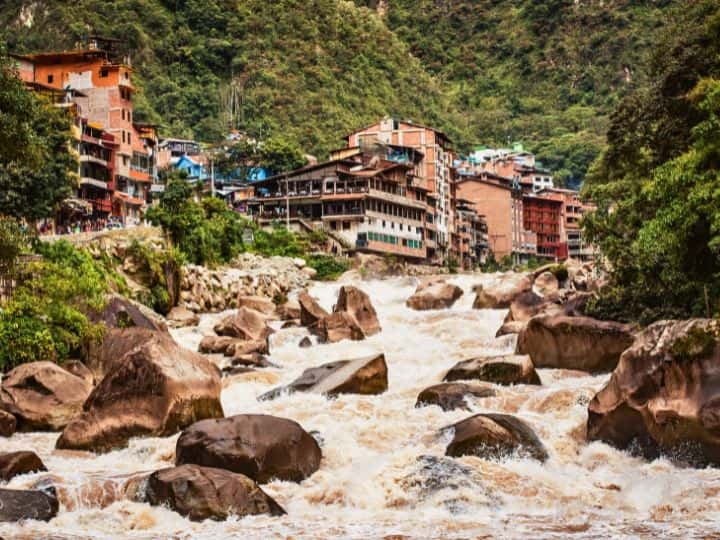
Aguas Calientes / 12 Days in Peru Itinerary
- How to Get Around in Aguas Calientes
Aguas Calientes is a small town, and most places of interest are within walking distance. You can easily explore the town on foot and get to restaurants, shops, and other attractions.
- Where to Stay in Aguas Calientes
My first choice is Tierra Viva Machu Picchu Hotel . First of all, the location is great. It is close to the train station and right by the bus stop that leaves for Machu Picchu. The rooms are nice, the beds are comfy and the shower has hot water. Breakfast. is included and it offers a variety of fruits, bread, and yogurts. They have an on-site restaurant which is very convenient.
Casa del Sol Machupicchu is another good one in Aguas Calientes. The location is perfect! The rooms are a good size with comfortable beds. You will like their breakfast with lots of choices. Make sure to book a room with a river view.
While Machu Picchu is undoubtedly the highlight of Aguas Calientes, there are plenty of other activities and experiences to enjoy in this charming town and its surrounding areas.
Here are a few things worth checking out in Aguas Calientes:
Manuel Chavez Ballon Site Museum
Manuel Chavez Ballon Site Museum , also known as Machu Picchu Museum, is one coolest things to do in Aguas Calientes before heading out to Machu Picchu. It will give you an understanding of the Inca culture and insight into the construction of the Machu Picchu citadel.
Butterfly House Machupicchu
The Mariposario de Machupicchu , also known as the Butterfly House Machupicchu , is a butterfly sanctuary and a local conservation project dedicated to studying local butterfly species as well as increasing the butterfly population through a reproduction-and-release program. The project is run by Leonardo Serrano Gutierez.
The Hot Springs
The Hot Springs (Banos Termales) in Aguas Calientes is located in a beautiful natural setting, surrounded by lush vegetation and the sounds of the Vilcanota River, so take your time and relax, unwind, and appreciate the serene atmosphere of the hot springs.
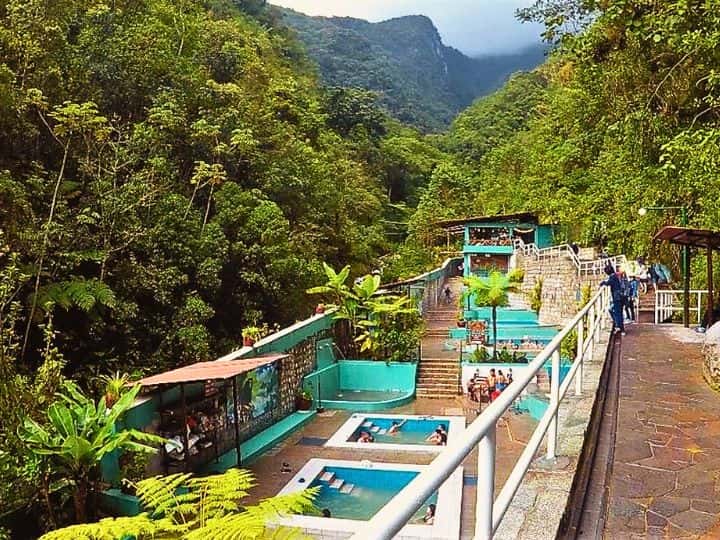
READ: 7 Fun and Cool THINGS to DO in AGUAS CALIENTES (Besides Machu Picchu)
After a train journey and an exhilarating half-day of exploration in Aguas Calientes, take the opportunity to hit the bed early.
Allow yourself to recharge for the awe-inspiring experience that awaits you at dawn!
Day 6 - Machu Picchu Exploration
Sunrise at machu picchu, tour of machu picchu city of the incas, journey back to cusco.
Day 6 is dedicated to witnessing the breathtaking sunrise over the ruins, exploring the awe-inspiring citadel, and returning to Cusco with memories that will last a lifetime.
You will need to begin your day super early! You need to be up and ready to go no later than about 3:30 am to 4 am.
You will start by taking a bus from Aguas Calientes to the entrance of Machu Picchu, arriving in time for the mesmerizing sunrise. The bus ride takes about 15-20 minutes.
The line for buses going to Machu Picchu starts forming at about 3:30 am. You need to be on one of the first buses leaving for Machu Picchu to make it for sunrise.
PRO TIP: Make sure to buy your bus tickets as soon as you arrive in Aguas Calientes!
READ: How to See the Mesmerizing SUNRISE at MACHU PICCHU (9 Steps to Witness the Magic)
GOOD TO KNOW: Instead of taking a bus, you can hike from Aguas Calientes to Machu Picchu. It is a 2 to 3-hour strenuous hike, however, it is a very popular hike. If you want to make it for sunrise, you will be hiking in darkness, so a flashlight or a headlamp is recommended.
READ: Hiking to MACHU PICCHU from AGUAS CALIENTES in 4 Easy Steps
Experiencing the sunrise at Machu Picchu is a dream come true, a bucket-list moment that captures the very essence of awe and wonder!
As the first rays of the sun ascend the horizon, they tenderly embrace the stone citadel, unveiling a breathtaking spectacle. The ethereal beauty of Machu Picchu emerges, bathed in a gentle, golden glow, casting a spell of enchantment upon all who bear witness.
In this magical moment, you will find yourself transported through time, standing amidst the ancient stonework and sacred temples carefully crafted by the hands of the Incan civilization.
Next, it is time to discover the wonders of Machu Picchu , the mesmerizing “City of the Incas,” where ancient ruins stand as a testament to the ingenuity and spiritual reverence of the Incan civilization.
As you start your exploration of this extraordinary archaeological site, be sure not to miss the captivating highlights that hold the secrets of a bygone era. From sacred temples and ritual stones to breathtaking vistas and intricate terraces, each moment at Machu Picchu unveils the enigmatic allure of a once-thriving ancient civilization.
Let us guide you through the must-see treasures that await you in this UNESCO World Heritage Site, where history comes alive amidst the splendor of the Andean mountains.
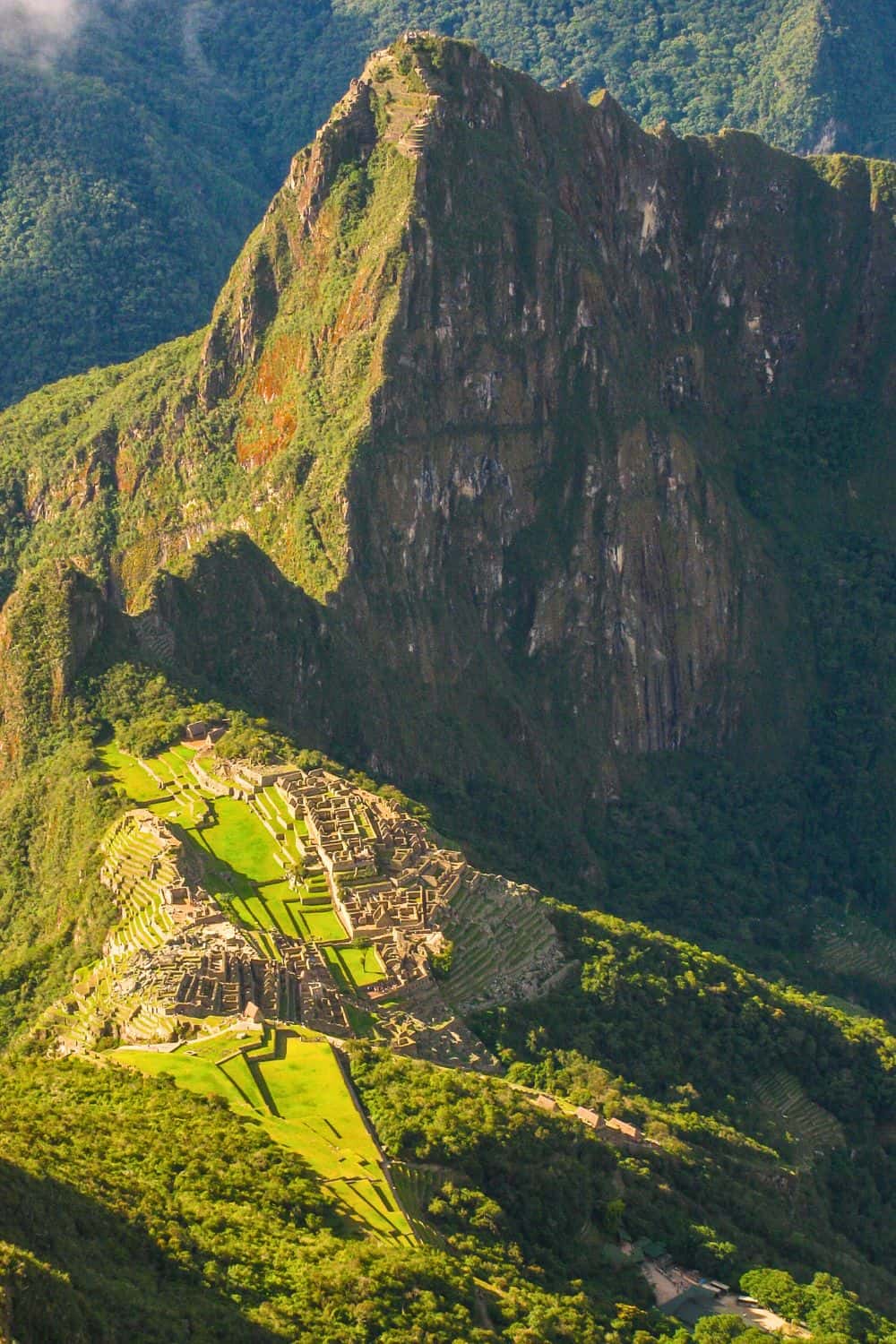
Machu Picchu / 12 Days in Peru Itinerary
Machu Picchu – City of the Incas: Must-See Highlights
- Intihuatana Stone: An ancient ritual stone, believed to have served as a solar observatory and spiritual center for the Incas.
- Temple of the Sun (Torreón): A remarkable semi-circular structure dedicated to the worship of the sun god Inti, featuring exquisite stonework.
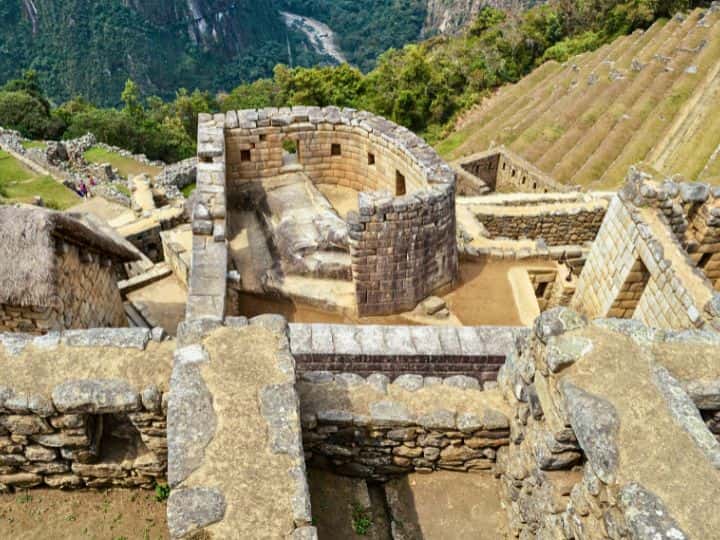
- Temple of the Condor: A unique rock formation that resembles a condor in flight, symbolizing the Incan connection to nature and the spirit world.
- The Sacred Rock: A massive boulder with sacred carvings, possibly used for rituals or offerings by the Inca priests.
- Sun Gate (Intipunku): The original entrance to Machu Picchu from the Inca Trail, offering breathtaking views of the citadel and surrounding landscapes.
- Main Plaza (Hanan): The heart of Machu Picchu, where important ceremonies and gatherings took place, surrounded by significant temples and structures.
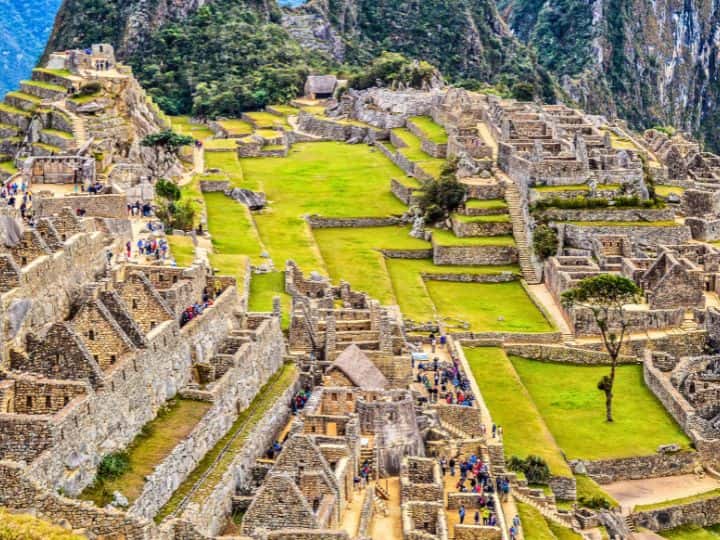
- Intihuatana Terrace: A terraced area featuring the enigmatic Intihuatana stone, where the Incas connected with cosmic forces and celestial events.
- Agricultural Terraces: The impressive farming terraces that cascade down the mountainside, showcasing the Incas’ advanced knowledge of engineering and agriculture.
- Temple of the Three Windows: An enigmatic three-windowed temple, showcasing intricate Incan masonry and offering stunning panoramic views of the surrounding mountains.
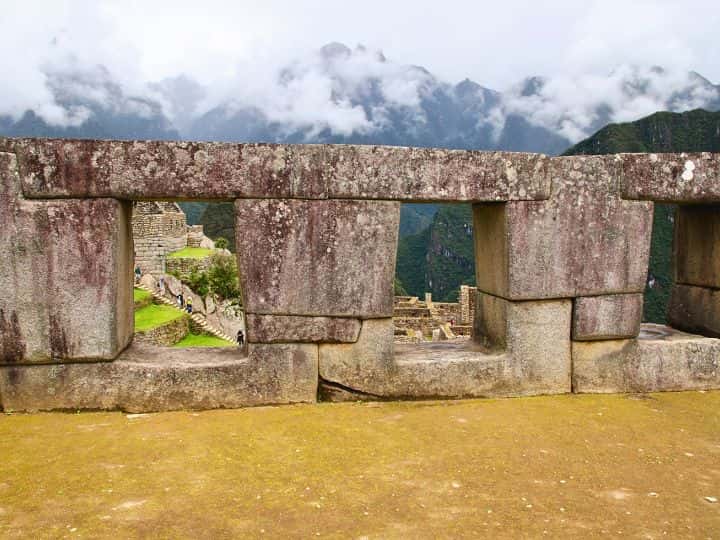
Temple of the Three Windows / 12 Days in Peru Itinerary
- Guardhouse (Casa del Guardián): An iconic structure located at the entrance, where visitors often take postcard-worthy photos of Machu Picchu.
- Terraced Fields (Agricultural Sector): Explore the lower agricultural terraces, where the Incas cultivated various crops and maintained a sustainable way of life.
These are just a few highlights of the treasures that await you at Machu Picchu. As you wander through the ancient city, keep an eye out for the small details and the hidden stories etched into the stones, making this archaeological wonder a living testament to the ingenious culture of the Incas.
Further Reading:
BEST TIME to VISIT MACHU PICCHU (Top #1 Month for Ultimate Adventure)
Best SELF-GUIDED MACHU PICCHU TOUR (Explore 11 Marvels of Inca Citadel)
9 Best PHOTOGRAPHY LOCATIONS at MACHU PICCHU (+Useful Photo Tips)
9 Top THINGS to DO at MACHU PICCHU (Unveiling the Enchanted City of the Incas)
As the sun bids farewell to the ancient citadel of Machu Picchu, I bet your heart brims with memories of an unforgettable day. The journey back to Cusco will be accompanied by a sense of fulfillment and wonder, as you reflect on the marvels witnessed at the City of the Incas. The scenic train ride through the Andean landscapes will offer moments of quiet contemplation.
Upon arriving in Cusco, the city will warmly embrace you with its cobblestone streets and charming plazas, inviting you to unwind and rest.
As the sun sets over the horizon, you will need to prepare for the next chapter of your adventure – a 3-day exploration of the enchanting Peruvian Amazon.
Day 7 - Journey into Tambopata National Preserve: the Heart of Peruvian Amazon
- Journey from Cusco into Tambopata National Preserve: the Heart of Peruvian Amazon
Night Walk Excursion in Tambopata Rainforest
Today, you will embark on a thrilling adventure into the heart of the Amazon rainforest in Peru !
Over the next 3 days, you will venture into the biodiverse Tambopata National Preserve , specifically staying at Refugio Amazonas Lodge .
Prepare to immerse yourself in the mesmerizing beauty of the jungle, encounter incredible wildlife, and experience the unique sights and sounds of one of the world’s most diverse ecosystems.
GOOD TO KNOW: There are many tour companies in Tambopata National Preserve. After much research, I selected Rainforest Expeditions . After spending 3 days with them and participating in all the excursions, I have to say that they are top-notch! I am not promoting them and I am not getting paid for mentioning them here.
Read: 3-Day Adventure in the Amazon, Peru: Discover the Untamed Rainforest
Journey from Cusco to Tambopata National Preserve
To get to Tambopata National Preserve, take a domestic flight from Cusco to Puerto Maldonado , the gateway to the Amazon rainforest.
Upon arrival, you will be met by your local guide and embark on a scenic boat journey along the Tambopata River to Refugio Amazonas.
Settle into the lodge, located amidst the lush rainforest, and receive an orientation to familiarize yourself with the area.
Explore the lodge’s surroundings, observing the diverse bird species and listening to the symphony of jungle sounds.
Embark on a thrilling Night Walk Excursion in the Tambopata Rainforest, an immersive journey into the mysterious world of nocturnal creatures.
As the sun sets, the rainforest comes alive with a symphony of sounds and unseen movements.
Guided by expert naturalists, venture deep into the heart of the Amazon, where the inky darkness reveals a whole new realm of wildlife.
Armed with flashlights , witness the mesmerizing glow of bioluminescent insects and the reflective eyes of night-dwelling creatures. Listen to the enchanting calls of nocturnal birds and the haunting melodies of tree frogs.
During this captivating adventure, you will gain a profound appreciation for the delicate balance of nature in the darkness and unlock the secrets of the Tambopata Rainforest’s nocturnal wonders.
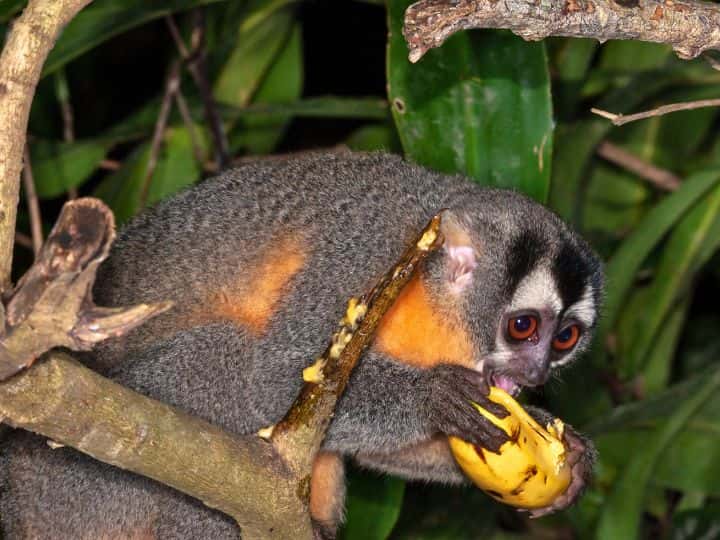
Tambopata Rainforest / 12 Days in Peru Itinerary
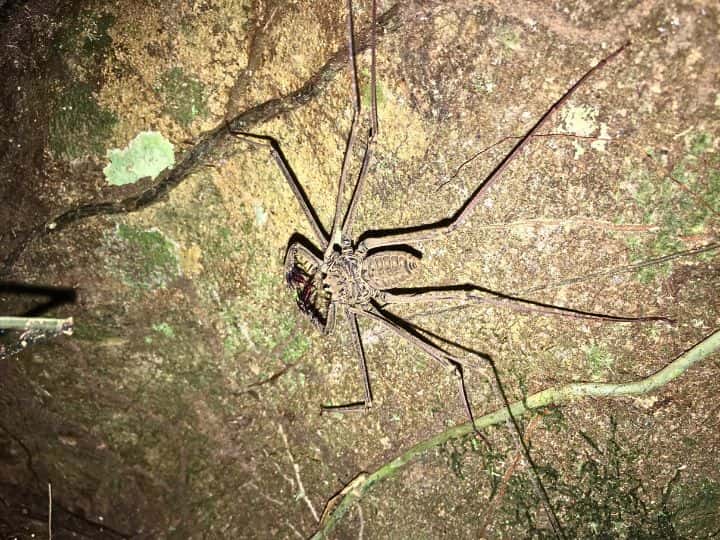
Day 8 - Tambopata Rainforest Adventures - Macaw Clay Lick and Mammal Clay Lick Encounter
- Chuncho Macaw Clay Lick Excursion: A Colorful Spectacle in Tambopata Rainforest
Mammal Clay Lick Excursion
Day 2 in the Tambopata Rainforest promises an exhilarating continuation of your Amazon adventure, with two captivating excursions that offer a glimpse into the vibrant biodiversity of this pristine wilderness.
First, you’ll embark on the Chuncho Macaw Clay Lick Excursion , a unique opportunity to witness the breathtaking spectacle of colorful macaws and parrots gathering at clay licks to indulge in essential minerals. Marvel at the vivid plumage and raucous calls of these magnificent birds as they create a vivid tableau against the lush green backdrop of the rainforest.
Next, the Mammal Clay Lick Excursion awaits, where you’ll have the chance to encounter diverse mammal species, including tapirs, peccaries, and even elusive jaguars, attracted to the mineral-rich soil. Guided by experienced naturalists, these extraordinary encounters will deepen your connection with the intricate web of life that thrives within the Tambopata Rainforest, leaving you with indelible memories of nature’s wonder and splendor.
Chuncho Macaw Clay Lick Excursion
The Chuncho Macaw Clay Lick Excursion in Tambopata Rainforest is an awe-inspiring encounter with nature’s vibrant palette.
As the sun rises, venture deep into the heart of the Amazon, guided by expert naturalists to witness an extraordinary spectacle. At the clay lick, a unique formation of mineral-rich clay , an array of magnificent macaws and parrots gathers in a dazzling display of colors.
Marvel at the resplendent hues of scarlet, blue, green, and gold as these captivating birds arrive in a chorus of calls and wings, their vivid plumage painting the rainforest with stunning vibrancy.
Capturing this natural wonder with your senses, observe the macaws indulging in the clay, a behavior that helps them neutralize toxins in their diet and aids in digestion. This unforgettable excursion offers an intimate connection with the wild majesty of the Tambopata Rainforest and a profound appreciation for the delicate balance of life within this biodiverse paradise.
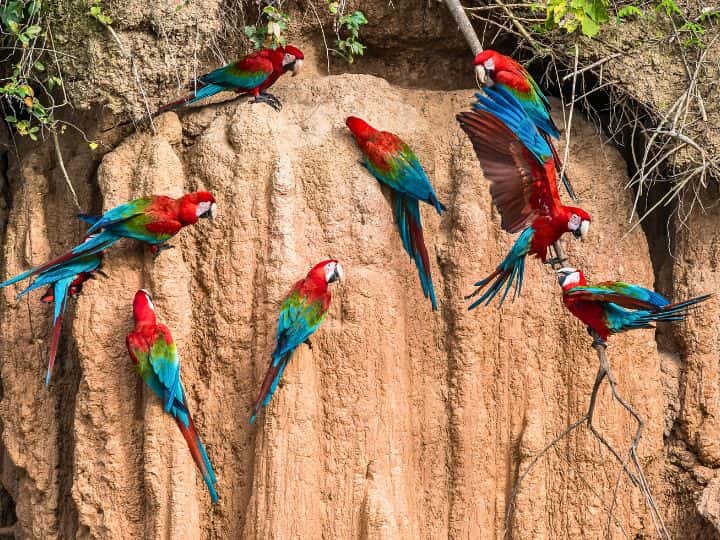
Chuncho Macaw Clay Lick / 12 Days in Peru Itinerary
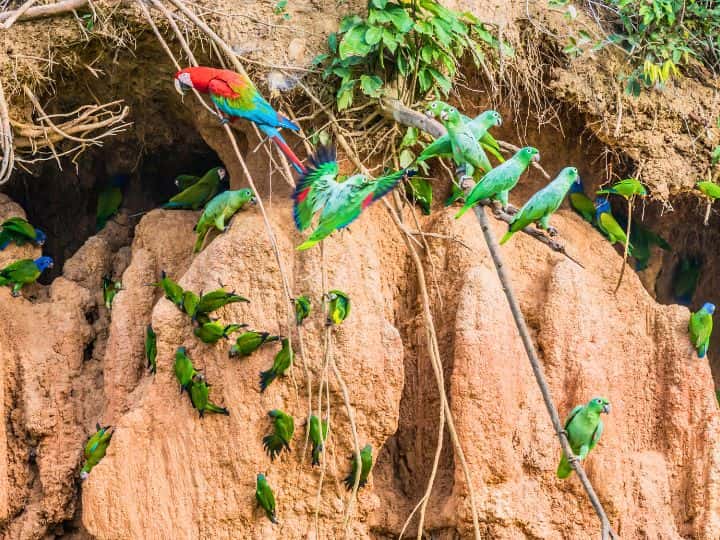
Embark on the Mammal Clay Lick Excursion in Tambopata Rainforest for an extraordinary opportunity to witness the captivating wildlife that thrives in this pristine ecosystem.
Guided by experienced naturalists, venture into the depths of the rainforest, where a hidden clay lick attracts a diverse array of mammal species. Keep your eyes peeled for the elusive tapirs, peccaries, and even the majestic jaguars that are enticed by the mineral-rich soil.
As you observe these magnificent creatures in their natural habitat, learn about their behaviors, feeding patterns, and the vital role clay licks play in their well-being.
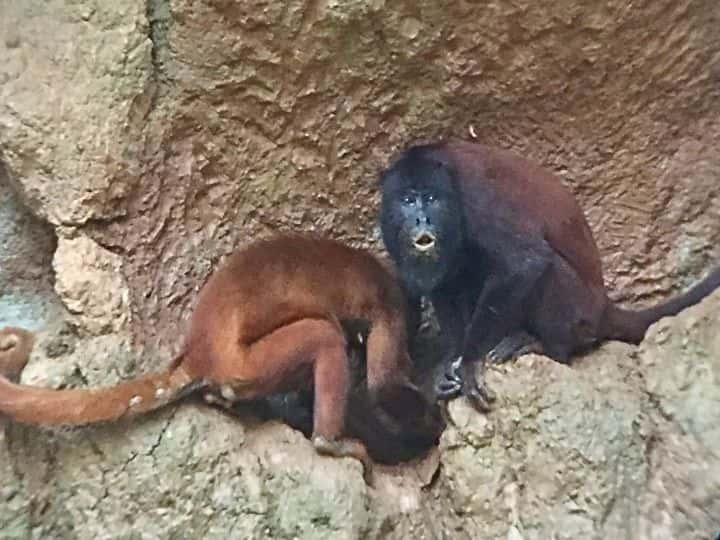
Mammal Clay Lick / 12 Days in Peru Itinerary
Day 9 - Tambopata Rainforest Adventures - Canopy Observation Tower and Journey to Lima
- Sunrise Canopy Observation Tower Excursion
The Journey from Tambopata National Reserve to Lima
- Arrival in Lima: Getting Around and Places to Stay
Miraflores Exploration
Day 9 of your Peruvian adventure begins with a breathtaking Sunrise Canopy Observation Tower Excursion in Tambopata Rainforest, immersing you in the enchanting morning ambiance of the Amazon.
As the day unfolds, you will bid farewell to Tambopata National Reserve and embark on a journey to Lima .
Upon arriving in Lima, the coastal capital beckons with an afternoon of exploration in the vibrant district of Miraflores , where you can relish the coastal views, indulge in delicious cuisine, and savor the fusion of history and modernity that defines this dynamic city.
Day 9 presents a perfect blend of nature’s tranquility and urban allure, promising unforgettable experiences of your remarkable Peruvian escapade.
Sunrise Canopy Observation Tower Excursion in Tambopata
The Sunrise Canopy Observation Tower Excursion in Tambopata Rainforest offers an awe-inspiring experience to witness the beauty of the Amazon awakening with the first light of day.
Early in the morning, you will venture into the heart of the rainforest with your guide, making your way to the canopy tower, which stands tall above the treetops.
As the sun rises over the horizon, the forest comes to life with the melodious calls of birds and the gentle rustling of leaves.
From the canopy tower, you will have an unparalleled vantage point to observe the diverse wildlife that inhabits the rainforest. Keep an eye out for vibrant toucans, parrots, and macaws as they take flight through the morning mist, creating a mesmerizing sight against the backdrop of the lush greenery.
The observation tower also provides a unique opportunity to witness the daily activities of the rainforest residents. Monkeys may leap from branch to branch, searching for breakfast, while other elusive creatures may emerge from their hidden abodes.
As you stand amidst the canopy, you will feel a profound connection to the thriving ecosystem that surrounds you.
The Sunrise Canopy Observation Tower Excursion is not only a feast for the senses but also an educational experience. Your guide will share insights about the rainforest’s ecology, the behavior of its inhabitants, and the significance of preserving this precious ecosystem.
This magical morning adventure offers a serene and reflective start to your day, leaving you with memories of a truly unforgettable sunrise in the heart of the Tambopata Rainforest.
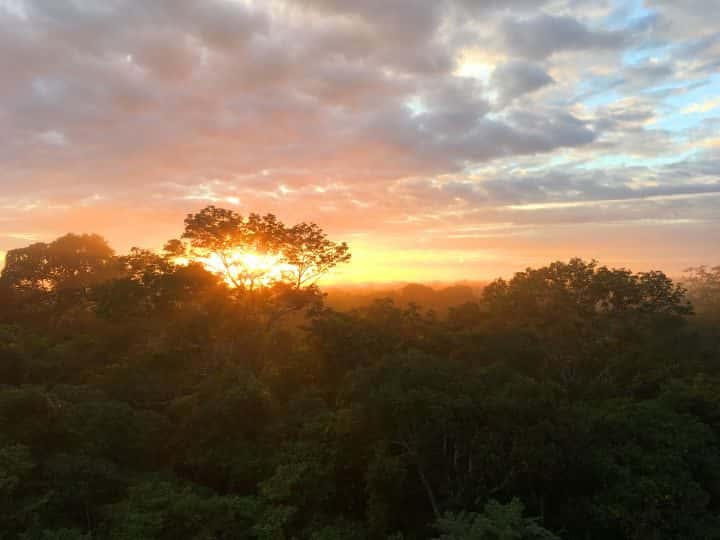
Sunrise Canopy Observation Tower Excursion / 12 Days in Peru Itinerary
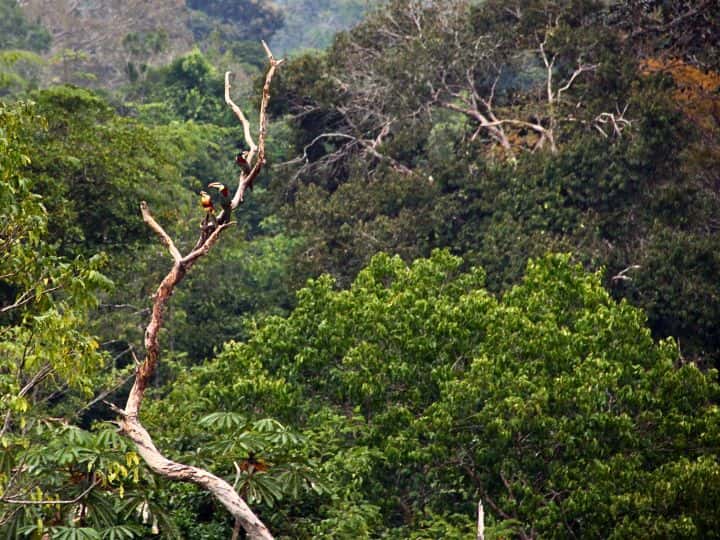
It is time to say goodbye to Tambopata National Reserve and embark on a journey to Lima.
This journey typically involves a combination of transportation modes to cover the distance between the two locations.
- Tambopata National Reserve to Puerto Maldonado: From the Tambopata National Reserve, you will travel back to Puerto Maldonado, the gateway city to the rainforest. The journey may be by boat or land, depending on the lodge’s location within the reserve. As you depart from the reserve, take in the last glimpses of the pristine rainforest and the natural wonders you encountered during your stay.
- Puerto Maldonado to Lima: From Puerto Maldonado to Lima, you will take a direct domestic flight. The flight duration from Puerto Maldonado to Lima is approximately 1 hour and 45 minutes, providing a convenient and straightforward way to travel back to the capital city.
Arrival in Lima - Getting Around and Places to Stay
Upon arriving in Lima, you’ll find a variety of transportation options to get around the city and numerous accommodation choices to suit your preferences and budget.
Getting Around in Lima
- Metropolitano Bus System: The Metropolitano is a reliable and efficient bus system that provides an excellent way to get around Lima.
Purchase a rechargeable “tarjeta” card at any Metropolitano station and load it with credit. This card can be used for multiple trips, and you can easily recharge it when needed. Just tap the card on the reader when boarding and exiting the bus to deduct the fare.
The Metropolitano operates on dedicated bus lanes , separate from regular traffic, which helps minimize delays and allows for faster and more reliable travel. This is especially advantageous during peak hours when traffic congestion is common.
- Taxis and Ride-Sharing Apps: Look for licensed taxis that display identification, such as a visible taxi company logo and registration number.
Ride-sharing apps like Uber and Beat are popular and reliable alternatives to traditional taxis in Lima.
Places to Stay in Lima
- Miraflores: Miraflores is a popular neighborhood for tourists, offering a wide range of accommodations, from luxurious hotels to budget-friendly hostels. It boasts stunning coastal views, parks, shopping, and a vibrant dining scene.
- Barranco: Barranco is an artsy and bohemian neighborhood known for its colorful streets, art galleries, and lively nightlife. It offers boutique hotels and charming guesthouses.
- San Isidro: San Isidro is a sophisticated area with upscale hotels, fine dining, and beautiful parks, making it an ideal choice for travelers seeking a more refined ambiance.
- Here are some of the hotels that I stayed at:
Belmond Miraflores Park is a luxury hotel that offers stunning ocean views, elegant rooms, and top-notch service. It features a rooftop pool, a spa, and a renowned restaurant with panoramic views.
JW Marriott Hotel Lima , situated on the Malecón, this upscale hotel offers luxurious rooms, excellent amenities, and breathtaking views of the ocean. It boasts multiple restaurants, a fitness center, and a rooftop pool.
Iberostar Selection Miraflores offers modern and comfortable accommodations and excellent on-site amenities. The hotel features well-appointed rooms and suites with stylish decor and modern amenities. You will be able to indulge in delicious dining options, including international cuisine and Peruvian specialties while enjoying stunning views from the rooftop bar. There is an outdoor pool and fitness center.
Read: 22 Expert Lima Tips for First-Time Visitors (Unlock Lima’s Treasures)
Afternoon and evening in Miraflores offer a delightful blend of coastal charm, culinary delights, and lively entertainment.
Here’s how you can make the most of your time in this vibrant neighborhood of Lima:
Larcomar Shopping Center
Begin your afternoon at Larcomar, an upscale shopping center perched on the cliffs overlooking the Pacific Ocean.
Enjoy a leisurely stroll along the outdoor walkways, taking in the breathtaking coastal views and browsing through a variety of shops offering local and international brands.
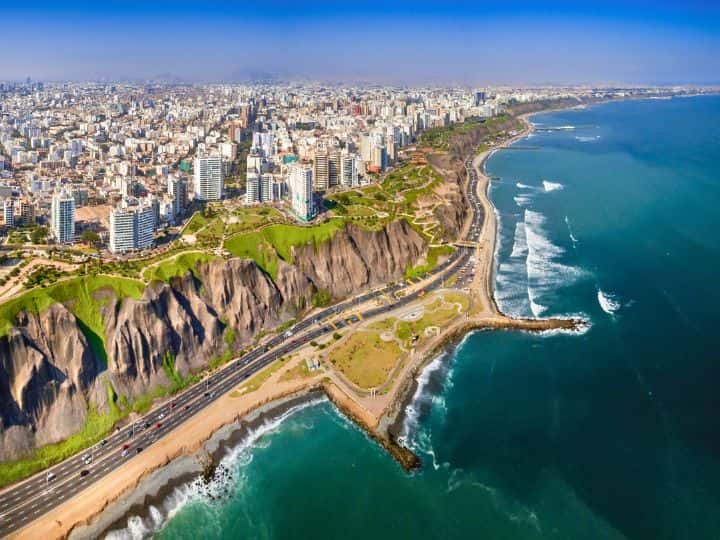
Room of the Three Windows / 12 Days in Peru Itinerary
Parque del Amor (Love Park)
Located nearby, Parque del Amor is a picturesque park adorned with colorful mosaics and a romantic sculpture of a couple in an embrace. Enjoy the panoramic views of the ocean and take a moment to capture a memorable photo with the iconic El Beso (The Kiss) statue.
Kennedy Park
Head to Kennedy Park, known as the heart of Miraflores, for a taste of local life. This lively park is a gathering place for both residents and visitors, with street performers, artisanal markets, and green spaces to relax and people-watch.
Sunset at Malecón de Miraflores
As the sun begins to set, make your way to the Malecón de Miraflores , a beautiful coastal boardwalk that stretches along the cliffs. Enjoy the stunning sunset over the Pacific Ocean, creating a breathtaking backdrop for your evening.
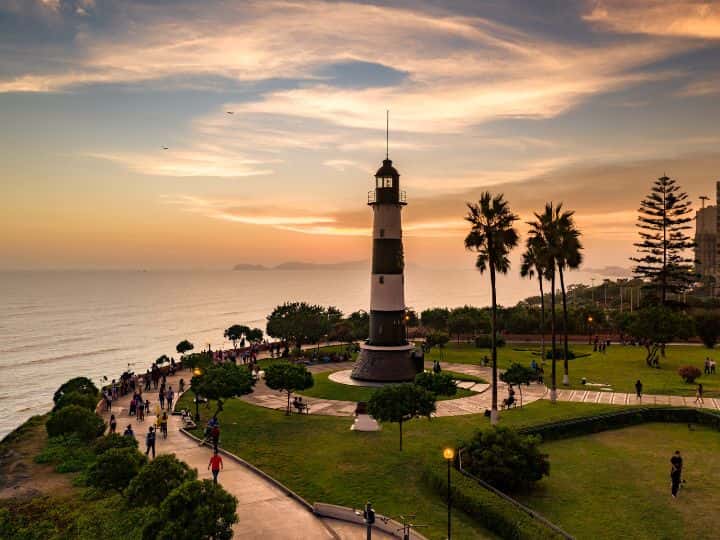
Miraflores at Sunset / 12 Days in Peru Itinerary
GOOD TO KNOW: Miraflores boasts a diverse culinary scene , offering a wide range of restaurants and eateries catering to various tastes and budgets. Indulge in a traditional Peruvian dinner at one of the many renowned cevicherias or savor international cuisine from around the world.
Miraflores comes alive after dark with a bustling nightlife scene . Whether you prefer trendy bars, dance clubs, or live music venues, you’ll find plenty of options to enjoy the evening’s entertainment.
PRO TIP: If you are up to it, visit the Magic Water Circuit , located a short distance from Miraflores. This enchanting park features 13 illuminated water fountains, synchronized with music and lights, creating a dazzling spectacle. The park’s highlight is the largest fountain, which shoots water up to 80 meters high.
Day 10 - Lima's Exploration: Rich Heritage and Cultural Marvels
Lima Exploration
Historic Center of Lima: Plaza de Armas, Lima Cathedral, and the Presidential Palace, the San Francisco Monastery
The vibrant neighborhood of barranco, larco museum, huaca pucllana.
Welcome to Day 10 of your Peruvian journey – Lima’s Rich Heritage and Cultural Marvels!
Today, you’ll dive deep into the heart of Peru’s capital city , Lima, exploring its historical treasures, vibrant neighborhoods, and ancient archaeological sites. From the grandeur of the Historic Center with its iconic Plaza de Armas, Lima Cathedral, and the Presidential Palace, to the bohemian charm of Barranco, this day promises a captivating mix of history, art, and culture.
Your exploration will take you to the renowned Larco Museum, where ancient artifacts and pre-Columbian wonders await, and to the enigmatic Huaca Pucllana, an ancient pyramid that holds secrets from Lima’s pre-Inca past.
Get ready to be enthralled by Lima’s rich heritage and immerse yourself in the marvels of this diverse and dynamic city. Let’s embark on this extraordinary adventure!
Welcome to the Historic Center of Lima , where history and architectural marvels converge in the iconic Plaza de Armas , also known as the Plaza Mayor. Designated as a UNESCO World Heritage site, this historic square is flanked by significant buildings, including the Government Palace, the Archbishop’s Palace, and the Municipal Palace.
Marvel at the exquisite Spanish Baroque design of Lima Cathedral , which houses the tomb of Francisco Pizarro, the Spanish conquistador who founded Lima.
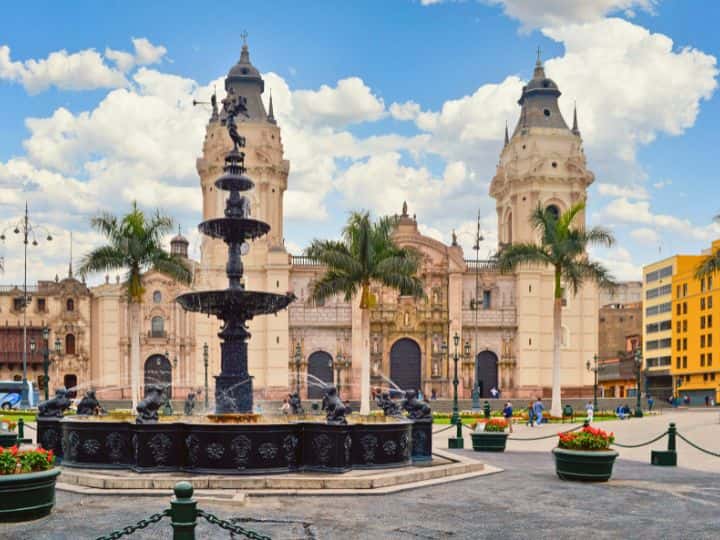
Lima Cathedral / 12 Days in Peru Itinerary
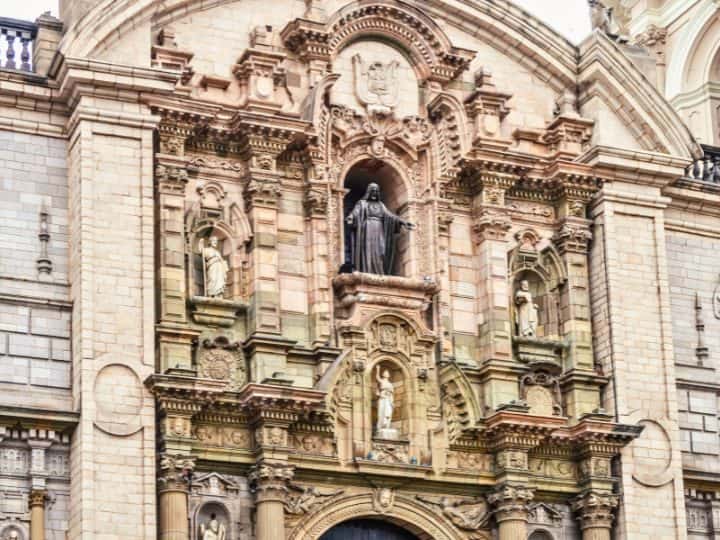
Get a glimpse of Peru’s political center as you visit the Presidential Palace , where the changing of the guard ceremony takes place daily at noon.
Lastly, venture into the San Francisco Monastery , a religious complex that holds an intriguing secret within its catacombs, entombing the remains of an estimated 70,000 people.
Discover the vibrant and artistic neighborhood of Barranco, where creativity and romance intertwine.
Stroll along the enchanting Bajada de los Baños , a charming walkway that leads you to Barranco, offering breathtaking views of the cliffs and the Pacific Ocean.
Immerse yourself in the bohemian ambiance as you explore the district’s thriving art scene , drawing in local and international artists, musicians, and writers.
Do not miss the iconic Puente de los Suspiros , the Bridge of Sighs , a romantic wooden bridge surrounded by legends and tales of love.
Step into the captivating world of the Larco Museum , a treasure trove of pre-Columbian wonders that unveil the rich heritage of ancient Peru.
With over 45,000 artifacts on display, including ceramics, textiles, metalwork, and jewelry, the museum offers a fascinating glimpse into the diverse cultures that thrived in ancient times.
Prepare to be intrigued by one of its most captivating highlights – the collection of Moche erotic pottery, featuring intricate and explicit depictions of human sexuality, a testament to the artistic and symbolic expressions of ancient cultures.
Amidst the historical marvels, the Larco Museum is nestled within enchanting gardens, providing a tranquil and picturesque ambiance for exploration.
Unveil the mysteries of Huaca Pucllana , an extraordinary pre-Inca ruin nestled within the bustling modern neighborhood of Miraflores.
This ancient adobe and clay pyramid, dating back to around 500 AD, served as a significant ceremonial and administrative center for the Lima culture.
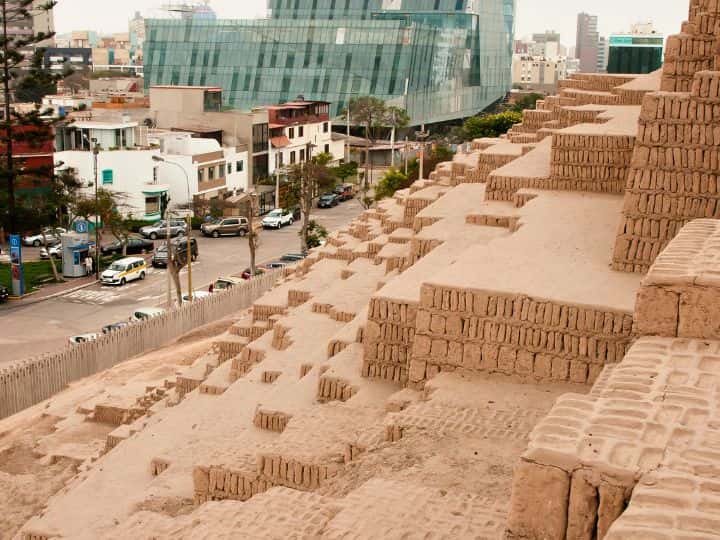
Huaca Pucllana / 12 Days in Peru Itinerary
Embark on guided tours to delve into its rich history and gain fascinating insights into the daily life of its ancient inhabitants.
As twilight descends, the site transforms into an enchanting spectacle, beautifully illuminated at night, creating a captivating contrast with the surrounding contemporary landscape of Miraflores.
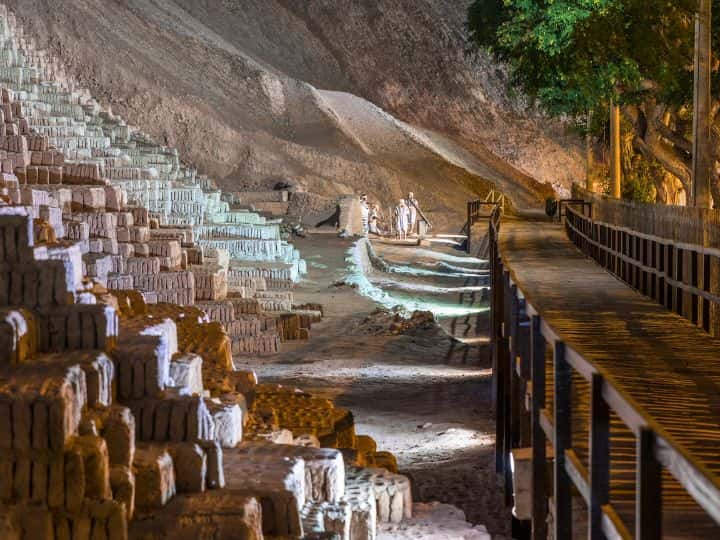
Huaca Pucllana at Night / 12 Days in Peru Itinerary
Day 11 - Day Trip from Lima to Lake Titicaca - The Islands of Uros and Taquile Island
Journey from lima to lake titicaca, the islands of uros.
- Taqulle Island
Journey Back to Lima
Today, you will explore the wonders of Lake Titicaca!
Lake Titicaca is one of Peru’s most enchanting destinations, boasting a collection of unique distinctions that draw travelers from around the world. Perched at a high altitude of 3,812 meters (12,507 feet), it ranks as one of the highest navigable lakes globally , providing an ethereal setting amidst the Andean heights.
But Lake Titicaca is more than just a natural wonder; it holds profound cultural and spiritual significance. To the indigenous people of the Andean region, the lake is mythical, believed to be the birthplace of Inca royalty. Ancient rituals and ceremonies continue to be practiced on its shores, preserving the lake’s sacred legacy.
How to Get to Lake Titicaca from Lima:
- The most convenient and direct option to reach Lake Titicaca is to fly from Lima to Juliaca . Juliaca is the closest major city to Lake Titicaca and serves as the main gateway to the lake’s Peruvian side.
- Several airlines operate flights from Lima’s Jorge Chávez International Airport to Inca Manco Cápac International Airport in Juliaca. The flight duration is approximately 1.5 hours, making it the fastest way to reach the region.
- From Juliaca, it is just a short drive of about 1 hour to reach Puno , the city located on the shores of Lake Titicaca. In Puno, you can easily arrange tours to explore the various islands and attractions of Lake Titicaca, such as the Floating Islands of Uros, Taquile Island, and Amantani Island.
- Here are two tours that include the Islands of Uros and Taquile Island : Uros and Taquile Islands on SpeedBoat and Uros Reed Floating Islands & Taquile Island Titicaca Puno Full Day
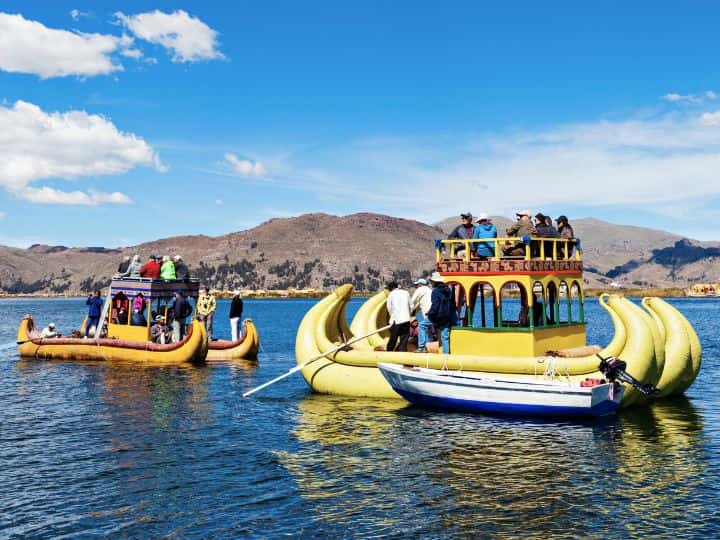
Tours on Lake Titicaca / 12 Days in Peru Itinerary
The Floating Islands of Uros on Lake Titicaca are a fascinating testament to human ingenuity and adaptability.
These man-made islands are constructed entirely from layers of totora reeds , which grow abundantly in the lake’s shallow waters. The totora reeds serve as the foundation, and new layers are added periodically to maintain the island’s structure.
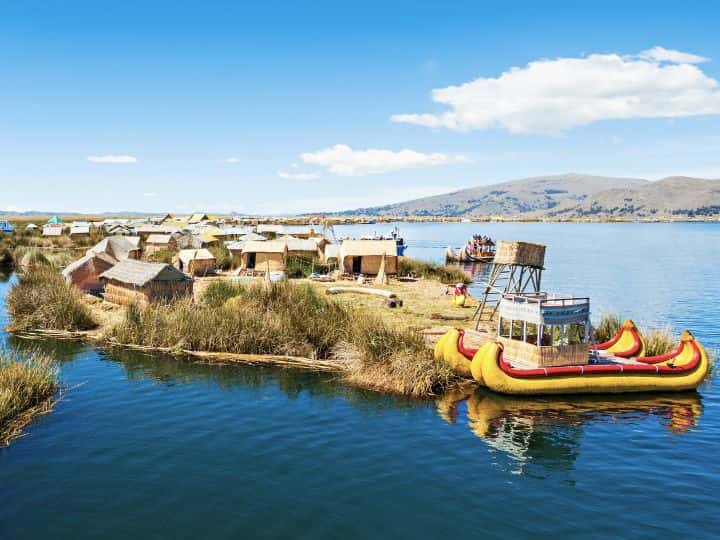
Floating Islands of Uros / 12 Days in Peru Itinerary
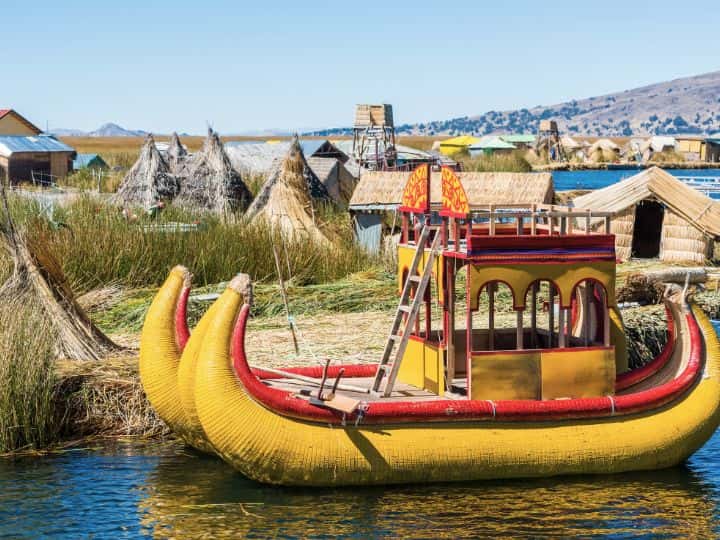
The Uros people , an indigenous community that has inhabited the lake region for centuries, are the architects and custodians of these unique islands. They have mastered the art of creating and sustaining these floating marvels, passing down the knowledge from one generation to the next.
Living on these islands allows the Uros people to be in harmony with the natural environment and the ever-changing water levels of Lake Titicaca. The reeds provide a buoyant foundation, keeping the islands afloat and enabling them to be moved if needed.
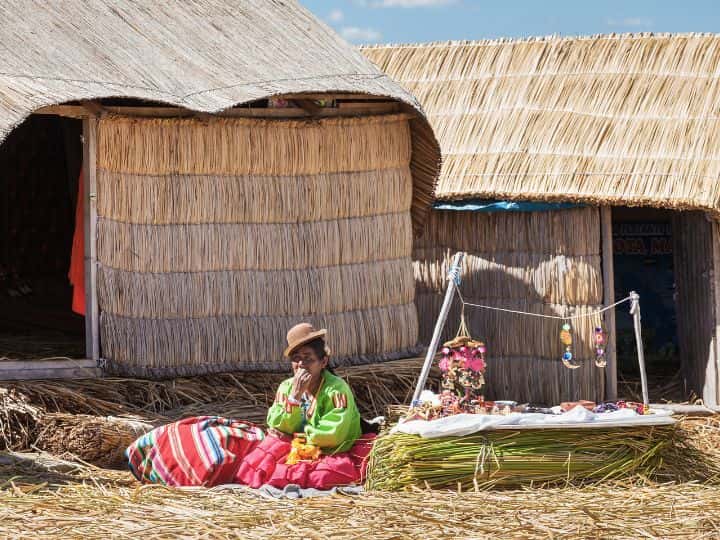
The Uros people’s traditional lifestyle revolves around fishing and handicrafts , activities that are intricately tied to the lake’s resources. Fishing provides sustenance and livelihood for the community, while handicrafts, made from totora reeds, are a means of income and trade with nearby communities.
Visiting the Floating Islands offers a unique opportunity to learn about the Uros people’s rich cultural heritage and way of life. Interact with the locals, who warmly welcome visitors to their floating homes, and gain insight into their customs, traditions, and daily routines.
Taquile Island
Taquile Island , nestled in the serene waters of Lake Titicaca, is a captivating destination that holds a treasure trove of cultural heritage and artistic expression.
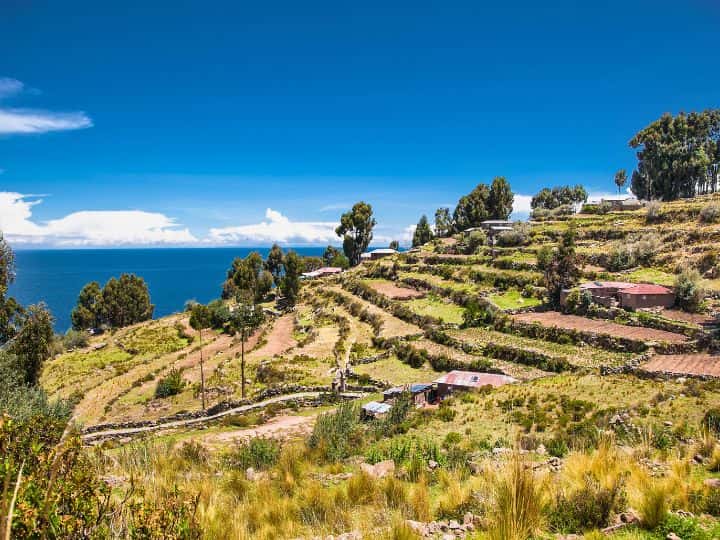
Taquile Island / 12 Days in Peru Itinerary
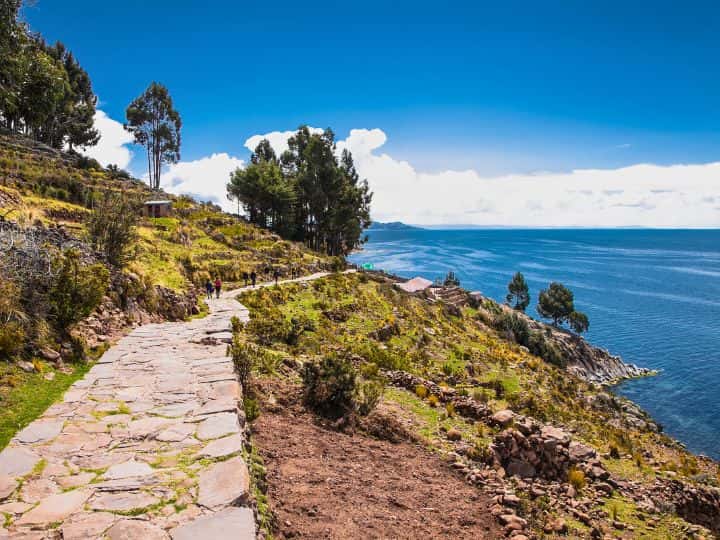
The island is renowned for its distinct textile traditions , which have been cherished and preserved by the local community for generations.
The art of weaving is deeply ingrained in the fabric of Taquile’s society, and it plays a central role in the islanders’ daily lives. Each piece of textile crafted here is a labor of love and a manifestation of the island’s vibrant cultural identity. The weavings are not merely decorations but carry profound meaning, symbolizing the islanders’ history, beliefs, and social hierarchy.
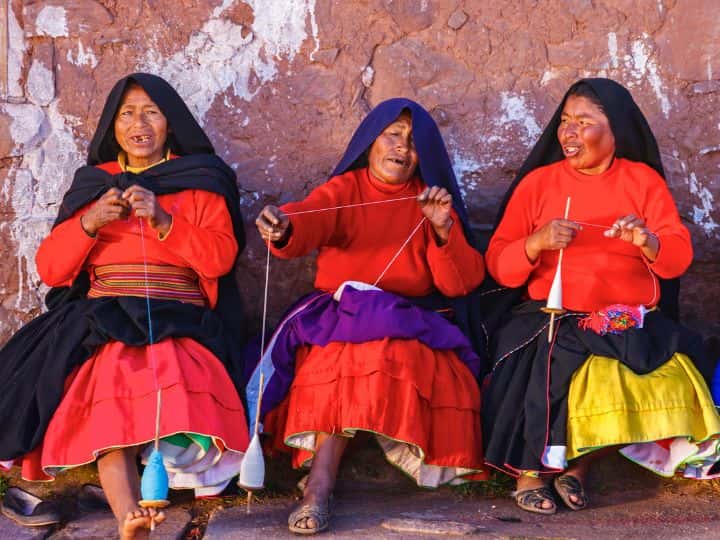
Unique to Taquile Island is the practice of weaving by men , which is an extraordinary and rare tradition in Andean cultures. On the island, men begin learning the art of weaving from a young age and continue throughout their lives. The textiles they create often reflect their marital status, age, and achievements, making the art form an essential aspect of personal and communal expression.
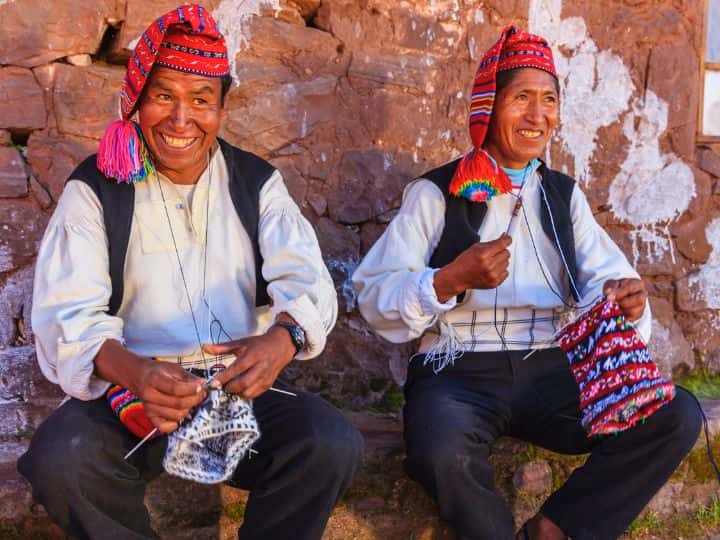
It is time to say goodbye to the enchanting Lake Titicaca and head back to Lima.
A short drive from Puno to Juliaca leads to your flight back to Lima, where the coastal capital awaits.
Reflect on the experiences and memories crafted on the mystical shores of Lake Titicaca, and cherish the cultural encounters and breathtaking landscapes that have left an indelible mark on your heart!
Day 12 - Day Trip from Lima to the Nazca Lines, Chauchilla Cemetery, Antonini Archaeological Museum
- Flight from Lima to Nazca
Nazca Flight Tour
Chauchilla cemetery tour.
- Antonini Archaeological Museum
- Flight Back to Lima
Today, you will embark on an extraordinary adventure from Lima to unravel the mysteries of the Nazca Lines!
This enigmatic UNESCO World Heritage Site, located in the arid desert plains of southern Peru, holds captivating geometric and animal geoglyphs etched into the earth’s surface.
Flight from Lima to Nazca
PRO TIP: Take an early morning flight from Lima to Nazca. The flight usually lasts around 1.5 hours.
From my personal experience, the flights are inexpensive and they are a much better alternative than driving or taking a bus. If you decide to drive, then be prepared to be on the road for at least 6 hours before reaching Nazca.
The Nazca Lines are located in the Nazca Desert, a barren plateau in southern Peru. The desert spans the Pampas de Jumana, an arid region approximately 400 kilometers (250 miles) south of Lima.
The Nazca Lines cover an area of about 450 square kilometers (174 square miles) and are best viewed from the air .
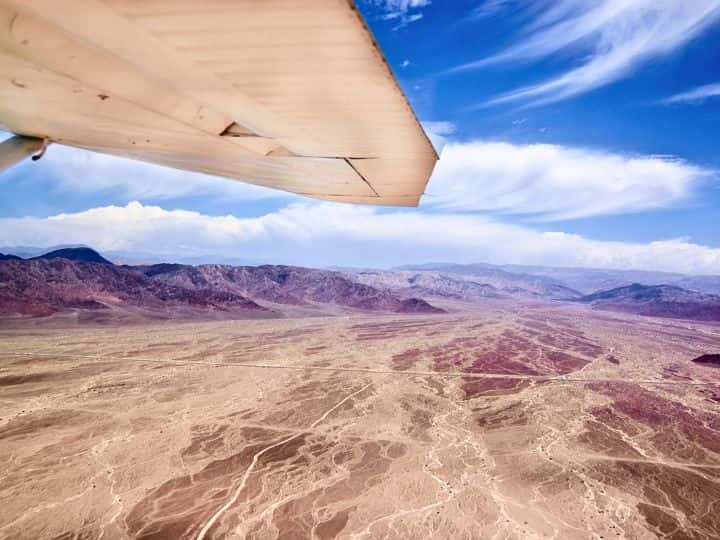
Flight Over Nazca Lines / 12 Days in Peru Itinerary
The Nazca Lines are a series of enormous and intricate geoglyphs . These enigmatic figures include geometric shapes, animals, plants, and human-like forms, with some measuring up to 1,200 feet (370 meters) in length. Their creation dates back to between 500 BCE and 500 CE, during the Nazca culture’s zenith.
The sheer scale and precision of the lines have puzzled archaeologists , as the Nazca people lacked access to aerial perspectives. Theories regarding their purpose range from astronomical calendars and irrigation systems to religious or ceremonial significance. Their preservation over the centuries is attributed to the region’s arid climate, with the designs etched into the desert floor.
To see the Nazca Lines, you need to take a flight over the Nazca Lines . The flight provides a unique perspective that lets you appreciate the large-scale geoglyphs etched into the desert floor.
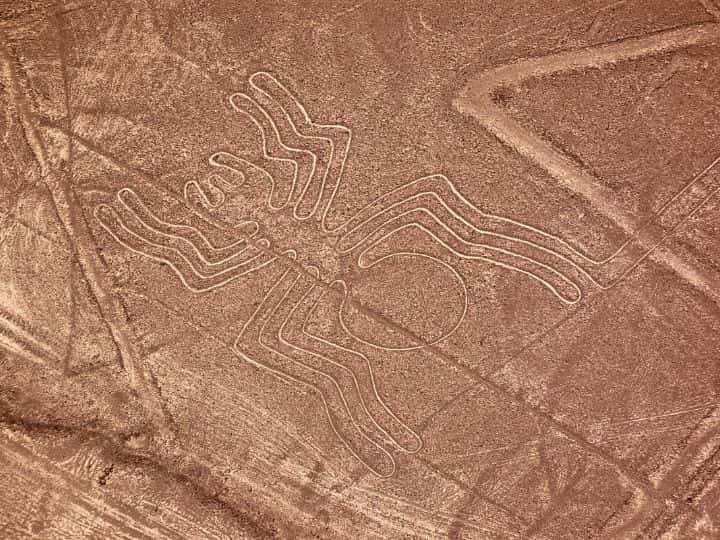
Nazca Lines / 12 Days in Peru Itinerary
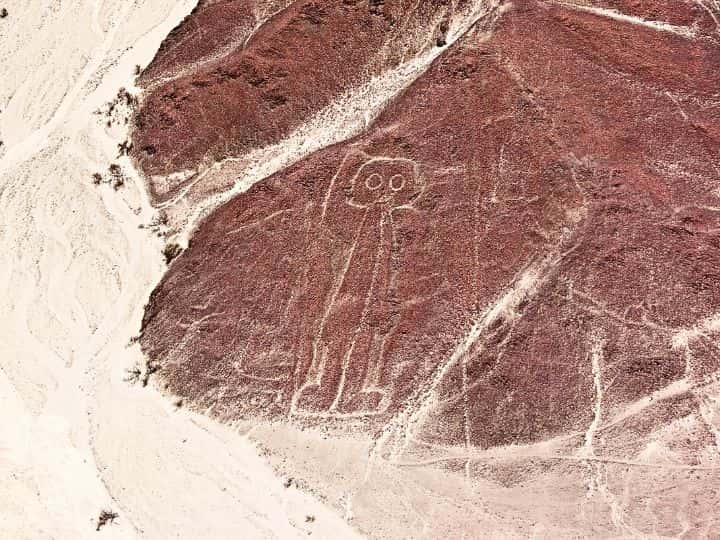
PRO TIP: Check out this 1-hour sightseeing flight over the famous Nazca Lines and over the more recently discovered Palpa Lines: Nasca and Palpa Lines Flight . I enjoyed the long flight and appreciated an excellent commentary!
Next on today’s itinerary are Chauchilla Cemetery and the Antonini Archaeological Museum .
PRO TIP: To visit Chauchilla Cemetery and the Antonini Archaeological Museum, you can take a guided tour from the town of Nazca or hire a private guide/car . The journey to the cemetery and museum involves a short drive through the desert, allowing you to appreciate the arid beauty of the Nazca region.
Chauchilla Cemetery is an extraordinary archaeological site. It is a burial ground that provides a rare and haunting glimpse into the funerary practices of the ancient Nazca civilization . The cemetery dates back over a thousand years and offers a unique opportunity to observe remarkably well-preserved mummies and artifacts from this pre-Inca culture.
Here is what you need to know:
- The main attraction at Chauchilla Cemetery is the collection of mummies that lie in open tombs . These mummies are remarkably well-preserved due to the arid climate of the Nazca Desert. They were buried in a seated position, wrapped in layers of cloth, and adorned with various textiles, jewelry, and pottery.
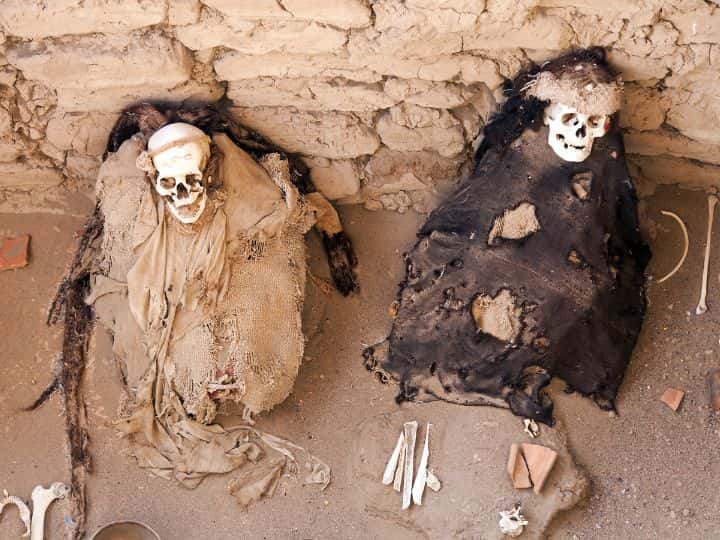
Chauchilla Cemetery / 12 Days in Peru Itinerary
- Alongside the mummies, you will find a rich assortment of grave goods and artifacts. The Nazca people believed in an afterlife and, therefore, buried the deceased with items they might need in the next world. These include pottery vessels, textiles, tools, and personal ornaments. The artifacts offer valuable insights into the culture’s daily life, religious beliefs, and artistic skills.
- Chauchilla Cemetery has survived remarkably well over the centuries due to the extremely dry climate of the region . The dry conditions have protected the mummies and their grave goods, making it a unique site for archaeologists to study and understand ancient burial practices.
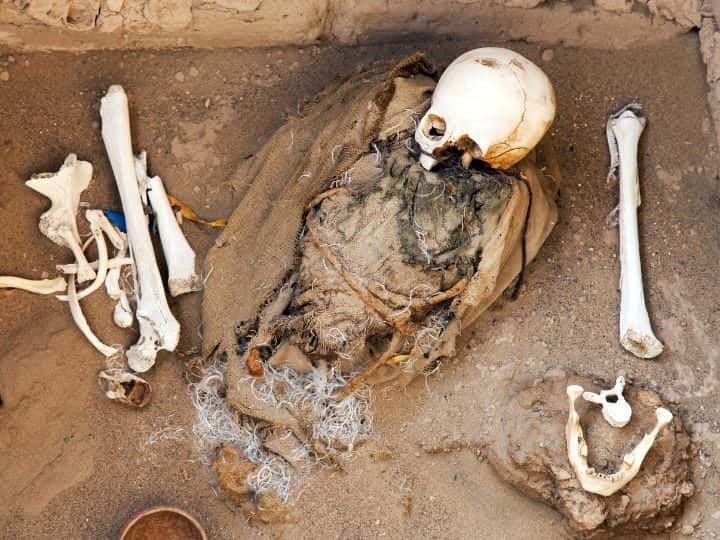
- The site’s exploration has provided valuable information about the Nazca civilization and its burial rituals. Archaeologists have been able to gain insights into the Nazca’s burial traditions, social structures, and belief systems through their discoveries at Chauchilla Cemetery.
The Antonini Archaeological Museum
The Antonini Archaeological Museum , also known as the Museo Antonini, is a fascinating institution located in Nazca. The museum is dedicated to showcasing and preserving the cultural heritage of the Nazca civilization , one of the ancient pre-Inca cultures that thrived in the region:
- Nazca Culture Exhibits: The museum houses an impressive collection of artifacts, ceramics, textiles, and other archaeological finds from the Nazca culture. These exhibits offer visitors a comprehensive understanding of the civilization’s daily life, religious beliefs, artistic expressions, and technological achievements.
- Nazca Pottery and Textiles: One of the highlights of the museum is its display of intricate Nazca pottery and textiles. The Nazca were renowned for their exceptional pottery craftsmanship, and the museum showcases a diverse range of pottery vessels decorated with elaborate designs and motifs. The textiles on display offer insights into the Nazca people’s weaving techniques and patterns.
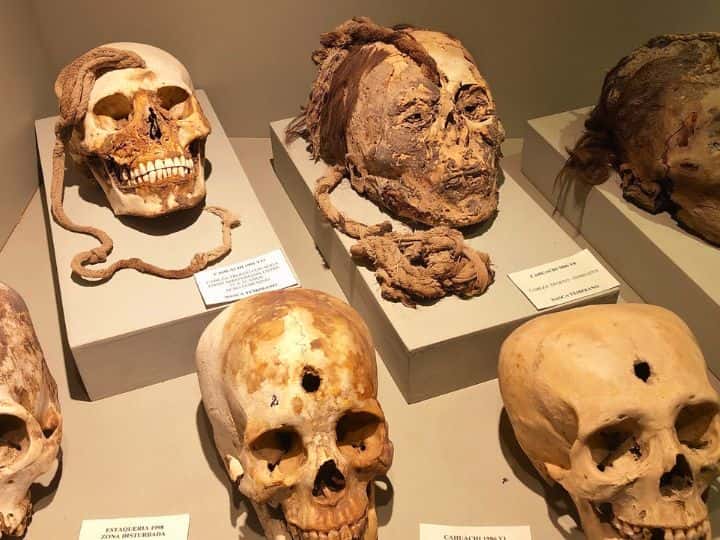
The Antonini Archaeological Museum / 12 Days in Peru Itinerary
- Mummies and Funerary Artifacts: The Antonini Museum also features exhibits related to funerary practices of the Nazca culture. You can find mummy bundles, grave goods, and other artifacts associated with burial rituals. These displays provide valuable insights into how the Nazca people honored their deceased and their beliefs in the afterlife.
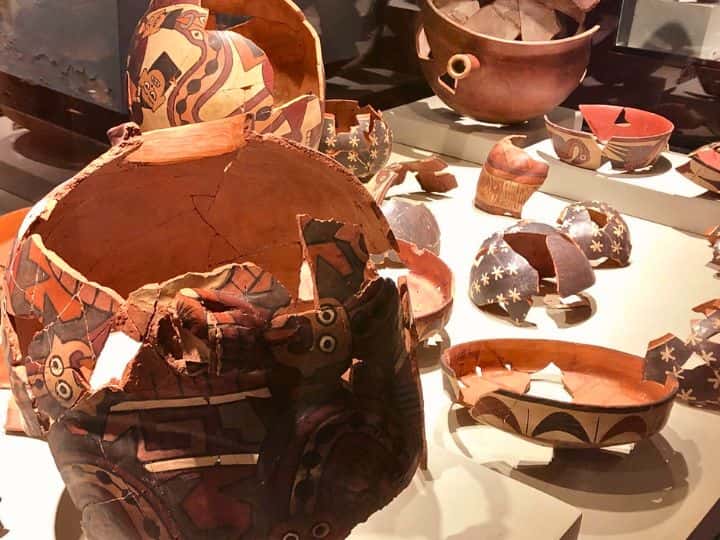
- Aqueducts and Irrigation : The museum highlights the Nazca civilization’s innovative irrigation systems, which allowed them to thrive in the arid desert landscape. The ancient Nazca people constructed sophisticated underground aqueducts that provided water for agricultural purposes, contributing to their ability to cultivate crops and sustain their society.
- Nazca Lines Information: The Antonini Museum also offers information and explanations about the Nazca Lines, a nearby UNESCO World Heritage Site. Visitors can learn about the different geoglyphs, their possible significance, and the ongoing research and conservation efforts dedicated to preserving these ancient wonders.
Intrepid Scout's Tips for 12 Days in Peru Itinerary
- Embarking on a 12-day journey through Peru is an adventure of a lifetime, a tapestry woven with ancient wonders, vibrant cultures, and breathtaking landscapes. From the mystical ruins of Machu Picchu to the enigmatic Nazca Lines, every destination offers a glimpse into the country’s rich heritage.
- Embrace the spirit of exploration as you wander through the colonial streets of Cusco, marvel at the precision of Incan stonework, and immerse yourself in the lively markets brimming with colorful handicrafts. Traverse the sacred valley, discover the mysteries of ancient fortresses, and witness the awe-inspiring beauty of the Amazon rainforest.
- Throughout your travels, savor the flavors of Peruvian cuisine , indulge in the warmth of its people, and cherish the memories of each unique experience. Be open to embracing the unknown and uncovering the hidden gems that make Peru an unforgettable destination.
Bon voyage, and may your journey through Peru be one filled with wonder, learning, and cherished moments that will stay with you forever.
Safe travels and happy exploring!
How to See the Mesmerizing SUNRISE at MACHU PICCHU (9 Steps to Witness the Magic)
How to Reach Machu Picchu Without Hiking (2 Easy Steps!)
Hiking to MACHU PICCHU from AGUAS CALIENTES in 4 Easy Steps
7 Fun and Cool THINGS to DO in AGUAS CALIENTES (Besides Machu Picchu)
3-day adventure in the amazon, peru: discover the untamed rainforest.
Read All the Posts About Peru in:
Peru Travel Guide
Read All the Posts About South America in:
South America Travel Guide
Did You Find This Useful?
Why not save 12 days in peru itinerary to your pinterest board.
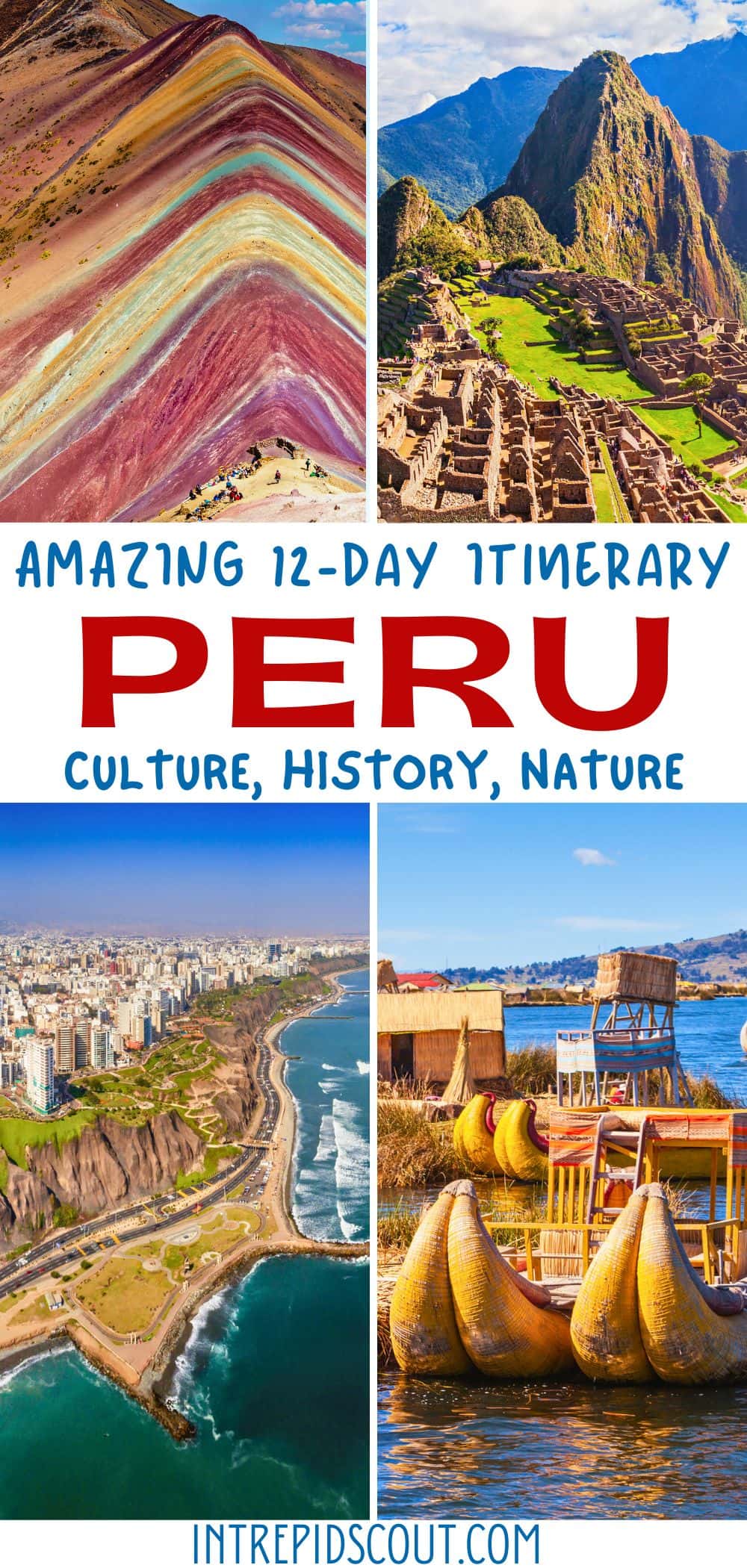
Now, It Is Your Turn, I Would Like to Hear Back from You!
Are you planning a trip to Peru?
Please let me know! Drop me a quick comment right below!
Click on any of the images below to get inspired and to help you with the planning process for your trip to Peru!
- alert('URL copied to clipboard.')).catch(err => console.error('Unable to copy to clipboard.', err))">
Share via Email
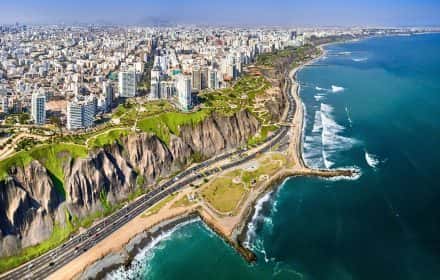
22 Expert Lima Tips for First-Time Visitors (Unlock Lima's Treasures)
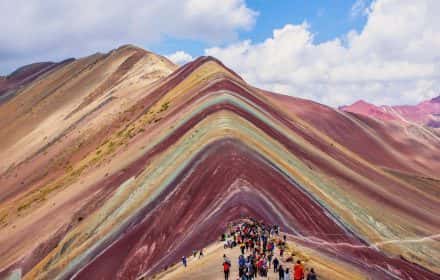
12 Unforgettable Experiences and Activities in Cusco (Unlock the Magic of Inca's Capital)
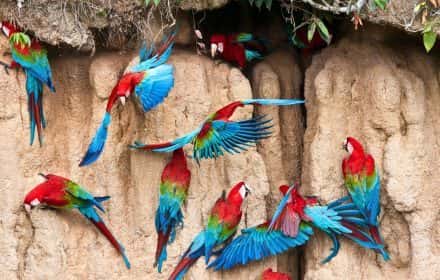
@intrepid.scout
Leave an answer Cancel reply
Your email address will not be published. Required fields are marked *
The company processes your data to facilitate the publication and management of comments. You can exercise your rights of access, rectification, deletion and objection, among others, according to our Privacy policy .
Coming soon…
We’re currently traveling Mexico.

via Booking.com
7 Days in Peru: Complete Travel Itinerary and Guide
Home › Destinations › South America › Peru
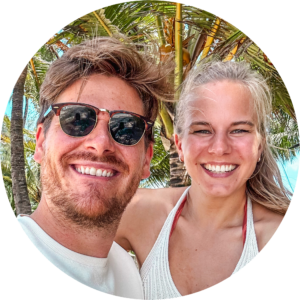
Written by Laura & Jens , two full-time travel bloggers on a world trip. Here to inspire you with our stories.
When we first visited South America, we didn’t know what to expect. We’ve spent most of our vacation time traveling Asia and Africa and never really had this beautiful continent on our radar.
As we took a year-long leave to travel the world, we put South America at the top of our list. Little did we know about the beautiful countries in the continent that host some of the highest mountains, largest lakes, and most beautiful lagoons.
And to our surprise, we found all of South America’s beauty in Peru.
With our 7-day Peru Itinerary, we want to ease your travel plans, convince you to travel to Peru, and show you the beauty of this incredibly diverse country.
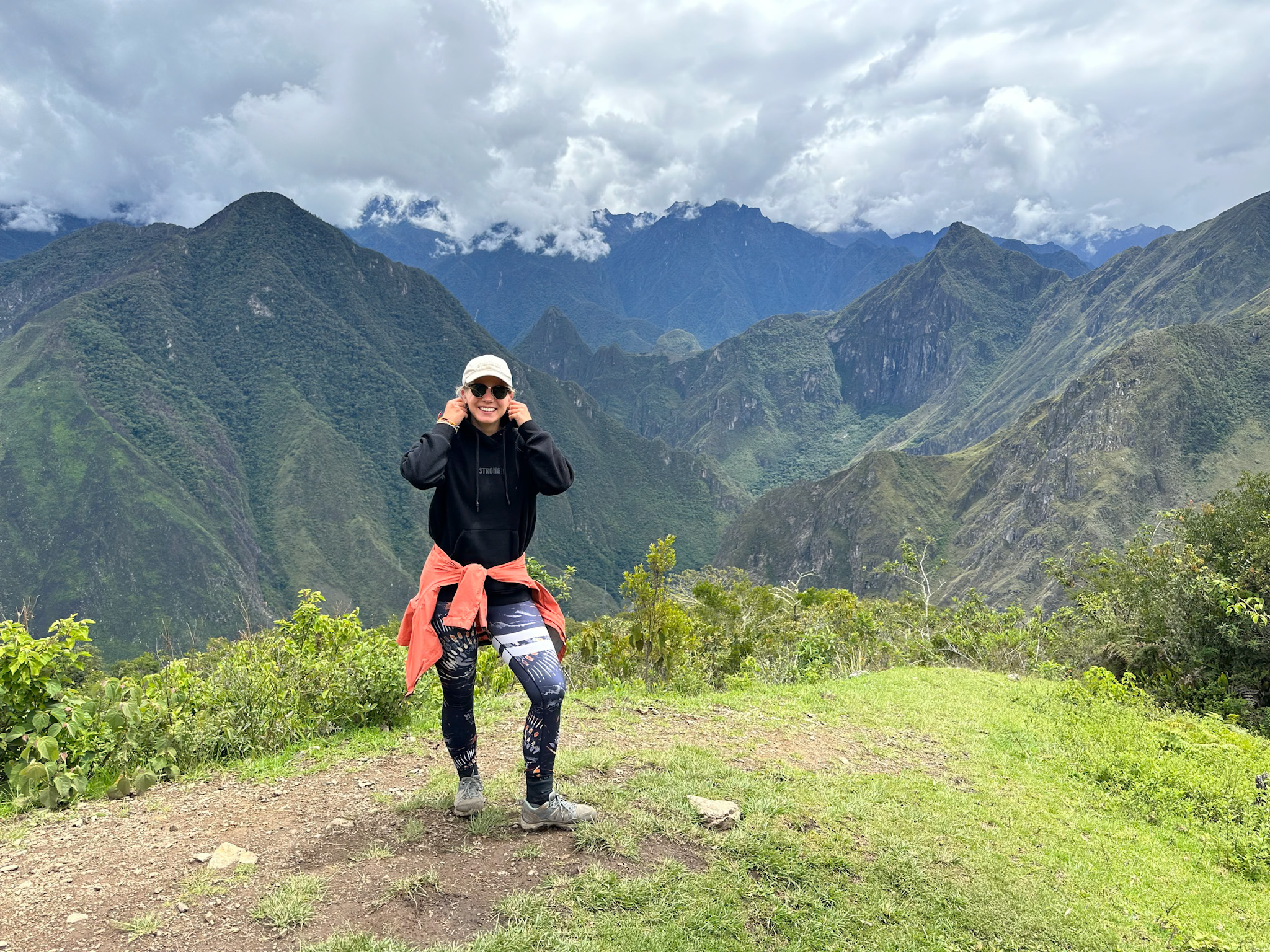
Peru Itinerary Overview
In Peru, there a a ton of things to do and see. We read a lot of unrealistic, squeezed, and overambitious itineraries when we were crafting our 1-week Peru Itinerary.
So rightfully, you may ask if 7 days in Peru is enough. And to be honest, we think that 2 weeks in Peru is the ideal time to explore the country’s whole beauty.
But there are people like us (before we quit our busy corporate jobs), that don’t have the time to spend a month on vacation. And for you, we’ve created an honest, realistic, and enjoyable 7-day Peru itinerary.
We traveled to Peru for 2 months and explored the country inside out. So if you have a little more than a week for Peru, make sure to also check out our 2 and 3-week Peru itineraries.
Peru Itinerary Map
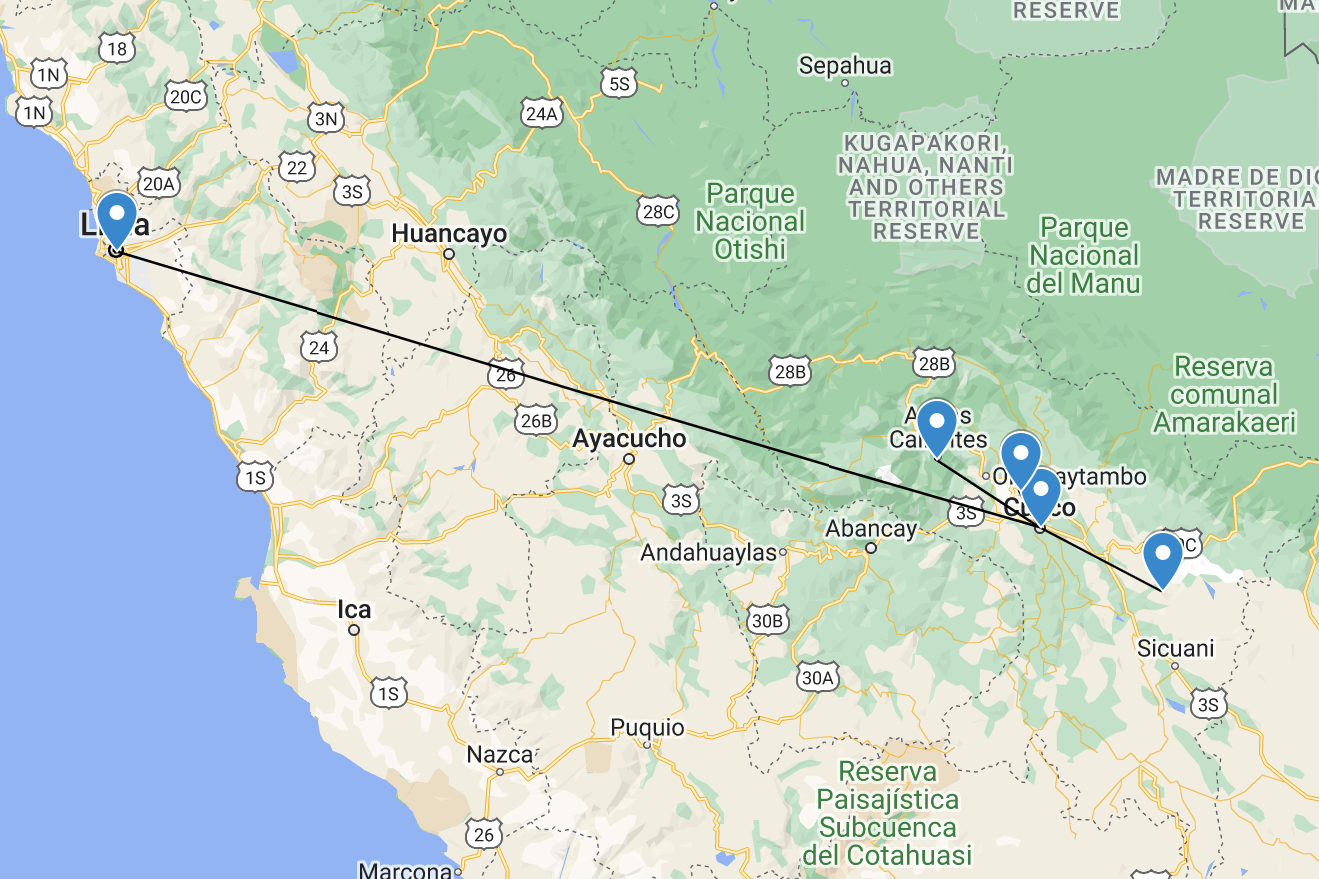
Sacred Valley
Machu Piccu
Rainbow Mountains
7 Days in Peru Itinerary
It’s impossible to see everything Peru has to offer in a single week. So, it’s clear that a 7-day Peru itinerary comes with making some compromises.
In the following itinerary, we made sure to include most of the Peruvian highlights and must-see spots, so that you get the most out of your limited stay.
Planning to visit Peru?
We made trip planning easier for you! Get our Notion Trip Planner for Peru.
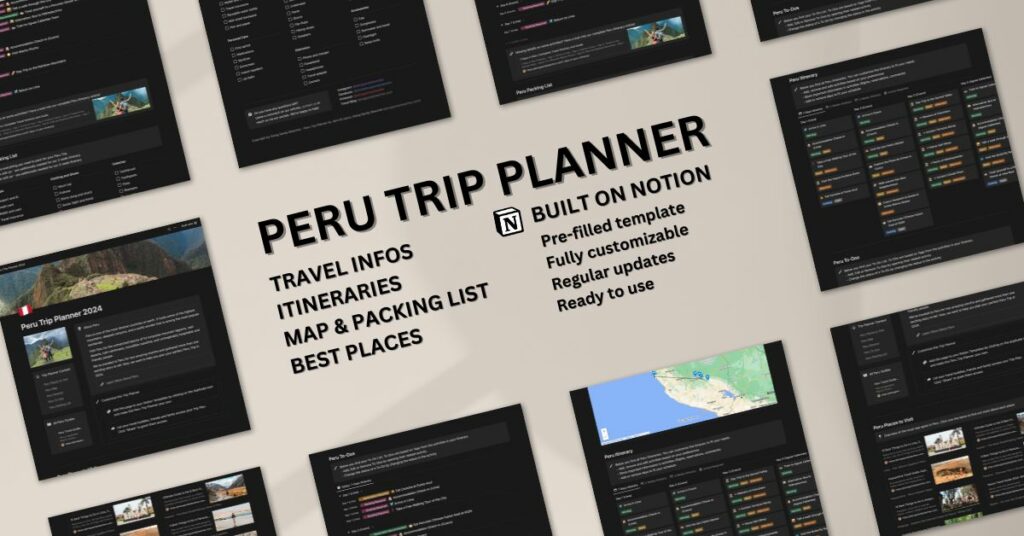
Day 1: Explore Peru's capital city Lima
Welcome to Peru, and welcome to what was by far one of the most diverse countries we’ve ever visited – in the world.
In Peru, you’ll not only find the world wonder of Machu Picchu but also turquoise lagoons, rainbow-colored mountains, and fluffy Lamas.
Your Peru itinerary starts in Lima, where there is an international airport with flights arriving from all over the world. Use your first and last day of your travels to explore the capital city of Peru.
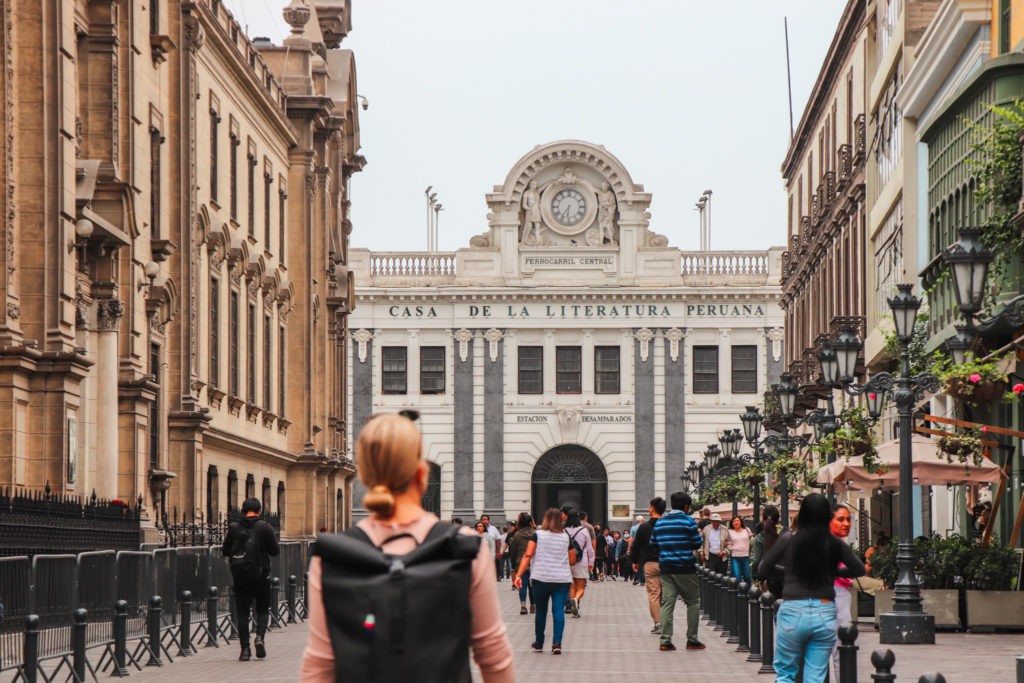
Best Things to Do in Lima
There are plenty of things to do in Lima. You can easily spend 3 days in Lima, but as you’re limited in time, let’s focus on the best of the best.
Register for a Free Walking tour in the morning or afternoon to explore Lima’s beautiful historic center, the Plaza Major, and China Town.
Plan to visit the Barranco neighborhood or the Huaca Pucllana ruins for the afternoon and spend the evening eating a delicious “Ceviche” in one of the many local restaurants.
Read all of the best things to do in Lima, in our Lima Travel Guide.
Relevant Reading
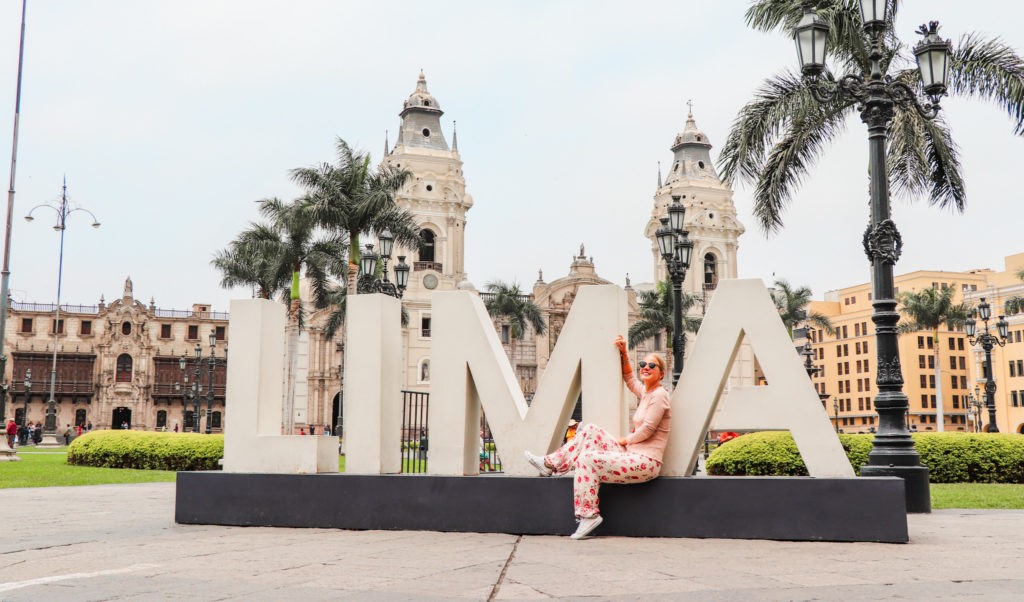
Day 2: Visit Cusco, Peru's ancient Incan capital
For your second day, take a flight to Cusco. Cusco is a beautiful city east of Peru and was once the capital city of the Incas.
The city lies at a breathtaking 3,400 meters (11,155 feet) above sea level, so take it easy, as you explore all of the best things Cusco has to offer.
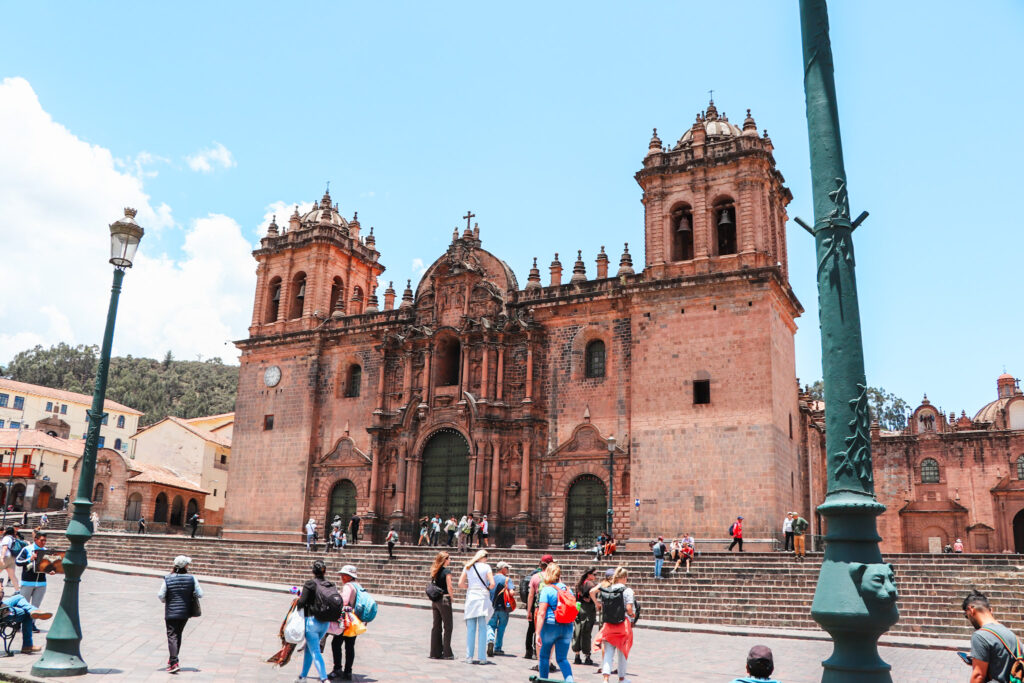
Best Things to Do in Cusco
To acclimatize to the new heights, get yourself some Coca candies and Coca tea at one of the local shops at the Plaza de Armas, and treat yourself with a rich breakfast.
Don’t plan too much for the day. Walk through the cobblestone streets of the San Blas neighborhood, visit the San Pedro market, and step by the Chocolate Museum near the main square.
If you’re not feeling any altitude sickness, hike to the Christ statue to get an unmatched view over the Cusco downtown.
Read all of the best things to do in Cusco, in our Cusco Travel Guide.
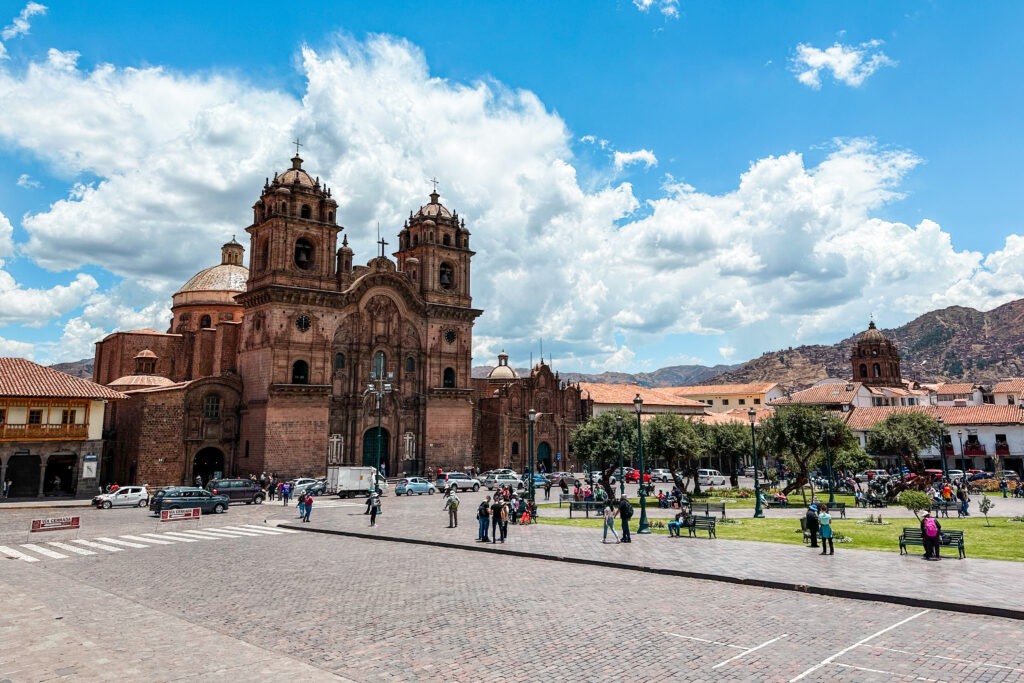
Day 3: Take a trip to the Sacred Valley
It’s adventure time. Plan a day trip to the Sacred Valley for your second day in Cusco and explore the ruins of Ollantaytambo, a once-thriving Incan fortress, Pisac, an ancient Inca citadel perched atop a hill, and the Maras Moray agricultural terraces, where the Incas ingeniously experimented with cultivating crops.
As part of the tour, you’ll also get to see the Mara Salt Mines and learn more about how salt is mined and processed by the locals.

Day 4-5: Discover Machu Picchu
Head to the small village Aguas Calientes on your next day. Aguas Calientes is a little outpost at the foot of Machu Picchu.
There are several way to get to Aguas Calientes. The most convenient is taking a train from Ollantaytambo. To get to Ollantaytambo, you can simply drop from the Sacred Valley tour after visiting the Ollantaytambo ruins or -alternatively- take a bus ride from Cusco the next day.

Spend your first night in Aguas Calientes and visit Machu Picchu early next morning. After visiting Machu Picchu, get on the train and bus back to Cusco.
Read everything you need to know about visiting Machu Picchu in our complete Machu Picchu guide.
Day 6: Hike the Rainbow Mountains
Peru’s Rainbow Mountains, also known as Vinicunca or Montana de Siete Colores, are almost as popular as Machu Picchu and are a natural wonder in itself.
Their otherworldly colors, ranging from red, and green to turquoise and gold are absolutely incredible and a definite must-see when in Peru.
Don’t miss out on visiting the Red Valley. Most tour providers allow you to take a little detour to explore the nearby Red Valley – it’s definitely worth it!
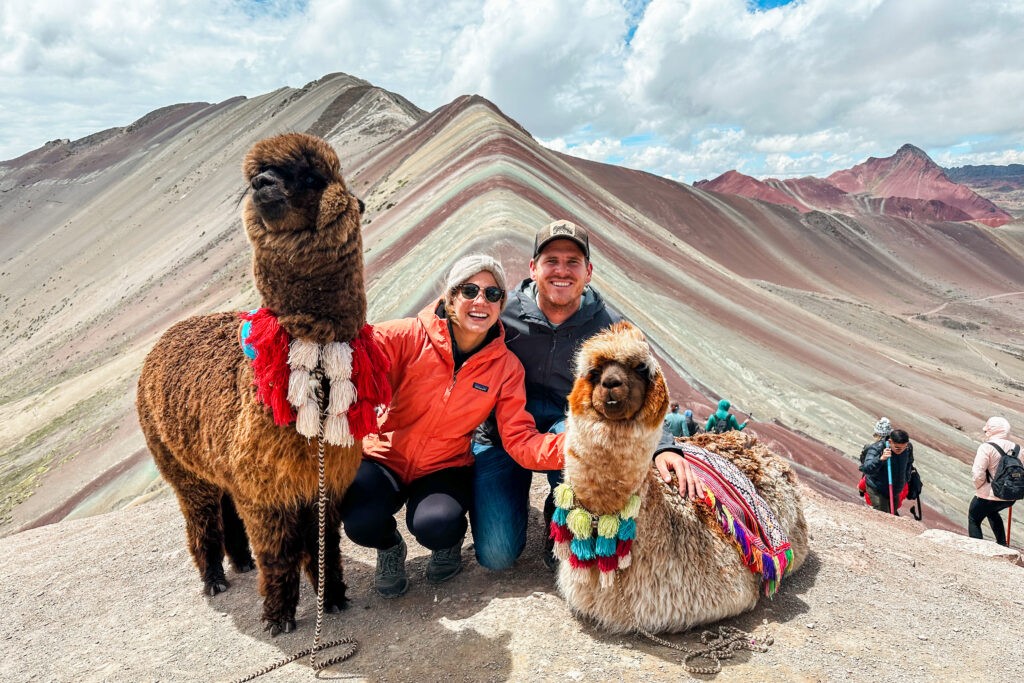
Day 7: Say Goodbye to beautiful Peru
All good things come to an end. Fly back to Lima with one of the morning flights from Cusco and spend the evening with a delicious meal in Lima.
When you’re ready, leave the country with a lot of unforgettable memories.
Did you know that Lima is famous for its cuisine? We didn’t! But Lima has some of the best restaurants in the world. So if you have reserved yourself a table at The Central, lucky you, as you will eat in the world’s best restaurant (as of 2023).
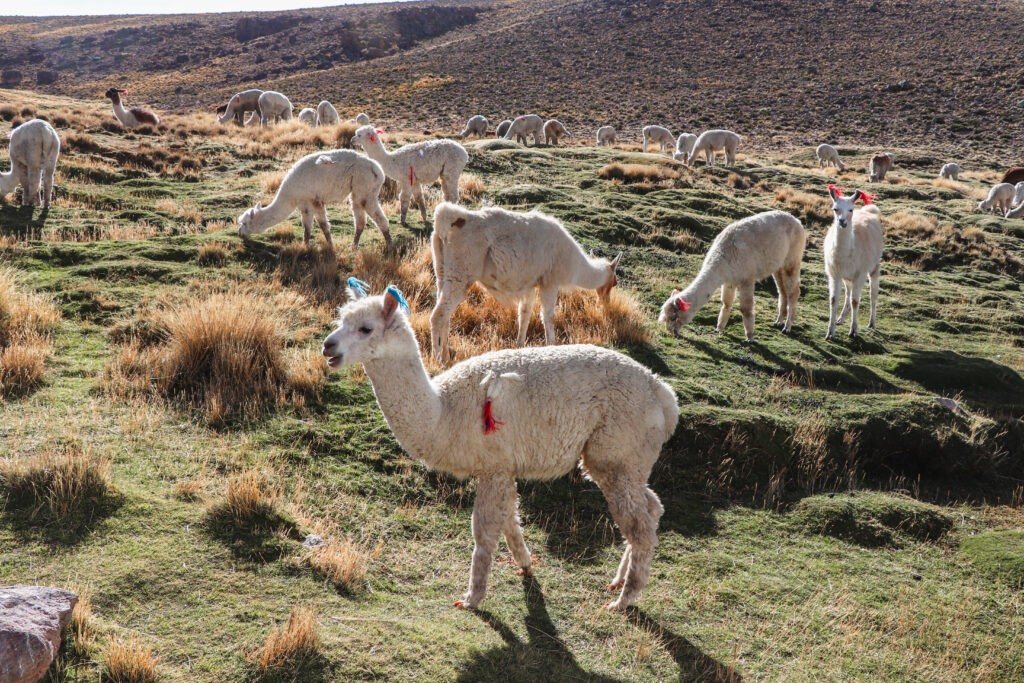
Best time to visit Peru
Most people travel to Peru during the dry season between May and September. It’s also the best time to visit Peru, as the weather conditions are ideal for hikes in the Andes mountain range.
We’d recommend traveling to Peru during the shoulder seasons, such as late September to October or April to early May.
Peru has 28 of the 32 world climates in one country, so check our in-depth guides to find out the best time to travel to a specific Peruvian destination.
Travel Time
Safety in Peru
Peru is generally safe to visit. Particularly in major tourist hubs, such as Lima, Cusco, Arequipa, and Huacachina, safety has drastically improved over the last decade.
However, there are still safety precautions that should be taken and areas that should be avoided. Don’t walk empty and dark streets at night, don’t expose your valuables, and avoid any slums or suburban areas.
We personally have never felt unsafe during our 2-month long trip. We read so many horror stories before we went to Peru, but the country we actually found was a truly welcoming and heartwarming one.
For more information about the safety of a specific city, have a look at our in-depth Peru articles.
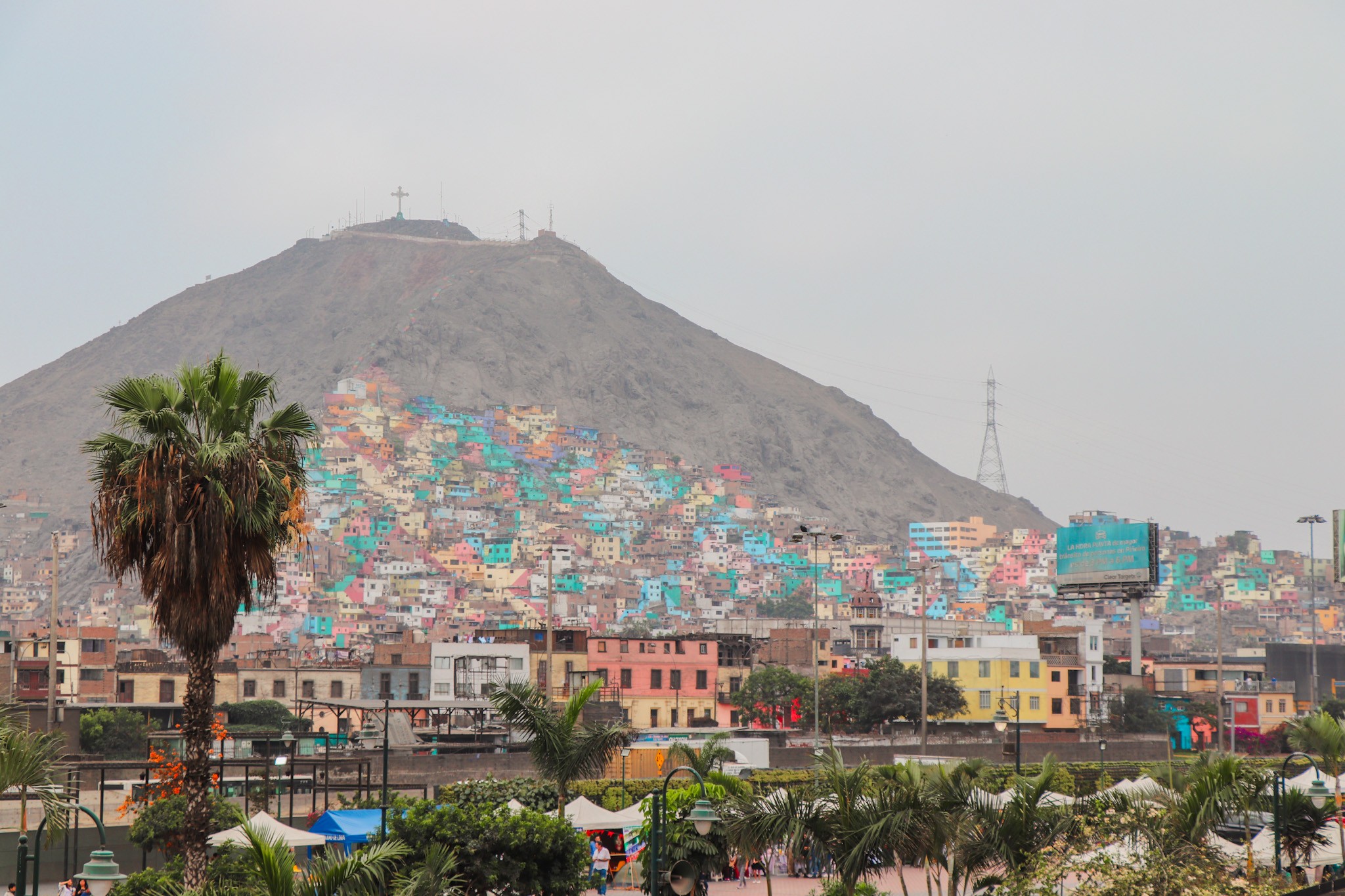
How to get around Peru
If you are flying into Peru, chances are that you will land in the capital of Lima. Lima has a well-connected airport nationally and internationally, which makes it convenient to fly to most major cities within the country.
You can also choose to travel by bus. Even though some distances are pretty long, bus rides are very comfortable and affordable, which makes it a convenient option for budget-conscious travelers.
For this 1-week itinerary, you will need to take the plane from Lima to Cusco and back to save some time.
In case you have more than a week to spend in Peru, have a look at our 2- and 3-week Peru itinerary. In those, we talk about all the good things that you can see on your way from Lima to Cusco.
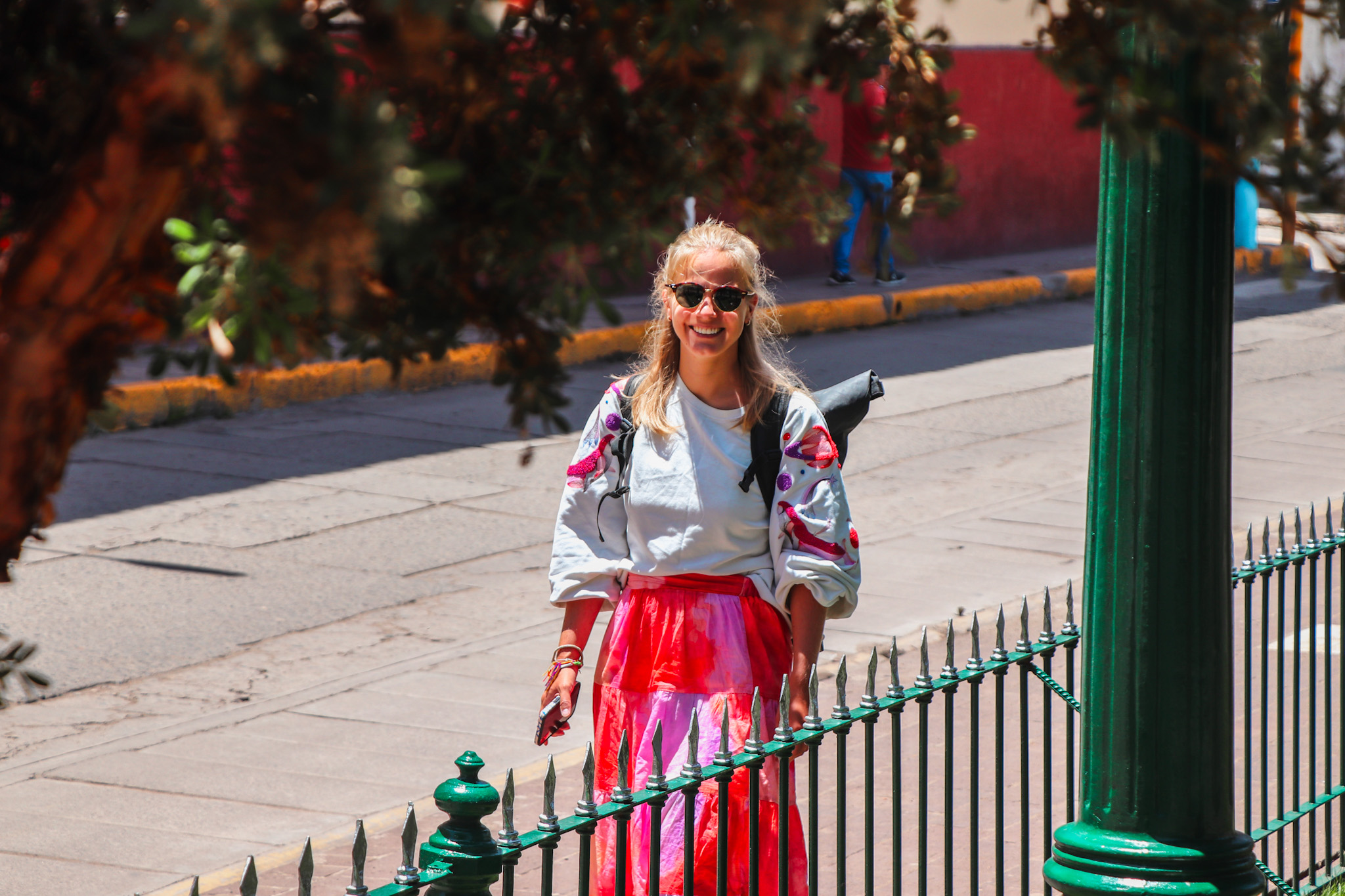
This post includes affiliate links. We earn a small commission if you make a purchase through our links. It doesn’t cost you more, but helps us to keep the blog up and running.
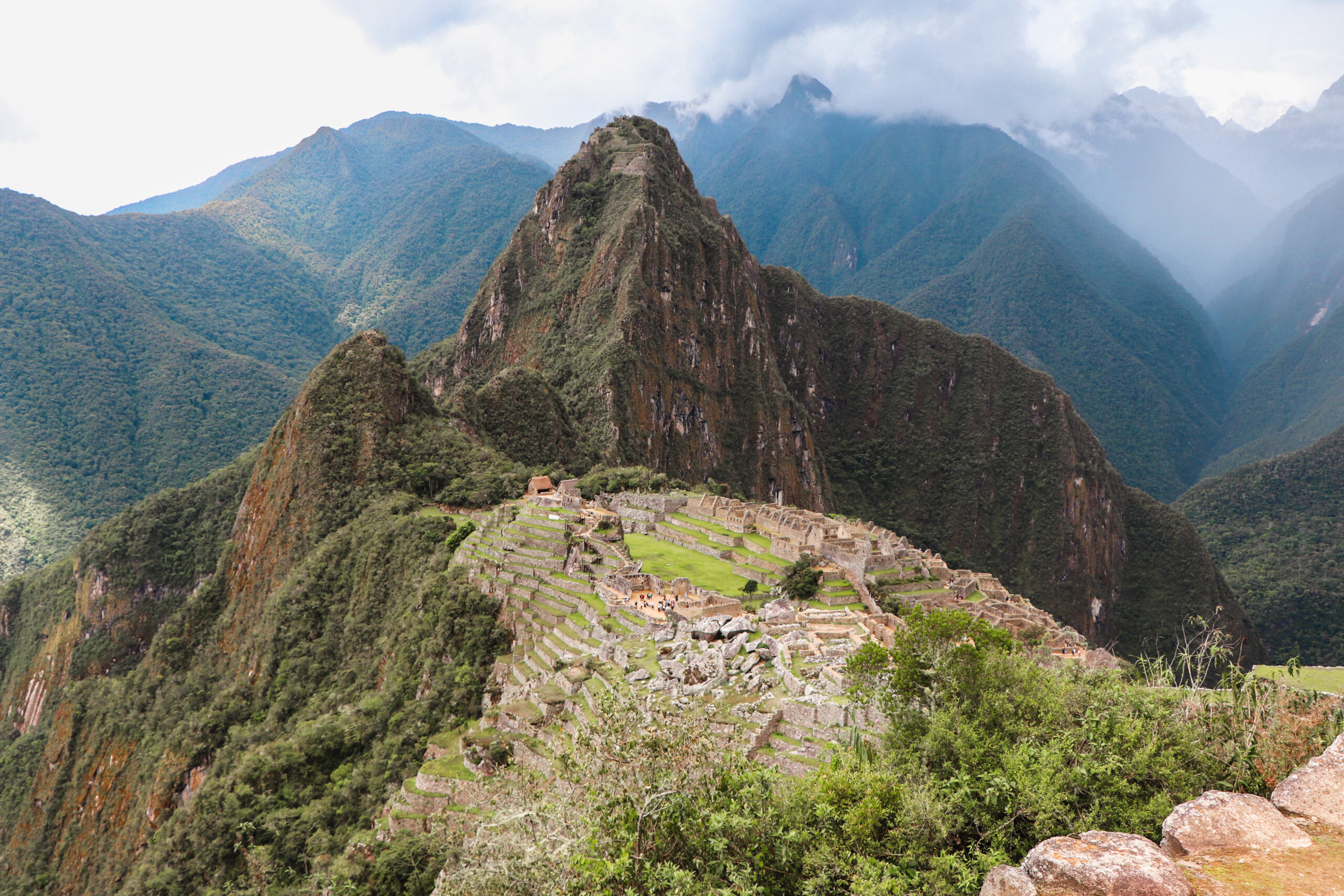
Looking for more Peru articles?
You will find plenty more Guides, Travel Tips and Stories in our Peru articles section.
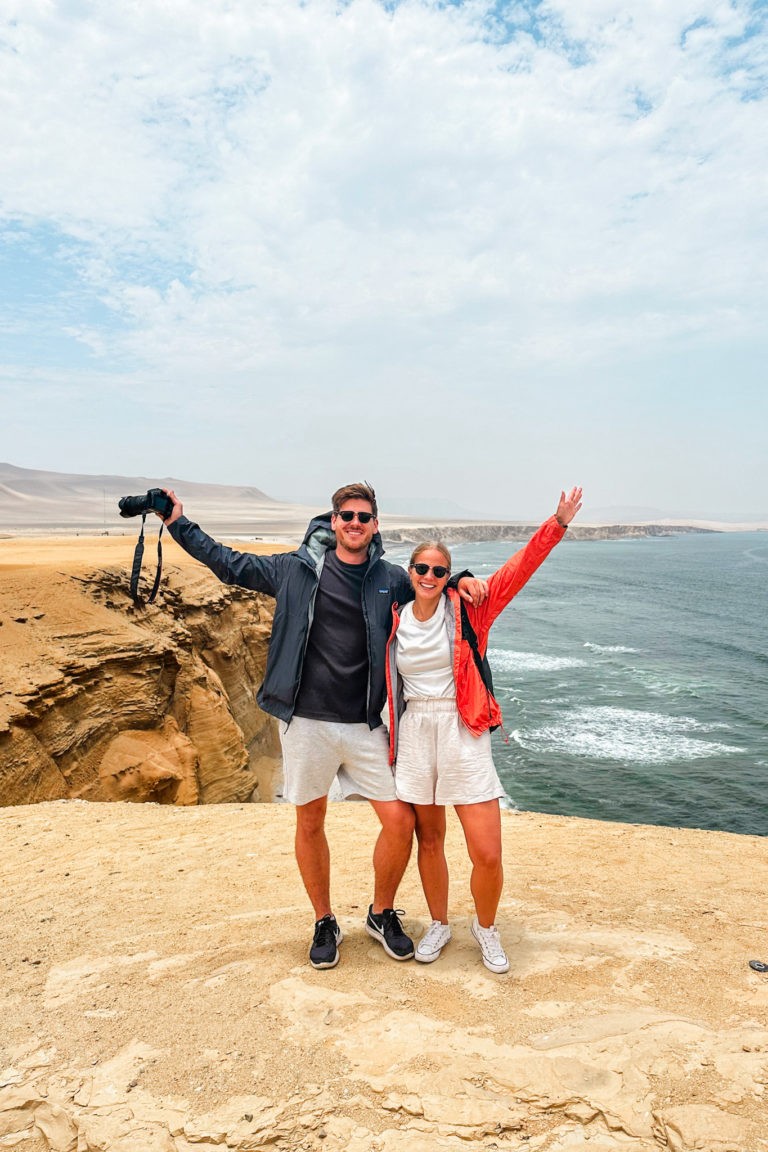
We’re Laura and Jens , two curious adventurers travelling the world full-time. Through our travel blog, we want to inspire and guide you to embark on your own unforgettable journey.
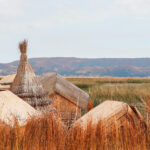
Comments are moderated. By submitting a comment you agree to our privacy policy . Your email will not be published.
Search the Site

- Accommodation
The Ultimate Itinerary for Peru: Perfect Planning Guide for the land of Incas
Tall mountains are topped with undulating grass. The road stretches out in front of my eyes. Beyond it, I can see a glacier peeking through mountain tops and then there is that sky, that snatches my breath every single time I look at it. Ancient Peruvians worshipped Pachamama – (Mother Earth). Now I know why….
Peru has fascinated travellers for centuries. It has been a constant source of inspiration to culture connoisseurs, historians, artists and travellers alike. Join us on this trip of a lifetime through the heartland of Peru on a vacation where you will see the desert, spend lazy evenings in vineyards, drool over Incan ruins, witness wonders of the world, crumbling villages, and the mighty Amazon Rainforest.
Ever since we got back, many of you have asked us to divulge information about our itinerary for Peru. Well, we finally have a guide for you to plan the perfect trip to Peru. Adjust the days according to the time you have at hand , because it is easy to spend months in Peru. Choose hotels according to your budget – Peru has everything from basic backpacker accommodation to luxurious boutique hotels. But don’t waver when it comes to the destination – Peru is special in so many ways and you must experience it for yourself. So go, go, go 🙂

Peru Itinerary – Days 1&2: Fly into Lima
There is an airport in Cusco but chances are you will fly into Peru’s busy capital, Lima. Lima is a large and sprawling city with unsafe pockets. Take adequate precaution and book a hotel in a safe area. Miraflores, Lima’s upscale suburb is the hub of most tourist accommodation in the city. Expect beaches, flower-lined promenades, parks, and shopping centres here.
If you want to escape the sanitised safety of Miraflores, Lima’s bohemian district Barranco is the answer. It is Lima’s response to London’s Brick Lane or Berlin’s Kreuzberg . Here colourful houses populate streets laden with bougainvillea. Quirky street art adorns walls, hole-in-the-wall eateries call out to tourists, and locals go about their daily lives. Barranco is home to a burgeoning community of artists and musicians and it’s possible to discover a number of great acts at small independent bars here. We loved it!
Accommodation in Lima:
We stayed at JW Marriott, Lima. It is centrally located opposite the beach and a shopping centre in Miraflores. As is the case with most large cities in Peru, Lima offers a variety of accommodation for everyone from backpackers and budget travellers to luxury travellers. There is no shortage of options, whatever your budget. We suggest choosing any hotel or hostel in Miraflores for your days in Lima.
Top tips for Lima:
- There’s no better place than Lima to try Peru’s national dish Ceviche that consists of cured raw fish, served with red onions – best with a glass of chilled beer.
- Read about places before visiting them in Lima. This might seem surprising coming from intrepid travellers like us but safety is a concern in Lima. It’s best to exercise caution when you leave districts that are traditionally considered safe. Steer clear of shanty towns to avoid getting in trouble. We always rely on information provided by locals.
- Ask your hotel to call a cab for you or prebook transfers with a known company. We found a local cab company called Taxi Datum on Tripadvisor forums (always the best place to look for recommendations!) and used their services extensively while we were in Lima. Their website is http://taxidatum.com/ . We even booked our airport transfer in Lima with them before we boarded our flight from London – their service was reliable and safe.
- If you decide to hang around in Lima for more than 2 days, visit the Temple of Pahcacamac. The Incan site is about 40 kilometres from Lima and is shrouded in mystery. Most cab drivers will take you to the site and wait there for you. Make sure you settle on a rate beforehand.
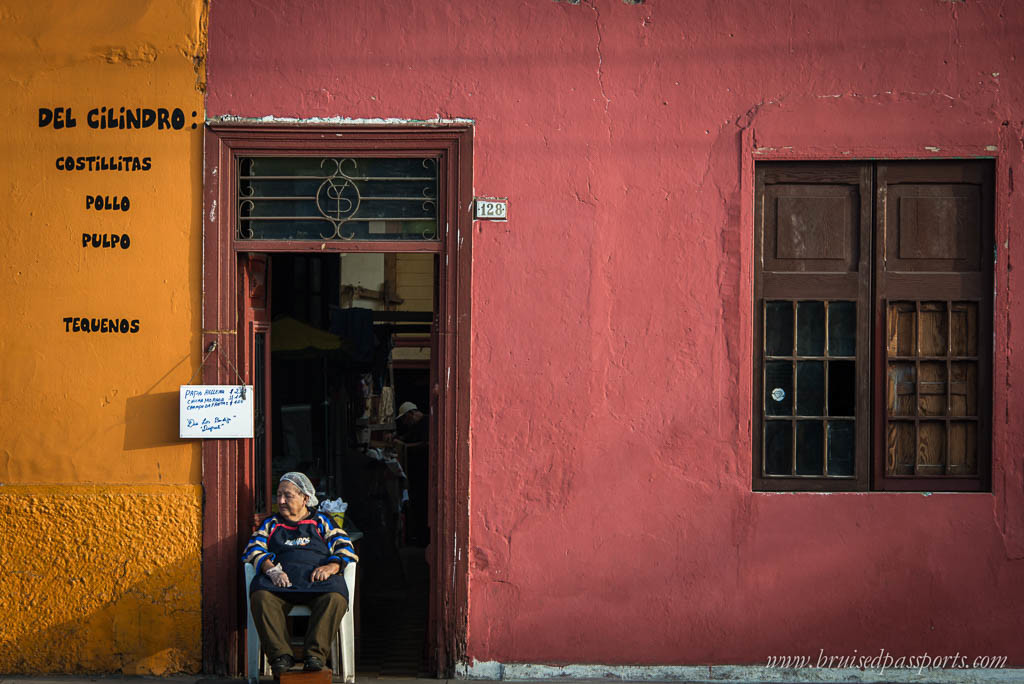
Days 3-5: Marvel at Ica, Nazca, and Huacachina
On our third day in Peru, we took a short 4 hour bus ride from Lima to Ica. The landscape begins to change almost as soon as the bus leaves Lima. Buildings give way to Incan temples and shopping centres give way to barren deserts. The arid landscape in this part of the country seems shrouded in mystery. This feeling only amplifies as one goes deeper into the Peruvian hinterland. We passed colonial houses that secrete tales of slavery and offer a window into Peru’s dark past.
I remember feeling very excited as the bus pulled into Ica. Ica is the gateway to the mighty Nazca Lines , something I’d always dreamt of seeing. Hundreds of massive lines shaped like animals, birds, geometric figures, pagan gods, and even an astronaut, extend for countless miles throughout the remote Peruvian desert. These figures are so huge that they can only be seen from an aircraft. They were carved in the desert by the Nazca people centuries ago but refuse to wither or change with time. Researchers are yet to figure out whether the enigmatic designs are indicative of some kind of pagan ritual, an ancient astronomical calendar, or alien activity. It’s been weeks since we visited Nazca but we’re still completely dumbstruck at the sheer size of these strange remains of an ancient civilisation left behind in the desert sand.
Our skirmish with the desert did not end there. We visited Huacachina on a local’s recommendation. It is a tiny village which is literally an oasis in the middle of gigantic sand-dunes in the Peruvian desert. It’s possible to spend the entire day slipping and sliding down sand-dunes on sand boards or riding over the dunes in a buggy. Such fun 🙂
Accommodation in Ica
You can choose any hotel in Ica that offers transfers to Huacachina and Nazca. We stayed at Vinas Queirolo , a unique hotel, situated amidst 800 acres of Peruvian vineyards. It receives only a handful of international tourists every year, so it’s truly off-the-beaten path. We loved spending our evenings sipping on wine as we watched the sun go down.
If you don’t mind moving on a daily basis, you could spend one night each in Ica, Huacachina, and Nazca too.
Top tips for Ica
- Read reviews before you book bus tickets for yourself. If the deal sounds too good to be true, it probably is. We used the bus company, Peru Hop , for most of our bus journeys in Peru. They offer a flexible hop-on, hop-off service in one ticket, which is perfect if you don’t know how long you want to stay in each city. Buses were comfortable, punctual, and had an english-speaking guide. Passes start at $119/£80.
- We pre-booked our flight to the Nazca Lines with www.tinggly.com . But it is possible to book the flight on getting to Ica as well. Just ask around and bargain before you book your flight.
- Skip the flight over the Nazca lines if you suffer from the slightest bit of claustrophobia or vertigo. The abrupt twists and turns of the tiny aircraft are bound to leave you nauseous. If you do go, DO NOT have a heavy meal before the flight 😉
- Try to opt for the dune buggy ride that starts at 4 pm in Huacachina. You will be at the top of sand dunes in time for sunset and the sight of the sun setting in Huacachina is nothing short of spectacular 🙂
- You might want to take a change of clothes to Huacachina because you will be covered with a thick layer of desert sand if you choose to go sandboarding 🙂
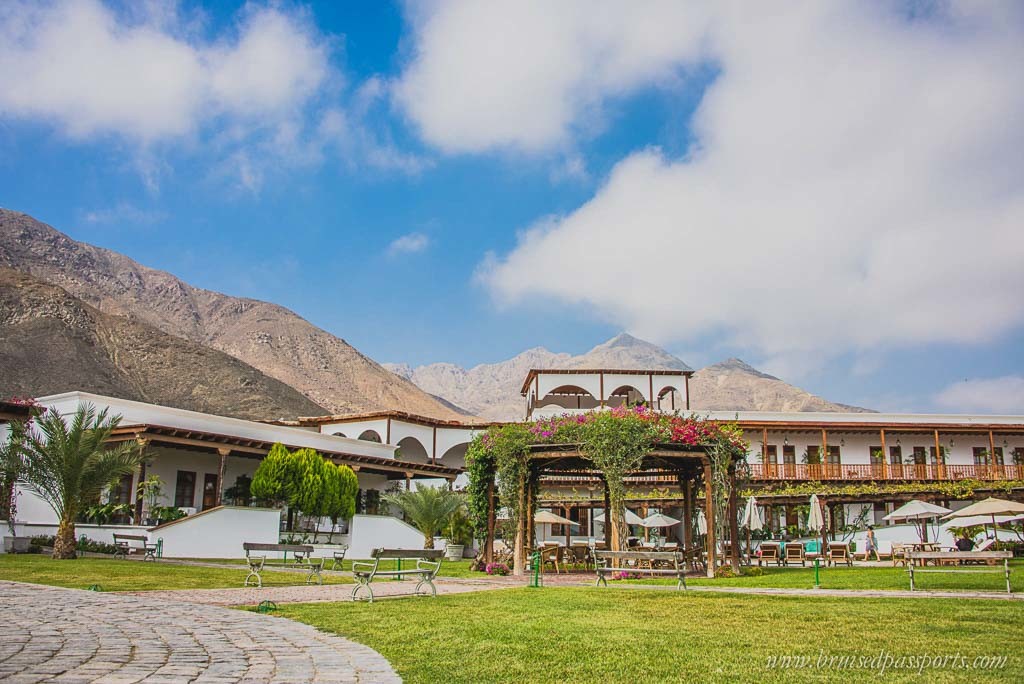
Days 6-9 – Be amazed at The Amazon Rainforest
Get ready to be transported into a different world altogether. Most lodges and hotels in this region are over 4 hours away from the nearest paved road. So this is well and truly remote! One is encompassed by nature on all sides and this is nature as you’ve never seen it before !
We couldn’t believe our eyes when we first reached the rainforest. We saw dozens of colourful butterflies, brightly-coloured tropical birds, and howler monkeys waiting to greet us. Our days were spent exploring the trails of the Peruvian Rainforest, acquainting ourselves with the wildlife, stargazing every night, and enjoying the serenity in this corner of the world.
Accommodation in The Amazon Rainforest
We stayed with Rainforest Expeditions in the Peruvian Amazon. We’ve written a detailed article about our stay in the Amazon Rainforest , which you can consult for further details. You can pick a hotel of your choice – just make sure you consult the fine print and check the list of amenities before booking your accommodation in the Rainforest. Try to pick a place that offers electricity, hot water, and wifi (if you’re an internet fiend like us!) for a comfortable stay 🙂
Top tips for The Amazon Rainforest
- Regular price-comparison websites exclude a number of South America airlines. Make sure you check individual websites to bag the cheapest fares for flights within South America. We booked our Lima-Puerto Maldonado flight with Star Peru
- Spend a short time (2/3 days) here if it’s your first time in the Amazon Rainforest. The landscape is gorgeous and nature is stunning here. However there are creepie crawlies around, which can be off-putting for some.
- Don’t forget to carry lots of mosquito repellent and long-sleeved tees to the jungle. Most hotels and lodges offer an extensive packing list. Try to consult it while packing for the Amazon Rainforest.
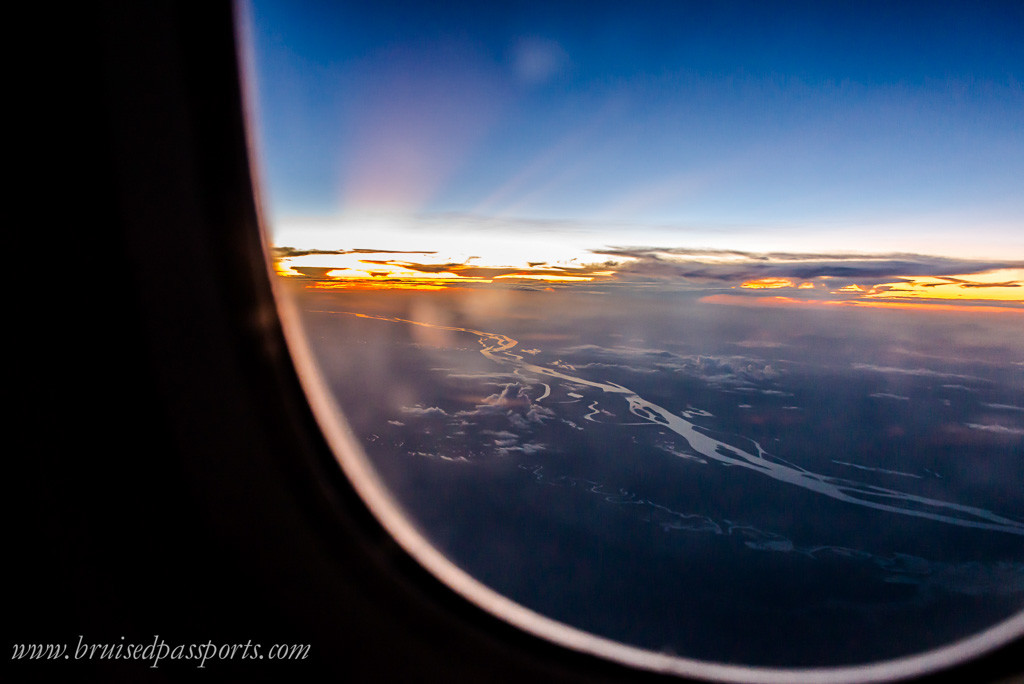
Days 10-14 Fall in love with Cusco
“Cusco – The whole city is an immense gallery: every house, every balcony looking out over every street, is like a museum with which to evoke the past”
Che Guevara’s description of Cusco in The Motorcycle Diaries is probably the best description of this endlessly-fascinating city. The bustling capital of the Incan empire is a decadent feast for the senses. Evidence of its rich and complex history is everywhere to be seen – walls that date back thousands of years, colourful rituals that are rooted in local legend, and alleyways that seem to have stood still in time. The very air that pervades the city of Cusco breathes history.
It’s hard not to spend hours running one’s fingers along Incan walls that surround the city, mollycoddling baby llamas on the roads, trying to decipher the intent of colourful posters hanging everywhere, getting lost in markets and watching local ladies scuttling about their business in colourful skirts. The best part? This is only the tip of the iceberg insofar as Cusco’s kaleidoscopic Peruvian aesthetic is concerned. The multi-hued disposition of the city will leave you dizzy with excitement.
Accommodation in Cusco
We stayed at JW Marriott in Cusco , a gorgeous hotel situated within walls that date back to Incan times. There is no shortage of accommodation options in Cusco, whatever your budget. You could also consult a portal like Flipkey for affordable options. In either case, try to choose a hotel that is located close to Plaza de Armas.
Top Tips for Cusco
- Most tourists set aside just 1 or 2 days for Cusco. We strongly recommend spending at least 3-4 days in the city. It will delight you to no end.
- Spent the first day acclimatising yourself to the altitude – stick to light meals and short walks. If you feel nauseous, sample Peruvian Coca Tea. It is said to help with altitude sickness.
- Take time out to explore Cusco’s rich culinary scene . There are dozens of affordable vegetarian and vegan restaurants that serve luscious smoothies, Quinoa stews, and bean burgers. We loved a tiny vegetarian restaurant called El Encuentro (huge portions and reasonable prices). If you’re a meat eater, make sure you hunt down a traditional Polleria. These establishments are frequented by locals. Most pollerias have a set menu that includes grilled chicken, fries, salad, and a soup for less than 10 soles (£2). Cusco is also a great place to try regional specialities like Lomo Saltado (beef sauteed with peppers and onions) and alpaca steaks.
- Try to take a guided tour of Cusco’s cathedral to find out more about the unique ways in which Christianity was adopted by a nation that worshipped the elements of Earth
- There is no dearth of shopping venues in Cusco but we recommend the Central Artisan Market ( Centro Artesanal Cusco ) on Avenida Del Sol for the best deals in town. There is a wide array of traditional bags, ponchos, colourful throws and Peruvian jewellery available for purchase. Make sure you bargain LOTS 🙂
- Visit the surrounding ruins , especially the ruins of Sacsayhuaman and Tambomachay.
- Wear comfortable shoes because you will be walking around a lot.

Days 15-18 Explore the Sacred Valley
Few places in the world have the power to beguile travellers like Peru’s famed Sacred Valley. Driving through glaciers, mountains, and picture-perfect panoramas will snatch your breath way every second of the way. But that’s not all. There are quinoa, potato, and corn fields everywhere you look – the earthy tones of the crops complemented perfectly by the vibrant garments of local farmers. It’s safe to say that no itinerary for Peru would be complete without at least a couple of days in the Sacred Valley.
There’s no dearth of things to do in the Sacred Valley. Peru just doesn’t stop throwing surprises – there are amazing sights at every corner but here are some of our favourites:
- The Pre-Incan Salt ponds of Maras , nestled between Andean Mountains, are still used to produce salt in Peru. There are over 3000 salt ponds in Maras. These are probably some of the most gorgeous farms we’ve ever seen!
- The drive to the agricultural terraces of Moray will leave you spell bound. The terraces, shaped like a womb, throw light on the way in which key Incan beliefs – geometry, science, nature, and spirituality – come together as one organic whole. Make sure you include it in your itinerary of Peru.
- The Pisac Market , although touristy, is definitely worth a visit. The colourful mélange of Peruvian fabrics, ornaments, jewellery, and colourful ponchos can be very seductive.
- If you, like us, enjoy local and experiential travel, then you must take a cooking class in Urubamba . We spent one whole day with Ricardo, a Peruvian chef who is a bit of a legend in Urubamba. He taught us how to cook 4 signature Peruvian dishes. But my favourite part was the time we spent visiting the local markets. He introduced us to local Peruvian fruits, herbs, and vegetables, tore them open, ma de us smell them, and devour them. Here’s a rare selfie of the three of us having Chicha morada, a sweet beverage made from Peruvian purple corn, at a local market. Yum, yum, yum!
Accommodation in Sacred Valley
We moved around almost daily and stayed in a couple of hotels in the Sacred Valley. There is a lot to co-ordinate here because public transport isn’t readily available in the Sacred Valley, hotels fill up fast, and attractions are quite far apart. So we delegated this section of the trip (including private transfers, cab rides, hotel stays, guides, and tickets to all attractions) to Magical Cuzco Tours . It made life a lot simpler and we could concentrate on enjoying everything the Sacred Valley has to offer instead of getting lost in the nitty-gritties and logistics of it 🙂
If you do book everything on your own, then Casa Andina could be the hotel to consider. It’s a mid-range hotel located in close proximity to Urubamba and Maras. This was the most conveniently-located hotel of all the ones we stayed at.
Top Tips for Sacred Valley
- If you enjoy a bit of luxury and fine dining, make sure you sample the 5 course lunch and dance of Peruvian paso horses at Hotel Sol y Luna.
- Don’t try to cram everything in a day or two. If you’re in the Sacred Valley for a short time, pick and choose a couple of things to do. This way you will relish the surroundings and enjoy the Sacred Valley as its meant to be enjoyed. We suggest prioritising a visit to Maras, Moray, and the cooking class.
- Do go on a long drive in the Sacred Valley – the panoramas will leave you spell bound. Pull over to chat with local farmers or weavers for a truly unforgettable experience
- Cuy (guinea pig) is a local delicacy. It tends to be over-priced in most restaurants in the big cities. But it is the only dish on the menu in the eateries in Lamay (30 minutes from Cuzco) and Tipon (70 minutes from Cuzco). This is where the locals go to get their Cuy fix. Worth a stop if you want to sample a local delicacy!
- Visit a local fruit and vegetable market, irrespective of whether you take a cooking class or not. Sample local Peruvian fruits and vegetables such as grenadilla (passion fruit), lucuma (eggfruit), mango , dozens of varieties of avocado, chirimoya (custard apple), pepino dulce (sweet cucumber) – fruits and vegetables are SO luscious here, you will not forget their taste for a long long time.
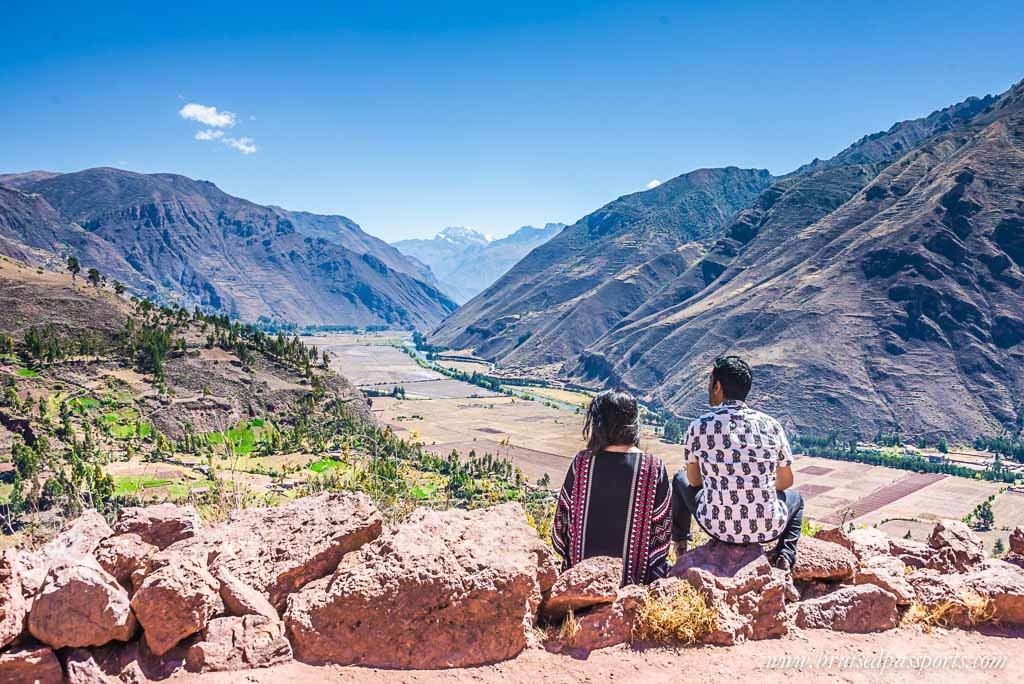
Peru Itinerary – Days 19 -21: Machu Picchu
Aah Machu Picchu – the Incan masterpiece that is the subject of many a reverie. It’s hard to say what makes the Incan ruins of Machu Picchu just so special. The mountain air is thick with mystery and anticipation here. A cloud of spirituality seems to hang over these ruins, hidden deep within a cloud forest. Dreamy clouds swivel over handsome ruins, which were made by the Incas to worship the Sun God.
We spent one whole day exploring Machu Picchu with a guide – the ruins of the city, its walls, Incan temples, and houses of Royalty and common people. No cement or mortar was used to build this sacred city. It is an intricate puzzle built entirely of stones that fit well together. What’s more, it is perfectly aligned with the surrounding mountains and the skies. This harmony of nature, spirituality, and science is impressive, to say the least. But the city is so massive that exploring it all can get a tad overwhelming.
So we decided to buy another set of entry tickets . On the second day, we did ‘nothing’ – we breathed the mysticism surrounding Machu Picchu, ran our fingers across Incan walls, stared at gorgeous crevices, and just lay under the Peruvian sun – that’s when our trip to Machu Picchu felt COMPLETE. So we highly recommend going back to the ruins a second time before leaving Aguas Calientes!
Accommodation in Machu Picchu
Spend 1-2 nights in Aguas Calientes or Machu Picchu Pueblo as its now known. Accommodation options are plentiful.
We spent 2 nights at Sumaq Hotel – it has spacious rooms overlooking the river. The hotel offers free cooking classes, cocktails, beverages, and snacks to all guests, which came as a welcome surprise. The dining room offers a sumptuous menu showcasing local ingredients – Peruvian corn, Andean trout, yuca, and local cheese – nom! The hotel is a 5 minute walk from the bus station from where you should catch one of the first buses of the day up to Machu Picchu. This way you can catch sunrise at the ruins of Machu Picchu – score 🙂
Top tips for Machu Picchu
- To get to Machu Picchu, you need to take a train from Ollantaytambo in the Sacred Valley to Aguas Calientes. We took the Vista Dome train and loved it. It has large glass windows that offer amazing views of the Peruvian countryside and steep Andean peaks. Tickets start at £40/$60.
- Book your tickets for Machu Picchu well in advance. Daily visits are limited and tickets often get sold out way in advance during peak season.
- We continued our tryst with Magical Cuzco Tours and arranged our transfer to Ollantaytambo, train tickets to Aguas Calientes, and tickets for Machu Picchu with them. The service was impeccable and we would highly recommend them if you want to delegate the planning to a travel agency.
- Carry some snacks, sunscreen, mosquito repellent and loose change (for using the public toilet) with you for your visit to Machu Picchu. Don’t forget to wear comfortable shoes.
- Hike to the sun gate for amazing views of the ruins. If you have time, hike to the top of the neighbouring mountain (Huayna Picchu/Wayna Picchu) for epic views of Machu Picchu. Only 400 people are allowed the trek to Huayna Picchu every day (over 2 sessions), so book in advance.
- Stay in Aguas Calientes at least for a night. Machu Picchu will be the highlight of this trip of a lifetime to Peru and a rushed visit is no fun at all!

Days 22 – 24 Live in a village in Huarocondo
If you want to experience true Peruvian village life without all the urban ‘noise’ (both literal and metaphorical), then head to Huarocondo. Huarocondo is in close proximity to the Sacred Valley but there is nothing to do here. That is what we love about it!
Spend languorous days getting accustomed to the slow pace of village life in Peru. You could help locals dry corn on their terraces, walk around the village and sample chicharron (fried pork belly, the local speciality), or visit offbeat Incan ruins that most tourists don’t know about.
Accommodation in Huarocondo
We stayed at Gringo Wasi B&B , an intimate and well-equipped B&B/home stay in Huarocondo. It is owned by an amazing American/Peruvian couple. Lyle and Lily are great hosts and extremely responsive to emails (which always gets a big thumbs up from us 🙂 ). There are barely any other accommodation options in this neck of the woods, so make sure you book ahead.
Top Tips for Huarocondo
- Visit the agricultural terraces of Zurite. These ruins are completely off-the-beaten-path, free, and you’ll probably be the only person around!
- Take the local minibuses (collectivos) to neighbouring towns and villages. They cost just 1 sole per person (£0.20) and they’re completely safe.
- Hop over to neighbouring Izcuchaca to stock up on supplies and visit bustling local markets. Make sure you head over to a traditional polleria for rotisserie chicken.

Days 25-28 The best for last: Puno & Lake Titicaca
Lake Titicaca, straddling the borders of Peru and Bolivia, is the highest navigable lake in the world (12,500 ft. above sea level). It is also said to be the birthplace of the Incan civilization. It’s hard to articulate Lake Titicaca’s remote and otherworldly beauty but we’ll just say this – a languorous stay at a luxury lodge on the shores of Lake Titicaca will make you forget the ‘real’ world. Order your coffee in a lake pavilion as you contemplate the beauty of the lake’s glistening waters.
Don’t forget to visit The Uros Islands , a group of 90 floating islands, made entirely of reed. The inhabitants on the Peruvian side occasionally ‘anchor’ the islands to stop them from floating across the border to Bolivia. A day trip to the Uros islands offers a rare opportunity to sample a completely different way of life. These islands are self-sustainable and completely removed from modern life. Inhabitants still use the barter system to purchase groceries, food, and clothes.
As for evenings, there’s nothing like spending chilly evenings by the bonfire with a picnic basket, nibbles and warm mulled wine to hand as you watch the sun dip over Lake Titicaca. We followed this up by counting millions of stars and staring at the elusive Milky Way – the night sky in this corner of the world is extraordinary.
Accommodation in Puno/Lake Titicaca
We stayed at Titilaka, a luxury eco lodge poised beautifully on the banks of Lake Titicaca. It wouldn’t be an exaggeration to call Titilaka one of the best hotels we’ve encountered on our travels. Everything from its location on a remote peninsula to its rooms bedecked in bright colours favoured by native Aymara people is nothing short of perfect. There are a number of other properties in the area as well – choose one that fits your budget. We recommend avoiding accommodation in Puno and choosing a hotel or lodge that overlooks Lake Titicaca for an unforgettable experience in one of the most spectacular and remote corners of the world. Read about our experience at Titilaka here .
Top Tips for Lake Titicaca
- There are direct overnight buses available from Cusco to Puno. Most hotels offer a pick-up service from Puno Bus Station. We took a Peru Hop bus from Cusco to Puno – punctual and comfortable.
- If you’re short on time, you could take a flight to Juliaca Airport. Most hotels offer a pick-up service from Juliaca Airport.
- Do try the local produce and trout at Lake Titicaca. It’s scrumptious.
- The Uros Islands are amazing and we highly recommend a day trip to the islands. You could also go rafting amidst reeds at Lake Titicaca
- If you have more time, venture to Lampa, a quaint city which has several interesting manors and alleyways. There are also several interesting Incan temples, including Aramu Muru in the area.
- Stock up on woollies before you trip to Lake Titicaca. The high altitude ensures chilly evenings.

Getting to Peru
[box] We flew to Lima from London on Air France with a short stopover in Paris. If you are based in UK or Europe/Asia, chances are that Air France/KLM will offer the best connectivity to Peru. Return fares in economy class from London to Lima start at £466. [/box]
That’s it! The perfect itinerary for Peru that will help you plan the trip of a lifetime through handsome deserts, remote rainforests, Incan ruins, quaint villages, and glorious wonders of nature. Peru will snatch your breath every second of the way – book your flights now? 🙂

Planning a trip to South America? Read all our articles on South America here
Do you seek once-in-a-lifetime experiences while travelling? Read our Top 10 Travel Experiences here
Have you been to Peru? Did you love it as much as we did? 🙂

Previous Post
Planning the perfect romantic getaway in Jersey + a giveaway
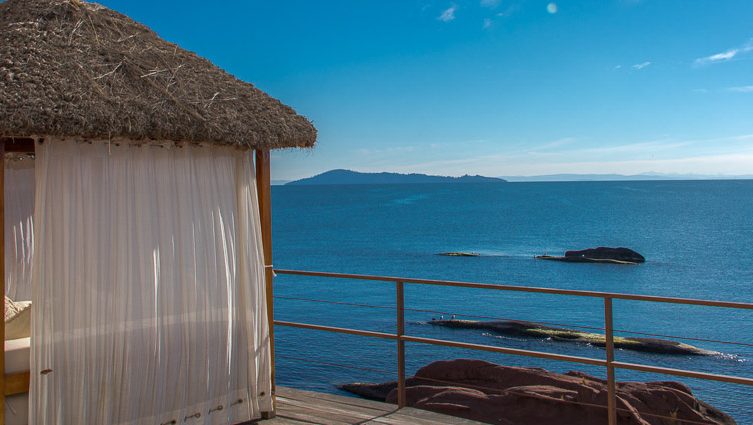
Titilaka – An Unforgettable Stay at Lake Titicaca, Peru
125 thoughts on “ the ultimate itinerary for peru: perfect planning guide for the land of incas ”.
Amazing guys! I fancy each and every trip that you guys plan but guess all are not lucky enough to travel the world. But you guys have definitely inspired me to travel as much as I can. Happy destination hopping!
Hey Suheil – we are SO happy to hear we inspire you – you made our day. So happy to hear you enjoyed reading our itinerary of Peru – I hope you get to travel tons this year
thank You for sharing your itinerary. Just in time because I have been planning a week long Peru trip in December. And the only reason I’ve wanted to go is because you’ll tantalized me!!! So excited. Just need to start booking flights ad acco now. Thanks!
So happy to hear that Neha 🙂
Great read we loved Peru as well and spent a week at Gringo acclimatizing before our trek. Agree Lyle and Lilly great hosts. Excellent photos as well – whar camera do you use?
Vid uses a Nikon D610 with 3 lenses – 50mm f1.8, 28-300mm, and 18-35mm
Have been to Peru, stayed only for 14 days, so could not do a few things u guys did, but would luv to travel again if possible.
Peru is such a beautiful country it definitely warrants a return visit 🙂
You guys had one action packed month! Also, I’m so glad you made it to Viñas Queirolo – it’s such a beautiful property and the perfect spot for a bit of pampering after a few days of heavy travel. 🙂
It was an amazing month, Audrey. Viñas Queirolo was special – we loved the wine tasting at sunset 🙂
Nice write-up, the 400 limit is not the for the actual ruins, its for the Inca Trek and the HuyanaPicchu is limited to 200 per session and they have 2 sessions.
Thanks for the heads-up. It was a typo and we had intended the 400 per day for Huayna Picchu (over 2 sessions) and not for Machu Picchu. The daily limit for inca trek is actually 500.
Great post and we enjoyed having the both of you here with us as well as following your continued travels. I do have a few comets on some of the above information to further help your readers.
1) The Vistadome trains only have about 6” more glass than the Expedition trains so I would not use visibility as a basis for choosing this train class, choosing it for a preferred time would be best as most of our guests that have taken both train clases (one each direction) have felt the differences do not generally justify the additional cost of taking the Vistadome. 2) While trek may not have been the proper word, your mention that “Only 400 people are allowed the trek to Huayna Picchu every day (over 2 sessions) “ was correct. And for further reference here are the number of available tickets for each category. 1. Machu Picchu general entry 2,500 2. Machu Picchu + Mountain 400 3. Machu Picchu + Huayna Picchu 400 (200 each group) 4. Inka Trail 500, although only 200 of those are tourists, the other 300 would be the trek support staff. 5. Machu Picchu Late entry (after 11:00am) 1,000
Your posts have inspired me to put Peru on my list of places to go! Thank you for this great itinerary that makes it much less daunting!
You MUST go to Peru – it’s an incredible country 😀 Drop us an email if you need any help planning your trip to Peru
Extremely in-depth, perfect guide for anyone looking to travel here. You should turn this into a guide for download 🙂
Apeksha that’s actually a great idea – thanks, we might actually do that 🙂 We couldn’t find the kind of articles we wanted to read before we went to Peru, so thought we’d address that issue – that’s probably why we went a bit overboard with detail 😉
Awesome stuff guys!! Loved reading your post on Peru…Machu Pichu and Titicaca are at the top of my list…some day for sure 🙂
Vatsal you definitely need to visit both those places – they’re absolutely stunning (to say the least!)
Love your “Ultimate Itineraries” they’re so thorough!
Thanks Rad – I keep taking copious notes through the length of the journey and finally put it all down in the Ultimate Itineraries in the hope that it will help a curious traveller or two make the most of their trip to that particular country 😀
Such a great guide guys! We are looking to head to South America hopefully by the end of next year so I’ll be bookmarking this and coming back to it often. Cheers guys and thanks for putting this together.
Hey Ross – glad you found it helpful. We tried to include as much information as we possibly could 😀
I love the photo of your dinner in the rain-forest. It looks like the table is set for a third guest…a bird or a monkey perhaps?
Hehe Deborah
You have a great eye for detail – the table was always set for 3 people because our guide would occasionally join us for dinner 😀
Very detailed post – very useful, and nice pictures. Thanks for the information. Planning a trip to Peru next year. Can you give an indication on how much will be the miscellaneous expenses per day? Local travel, food etc. Also, did you face problems with altitude?
Glad to know you found the post helpful.
If you go through Lyle’s response, you’ll notice that he has detailed many of the expenses as much as he can from his experience.
In Peru, you can do things really cheaply and you can also spend a lot. This holds true for both food and transportation. We like travelling comfortably, so we ended up spending quite a lot of money on internal transfers.
Internal flights in South America can be quite expensive – we paid quite a lot to get from Bolivia to Ecuador (close to £1000 for both of us for a one-way flight!! Yep, told you it’s crazy). Internal flights in Peru are slightly cheaper. If you book in advance, you can get one-way tickets for £75-£100.
As for bus travel, again, depends on which one you choose. Bus travel starts at around £10 for long-distance journeys but we chose the more comfortable options and paid around £20-£30 for most bus journeys.
As for altitude sickness, no problem at all on that front 😀
As Savi and Vid may not be familiar with all the options I thought I would help out by answering this.
So to your question on Mic. Expenses, many of these things will vary but here is a rough idea of what you can expect.
Transportation – Buses and colectivos are the cheapest way to get around but can also be the slowest, taxis are the quickest mode of transport but do tend to cost more, for example colectivos between our town and the historic center in Cusco would run about about $3.00 per-person, a Taxi on the other hand would run between $20.00 to $30.00 per-car.
Food – This is the area that has the greatest variance, you can eat at local menu restaurants for as little as $3.00 or less per-person, or you can eat at tourist or gourmet restaurants and spend $30.00 per-person.
Site seeing – the cheapest way to visit the sites would be by local transportation or even taking a group tour, local transportation is generally cheaper but as I mentioned previously it is also slow and will limit the number of places you can see. Group tours on the other hand are structured and usually have shopping stops that will eat into the time and are not the best places to shop anyway. Hiring a car and driver for the day would be the most expensive option but will give you the most flexibility and allow you to see more places. For example the standard Sacred Valley tour runs about $16.00 per-person and stops at an artisinal market, jewelry store, Pisac, Ollantaytambo and Chinchero. Hiring a car and driver for the day would run about $100.00 for the whole day and if you ship the shopping, would allow you to spend more time at each site, or adjust the sites for better flow allowing you to see more. Doing this itinerary by public transportation would be all but impossible as it is far too slow, but you could easily visit one or two of the sites listed for about $6.00 to $10.00. In addition the transportation you must also consider the cost of entry to the sites which requires the purchase of a tourist ticket these are S/.70.00 Soles for a partial ticket (3 options) and S/.130.00 Soles for the full ticket.
Machu Picchu – Entry to Machu Picchu is S/.128.00 Soles for regular Machu Picchu entry, S/.152.00 Soles for Machu Picchu with Huayna Picchu mountain, and S/.142.00 Soles for Machu Picchu with Machu Picchu Mountain. These prices are if you purchase the tickets through the official website, if you use an agency you should figure $50.00 for regular MP, $60.00 for MP+HP and $56.00 for MP+M. For reference the current exchange rate is $1.00 usd = S/.3.20 pen (Soles).
Getting to Machu Picchu – Here there are several options, the most common is to take the train which on average can run about $120.00 round trip, the actual range runs from about $50.00 to $93.00 each way, depending on class and time, this does not include the luxury train which is about $350.00 each way. Another way to get to Machu Picchu would be to take the land route, from what I have read this can get you there for about $20.00 or $30.00 each way, but will take a whole day of travel each direction. The last way is to hike and options again are varied, the cheapest hike would be the one along the train tracks and would take one day, after this there are a variety of treks that run from 2 to 9 days and can run from about $200.00 per-person up to well over $1,000.00 per-person.
Thanks a lot for such a detailed and informative response – we are sure it’s going to help a lot of people.
As for getting to Machu Picchu, we’d imagine taking the train would be the best option – fast, convenient, and scenic 🙂
Hi GringoWasi / Bruised Passports – Are the 4 day treks to Machu Picchu very basic or are there also luxury options? What kind of accommodation is available on the Machu Picchu Trek?
Having done the trek this year, allow me to pitch in,
There are no luxury options for the trek, all of the trek companies essentially stay in designated camp sites, Its basic tent sleeping in air mettress and sleeping bags and hole in the ground toilets.
Food is prepared by the chefs and hot fresh food served everyday.
Have a look at my blog to get an idea of how the trek and conditions are, nevertheless its an unforgettable experience.
From what we remember from the days when we were planning our trip, there is one company that organises “luxury” inca trek – if I am not wrong, it’s called Mountain Lodges Peru. Perhaps a quick google search will yield more results? I think this company makes you stay in lodges and not pitched tents.
Other than this, I think all other organise pretty much the same trek as SuniKans above has mentioned.
Hey Sam, Savi vid,
The mountain lodges do the salkantay trek with luxury option stay, dont think the inca trail had any similar options that we saw,
Salkantay is a good option too if you dont want the famous inca trail.
Yes Mountain Lodges of Peru does offer luxury lodge to lodge treks, these are on the Salkantay and Lares routes but both are listed at more than 4 days, their lodge to lodge Salkantay trek itinerary is 7 day and the Lares trek is 5 day, they may be able to modify one of these to a 4 day but I am not sure.
These do appear to be the only routes that they offer as I do not see any others on their website, we did help arrange a overnight stay in the first lodge on the Salkantay route for some past guests and they were easy to work with and helpful so I would try contacting them and se if a 4 day option would be possible
hi gringowasi ur information is quite informative,if u don’t mind can u enlighten me with ur experinces ,as I ,m planning to do south America in two months starting from Santiago.my email id is [email protected]
was you wearing indian clothes in peru?
Hi Savi/ Vid
Absolutely loved this itineary. Would you recommend peru in Dec? I heard that Nov – March is rainy season. I have a week. Which places would you recommend? Macchu Pichu is a must.
Each season has its pros and cons Shilpa – yep, December gets quite rainy but it’s supposed to be lush green as well 🙂
You guys are really awesome ??? and always motivating us to travel . Love you guys so much for giving us all tips to travel ????. I would love to visit Peru and yours pics are mind blowing !! Please share on how to Budget for South America trip also .
Dear Sujatha,
Thanks so much – so happy to hear that you enjoyed this post 🙂
We’ll write a post about budgeting in the near future for sure!
Happy travels
Hi Savi & Vid,
Thought your readers might be interested in a giveaway I am running on my blog, I am giving away free City Walk Apps for Apple devices, there are well over 150 cities to choose from across the globe so if any of your readers have upcoming travel plans, they can check out my blog for details on the giveaway. https://agringoslifeincusco.wordpress.com/2015/11/21/city-walking-tour-app-free-giveaway/
Thanks for that Lyle!
The last picture of the two of you with that famous Macu Picchu shot – is that at Huayna Picchu or just around Machu Picchu? I always see that shot in pics and want to know if we need to hike up to get there.
Hubby and I are hoping to go in July – haven’t booked our tickets yet though. You guys bought your entry tickets to MP from Magical Cuzco then?
That picture is in Machu Picchu itself – there is a vantage point where you can go to get that picture. Yes, we arranged our entry tickets to MP from Magical Cuzco 🙂
Have a great trip.
Is there some /any part of this that is kid friendly…i want to travel and have a 3 year old …so just thinking out aloud
In fact, you could do most of this itinerary with kids as well. The only place we would have thought wasn’t kid-friendly was the amazon forest lodge. However, even there we met families who were travelling with kids aged 2-5 years.
Hope that helps 🙂
I absolutely love your post! We are 3 families travelling to Peru next week with toddlers (crazy right?) Any tips on activities that may suit them? Heading to macchu picchu , Cuzco, Lima and punos. We will be spending 4 nights in the sacred valley and 3 nights in punos. We are worried about finding the stay in punos too long. Besides the floating villages, what else do you recommend?
Apologies for the late reply. Off the top of our heads, there are a few farms in Sacred Valley where kids (and even adults) can pet Llamas – it was a lot of fun 🙂
3 nights in Puno should be fine. We didn’t do much other than Uros islands but we enjoyed sitting by the lake and enjoying the scenery. You could reduce your stay at Puno by 1 night and spend that extra night in Cusco 🙂
Hope you have a great trip. We loved Peru 🙂
Your itinerary to Peru is brilliant. My husband & Ia re doing a 1 month Chile-Peru trip , and your post has been reference for planning everything in Peru. We are even staying at the Vinas Queirolo hotel , thank you for this wonderful post!
We have 7 nights in Sacred valley , Machu Picchu & cusco. We plan to do the 1 day inca trail. So I am struggling to decide on how to split 5 nights between sacred valley and cusco : 3 sacred valley , 2 cusco (or) the other way around
What would you suggest?
Hey Lakshmi – so great to hear that. 3 days in Cusco and 2 in the sacred valley sound good. There’s so much to do in and around Cuzco 🙂 Have fun in Peru – please send us photos from you trip, would love to share them with our readers on Facebook and on our website
Just returning from our 12 day trip… so my 2 cents..For all those planning the trip , add Arequipa City to the Itinerary as well! you will fall in love with the city ! ( Addn Tip: dont miss meeting the 500 year old Peruvian Mummy!)
Hey Vrutti – send us photos from Peru 🙂 Good to hear you loved Arequipa – hopefully some of our readers will include it on their itinerary after seeing your comment
Very comprehensive post on traveling to Peru. Thank you for the info.
Glad you enjoyed it Dario 🙂
HELLO, i loved your itinerary for Peru, sadly i only have 10days max for my trip !! How would you suggest we spend our time ! WE want to do it all but we know we can’t ! Any help would be amazing !!!
Hey Chantay – You could spend it in the Cusco/Titicaca area 🙂
Wow, awesome read. Have read this post over and over. We are planning a trip to Peru for 9 days. I am quite confused finalizing the order we should visit the places. We will be visiting Lima, Cusco, Sacred Valley , MP and Titicaca/Uros Islands.
could i get your input? Should we Do Titicaca after Lima in the beginning or leave it till the end as above. If so, then does it mean we will actually have to come back to Cusco ( second time) and then take a flight to Juliaca ( since we are short in time)?
Thanks a ton – so glad you found it helpful. Have fun in Canada and do send us photos 🙂 You should leave Titicaca for the end as it’s much closer to Cusco than Lima. Yes, you’ll have to come back to Cusco after Machu Picchu to catch a flight to Juliaca. Alternatively you could take a bus from Cusco to Juliaca. Buses are super comfortable and convenient in Peru 🙂
I love this itinerary and the pictures are beautiful! When you left lake titicaca did you fly back to Lima and then home? Or how did you manage it?
Hi Katelin,
We crossed over to Bolivia from Lake Titicaca by bus and then flew out of La Paz after exploring Bolivia 🙂
This is awesome! I love Peru, and I can’t wait to check out some of these cool spots when I go back in April! Thanks so much for all the info!
Thats so good to hear Lara.We really hope you have a blast in Peru and enjoy it as much as we did 🙂
Hi Savi Vid i ll be traveling to Machu Picchu in May to celebrate my Bday. its a big one 😉 you mentioned in the article that we hv to book the tickets to machu picchu in advance. can you please she with me where i can book them. really appreciate your reply with some direction.
Hey Supritha,
Sorry for the late reply – hope you had a great birthday in Peru :D. As for entry tickets to Machu Picchu, we had arranged all train and entry tickets through a travel agency (mentioned in the article) 🙂
Much love Savi and Vid
Peru is a wonderful country, where there are many tourist attractions for tourists. công ty thiết kế nhà xưởng
Ya sure, we loved being in Peru and plan to go there for a longer time in the future.
One of the best blog , i ever read (y) <3
Thank you so much Ganesh…feedback like this makes our heart sing and all the hard work that we put into our work becomes worth while. Thanks a lot once again!!
we are planning to Peru in few months. What are the places to see in Lima? how many days do you recommend?
We’d say 2-3 nights are ideal for Lima. We loved Barranco 🙂
I love this! I am going to Cusco in a few weeks. I was wondering how you all avoided getting sick? I have a friend that just went and got E. coli and some other illnesses!
Hey Katelin,
We just took basic precautions to avoid altitude sickness and other illnesses 🙂 We had light meals and made sure that we drank bottled water and had cooked food 🙂
Have a great trip – Cusco is one of our favourite places in the world 🙂
Great post!
Driving cross country in Peru is definitely do-able and I would personally recommend it (with precautions). In 2015, two friends and I drove from Lima, to Huacahina, Nazca, Machu Picchu, Cusco, and back to Lima. You can find my blog post / story here:
1. Be careful. There are many hairpin turns, especially when going up and down the hundreds of ridges east-west through the Andes. Rockslides are common and roads may be blocked by debris. 2. The drive will take longer than it states on Googlemaps. Build in extra time. 3. Peruvian drivers take risks which may put you at risk. They will pass when not advised, often don’t have headlights on, and may be reckless at times. Be conscious of this. 4. Refill your tank frequently as gas stations are few and far between in rural areas 5. Check your tire pressure, the roads get hot and the thousands of turns put heavy pressure on tires.
http://boundlessbrooks.com/how-to-road-trip-peru-machu-picchu/
Thanks for your comment!
Hi Savi & Vid, Recently someone recommended me to your blog, and I have been hooked ever since. I visit your blog everytime me and my husband want to plan a trip.
Just a small request, if you could mention the months or time of the year you travelled to a particular place, we will have a better idea.
That’s a great idea and definitely something we are incorporating right now Sravya 🙂
Hey guys! Can you please tell me what time of the year you visited Peru…..Thanks
Hey Niki we visited Peru during the month of July 🙂
That’s the most vivid and descriptive travelogue I’ve ever read. With minute info regarding everything. And both of you are looking stunning in the pics. I am planning a 14/15 day trip in May 2019. I have heard that’s a decent time to go. I got in touch with a Peruvian travel agent inkawasi… Are they good?
Hey Chayan,
Yes that’s a good time to go 🙂 Don’t know about the travel agency – sorry 🙁
I was looking at your pictures and noticed you were wearing a skirt, tights, and sandals in Machu Picchu. Did you have trouble wearing that? I was under the impression workout clothes were more appropriate, but I want to look good, help!
Hey no trouble at all 🙂 those sandals are very comfortable 🙂 Of course if we did the 4 day hike we would not wear this but on our trip we took the bus from Aguas Calientes so no stress 🙂
What a lovely read! I am planning to go to Peru in October.
Could you suggest a hassle-free short flight route to Lima from India? (I am from Bangalore, by the way!)
And is it possible for me to get a visa to Bolivia, Chile, Guatemala, etc. easily from Peru?
Thanks in advance. 🙂
Would suggest getting all visas in advance if you need them (for eg. you don’t need visas for many countries if you have a valid US/Schengen visa). I think the easier connection from Bangalore is through Paris/Amsterdam, but it’s best to check a price comparison engine like Skyscanner for best deals 🙂
Hi there! This itinerary is amazing! Thank you for providing all the tips and suggestions!
I see that you did a cooking class in Urubamba. Are you able to provide any details of the class you took?
Hey Tiffany,
It was arranged by Magical Cuzco Tours – http://www.magicalcuzcotours.com/en/ – you could just drop them an email to enquire about the same 🙂
Thanks very much for all of the great information 🙂 my partner and I are planning a 3/4week trip this September. So far were looking to visit Lima, then down to the Ica region (Huacachina / Nazca etc), on towards Arequipa, then Cusco (for the Saltankay trek), sacred valley and finally for an amazon tour before returning home to the UK via 2 nights in NYC. Im making making the assumption that you speak very good Spanish, ours however is quite limited; do you feel that this would be a hindrance or present any issues whilst travelling (particularly in negotiating local travel arrangements / prices etc?
Your itinerary for Peru sounds great. No we are not fluent in Spanish and that didn’t spoil our trip in any way whatsoever 🙂
Hi.. I love your blog.. I too love travelling and have travelled a lot I am planning a winter honeymoon to finland in jan 3rd week. Can you suggest me some other place that i can combine with finland? We are planning to go for 2 weeks
Hey you can combine it with the Christmas markets of Germany, Austria, or Paris 🙂
Okay. Thanks a lot for the help. Will it be a good honeymoon destination according to you in january 3rd week? Finland plus one more place
Paris – you’ll find several articles on Paris on our website 🙂
no mention of Palomino Island? swimming with the seals? why? especialyl when you were in a month in peru. lol
Too much to explore, too little time 🙂
Hi Savi and Vid,
Absolutely love your blog..So much detail into every post. Thank you for inspiring many! We are planning our Peru trip for July 2019. I know its early but I love doing a thorough research especially for international destinations. We are thinking of 10-12 days and so far have narrowed it down to Cusco, Sacred Valley, MP and Titicaca. We have an 8 yr old. Is the Amazon rainforest kid friendly? How tiring is this journey in to the amazon? We plan to do it from Cusco. I have been reading extensively about it on Trip Advisor but haven’t found any useful inputs from families with young kids.
Hi Savitha,
If you have 10 days we’d suggest leave Amazon put especially with a kid. We did see many kids there so that’s not a problem per se but if you do have to leave something out then let that be Amazon
Hey Savi and Vid…Was wondering if u could help…we are planning a trip to peru and Bolivia in November for about 2 weeks…. the rough itenerary is: – spend a day is cusco and lima each (coz not enough time 🙁 – do the 4day salkantey trek to machu pichu-… most websites day it is is the most difficult of the trek to machi pichu… i know u havent done this during ur trip …but would u have an idea if it can be done by a person who has never done more than a 3-4 hr trek before? – the amazon forest… what is the minimum number of days u suggest spending here? Given we are short on time – salar d uyuni in bolivia- is it worth going to in november or should we swap it for another place? – anything else we shouldnt miss out on in bolivia?
1 day in Cusco is not enough – we’d suggest at least 2 🙂 not much idea about the 4 day trek to Machu Picchu but it sounds great 🙂
At least 3 nights in the Amazon rainforest as it will take you at least half a day (at best) to get there. Salar should be nice in November, especially if it has rained a bit. You could spend a couple of night in La Paz or Puno 🙂
Very well written, thanks for the tips! Indeed, Peru has come a long way since the days of the military environment in the late 1970s, and is today one of the safer and more enjoyable countries to visit in South America.
However, there are still tourist-targeting scammers and petty crime to be wary of. Do be wary of the poor student scam, chile-peru border crossing scam, pirate taxis / black market taxis, car break-ins, sob story scam, currency switcheroo / sleight of hand and many more
nice experience
I must say I’m hooked to your blog now! Great photography and really inspiring!!
I’m actually planning for a special trip for our 10th year wedding anniversary in end Oct. But most likely we would only have 14 days to work with. I’m considering Peru + Bolivia or South Africa . Any recommendations?
That’s a great idea. Both are great options actually but would suggest South Africa if you want something more luxurious and relaxed 🙂
Hey. Nicely writeup.. loved it. We as a couple planning to visit in June this year. We can spare only 14 days in Peru.
Which places you will recommend out of your nearly month-long itinerary and is it worth to visit Peru just for 14 days?
We’d say go to Ica, Cusco, Machu Picchu, and Puno 🙂
Hi. Was so happy to see Peru featured on your Instagram post. I am considering going to Peru this year so this was very timely. Loved how detailed you guys are with the itinerary. I had one question though. Would you recommend Peru to a female traveling on her own? Is it safe to travel alone (with the usual common sense precautions)? Also, how commonly is English spoken across the country? Thanks!
Peru is safe for a solo female traveler – always talk to locals as to where it’s ok to go and where it’s not and stick to their suggestions. English is fairly common. Have a great trip – it’s one of our favourite countries:)
Hey Savi, Vid
It’s a pleasure seeing you guys travel like this. I simply love, love, love what you guys do. Need small help planning my Peru and Bolivia itinerary, wanted to know if trek to Huyana Pichu is possible the same day as Machu Pichu? or we come back to Aguas Calientes and trek the next day? And, should we come back to Ollantaytambo from Machu Pichu or is there any other going back to Cusco?
Also, should we take Bolivia visa or is it easy to take it on arrival?
I believe they can be done on the same day but even so might be too tiring and you might not enjoy. Not sure if there is any other way back to Cusco 🙂
As for Bolivia, we took the visa before we travelled since we had time and wanted peace of mind 🙂
Enjoy your trip and share photos from Peru and Bolivia 🙂
Me and my Wife have been following you and your itineraries quite a lot..:)
We’ve been to Lapland and Switzerland this year totally based on your itinerary and we enjoyed every bit of it. We have been wanting to do Peru and Bolivia since long, and we looked no further then coming back to our favourite Travel Couple. We are considering traveling to Peru and Bolivia for our Anniversary in the month of February in 2020.
– Would you recommend us to do Peru and Bolivia in February since its rainy Season in February? – Also we just have around 14-16 days for the whole Trip what all would you recommend us to cover and something you would say is a total must to do apart from the obvious Machu Pichu in Peru and Uyuni Salt Flats in Bolivia? – Would you recommend us booking the whole tour organised through a Travel Company along with a guide or we can do the whole journey on our own there?
Shalabh & Kanika
Happy to hear that 🙂 Do share your photos from Lapland and Switzerland with us 🙂
as for Peru, you’re right, it is rainy season. However, if you’re after those beautiful reflections in the salt flats of Uyuni, then this is the time to go. You’ll have to choose. we went in July and the weather was perfect. We’d say definitely go to the vineyards in Ica and spend an evening in Huacachina. You can definitely plan all of this on your own but if you need someone to do this for you then you can see the details in our article on Peru as well as on Bolivia 🙂
Have a great trip
Thank you for sharing valuable information.A quick question?Did you guys hike to the Machu Picchu mountain?I am not sure if this hike should be included in our travel.Can you please provide some suggestions on this.
Hey you can hike up Machu Picchu if you have a couple of days – all companies offer this experience. We took the train to the top 🙂
Peru was the most amazing country we have visited in South America – breathtaking landscapes, great food and history in every corner. Can’t wait to go back….
Hi there! I’m coming across your travel guide a little late but it’s been unbelievably helpful in planning my upcoming trip around Peru 🙂
I’m struggling with the Ica/Nazca Lines/Paracas/Huacachina portion of the trip. I love the hotel you all stayed at in Ica and I know there’s a Peru Hop bus from there but I can’t figure out how to visit Nazca Lines, Paracas, and Huacachina from there. Did you do it through your hotel or did you work it out with Peru Hop? I’d love to not stay in a different hotel every night in the region but I’m struggling to work out the logistics of day trips!
Hi Christine,
We went from Lima to Nazca, did the flight, and then took the bus back to Huacachina and arranged a transfer to the hotel in Ica (arranged via the hotel). So essentially we experienced Nazca, Huacachina the same day and then headed to our hotel to enjoy a couple of days there.
Really amazing article. It was really helpful to me.
The trip looks amazing and we are planning a similar trip based upon your experiences and recommendations. I’ve worked in Peru but never made it Machu Picchu. What part of Machu Picchu was the photo taken of the two of you laying down relaxing? Is that part of the Machu Picchu Mountain hike that is limited or part of the “general admission”?
We are staying at many of the same places including Titilaka but we are taking the luxury train from Cusco to Puno. We are excited.
Hey Kenny – that is right inside Machu Pichu , part of the general admission 🙂
Great information! We are planing our trip to Peru in October and would like to go to Machi Picchu and to the Amazon? What do you suggest as far as the transportation? We are traveling from Texas.
Thanks for sharing your amazing photos and itinerary!
Hello – buses in Peru are very comfortable but would suggest domestic flights, especially if you are short on time
Beautiful description and lovely pictures- when did you go- I mean which month (as you’re not swaddled in jackets and such). We are going in October- looking forward to it!
Have the best time Renuka – our time in Peru was actually warmer than we thought it would be
- Pingback: Plan Your Perfect 10 Day Trip to Peru - Adventure Awaits You!
“Incredible post! It’s rare to see such complex procedures broken down with this level of clarity. I’m curious, though, how often do the regulations around transit visas change? Also, how does Saudi Wakala stay updated with these changes?
Leave a Reply Cancel reply
Your email address will not be published. Required fields are marked *
Yes, add me to your mailing list.

What are you looking for?
Ultimate 2 week peru itinerary [written by a local].
Are you planning on heading to Peru soon?
Then in that case, you’re going to need a solid itinerary, and this two week plan is the perfect way to uncover this idyllic South American nation!
Peru was the second country I visited on my Latin American trip, where I would then end up spending over 4 months exploring.
And then choosing to live there too!
It truly is a breathtaking country, and one that I simply cannot stop raving on about.
From the sweltering Amazon Jungle to dizzying altitudes and snow-capped peaks, Peru is an absolute must-visit in South America .
Now if you only have a couple of weeks, then you can still definitely see the very best of Peru, despite what others might say.
In this two week itinerary, I’ll cover the best places to visit in Peru , in a way that’s the most time-efficient and productive for you.
But first up…
Travellerspoint
Getting Into Peru Requirements
Before we look at where you’ll be heading, let’s actually make sure you can get into Peru without any problems!
Is a Visa necessary?
Many countries in Latin America are pretty relaxed when it comes to visas (and whether they’re even needed).
Peru is no exception, and most travellers from Europe, The USA, Canada and Australia can enter with relative ease.
Upon arrival you’ll be granted a 90 day stay, which is more than enough time to see the very best this country has to offer.
The rules of the Peruvian Tourist Visa used to be even more relaxed, but in August 2021, a new government came into play making things just a little less helpful.
If you’re from anywhere else in the World, then you’ll want to read through this Peru visa guide which better explains what you’ll need.
Everything else you need to know
Extending your peruvian visa.
If you have more than two weeks for your trip, or are flexible with dates, then you’d be surprised just how quickly you can rack the weeks up in Peru!
It was around week 9 or 10 for me where I started to realise I had to find a way to extend or leave.
Unfortunately now though, the latter is the only option.
Whilst they used to, Peru no longer does tourist visa extensions.
So if you want to stay longer, you’ll first need to leave Peru for a duration of 90 days before coming back again.
You can read more about their policy , which helped me to get my head around the whole (and often complicated) situation.
What happens if I overstay?
Whether by accident or intentionally, there is a somewhat mild punishment by overstaying your tourist visa.
At this time of writing (October 2022), for every extra day you overstay, you’ll have to pay a fine of roughly 4.60 Soles.
This is then payable once you leave the country in Lima’s international airport, where they catch you at immigration.
You’ll be sent to a different counter to pay the full fine, before you can pass security and then to hop on your flight.
This is what happened to me, and if you’re in a similar boat, I’d advise you to allow more time before your flight, in case the queue is long.
If leaving through the land borders into either Ecuador, Brazil or Bolivia, then I honestly don’t know if they’ll enforce this or not.
Peruvian immigration authorities tend to make up their own rules wherever they are, so if they don’t mention it, then I wouldn’t either!
The Ultimate 2 Week Peru Itinerary

Now that you’ve made it into Peru, it’s time to start exploring the very best of this awesome country.
The below map shows an overview of the different destinations, where we’ll be covering the south along this classic Peruvian loop.
Whilst you can enter via any of the land borders, the best way to start any Peruvian adventure is in the capital of Lima.
Home to the Jorge Chávez International Airport, it’s the best connected airport of all in Peru.
The only alternative that can be done (for this itinerary) is if entering Peru from neighbouring Bolivia in the south.
You’ll cross into Puno on the shores of Lake Titicaca, and from here I’d highly recommend going to Cusco, followed by Arequipa, Ica and then onto Lima.
So, let's take a look at your 2 weeks in Peru...
Stop 1: Lima - 2 Days

Lima is most likely the first place you’ll touch down on our route, and really is a great starting point and introduction to this 2 week Peruvian itinerary.
The capital of Peru is one of the most upcoming gastronomic destinations in the world, and here you can try out some tasty local favourites such as Papa Rellena and Lomo Saltado.
The best place to stay in Lima is in the more developed and safe district of Miraflores.
Here you can walk around safely both during the day and night, as there’s very little crime as well as boasting a more cosmopolitan vibe.
Make sure you head down to Larcomar, where you can hire a bike to ride along the stunning Costanera!

Afterwards you can head to Huaca Pucllana to get your very first taste of ancient Inca ruins, with this beauty just a few blocks from Kennedy Park.
From Miraflores you can easily use Uber to get to other popular destinations, unless you want to live like a local and catch the buses (these are very cheap here, although timetables and frequency can be hard to predict).
Other things to do in the capital include strolling around the pretty Plaza de Armas, as well as visiting the Larco Museum , which is one of the most comprehensive Incan museums on earth.
There are tons of fantastic things to do in Lima , but if you're short on time then why not check out this half-day city tour ? It will take you to some of Lima's most popular spots including the San Francisco Monastery, Plaza Mayor, and Palace of the Union.
For those with a bit more time, you may want to take part in a Peruvian food tour where a local will show you all the best dining spots, and you'll get to taste the delicious local cuisine.
Stop 2: Ica - 1 Day

From Lima we’ll then take the 5 hour bus into the arid, desert region of Ica.
You can search for buses using RedBus , and most of them will depart from the Victoria Terminal.
Whilst on paper this seems like the busiest day of the two weeks (well, it kind of is to be fair), it’s actually pretty easy to do with a bit of strategic planning beforehand.
It’s best to leave Lima super early (like around 5/6am), and take the direct, 3-hour bus to the nearby fishing village of Paracas .
This is where you'll find the Paracas National Reserve which is home to unique desert landscapes, sandy beaches, and several islands.
The ultimate thing to do here is to see the Ballestas Islands , which are home to endless birds seemingly flying in and out of nowhere.
As well as this, here you can also watch penguins and sea lions strolling about their daily lives.
It’s a good idea to pre-book a scenic boat tour like this one to save you time (remember we don’t have too much time to rest between points today).
.jpg)
From here we’ll then take the bus to Ica (around an hour), and then catch a moto-taxi ride to Huacachina .
This popular, oasis town truly is a scenic delight, with imposing giant dunes surrounding a tiny town from all corners. Here you can go for a stroll and relax by the lake.
Sandboarding is the most popular activity to do here, and we recommend booking yourself onto the 4:00pm slot, where you’ll see the sunset along the way (as well as giving you time between Paracas, and getting a nice lunch in).
After you’ve got your fill of adrenaline, watched the sun go down and then had dinner, it’s time to board the long bus from Ica to Arequipa, our next destination (around 13 hours).
If you'd prefer not to organize this all yourself, then this full-day tour runs from Lima and includes a boat tour from Paracas, a winery tour in Ica, and a visit to Huacachina.
This will take out the stress of having to get to the destinations yourself, and then you can just catch the bus to Arequipa rather than heading back to Lima on the tour.
Whichever way you decide to do it, make sure these destinations are included in your two week Peru itinerary! Trust me, you won't regret it.
Here's some more information on the best things to do in Ica ...
Stop 3: Arequipa - 4 Days

Arriving into Arequipa, you’ll hopefully have rested up, since yesterday was somewhat hectic (remember these buses have the standard “semi cama” option, as well as the more comfortable VIP seats that recline 180°).
Arequipa is a stunning colonial city full of white architecture, crumbling volcanoes, and is also home to the second deepest canyon on earth.
To start with, I recommend basing yourself around the Plaza de Armas, which is the heart of the historic centre.
Here you’ll find all the best eating and nightlife options, as well as a range of affordable accommodations.
You’ll have plenty of time to see the best sites in the city, which include the Yanahuara Mirador as well as the Santa Catalina Monastery .

Other popular things to do in Arequipa include taking a guided food tour or going on a sightseeing tour of the city !
With 4 days, you’ll also be able to hike one of the picturesque volcanoes, or visit the Colca Canyon . These two destinations are a great option for those who'd prefer to get out of the cities!
Only one of these two beauties can be seen as a 2 day experience though (given our time frame), so be sure to look at both to see what best takes your fancy.
Whatever you do pick though, you’re in for a memorable experience.
If you're fancying a trip to Colca Canyon to admire the views and look out for condors, then check out this 2-day canyon tour . On this tour, you'll get to admire the breathtaking scenery of Sacred Valley, spend some time hiking, and explore the town of Chivay.
Not only will you get to visit a variety of locations in this area, but the tour also includes a transfer to Puno which just happens to be our next location...
Stop 4: Puno - 2 Days

Puno is relatively easy to get to from Arequipa, with the bus taking around 7 hours (the night bus is the best option again here).
Located on the northern shore of Lake Titicaca , our time in Puno is all about getting to witness the incredible landscapes of this lake, which is said to be the birthplace of the Incas .
It’s located at a pretty high altitude (3827m), so be sure to take your time walking around so your body can adjust to the less than ideal conditions.
Taking a boat ride out across the lake is an absolute must, and with two days you’ll have enough time to visit the Uros floating Islands (which are made entirely out of totora reed).
If you’re planning on visiting Taquile Island , then it’s best to leave early on your first day, and spend the night there (since the boat takes around 5 hours to get there from Puno).
If you'd prefer not to do that, then this fantastic tour will take you to the Uros Islands and Taquile Island.

Last but not least, bring extra layers with you when coming here!
Although the days in Arequipa and Ica were warm, don’t let this fool you (remember how high up we are!).
In Puno, it can actually be quite warm during the day given the altitude, and I actually got sunburnt on the boat ride around the lake.
However at night the temperatures drop drastically, to the point of your fingertips freezing!
If you haven’t packed extras, then you can visit some of the local markets there to pick up some jumpers, hats and gloves. In the night we’ll then take the 8 hour bus heading to Cusco.
For more information on things to do in Puno , I've included a link to an article that you might find helpful...
Stop 5: Cusco - 5 Days

This fantastic city really is the highlight of any trip through Peru.
Cusco is the second most visited cities in the country, and attracts 1.5 million tourists annually .
Nestled within the Andes, there really is a tonne to see and do here, and these 5 days you’re going to be busy trying to fit it all in!
The heart of the historic centre is the best place to stay in Cusco , with both cheap hostels and luxurious hotels galore here. You’ll also find the best restaurants and busiest nightlife here too.
Since you’ve already been to Puno, the high altitude shouldn’t be too much of an issue (although there are many hills that will have you counting breaths).
You’ll want to use two of your days to visit Machu Picchu (this should be a given), which is the minimum time needed to visit the legendary citadel. If you've got the budget, then you can always take a day trip to Machu Picchu from Cusco but expect to part with some cash!
Otherwise, you'll want to head to Aguas Calientes and stay overnight to see this world wonder.
Whichever way you decide to visit, Machu Picchu is considered to be one of the best places to visit in the world so don't leave it off your itinerary.
Your other days in Cusco are best spent exploring the city and its highlights (such as the Plaza de Armas, San Blas and Sacsayhuamán ) as well as venturing out into the Sacred Valley.
If you find that you've got a spare day or two then I'd recommend spending them here as there are plenty of day trip opportunities.
I really recommend visiting Ollantaytambo as well as the Ausangate National Park , which were some of my favourites!
You'll also find tours that run from Cusco to a variety of destinations including Rainbow Mountain , Humantay Lake , and Maras & Moray .
With so much to do, you could easily spend 2 weeks in Cusco alone but luckily you can see the most popular spots within a few days!
Cusco marks the end of our Peruvian journey (for now!). From here you can either fly back to Lima for your international flight out, or bravely choose to take the 22-hour bus back to the capital!
Total: 14 Days = Two Weeks!
And that’s the end of my itinerary through southern Peru.
I have to be honest and say that it really is pushing things timewise, and two weeks is the absolute minimum I’d recommend for anyone heading to Peru (and looking to explore around).
If possible, 3/4 weeks would be much better, and with this time you could even visit some other awesome destinations such as the iconic Nazca Lines or Huaráz (later in this article I’ll cover some alternative itineraries).
However regardless, this itinerary will prove to be incredibly memorable, and was actually my favourite part of backpacking through the entirety of South America.
As well as seeing some truly incredible ruins and landscapes, you’ll also meet lots of friendly locals.
This area of Peru also has a thriving backpacking scene in all of the destinations mentioned, so you’ll meet tons of people with ease too. Couldn’t have it any better!
Getting Around Peru
The next important part of our Peru trip planning is how to get around this South American nation.
The bus and domestic flights are the only feasible options, which we’ll now cover below.
When it comes to travel in Peru, the bus will always reign king.
With the exception of the bus from Ica to Arequipa, most bus rides in this itinerary are somewhat short and manageable, and even then the longer ones can easily be done at night.
I always recommend catching these longer buses in the evening, since you can sleep whilst saving your precious daytime for exploring.
Every Peruvian city has a major bus terminal, which is usually called the Terminal Terrestre.
Whilst turning up to the bus station on a whim can save you money (they drop prices to get more passengers on departing buses), I recommend pre-booking as we haven’t got too much time to play with fire!
The best way to search for buses is using RedBus , and simply browsing the different options available. In the South of Peru, some of the best bus providers include Cruz del Sur and Oltursa.
Sometimes taking a flight is useful, especially on the way back from Cusco to Lima (otherwise it’s a 22 hour bus - not so good if you’re strapped for time).
Whilst buses are by far the cheapest and most available option, sometimes you can also find cheap flights too.
Skyscanner is a great tool to use when comparing domestic flights within Peru.
Whilst this itinerary doesn’t really call for using flights, this can come in very handy if travelling onwards to the north of Peru, or if heading to Iquitos (there’s no roads leading to here!).
Using PeruHop
Another way to improve your trip planning (and also save time) is to travel with PeruHop .
This official company is one of the leading tourism companies for backpackers in Peru, and you’ll quickly see why this is the case.
You can buy one of these flexible bus passes with PeruHop, with whom you can choose when you want to move onto your next destination (there’s many private buses daily between all of the destinations, so there’s no rush).
They also have discounts on some of the activities too which is another plus , and often time the departing buses to coincide with the end of a major activity.
What Are The Best Things To Do In Peru?
Whilst on this itinerary, you’re going to visit some pretty awesome places.
Some of these (especially the bigger cities) have lots to see and do, so you’ll need to do some extra research.
I’ve covered the cities of Lima, Cusco and Arequipa in comprehensive detail which will come in handy for this trip.
Here’s a list of some of the top things you can do along this itinerary when in Peru:
- Go Sandboarding in Huacachina
- Hike the Inca Trail
- Visit the Catacombs in Lima
- Summit El Misti Volcano in Arequipa
- Visit the ancient citadel of Machu Picchu
- Spot Wildlife in the Ballestas Islands
- Head on some unforgettable day trips into the Sacred Valley
- Surfing in Lima’s Pacific Ocean
- Hike into the expansive Colca Canyon
- Appreciate Arequipa’s White, Volcanic Architecture
- Explore Cusco’s picturesque Historic Centre
- Visit the Floating Uros Islands in Lake Titicaca
A Suggested Budget For Peru
When it comes to budgeting for Peru, it’s of course going to depend on your taste for comfort, as well other preferences.
For those living the true backpacker lifestyle , keeping costs as low as possible is the priority, and you can budget around $20-25 a day.
Peru is very good for cheap travel, and within many of these destinations you’ll find plenty of affordable hostels and AirBnb’s (even in the touristy heart of each city which is great too).
Eating cheap is more than possible in this Andean nation , and there are lots of tasty Peruvian foods to choose from in local restaurants (as well as an occasional visit to a nicer restaurant).
Buses also have the semi-casa option, which is less comfortable, however you’ll save quite a bit on travelling costs.
If you're on a shoestring budget then Peru is one of the cheapest places to travel so what are you waiting for?
For those who like a taste of luxury , then you can increase your budget to between $30-40 a day or even more if you wish.
With this budget you can stay in a nice private room in the best areas of each city, and I recommend aiming as close as possible to the Plaza de Armas.
You can also eat at nicer restaurants more frequently, and head out at night without fear of breaking the bank (unless you’re a heavy drinker, that is).
When it comes to travelling between destinations, with a higher budget you can opt for the more comfy VIP seats (these extend much more than usual seats, and it’s really easy to get a good night's sleep).
It’s important to mention here that the budgets mentioned above only cover accommodation and eating costs, with a local bus or extra here or there.
How to Stay Safe whilst Travelling in Peru
One of your top priorities (of course after you’ve decided where you’ll visit) is keeping yourself safe.
Many parts of Peru are not that bad, however you’ll still want to practice the best habits possible to lower the chances of any issues occurring.
You don't to risk anything going south whilst your enjoying this epic Peru travel itinerary...
- Don’t wear Expensive Jewellery - Or dress over-the-top, just as an added tip. Many parts of Peru are quite poor, and an overdressed gringo can make things somewhat awkward at best. At worst, opportunistic thieves will see you as a target, which you really don’t want.
- Don’t bring Stacks of Cash - We already mentioned using Travel Cards instead of regular bank cards, however there are still some folk that insist on bringing lots of cash. Don’t do it! Not only is it at a massive, unnecessary risk, you’ll also spend way too much time fretting about your precious money too.
- Don’t Walk Alone at Night - In some areas, such as Huacachina and in the heart of Cusco, this is perfectly fine. However in many other areas it can get more dangerous at night, so it’s best to stay in groups. If you absolutely must go out alone, then be sure to remember your route back, and also to look up (or speak to locals / workers in the hostels) about which areas are best avoided.
Have more time? Consider these extended Itineraries
Most who visit Peru tend to only stick to the south, as it’s the most popular area.
However this Andean country has much more going for it, from sprawling waterfalls and dense jungle to idyllic Pacific beaches in spades.
A 3 Week Peru Itinerary
If you have 3 Weeks in Peru, then I recommend this below itinerary, where you’d then step into the great Amazon Jungle after your southern loop (you’ll need to first fly from Cusco to Lima, and then another to reach Iquitos ).
You’ll also spend more time in some of the already mentioned destinations, making other worthwhile experiences possible.
- Lima - 3 Days
- Ica - 1 Day
- Arequipa - 5 Days
- Puno - 2 Days
- Cusco - 6 Days
- Iquitos - 4 Days
4 Week (and longer) Itineraries in Peru
For those who have much longer, then you’re in for a real treat!
When I first reached Peru, I honestly planned little more than just the south covered in this itinerary.
However I ended up spending a good 3/4 months, covering many unknown areas which I’d like to now share with you.
For those who have 4 weeks (or more), consider adding these incredible destinations into your Peru Itinerary.
- Máncora - This beachside town is located in Piura, a region in the north of Peru near Ecuador. Máncora has a very hot, tropical climate, and is perfect for beachside chilling. There’s also a thriving backpacker scene here too, and it's a good stop if you're heading north into Ecuador.
- Chachapoyas - I’m surprised how little travellers head to Chachapoyas , considering its home to the 5th tallest waterfall in the world - Yumbilla! Whilst in this north Peruvian city, you can also make day trips to the infamous Gocta Falls, as well as the legendary fortress of Kuelap.
- Huaráz - Just a 6 hour bus ride north of Lima, this mountain town is a jumping off point for some of the most incredible sceneries of this country . Here you can hike snow-capped peaks such as Nevado Mateo, as well as visit perfect alpine lakes such as those of Parón and Laguna 69. This makes Huaráz the perfect destination to visit!
What if I’ve only got 1 week in Peru?
If you only have 1 week, then what you can do and see really depends on your travel style.
If you want to get to know Peru without rushing around, then I would base your week in Lima, getting to know the capital and all of its gems.
From here you can also make day trips to Paracas and Huacachina.
For those intent on going as far as they can, then you could make it all the way to Arequipa (and then take a flight back to Lima). This particular itinerary would look like the following:
- Lima - 2 Days
- Arequipa - 4 Days
A Few Final Travel Tips
- Use Extra Protection - Given this is a Latin American nation, you’ll want to bring padlocks for your things, since unfortunately robbery and petty theft have been targeted towards foreigners. I always recommend travellers to use a padlock on their day pack when travelling on buses, since these can be long and you’ll probably sleep some of the way. And for those who were mis-lead by the title, well yes - you’ll also want to protect yourself in that way too…
- Bring a Monzo / Revolut Travel Card - Most travellers use their debit or credit cards from back home, and end up racking up large bills come the end of their trip. Transactions and withdrawals unfortunately have international fees, so the best thing to instead do is to take a travel money card with you. Monzo and Revolut are the absolute best, and you can read more about them in our Monzo Vs Revolut guide.
- Get Stuck into the Local Cuisine - Peruvian foods are some of the most diverse and mouth watering of this continent. Dishes like Papa Rellena, Papa a la Huancaina and Lomo Saltado are those that locals swear by, and for good reason too. It can be hard to try new things in the heat of the moment (I’m guilty of ordering too many BK’s and Pizza Huts at times here). However I never regretted trying the local cuisine, even if I didn’t like it. You can always go to a Maccies after if you really didn’t get on with it, however take a risk and you may just find you have a new food love after all.
And that’s everything for this Peru 2 week itinerary!
I hope you found this post useful for your own trip planning, and that you make the most of your time in this stunning South American nation.
Whether you're looking to visit ancient Mayan sites or you'd prefer to look for wildlife in the Amazon, this amazing country has so much to offer.
To see the best of Peru in 2 weeks, you'll want to make sure you've got accommodation and tours booked in advance. This way, you won't have delay any plans as we don't really have time for that!
If you’ve got any questions or some of your own tips, feel free to comment below!
For help planning out your Peru trip, take a look at some of our other guides here:
- Peru Packing List
- The Best Things To Do In Peru
- Backpacking Peru Itinerary

Leave a comment
Let us know what you think.

5 million people can't be wrong
Peru Travel Guide
Incan wonders at Machu Picchu, the colorful stripes of Rainbow Mountain, and the wild sounds of the Amazon rainforest.
Best time to visit Peru
Best places to visit in peru, machu picchu: tickets, accommodation, how to get there, 14 best things to do in cusco, peru, hike the colorful palccoyo rainbow mountain in peru, arequipa, peru: things to do in the white city, map of peru, weather in peru.
Peru has a tropical climate with beautifully warm temperatures throughout the year, although weather can vary between regions. There are two main seasons, wet and dry, with the dry season between May - October.
Destinations in Peru
10 best things to do in lima, peru, paracas, peru: best things to do, amazon, peru: ultimate guide to visit the rainforest, huacachina: the desert oasis of peru, cusco, peru: the ultimate visitors guide, unique experiences, sacred valley peru: best things to do and see, how to plan a trip, best travel insurances, how to travel safe.
- Find Hotels via Booking.com
- Find Hostels via Hostelworld
- Find a Rental Car via Rentalcars.com
- Find Cheap Flights via Skyscanner
- Get a Travel Insurance via Heymondo
- Book Tours & Attractions via GetYourGuide
- Book a Bus/Train/Transfer via 12Go
- Get a Visa via iVisa
- How to pack light for your trip
- How to plan your trip our tips
Why is Peru worth visiting?
Peru is a diverse country, with a variety of regions offering everything a traveler could want. Among the stunning natural landscapes of Machu Picchu and the Amazon Rainforest and the buzzing cultural hubs of Lima and Arequipa, discover delicious cuisine and welcoming people.
Is Peru cheap to visit?
Peru is a relatively affordable destination for travelers with plenty of budget options for accommodation and restaurants. However, tours can be expensive, and there are high-end and luxury options for everything if your budget allows it.
Can I drink tap water in Peru?
For most places in the country, it is not recommended to drink tap water. You can buy bottled water or, better still, invest in a water purifier to reduce plastic consumption.
Do I need a visa for traveling in Peru?
Tourists from the majority of countries, including the US and most of Europe, can enter Peru for up to 90 days without a visa.
Tip: Check your country’s entry requirements well in advance, as some places are subject to stricter visa rules.
What language do they speak in Peru?
The official languages of Peru are Spanish, Quechua, and Aymara. Spanish is spoken by the majority of the population, with Quechua and other indigenous languages being heard more in the mountains and rural areas.
Do I need travel insurance for Peru?
Travel insurance is highly recommended for any trip and protects you in the event of illness, accidents, cancellations, and lost luggage. It will also give you peace of mind to explore the country worry-free!
Is Peru safe?
Peru is generally safe for travelers, but it is always good to be aware of your surroundings, especially in big cities and at night. Keep an eye on news reports and government websites for security updates.
What power plug type does Peru have?
There are several different plug types in Peru, with types A and B being the most common. It’s recommended to bring a universal travel adaptor which can be used for all outlets.
Why do people love Peru?
Peru is loved by many for its incredible natural scenery, delicious cuisine, friendly hospitality, and rich cultural heritage. Its variety of landscapes, including the coast, mountains, and rainforest, as well as colorful cities like Lima and Cusco, offer something for everyone.
Traveling in Peru
Peru offers a little bit of everything for the adventurous traveler – whether trekking among the peaks of Machu Picchu, paragliding off the edge of Lima, or paddling downriver in the awe-inspiring Amazon Rainforest. You can be exploring rainbow-colored mountains one day and be trekking across deserts the next, all while enjoying rich culture, incredible food, and a warm welcome from the locals.
How to Plan Your Trip to Peru
Follow our Peru travel guides to plan your once-in-a-lifetime trip! Start with the Best Things to Do in Peru to get an idea of where you’d like to visit before diving into our specific destination guides like Machu Picchu and Lima. If you’re planning a longer trip, read our Ultimate 3-Week Itinerary, which includes all the main highlights of the country and takes the hassle out of your Peru holiday planning.
Best Time to Visit Peru
The climate in Peru varies between its regions, so it can be visited year-round. Here’s a summary of the weather in Peru so you can plan the perfect trip!
Winter (May-October): These months see the dry season arrive in the mountains. It’s also the best time to visit Peru for an epic backpacking trip around the country, where you’ll have clear sunny days in most areas for sightseeing and exploring. This is also a great time to visit Machu Picchu, as you will have the best visibility to experience the ancient Incan city. Although it is relatively warm during the day, at night, temperatures can drop below freezing in the mountains, so pack plenty of layers.
If you’re visiting the Amazon during this time, there will be clearer days with slightly less rain, and the water levels are low, making it easier for trekking.
Tip: Try to avoid the peak tourist months of July and August when it will be most crowded.
Summer (November-April): The Peruvian summer is the best time to visit Peru cities like Lima and the coastal areas, as it’s much warmer (up to 35°C / 95°F), with little chance of rain. Spend the balmy days on the beach and explore what the capital has to offer.
This time is also the wet season in the Amazon, when the jungle is at its most lush, and there is a higher chance of seeing wildlife. The water level is high, meaning most waterways are navigable by boat — great for tours!
Coastlines and Beaches in Peru
There are many hidden gems on Peru’s coastline waiting to be explored! Although not known for its beaches, there are over 1,500 miles of rugged Pacific coast, bordered by misshapen cliffs and desert-like landscapes.
One of the most famous coastal areas to discover on your Peru holiday borders the city of Lima. Head to Miraflores or Barranco for the perfect mix of urban life and beach relaxation; simply chill on the sand, walk along the promenade, or make the most of the strong winds by kitesurfing.
For something more natural, head for the Paracas Peninsula, a sandy moon-like landscape famous for the Paracas National Reserve. It’s undoubtedly one of the best places to visit in Peru — ideal for spotting various types of birds, including the flamingo.
Alternatively, the more adventurous travelers should consider the wavy coast of Máncora, a party town popular with surfers and kitesurfers who come to enjoy the great swell and high winds. There’s even the option for divers, both advanced and beginners, to get out into the ocean and make the most of Peru’s marine life.
Whether you’re looking for relaxation, adventure, or wildlife, Peru’s coastline and beaches offer something surprising for everyone. Follow our Peru travel guides to make the most of the country’s coastal havens.
Food, Culture, and Religion in Peru
Peru has a rich cultural heritage with so much to experience in terms of food, art, and religious festivals. Dive into our Peru travel guides to discover more about this fascinating country!
Food: Peru has an incredibly diverse cuisine, with influences from Europe, Africa, and Asia based around traditional indigenous ingredients like potato and corn. The national dish of ceviche, fresh seafood ‘cooked’ in lime juice, is a must-try while on your vacation in Peru, while the stir-fry dish lomo saltado showcases the unique fusion of Peruvian and Chinese cuisine. The best place to visit in Peru for foodies is Lima, an internationally renowned culinary capital with many traditional and international restaurants to discover.
Culture: Peru has a long and fascinating history, with Incan, European, Asian, and African influences that have shaped the country and given it its unique culture. A third of the population identifies as indigenous, with Quechua and Aymara, as well as hundreds of other indigenous languages, prevalent in the mountains and rural areas of Peru. During your vacation in Peru, discover the sacred significance of the Andes and the Amazon, experience colorful religious festivals filled with traditional music and dance, and browse street markets full of locally made artwork and handicrafts.
Religion: Although the main religion in Peru is Roman Catholicism, there is still a strong presence of indigenous spirituality and traditions. This unique cultural blend can be seen in the many religious festivals throughout the country, which bring flashes of color and music to every town and city.
Why You Should Travel to Peru
Peru has an incredibly diverse mix of landscapes, cultures, internationally renowned cuisine, and warm, friendly people – everything you need for a fantastic trip!
Home to one of the seven wonders of the world (and the best thing to do in Peru), Machu Picchu, it’s no surprise the nation draws visitors from all over the world. The ancient Incan city is just one of many incredible landscapes in Peru; discover the hidden lagoon of Huacachina in the middle of the desert, the rainbow-colored mountain of Palccoyo, and, of course, the lush and vibrant Amazon jungle.
Peru is also home to a diverse range of wildlife, which you can find throughout the country, but particularly in the Amazon. Take a boat tour or trek along beautiful trails and witness sloths, dolphins, and colorful birds in their natural habitat; it’s one of the best things to do in Peru!
Safety and Travel Advice in Peru
Enjoy your vacation in Peru to the fullest by taking the necessary precautions to enjoy a safe trip. The following tips help visitors get the most out of their journey.
Crime and Safety in Peru
Although Peru is generally safe for tourists, it’s always a good idea to take precautions and be aware of your surroundings and belongings, particularly in bigger cities and at night. There has been an increase in political protests in the last year, mainly in the center of Lima, so avoid these where possible.
Natural Disasters
Although unlikely, keep an eye on the news and government websites for natural disasters and extreme weather like earthquakes, volcanoes, and flash floods.
Check what vaccinations you need before traveling, particularly if you plan on visiting the Amazon, where malaria is more common. Avoid drinking tap water by buying water or using a water purifier. Be aware of the effects of altitude sickness while traveling in the mountains.
Learn more about travel safety
Travel Insurance
One of the most important things you need to do before your Peru holiday is buy travel insurance. Although Peru is relatively safe, there is always a small chance of illness, accidents, or a canceled flight! Check out these best travel insurances.
Get a FREE Essential Travel Apps and Websites Checklist!

The Ultimate 3 Week Peru Itinerary – How to Plan a Trip to Peru
Peru is one of the most visited countries in South America. In this guide we’ve put together the perfect 3 week Peru itinerary including beautiful cities such as Lima and Arequipa , crazy adventures like sandboarding in Huacachina , wildlife spotting in Paracas , hiking iconic trails such as the Salkantay Trek and of course visiting one of the new Seven Wonders of the World: Machu Picchu.
Peru is one of the most diverse countries we’ve ever visited. One day you could be in a desert oasis and the next you’ll be surrounded by the Amazon Jungle or the snow-capped peaks of the Andes. There’s something for everyone in Peru whether you’re an outdoor enthusiast, history lover or passionate foodie. We hope that our 3 week Peru itinerary will help you to plan your unforgettable adventure.
We also documented all of our adventures on YouTube where you can now watch the entire Peru Series for some visual inspiration.
Disclosure: This post may contain affiliate links, which means we may receive a small commission if you click a link and purchase something. Clicking these links won’t cost you anything, but it will help us to keep this site up and running! Learn more about our affiliate policy.
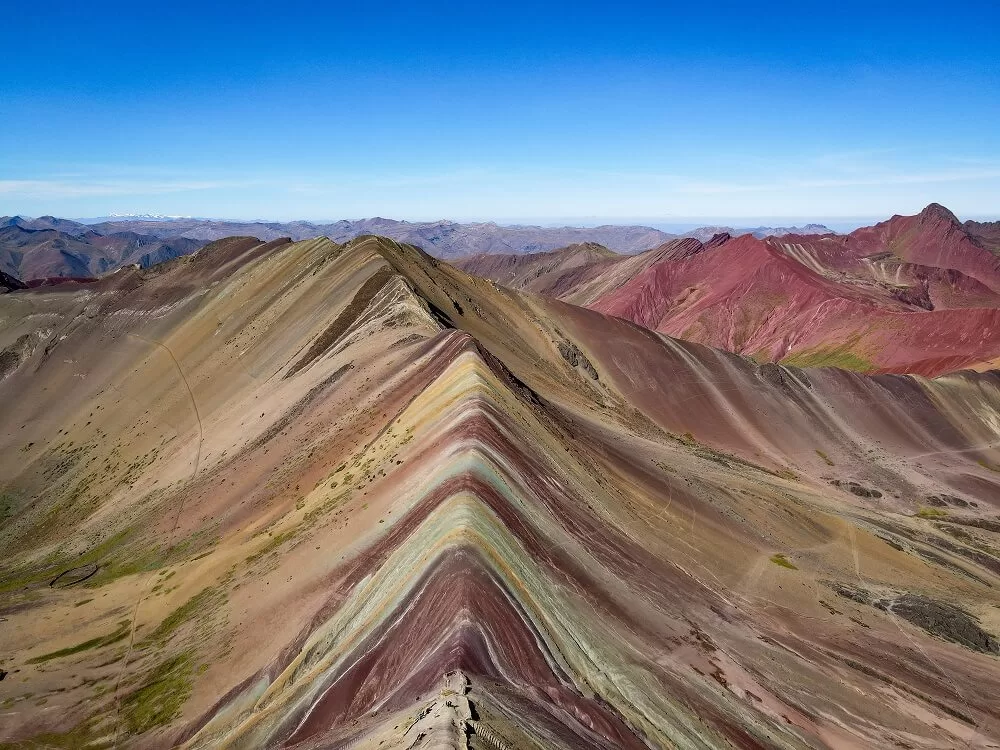
Table of Contents
How to Start Planning Your 3 Week Peru Itinerary
We totally appreciate that Peru is a huge and very diverse country, filled with endless places to visit. So, if you have a short amount of time, it can be tricky to cram everything in.
Below we’ve highlighted a few points that you should consider as you’re planning your trip:
Step 1: Entry and Exit Points in Peru
The way we suggest starting to plan your 3 week Peru itinerary is to know your entry and exit points from the country. Are you only visiting Peru and flying in and out of Lima ? Or are you on a backpacking trip across South America? This means you might be crossing the land borders from Ecuador or Bolivia. If so, your itinerary might be slightly different and you could start from one end of the country and exit at the other.
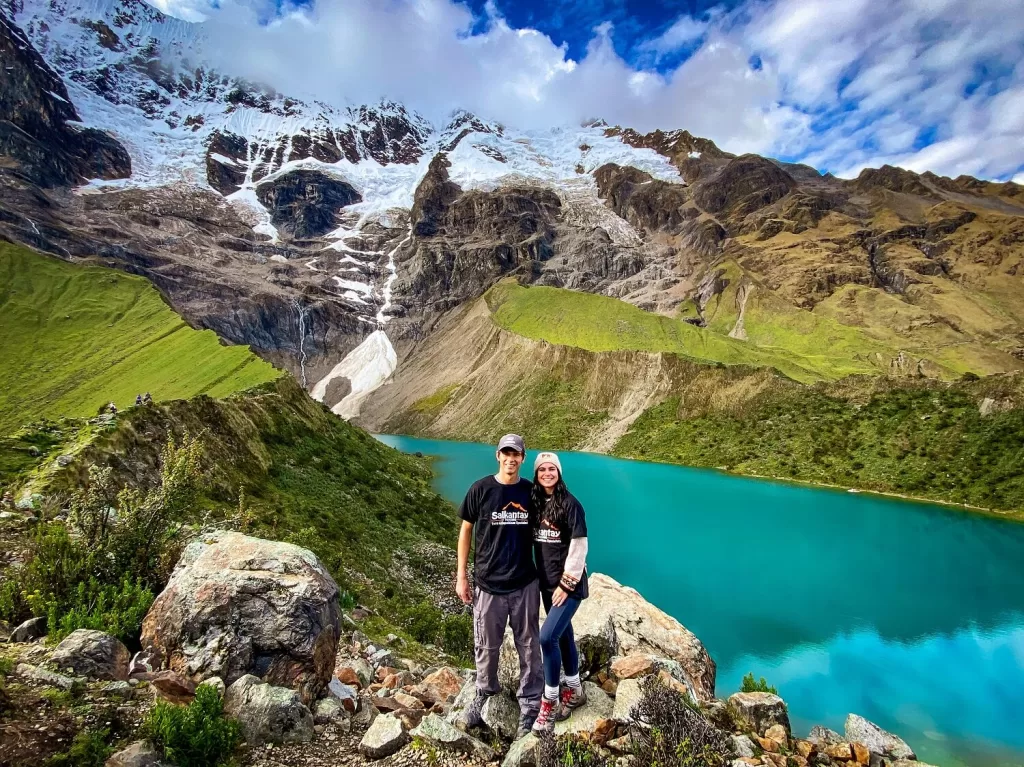
Step 2: Your Personal Interests
It’s also important to think about your interests. We’re pretty sure that one of the reasons for your visit is to see Machu Picchu . Did you know that there are MANY ways you can reach Machu Picchu ? So, the question you need to ask yourself is: would you want to complete a trek, a shorter hike or are you not a keen hiker at all and would prefer to visit with a day trip from Cusco ?
The same method can be applied to other places in Peru too. For example, would you want to visit the Amazon Jungle or complete other treks in Huaraz ? If so, then you need to calculate how many days you’d need in total.
Once you know the answer to these questions, then you’ll know how many days they would take up from your 3 week Peru itinerary.
In case you have a very limited time in Peru, we recommend joining some organised multi-day tours. That way you won’t have to worry about planning, and you can fully enjoy your time in this incredible country.
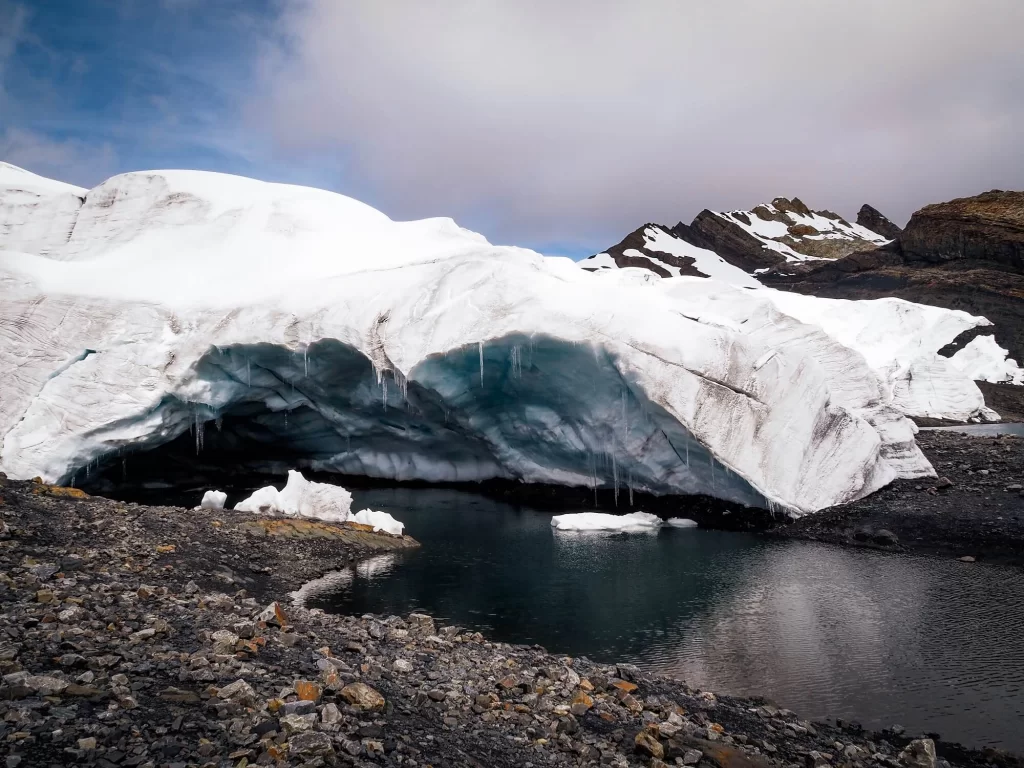
Step 3: Acclimatisation Time in Peru
Once you have your number of multi-day adventures finalized, see how many days you’re left to play with. We’d also like to emphasize that you should take into consideration some acclimatisation time.
Places like Arequipa , Cusco , Puno and Huaraz are located at high altitude. Therefore, it’s important that you acclimatise before completing any high-altitude hikes and day trips like the Colca Canyon , Inca Trail, Salkantay Trek or the Rainbow Mountain day hike.
Trust us, you don’t want to feel ill during your time in Peru.
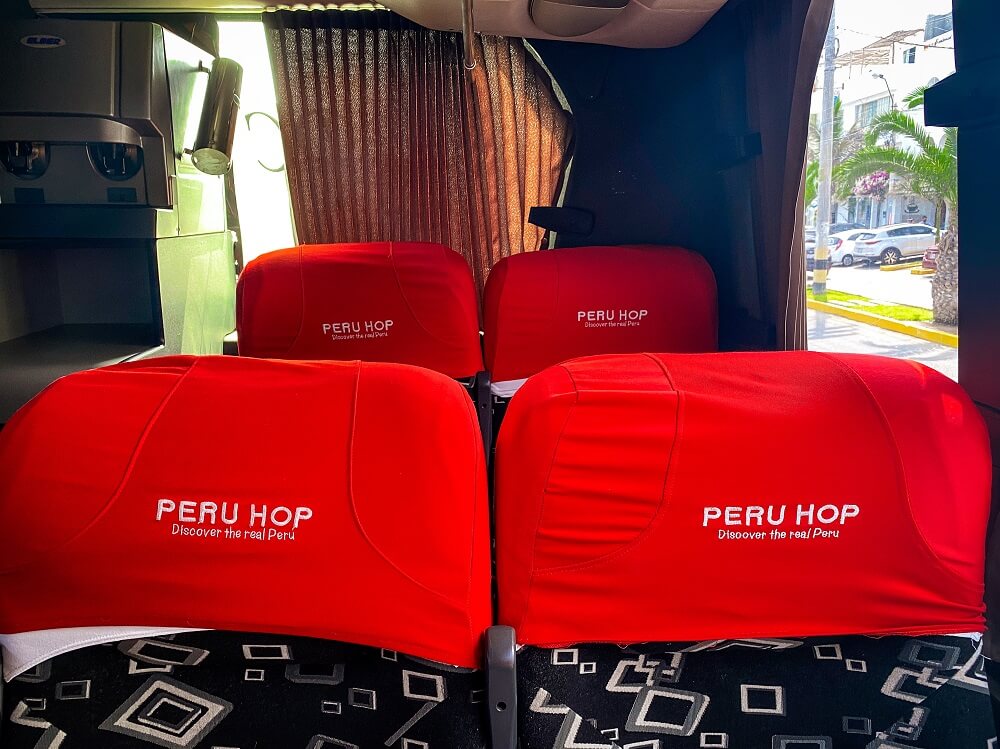
Step 4: Method of Transport in Peru
Lastly, don’t forget that Peru is huge. This means that travel distances are much greater than anywhere in Europe for example.
It’s good to decide how you’d like to get from A to B and check what viable options there are.
Flying to certain places in Peru is definitely the fastest method. However, it is way more expensive and there are many popular places that don’t even have an airport. So you’d have to take another method of transport to get there.
Whilst driving gives you more freedom and also allows you to access some off-the-beaten path places, driving in Peru looked pretty frantic. The distances are long and the narrow mountain roads can be dangerous. Renting a car might be a great option for short trips, but we personally wouldn’t choose to travel across the country in a hire car.
There are a few trains across Peru, which could be a great novelty experience. So we recommend checking out your options. Train travel will still be more expensive though, and again, you can only access a handful of places.
Without doubt, travelling by bus will be your go-to method of transport in Peru. Buses are the cheapest and best way to get around the country.
Read Next: A Guide to Bus Travel Around Peru.
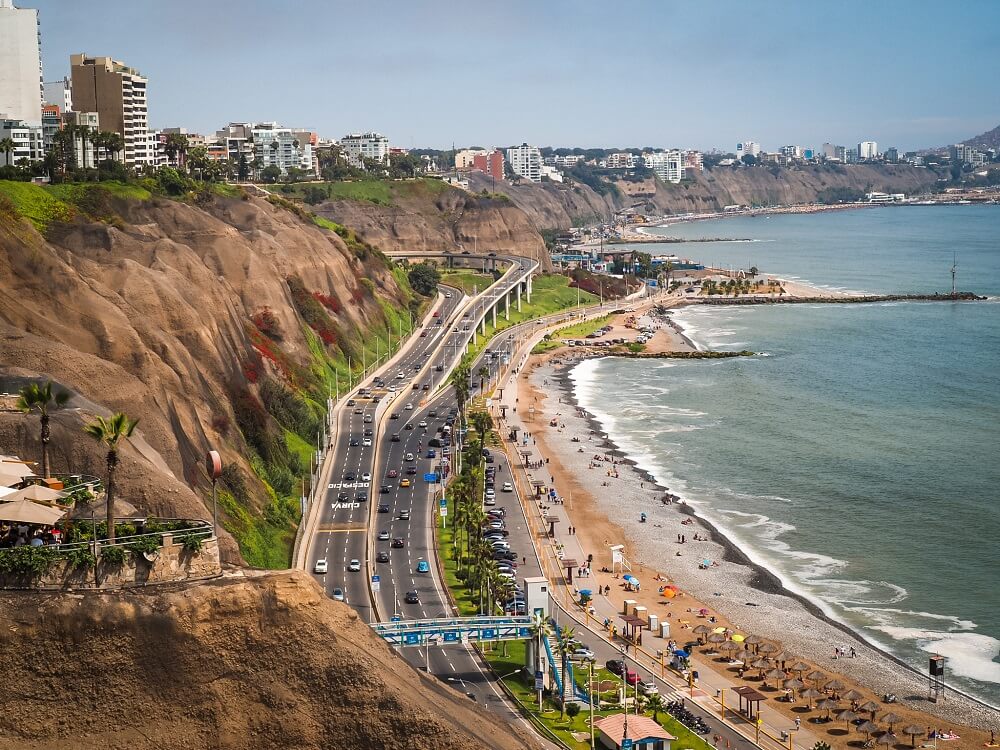
3 Week Peru Itinerary: A Complete Guide
Note that this 3 week Peru itinerary is fully customisable. You can add or skip a destination depending on your interests. We’re big hikers, so we were automatically drawn to places around the Andes. However, if you enjoy other types of destinations such as beaches, then definitely add those to your own itinerary.
We have many detailed guides for each location too, which go in-depth on how much time you ideally need in each place. So, make sure to check them out whilst you’re planning.
Day 1-3: Lima (Explore the Capital City of Peru)
If you’re heading to Peru, then visiting its capital city, Lima, is a must. You can spend as little or as long as you wish there, but about 3 days in Lima would give you the greatest chance to see the best of the city.
Lima is a city that’s got just about everything for an unforgettable city break. Do you want to learn about history? There’s plenty in the Historic Centre , not to mention the ancient pyramid in the middle of the upscale Miraflores District . Fancy seeing some murals and street art? Lima’s Barranco District has got you covered.
Do you want to relax in parks and enjoy some nature in a busy city? There are plenty of unique parks in Lima, some where you can even play with cats.
Is finding great restaurants and cafes with good food your priority. Well, there’s no shortage of places in Miraflores or Barranco. Perhaps shopping is your weakness? Then head to a unique shopping mall built into the side of the cliff overlooking the Pacific Ocean.
Are you in a hurry? – Then you can just spend 2 days in Lima and head to Paracas on your third day.
Lima Blog Posts You May Like:
- A Complete Guide to Lima, Peru – Travel Tips and 3 Day Lima Itinerary
- Best Things to Do in the Miraflores District of Lima, Peru
- Best Things to Do in the Barranco District of Lima, Peru
- Things to Do in Lima’s Historic Centre, Peru
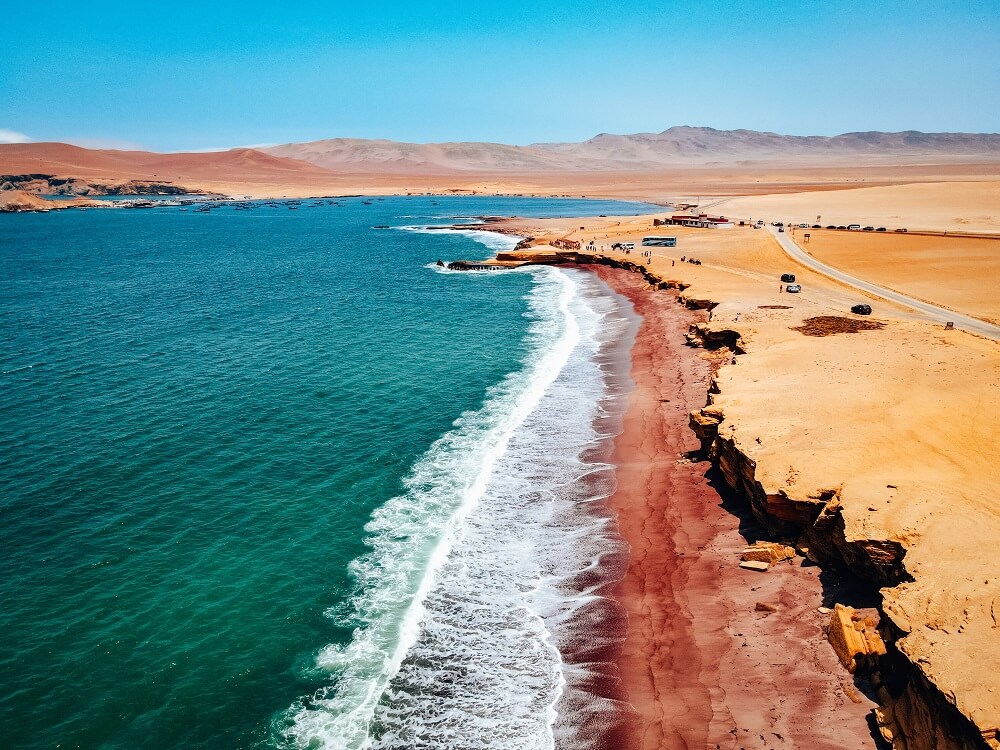
Day 4: Paracas (Visit the ‘Poor Man’s Galapagos’)
Paracas is a small port town located in the Ica Region, about 260 km (160 miles) south of Lima.
Over the years Paracas has become a well-known beach resort and is favoured by both Limeños and tourists. Whilst the beach itself isn’t one to write home about, there are a few top sights that are well-worth stopping for, such as the Islas Ballestas and Paracas National Reserve. Plus, it’s a great sunny getaway before you head to the mountainous regions in Peru.
Are you in a hurry? – We recommend staying for at least one night, but if you’re only interested in visiting one attraction then you can head to Huacachina in the afternoon.
Click here to read our detailed Paracas guide.
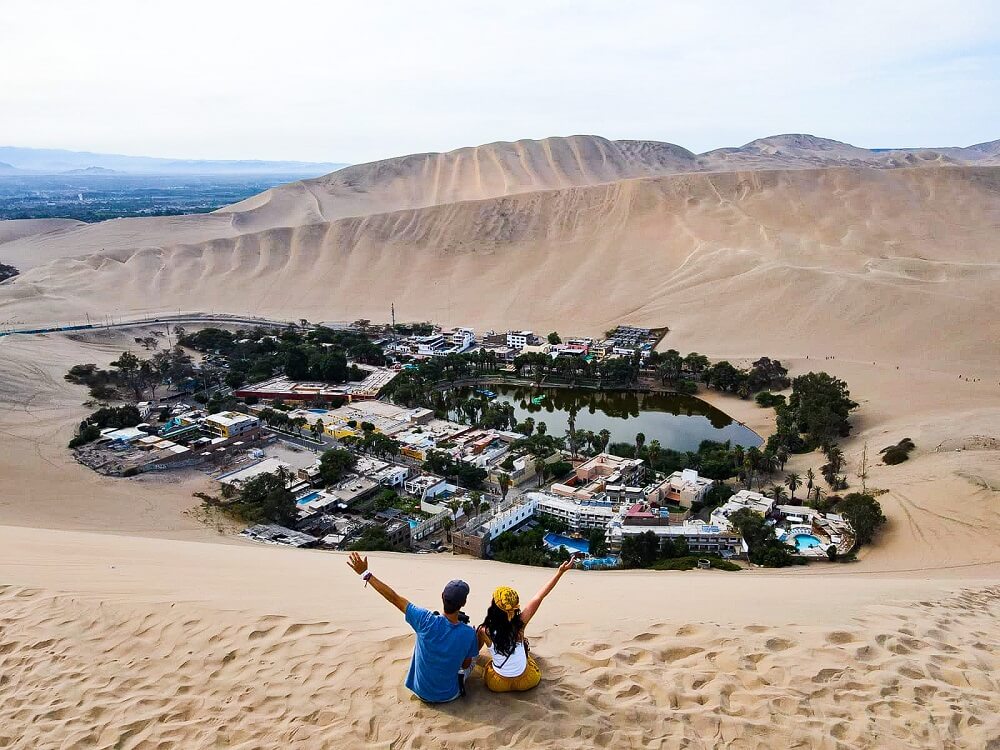
Day 5-6: Huacachina (See the Biggest Sand Dunes in South America)
Huacachina is a tiny, natural desert oasis surrounded by some of the biggest sand dunes in South America . A place where thousands of adventure lovers and thrill-seekers come every year to do some crazy activities such as dune buggying and sandboarding.
You’ll probably need to spend at least one night in Huacachina. You can go for a sunset dune buggy ride and sandboarding experience upon arrival. Then the next morning you can hike the sand dunes for some incredible views. After that you can join a Pisco and Tejas tour before heading to Nazca.
Click here to read our detailed Huacachina guide.
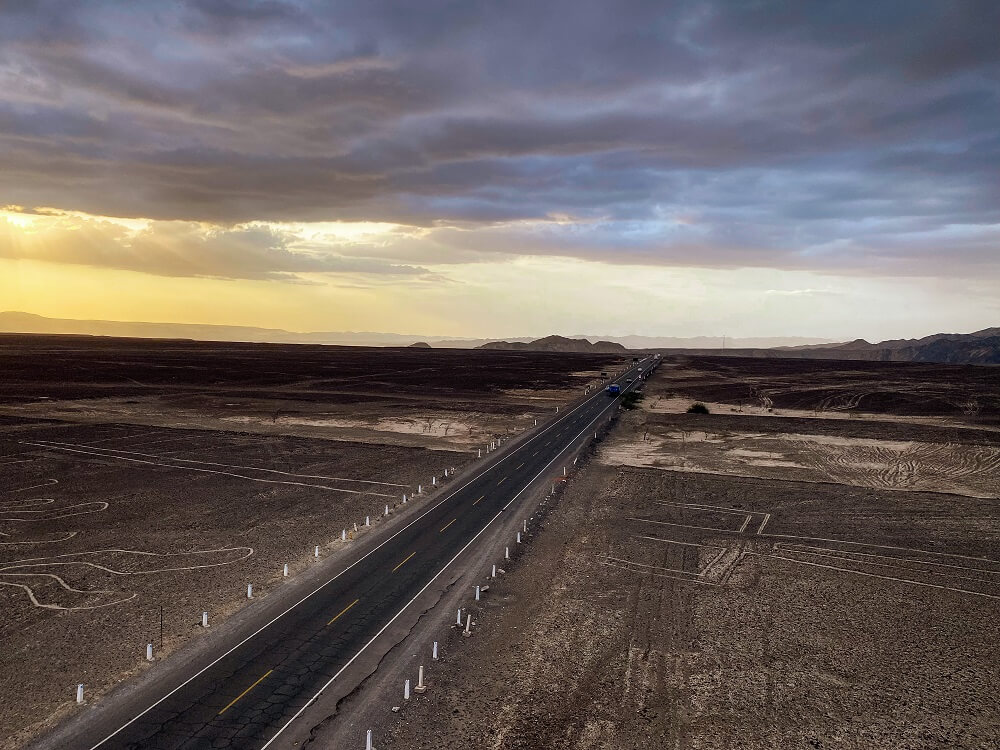
Day 6: Nazca (Fly Over the Mysterious Nazca Lines)
Many visitors add a visit to the Nazca Lines in Peru to their 3 week itinerary. Whether you’re planning on flying over the lines or just enjoying the views from the Observation Tower, Nazca is definitely a worthwhile stop.
Are you in a hurry? – If you can’t fit in one night in Nazca, then you can just enjoy the Nazca Lines from the Observation Tower, have dinner in the city and hop on an overnight bus to Arequipa.
Do you have time to spare? – If so, we recommend booking at least one night in Nazca. Surprisingly, there are many interesting and unusual sites surrounding the city other than the Nazca lines. Therefore, if you have time, make sure to stay a bit longer.
Click here to read our detailed Nazca guide.
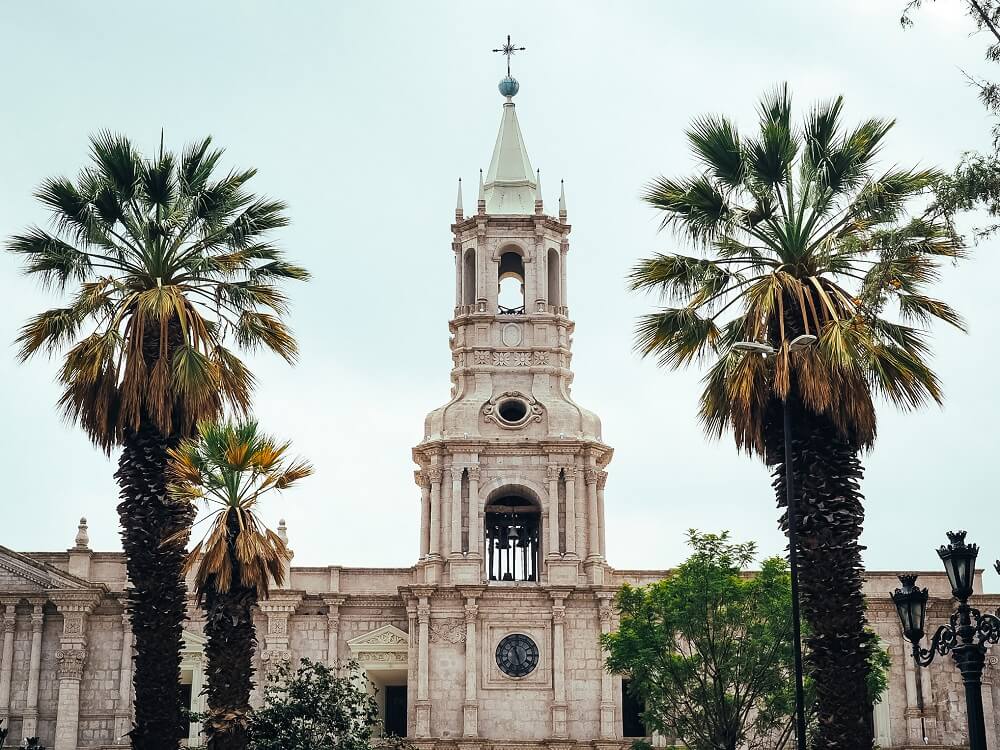
Day 7-8: Arequipa (Explore the White City of Peru)
Located in the south of Peru, in the Chili River Valley, is Arequipa. It is the second most populated city in Peru after Lima. The city is situated about 2,300m (7,550 feet) above sea level and at the foot of three massive volcanoes: Misti, Chachani and Pichupichu.
The city is referred to as the ‘White City’ ( La Ciudad Blanca ) because of the white walls of many of its colonial buildings. The walls are made of sillar which is a local white volcanic stone.
Arequipa is one of the most architecturally beautiful cities in the world. So, it’s no wonder that just like Lima’s Centro Historico , Arequipa’s historical centre was declared a UNESCO World Heritage Site.
If you’re short on time , then you can just wonder around its Historic Centre on the day you arrive from your night bus.
Do you have a bit longer? – Then about 2 days will be enough to see the city’s highlights in a less-rushed way.
Arequipa Blog Posts You May Like:
- 10 Best Things to Do in Arequipa
- 6 Day and Multi-Day Trips from Arequipa, Peru
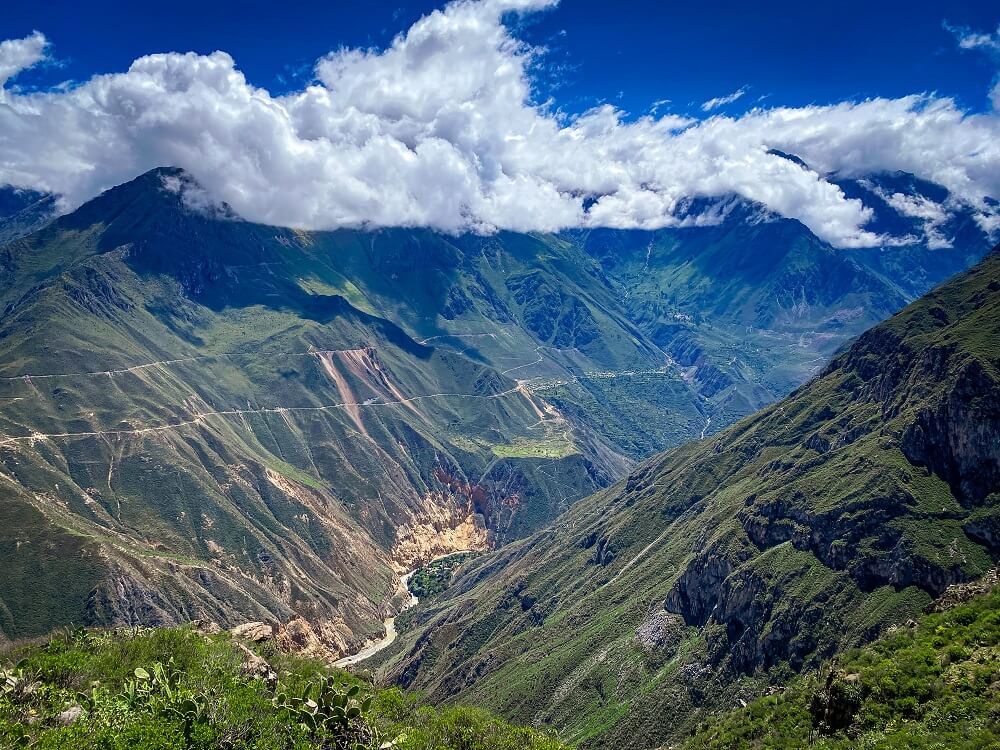
Day 9-10: Colca Canyon (Hike in One of the World’s Deepest Canyons)
Located about 160km northwest of Arequipa is the magnificent Colca Canyon (Cañon de Colca). Situated in the Colca Valley in the Andes Mountains, the Colca Canyon was formed by a seismic fault between the volcanoes of Coropuna and Ampato.
The nearly 100 km (70 mi) long canyon is also one of the world’s deepest canyons. Its deepest point is approximately 3,400m which makes it twice as deep as the well-known Grand Canyon in the US.
You can visit the canyon in two main ways: via a tour or a trek. Now, a tour will normally include little to no hiking whereas a trek will take you down and then back up the canyon.
Depending on how much time you have and whether you enjoy hiking or not, you can join a day tour , multi-day tour or a multi-day trek. The most popular multi-day trek is a 2-day one, although you can also complete a longer trek if you have extra time.
Top Tip – Make sure to allow for some acclimatisation time in Arequipa if you’re planning on trekking in the Colca Canyon.
Colca Canyon Blog Posts You May Like:
- Colca Canyon Trek or Tour? – How to Prepare for Your Visit
- 3-Day Colca Canyon Trek via Llahuar, Peru – A Complete Hiking Guide
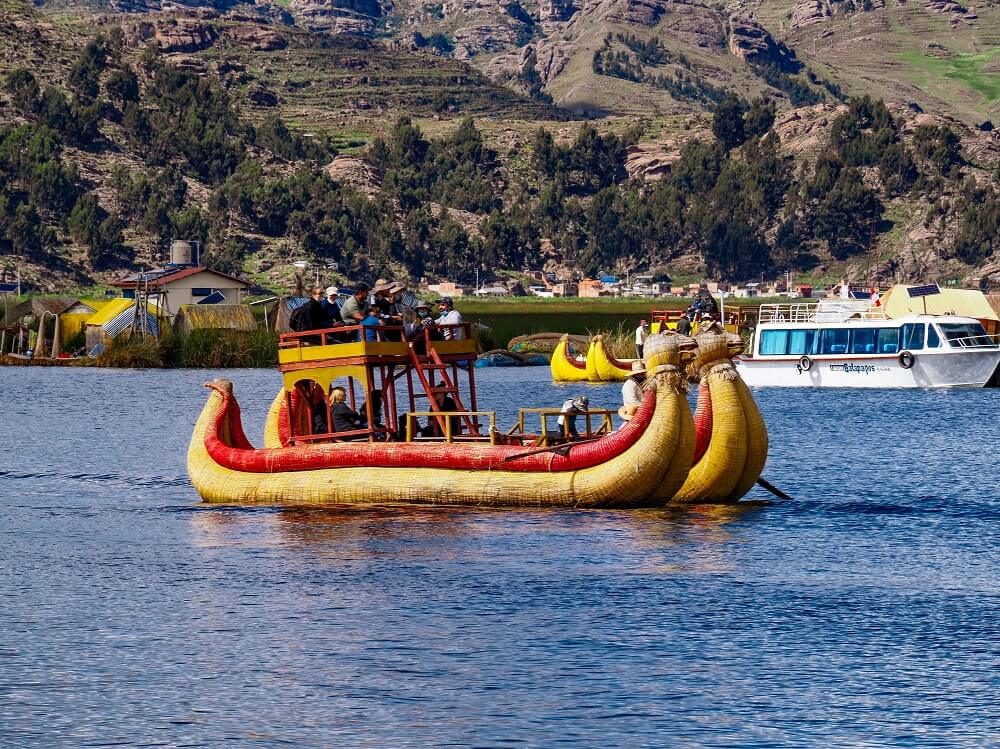
Day 11-12: Puno and Lake Titicaca (Visit the Highest Navigable Body of Water in the World)
Located on the shores of Lake Titicaca, about 3,830 m (12,556 ft) above sea level in south-eastern Peru, is the city of Puno.
Many probably don’t know but Puno is known as the folklore capital of Peru. There are over 300 different local dances that represent old traditions inherited from the Incas and the Spanish colony.
However, the city is a popular stop on many people’s Peru itinerary because of Lake Titicaca. Straddling the border between Peru and Bolivia and covering 3,200 square miles, it is one of South America’s largest lakes. Sitting at 3,810 m above sea level, Lake Titicaca is also considered the highest navigable body of water in the world.
Are you in a hurry? – If you don’t have much time, but still want to see Lake Titicaca, then you can arrive to Puno in the morning, go on a short Lake Titicaca tour which visits the Uros Islands and then head to your next stop on a night bus. This way you don’t even have to spend a night in Puno.
Do you have a bit longer? – If so, then you should stay at least a night in Puno. That way, you can have a wander around the city and also spend a full day on Lake Titicaca. If you can stay for two nights, you can even go on a two-day tour on Lake Titicaca and spend a night with a local family.
Top Tip – If you’re backpacking across South America, then you can leave Puno as your last destination and travel to Bolivia from there.
Click here to read our detailed Puno and Lake Titicaca guide.
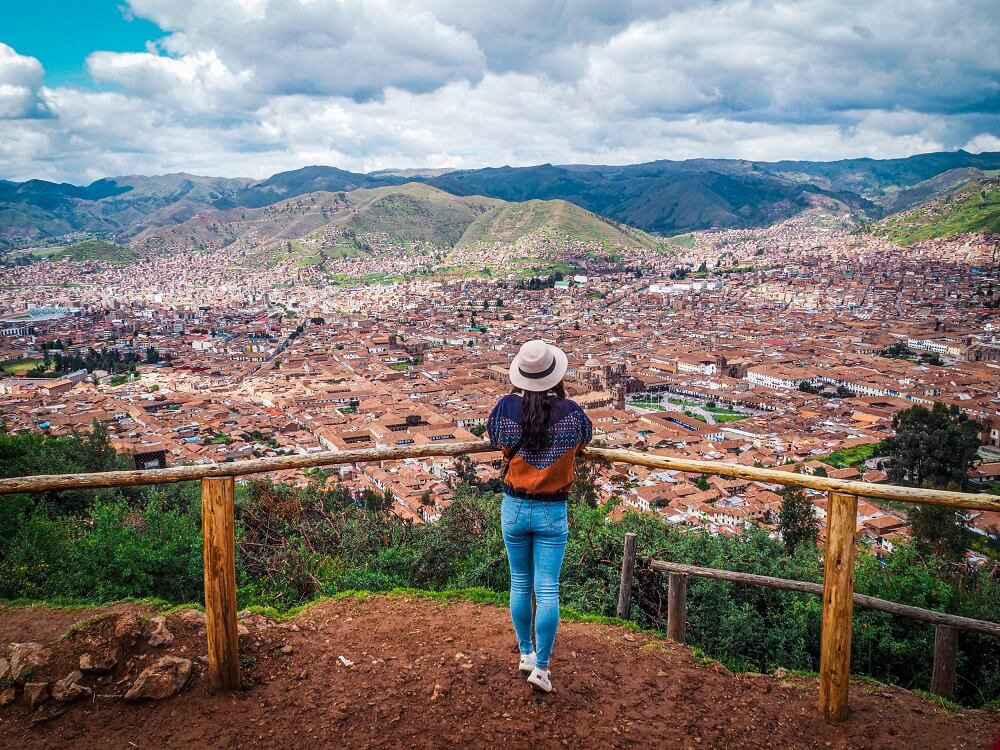
Day 13-14: Cusco (Explore the Tourist Capital of Peru)
Located at 3,400m (11,154 ft) above sea level, Cusco is situated in the heart of one of the world’s most beautiful mountainous regions. Due to its close proximity to Machu Picchu , Cusco is one of the most visited cities in Peru .
The city is packed with places to visit and you could easily spend days exploring its attractions. There are many beautiful Inca Ruins, viewpoints, museums, and markets in Cusco to check out. Therefore, we recommend spending at least 2 full days in the city.
How long to spend in Cusco? – If you’re doing the Inca Trail or Salkantay Trek , you’ll normally have a briefing the evening before, so you won’t have much time to sightsee if you’re only there for a night.
If you’re not going on a multi-day trek to visit Machu Picchu and have already spent some time in higher altitudes, then you can just spend one full day in Cusco and head to Machu Picchu the next day. Alternatively, you can also spend at least a day visiting other sites in the Sacred Valley. In case you only have a few days to see the best of Cusco, then check out this 5-day tour that includes the top destinations in the area.
Cusco Blog Posts You May Like:
- 20 Things to Do in Cusco, Peru – A Complete Guide
- A Guide to Cusco’s Boleto Turistico (Tourist Ticket)
- 10 Best Day Trips from Cusco
- Vinicunca or Palccoyo? – Which Rainbow Mountain to Visit in Peru
- 2-Day Ausangate Trek to Rainbow Mountain, Peru – A Complete Hiking Guide
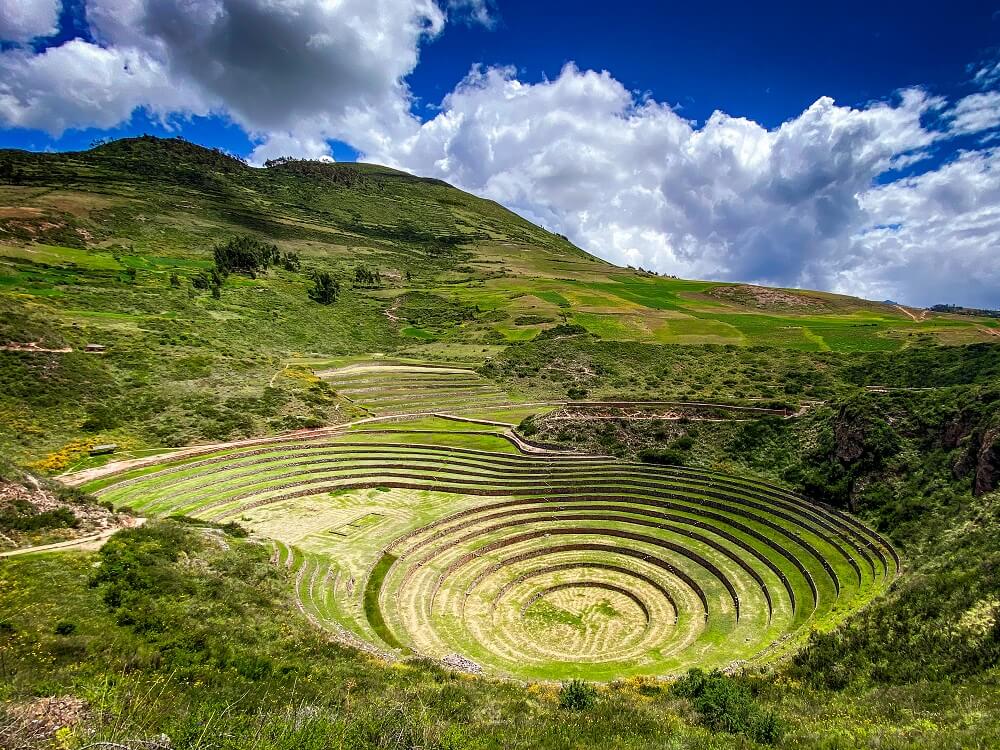
Day 15: The Sacred Valley (Visit the Most Beautiful Inca Sites)
The Sacred Valley of the Incas is located northwest of the city of Cusco. Formed by the Urubamba River, the valley stretches between the towns of Pisac and Ollantaytambo.
This jaw-dropping part of Peru is filled with beautiful Inca Ruins such as Ollantaytambo, Maras Salt Mines, Moray Ruins and Pisac. You can visit them as part of a tour or independently depending on how much time you have.
Sacred Valley Blog Posts You May Like:
- Hiking in the Sacred Valley Without a Guide or Tour (Ollantaytambo, Maras, Moray and Pisac)
- A Guide to Visiting Pisac Ruins
- A Guide to Visiting the Ollantaytambo Ruins
- How to Visit Maras and Moray (Salt Mines and Ruins)
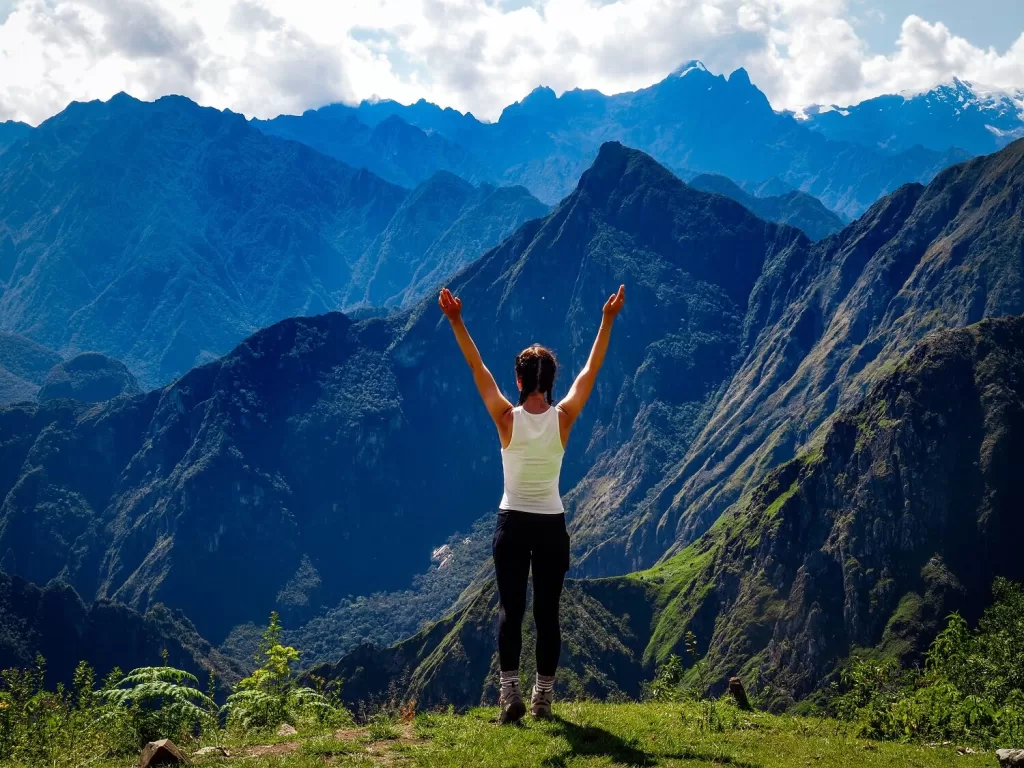
Day 16-19: Salkantay Trek (Hike One of the Most Beautiful Treks in the World)
If you love hiking and trekking then you should add the Salkantay Trek to your 3 week Peru itinerary. It is a 75km (46 mi) long trek through the Peruvian Andes and is one of the most popular ways to get to Machu Picchu.
The Salkantay Trek is still less popular or as famous as the Inca Trail. However, many consider it to be just as beautiful, if not more so. National Geographic Adventure Magazine even listed the Salkantay Trek as one of the best 25 treks in the world.
The trek is named after the Salkantay Mountain which reaches an altitude of 6,271 m (20,574 ft). It takes you through the Vilcabamba mountain range, where you’ll see glaciers and lagoons, before descending down into the Andean Jungle. During your hike you’ll also pass over the Salkantay Pass which is the highest point along the entire trek at 4,630 m (15,190 ft).
The Classis Salkantay Trek is 5 days long, however you can also complete a shorter version of this trek. Alternatively, you can also pick another iconic trek such as the Inca Trail or Jungle Trek.
Don’t like hiking? – Then skip the trek and visit Machu Picchu another way as detailed in this blog post. That way you’ll also save about 4 days which you can then fill up by visiting another location in Peru such as the Amazon Jungle.
Salkantay Trek Blog Posts You May Like:
- All You Need to Know Before Hiking the Salkantay Trek to Machu Picchu
- Hiking the Salkantay Trek – A Day by Day Itinerary
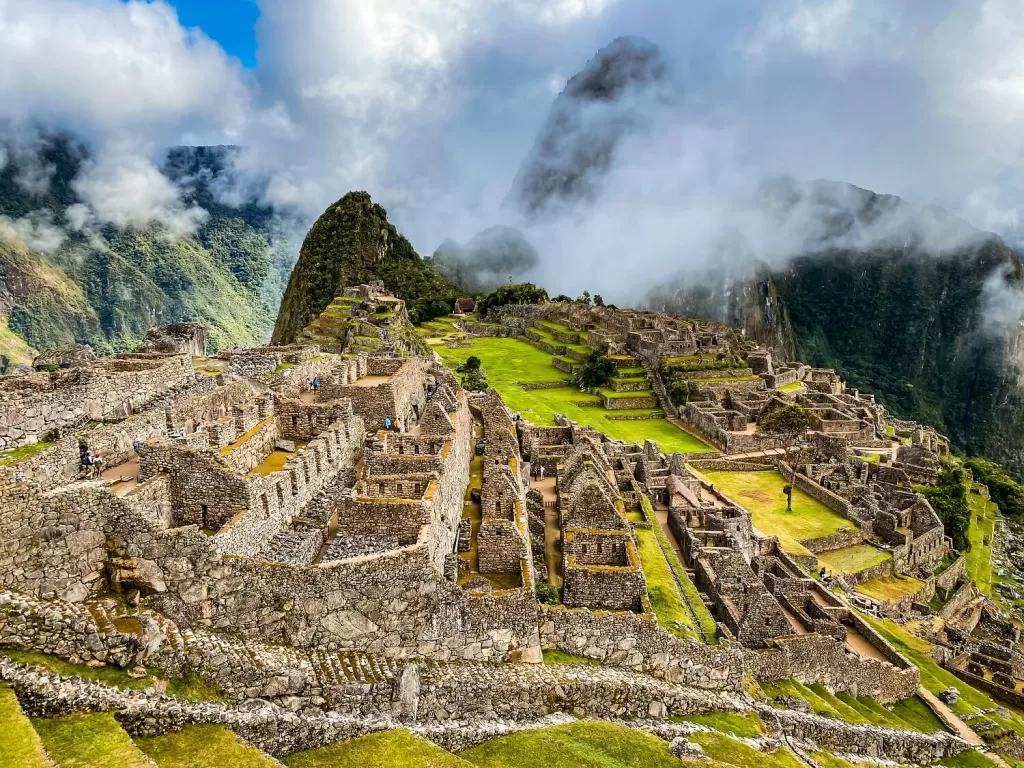
Day 20: Machu Picchu (Visit One of the New Seven Wonders of the World)
Tucked away to the northwest of Cusco, Machu Picchu is one of the New Seven Wonders of the World and also a UNESCO World Heritage Site.
Machu Picchu is without doubt on everyone’s itinerary when visiting Peru. It’s also considered one of the most visited places in the world.
According to historians, Machu Picchu was built by the Inca. The site consists of more than 150 buildings including houses, temples, sanctuaries and baths.
Whilst it was built in the 15th century nobody really knew about the site until Hiram Bingham found it in 1911. Whilst he might not have been the first one to discover it, he was vocal about his discovery and wrote a book called ‘The Lost City of the Incas’ that gained a lot of attention and started bringing in visitors.
Many believe that Machu Picchu was a royal estate and a sacred site for the Inca nobles. Based on the stunning landscape surrounding the site, we can totally see why Inca leaders would pick this spot for their estate.
Machu Picchu Blog Posts You May Like:
- A First Timer’s Guide to Visiting Machu Picchu, Peru
- 10 Best Ways to Get to Machu Picchu
Day 21: Cusco to Lima (Saying Goodbye to Peru)
If you’re leaving the country from Lima, then from Cusco you can just fly back to Lima and connect with your international flight out of the country.
In case you’re on a backpacking trip and heading to Bolivia, then we suggest visiting Cusco first and ending your trip in Puno. From there you can take an international bus across the border to Bolivia.
If you’re heading north towards Ecuador , then we suggest starting your trip in Puno and making your way up to Lima and further north.
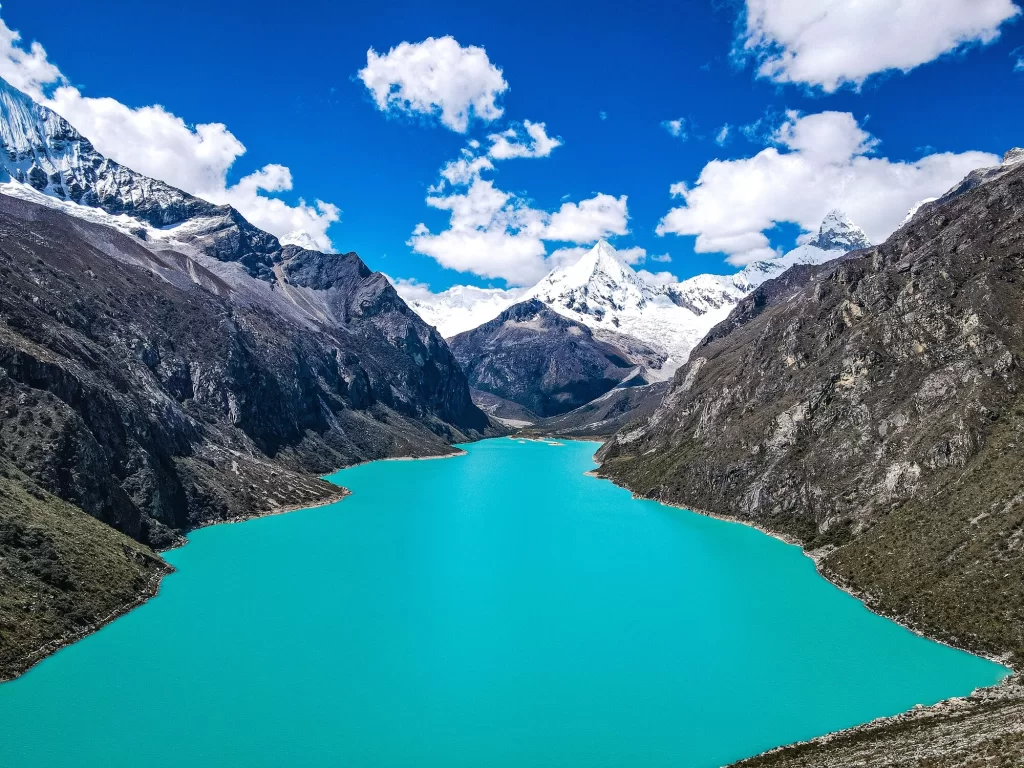
Additional Places to Add to Your 3 Week Peru Itinerary
Below are some popular areas in Peru that you might also want to visit. If you carefully plan your days, and perhaps use our tips to shorten the time spent in each location, you can easily add some extra destinations to your 3 week Peru itinerary.
Do you have 4 weeks to spend in Peru? If so, then you can also just add these places for a longer stay in the country.
Huaraz (Visit the Hiking Capital of Peru)
If you’re an outdoor enthusiast like us, then you can consider adding Huaraz to your 3 week Peru itinerary. Located about 420 km north of Lima , Huaraz is the capital of the Ancash Region. The city sits around 3,050 m (10,013 ft) above sea level in the middle of the Callejon de Huaylas valley.
The valley stretches for about 150km and it divides two mountain ranges, the Cordillera Blanca (‘White Mountains’) to the east, and the Cordillera Negra (‘Black Mountains’) to the west.
Many visitors from all over the world arrive in the city to go hiking, climbing, mountain biking or just to visit the mountains and glaciers of the Cordillera Blanca mountain range within Huascaran National Park.
- A Complete Guide to the Best Things to Do in Huaraz
- A Guide to Hiking Laguna 69 in Huaraz, Peru
- A Guide to Visiting Pastoruri Glacier in Huaraz
- A Guide to Visiting Laguna Paron in Huaraz
- A Guide to Hiking Laguna Wilcacocha in Huaraz
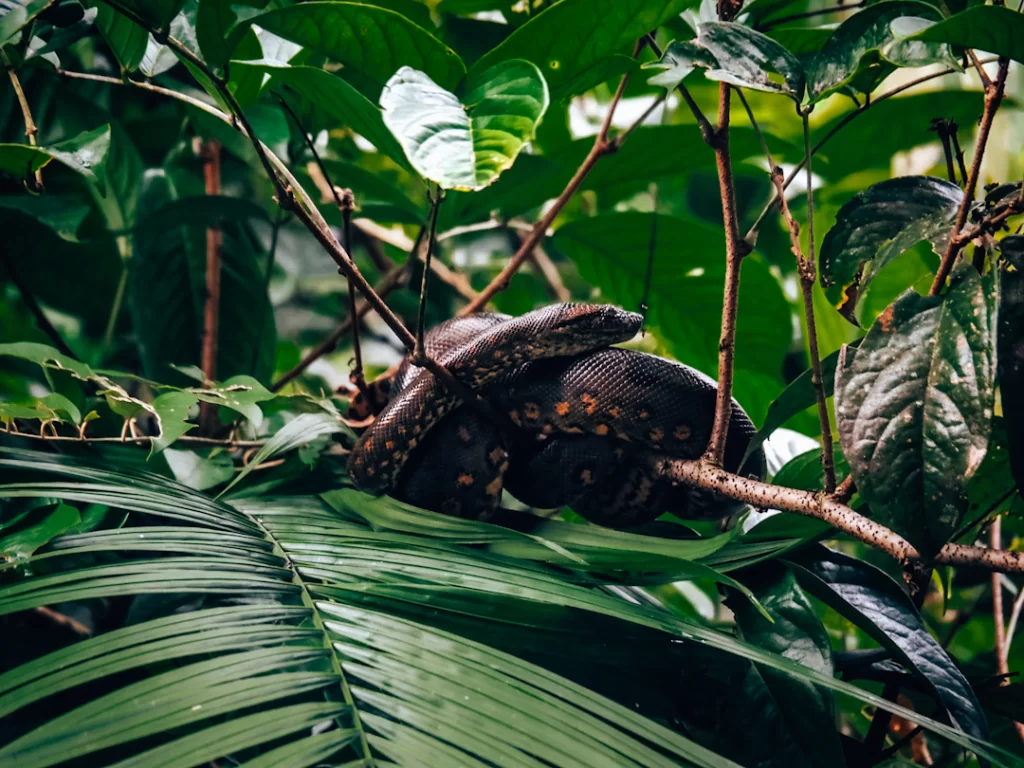
Iquitos Amazon Jungle (The Ultimate Wildlife Experience)
Covering a staggering 5.5 million sq km across South America, the Amazon Jungle makes up over half of the world’s remaining rainforest. It is home to thousands of different species, from snakes and spiders, to monkeys and even dolphins.
The jungle stretches across nine countries on the continent, with Peru containing the second largest amount of rainforest after Brazil.
The Peruvian Amazonia itself comprises around 60% of the country. Deep inside the rainforest is the city of Iquitos, which is the largest metropolis in the Peruvian Amazon. From Iquitos you can take a boat deep into the heart of the Peruvian jungle to spend a few nights in a rustic lodge whilst exploring a tiny section of this incredible rainforest.
Mancora and Huanchacho (Peru’s Beach Destinations)
Let’s be honest, when someone mentions Peru, beaches aren’t the first things that come to mind. However, if you have extra time or you’re backpacking across the entire country, then you might want to stop in Mancora and Huanchacho.
This part of Peru is known to be the go-to place for surfing and other water activities. Mancora is also a great place for nightlife and filled with bars and restaurants. It’s definitely a more relaxed destination at lower altitude and with warmer temperatures that can be very tempting after spending a long time in the cold mountains.
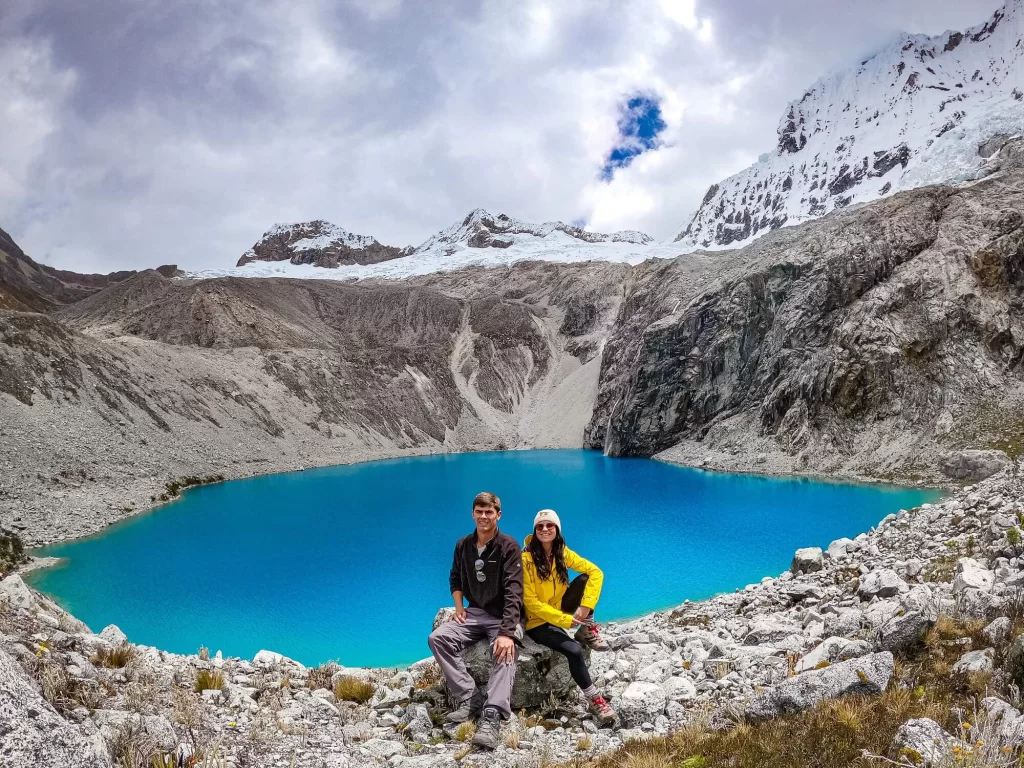
Final Thoughts on Our 3 Week Peru Itinerary
We hope that you found this 3 week Peru itinerary useful when planning your adventures. The country is definitely filled with a huge variety of attractions, so we appreciate that it can be pretty difficult to fit everything in.
Our best advice is to be realistic with your time and interests and try to plan your trip around those. You’ll have a much better time if you just focus on visiting the places you really want to see rather than trying to jam-pack everything in.
We are incredibly grateful that we could spend not just 3 weeks but nearly 3 months in Peru. During this time, we took things slowly and stayed at places much longer than most people usually can. However, even spending that long in the country still didn’t allow us to see everything that we initially pinned on our map. Don’t forget, you can always return to a country and visit another part of it on a separate trip.
Have you ever been to Peru before? If so, how long did you visit for? What was your favourite place? If not, how long would you like to spend in the country? Let us know in the comments below.
Now, let your adventure begin,

Our Top Travel Resources
Accommodation: For hotels we always use Booking.com and Hostelworld for hostels. We also book longer stays on Airbnb or Vrbo.
Flights: To find the best flight prices we always check Skyscanner , Google Flights or WayAway. Then we also check the airlines’ websites too for comparison.
Car Rentals: We use Discover Cars when we want to rent a car as it compares local, national and international companies.
Activities: If we book organised tours we always check either GetYourGuide or Viator.
Foreign Currency: Whenever we can we prefer to pay in local currency and for that we always use our Wise card. We can easily withdraw money from the ATM or pay by card at most shops and restaurants.
Travel Insurance: We never go anywhere without travel insurance. You never know what will happen on your trip, so good travel insurance like SafetyWing can protect you in case of injury, illness, theft and cancellations.
eSIM and VPN: To get data abroad we use Airalo which is an app that allows you to download a prepaid eSIM to your phone in over 190 countries. Make sure to have a VPN to avoid hackers accessing your personal data when using public WIFI. We use Surfshark which is the only VPN that offers one account on unlimited devices.
Remember…It all starts with a Pin…
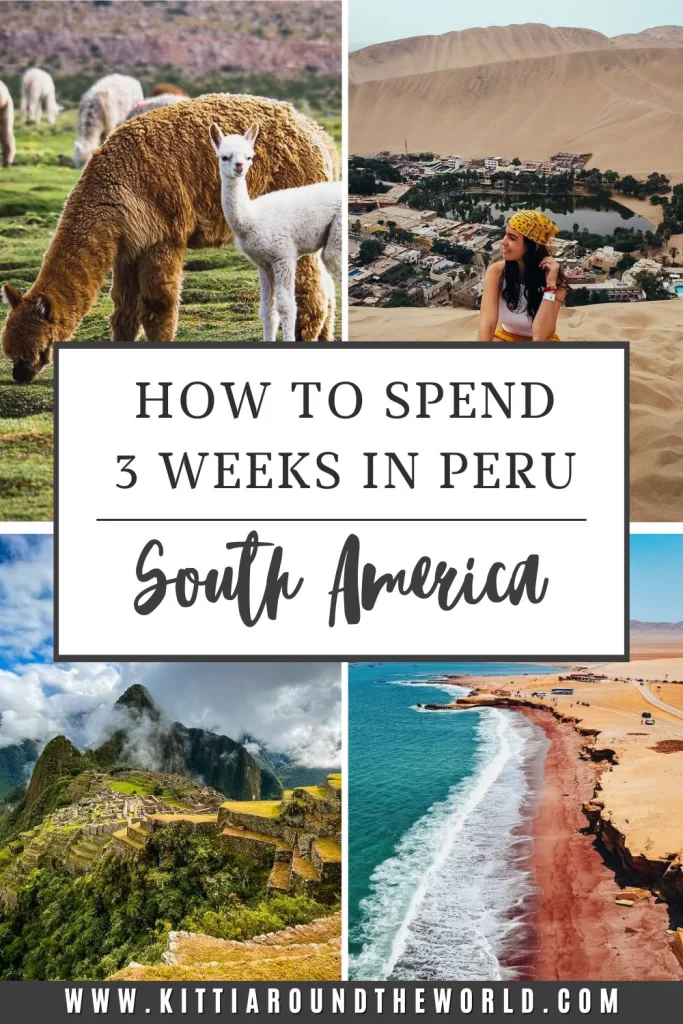
Similar Posts
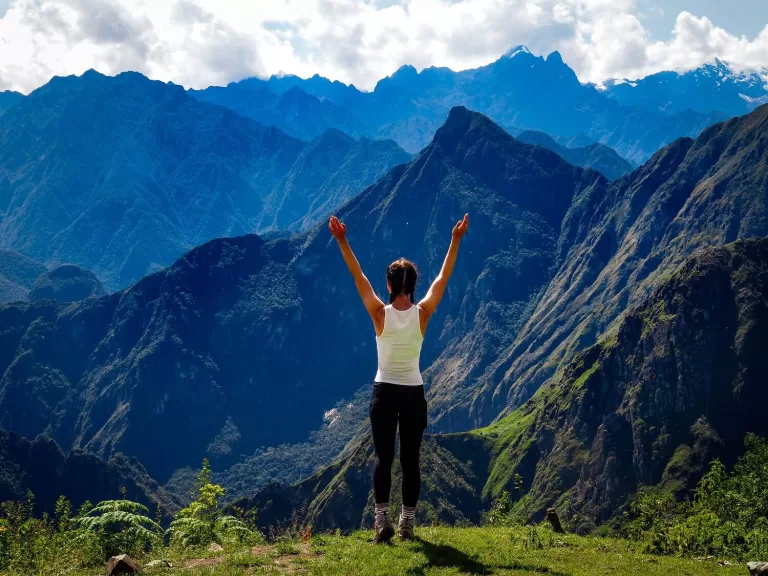
Hiking the Salkantay Trek, Peru – A Day by Day Itinerary
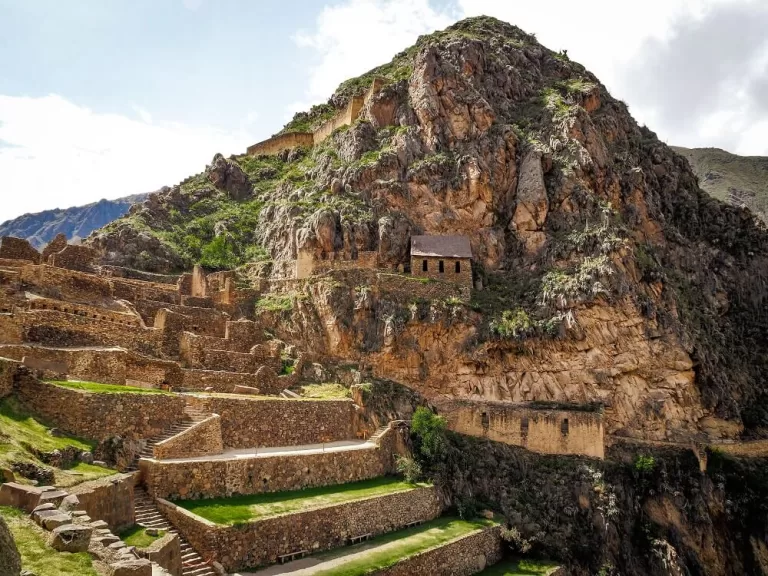
A Guide to Visiting the Ollantaytambo Ruins, Peru
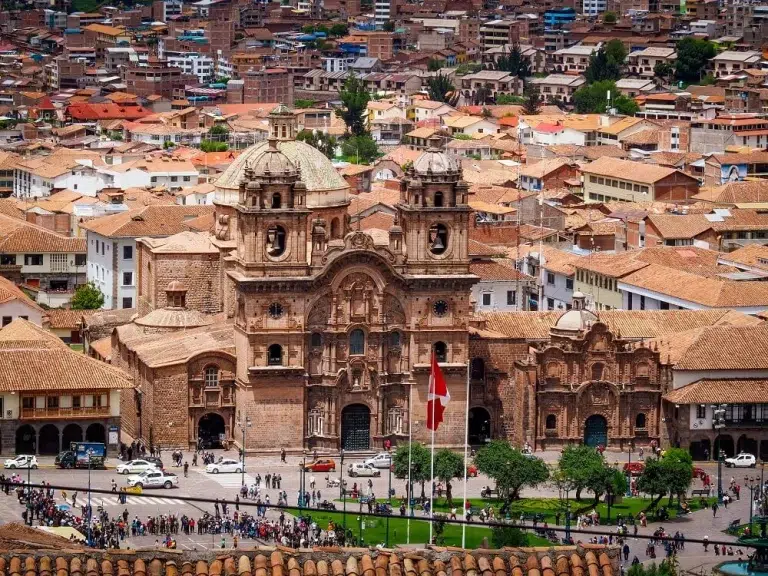
20 Things to Do in Cusco, Peru – A Complete Guide
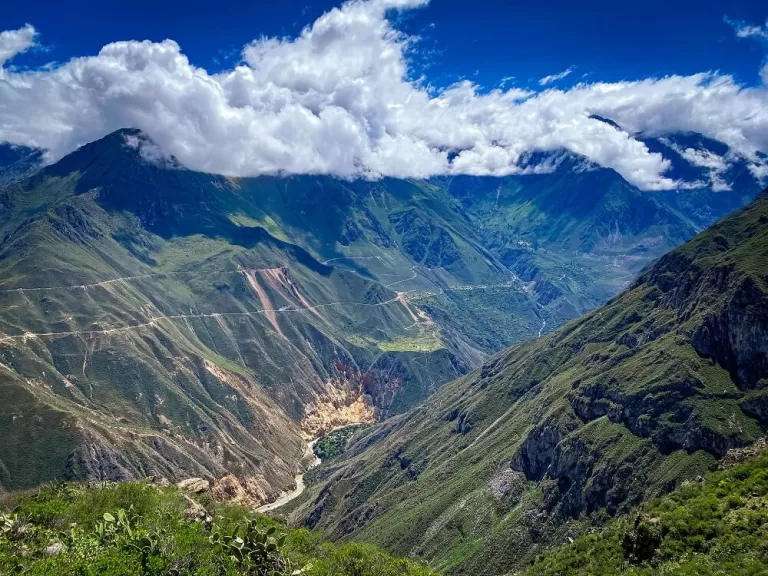
Colca Canyon Trek or Tour? – How to Prepare for Your Visit
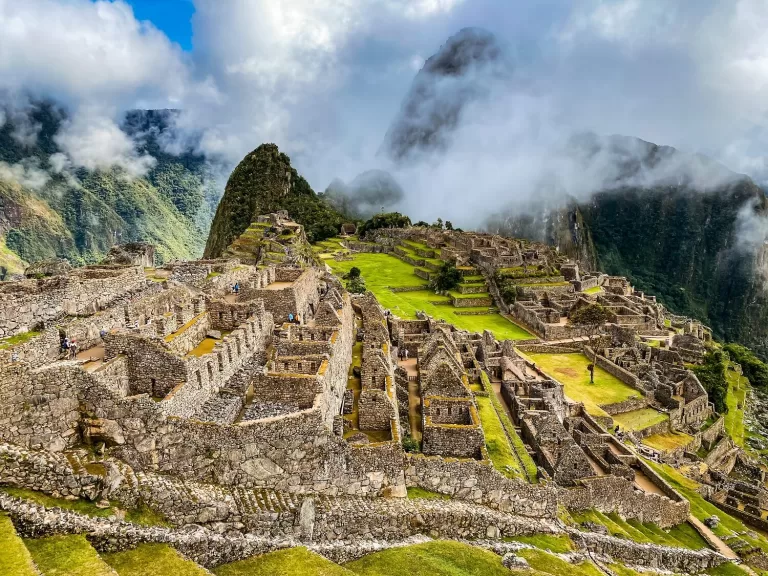
A First Timer’s Guide to Visiting Machu Picchu, Peru
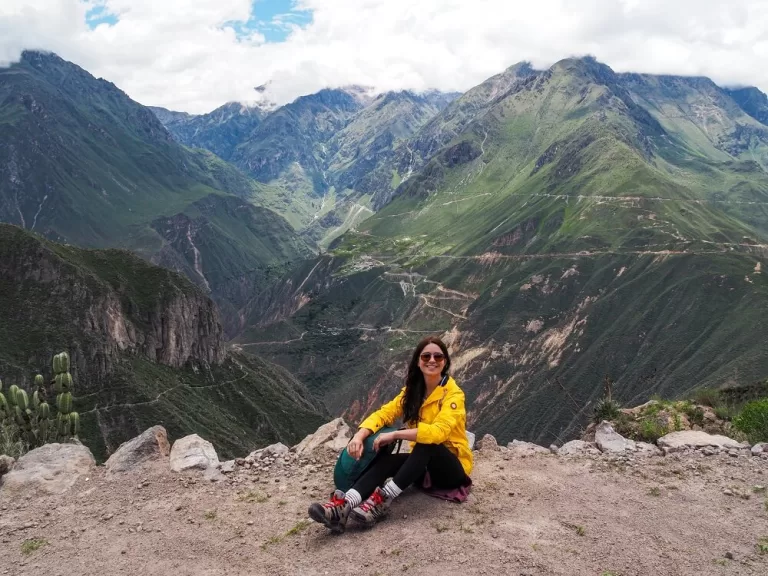
3-Day Colca Canyon Trek via Llahuar, Peru – A Complete Hiking Guide
It has all you need! Thanks for a really useful guide 😍
Thank you Karan, we glad you found this itinerary useful 🙂
As always you deliver such in-depth itineraries on your blog. I loved reading this listicle of the top things to do in Peru and I’ll be saving this for a future trip. By the way, I love your photos they’re absolutely stunning! Thanks for sharing this Kitti!
Thank you so much Kelly, your positive feedback means a lot! Hope you can visit Peru soon.
What a wonderful and detailed post about Peru. I’m jealous just reading about this amazing, and long, adventure. Looks like so much fun. The photography is great!
Thank you Sarah, we’re so happy to hear that you enjoyed reading our guide.
Leave a Reply Cancel reply
Your email address will not be published. Required fields are marked *

2-Week Peru Itinerary: Lima, Cusco, Machu Picchu + More
If you are planning a trip to the heart of South America and explore the wonders of Peru, then you are in luck. Peru is one of my favorite countries in the world and my intended 1-month Peru trip actually turned out to be several months.
But I won’t bore you with every detail of my Peru journey (including an excruciating 24-hour bus ride), so I condensed all the highlights into an amazing 2-week Peru itinerary that’s going to give you a taste of the best this beautiful country has to offer.
From the ruins of Machu Picchu to the ancient city of Cusco and the vibrant seaside of Lima, our 2 weeks in Peru itinerary has something for everyone, whether you are you’re into adrenaline-pumping activities, culinary adventures, or historical exploration.
So let’s wait no further, let’s see the highlights on our Peru two-week itinerary!
Where To Fly Into? Lima or Cusco?
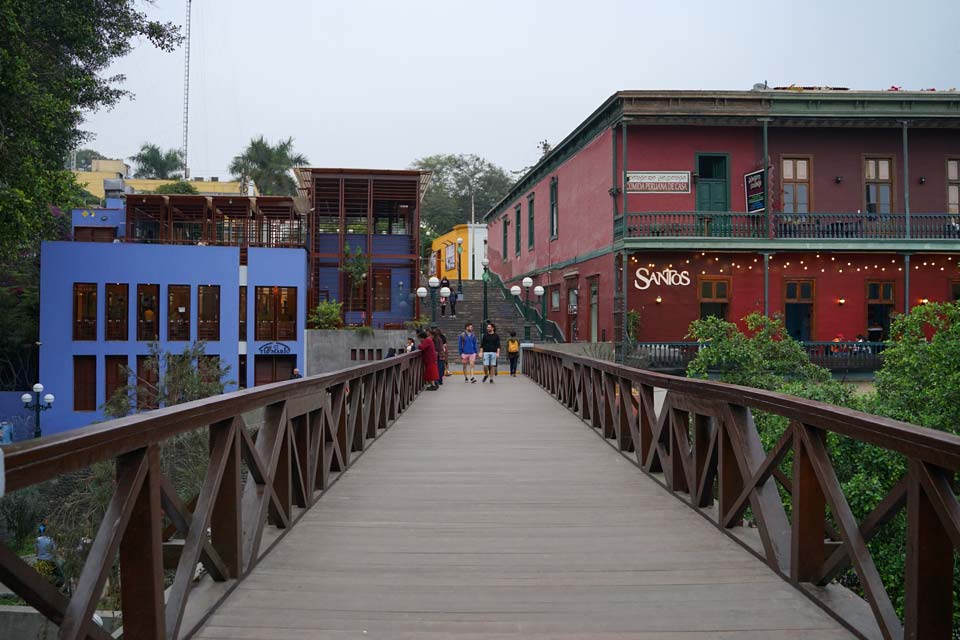
The first question many travelers have when planning their trip to Peru is whether they should fly into Lima or Cusco. Both cities seem like a good starting point for your 2-week Peru adventure.
When it comes to sightseeing, flying into Cusco or Lima does not make much a difference. Because we’ll see both in our Peru travel itinerary, it’s only a question of whether you are seeing Lima last or Cusco last, or vice versa.
The only important thing to note is that Cusco is at 3400m high and Lima is at sea level.
My expert recommendation is that if you are flying from somewhere that is already quite high in altitude (1500m+), it is better to fly into Cusco because you’ll adjust to the altitude quicker.
If you are flying from a city that’s near sea level, then it doesn’t make much a difference, especially if you plan on flying from Lima to Cusco or vice versa anyways.
The only exception is if you plan on taking a bus from Lima to Cusco (as this will help you slowly acclimatize as the bus moves to higher elevation), but it is a 24-hour ride and you don’t really have time to for in this itinerary.
💪 Pro Tip: When booking your flights, make sure you are flying into Lima and out of Cusco or vice versa. This’ll save you time and money!
Peru 2 Week Itinerary Map And Overview
Above is a personalized map for your two weeks Peru itinerary. Our itinerary will focus on the southern part of Peru , where most of the best attractions such as Machu Picchu, Rainbow Mountain and Cusco are located. The Northern parts of Peru do have their own charm but they are off the beaten path. If you have more time, I recommend you to include them in your Peru itinerary. In crimson red are the places you will visit in Peru. They are numbered from 1 to 6, with number 1 as Lima and number 6 as Puno. This is the order you will follow for your Peru vacation. If you have more than two weeks in Peru, check out the extra attractions we have indicated with the blue stars.
📝 Note : You will notice that there is a pin in Bolivia. That pin is the Uyuni Salt Flats. Though it is far away, there are tours from Puno (number 6) all the way to the Salt Flats in Bolivia. If you have a few extra days, consider adding it to create a Peru and Bolivia itinerary.
14 Days In Peru: The Perfect 2-Week Peru Itinerary
Day 1-2: lima (peru’s capital).
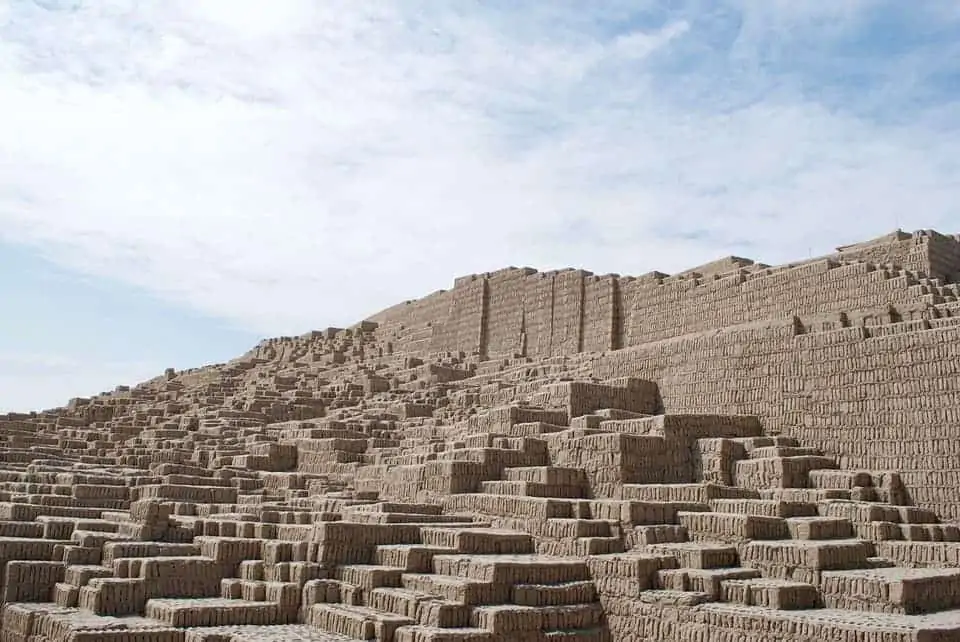
Pariwana Hostel is one of the best hostels in Lima for any type of traveler . Are you traveling solo and wanting to meet other travelers? There are a bar and a ping pong table on the terrace for socializing. Are you traveling for work? You can take advantage of their business center.
The dormitory and private rooms are both clean and spacious. Located in the safe neighborhood of Miraflores, you will have access to nightlife and some of the best seafood restaurants in Lima.
Best Hotel In Lima – Miraflores Park, A Belmond Hotel
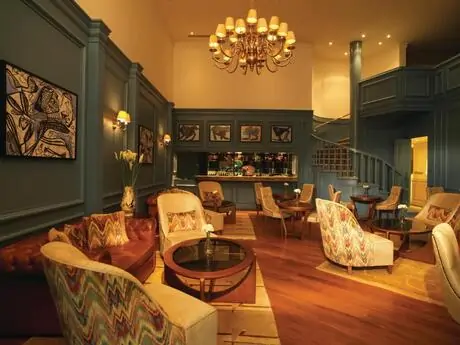
Miraflores Park is one of the highest-rated hotels in Lima and it is not surprising why. This 5-tar hotel is guaranteed to offer guests a luxurious stay, especially with its charming rooms and bathrooms decked out with expensive marble.
The hotel is situated on the promenade, so every day guests can wake up to sweeping ocean views and a nutritious breakfast buffet. If you want to feel like kings and queens on your trip, Miraflores Park is the place to stay in Lima.
Day 3-5 (3 Days): Ica, Huacachina, Paracas
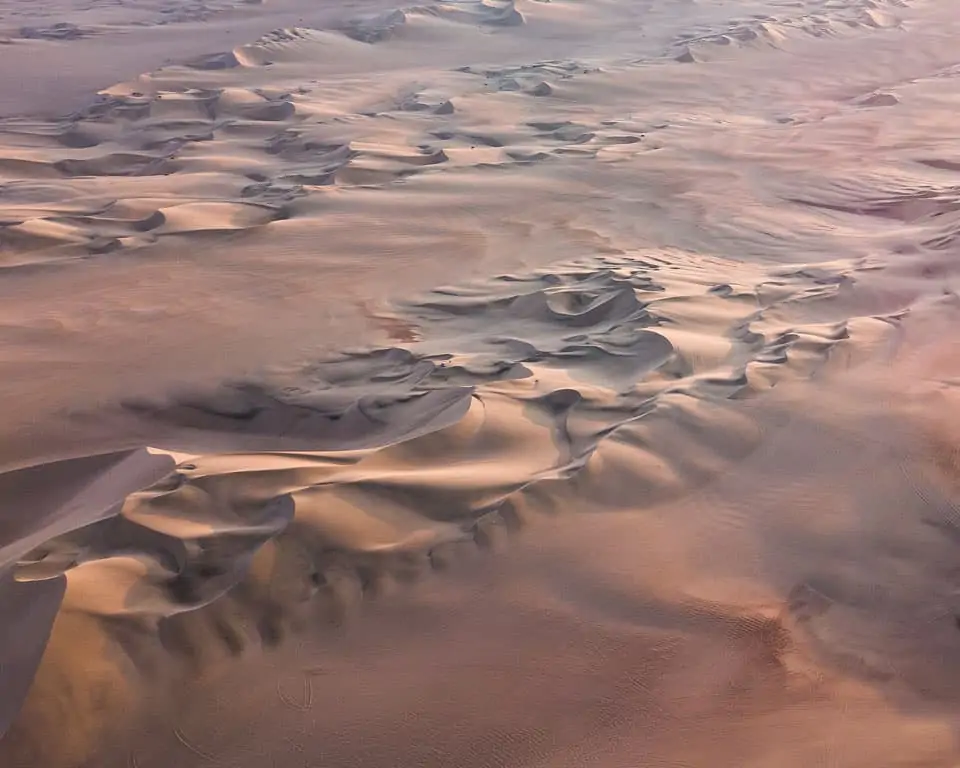
Located in Ica, Ica Adventures II is a hostel for budget travelers . With comfortable beds, a rooftop terrace , and an amazing breakfast, you can’t get a better deal anywhere else! No wonder why it is one of the highest-rated hostels in Ica!
Best Hotel In Ica/Paracas/Huacachina – Hotel El Huacachinero
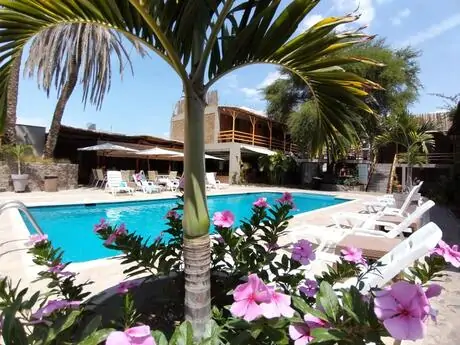
Located in Huacachina, Hotel El Huacachinero is a hotel close to the action . Featuring an outdoor swimming pool where guests can relax and admire the soft and silky dunes around them, Hotel El Huacachinero is one of the best hotels in the area.
Their breakfast is the perfect way to prepare yourself for a day of exploring!
Things To Do In Ica/Huacachina/Paracas
1. huacachina oasis.

Cusco is the hub for all local artists, merchants, and vendors. Without a doubt, it is the best place to get yourself some Peruvian souvenirs to remember your trip by.
Alpaca products such as sweaters and scarves are abundant, and visitors don’t have to spend a ton of money to buy something of decent quality. However, if you are interested in the legendary 100% baby alpaca stuff, expect to pay a fortune!
📚 Read More: How To Get To Machu Picchu From Cusco: All Ways Explained!
Where To Stay In Cusco, Peru
Because of the high elevation in Cusco, it is a lot trickier to find the perfect place to stay. For example, you might need an oxygen-enriched room to help with altitude sickness, one of the biggest dangers in Cusco .
Therefore, we have written a complete guide on where to stay in Cusco here .
Best Hostel In Cusco – Nao Victoria
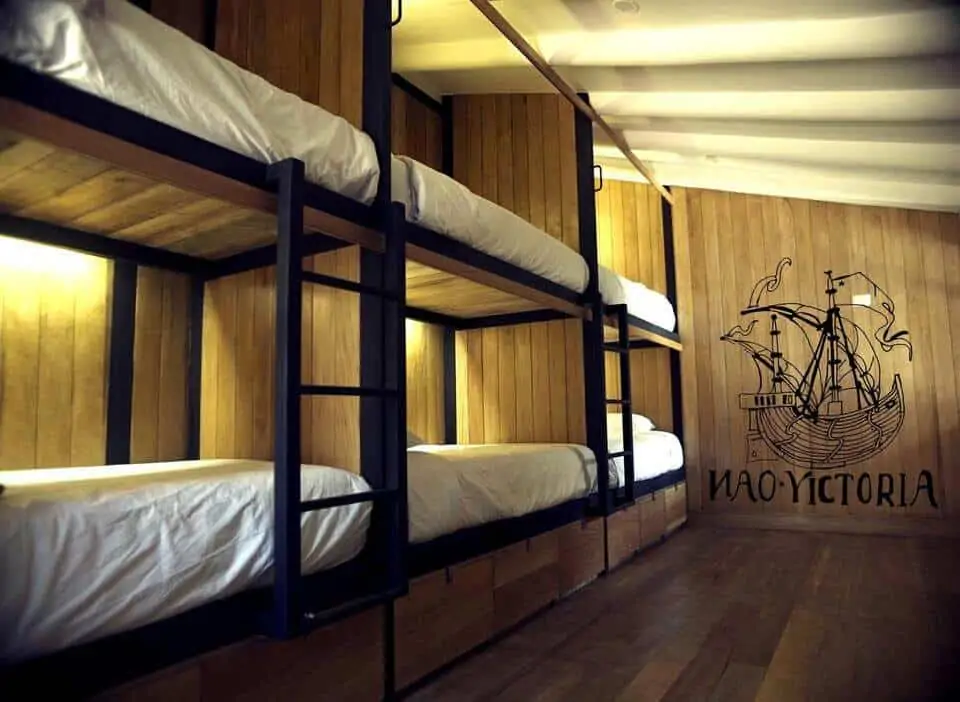
Closely located to Cusco’s best sights, Nao Victoria is one of the best places to stay in Cusco. The main square Plaza de Armas is located a few minutes away. Though its location is amazing, it isn’t even close to Nao Victoria’s best features.
The hostel’s stylish and modern decoration along with its cleanliness makes it feel like a hotel more than a hostel.
Each dormitory bed is equipped with individual lights, a curtain, and an electric socket. The staff becomes your best friend on your arrival day and helps you with your visit to Cusco, including information about Machu Picchu.
Best Hotel In Cusco – Tariq Boutique Hotel
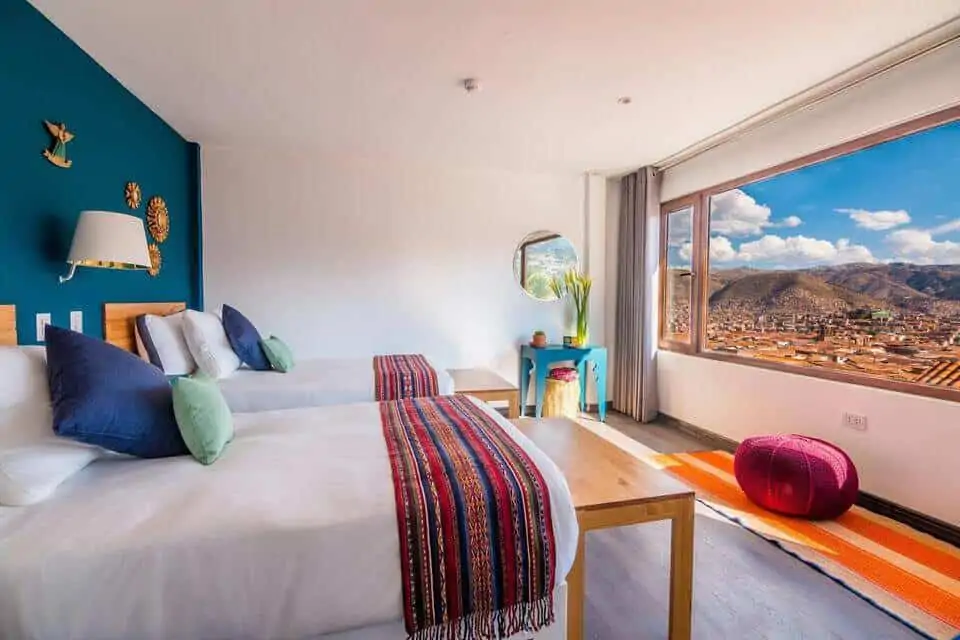
Tariq Boutique Hotel is my favorite hotel in Cusco and it is easy to see why. The boutique hotel is small enough to get the individualized attention you need in case you fall ill. Their rooms have huge windows with jaw-dropping panoramic views of Cusco.
It is also much more affordable than all the other “big name” hotels in the area!
Day 12-13 (2 Days): Puno and Lake Titicaca
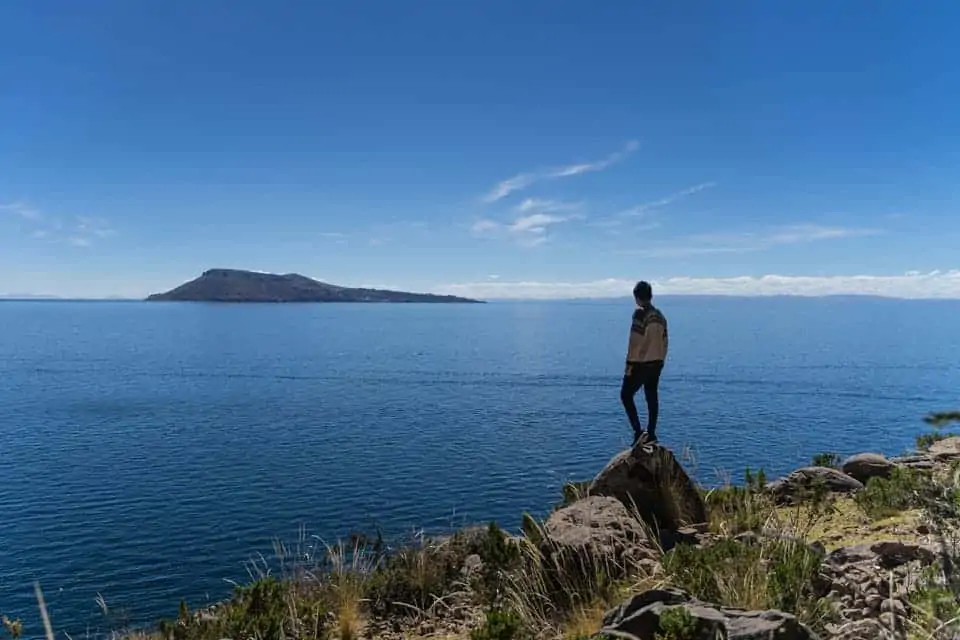

Things To Do In Puno, Peru
1. lake titicaca and uros floating islands.

Inka’s Rest Hostel is one of the few good hostels in Puno. Featuring comfortable single beds in dormitory rooms, guests can finally have undisturbed sleep. The showers are hot, which is something rare for a cheap hostel. Their free breakfast is also very tasty and filling.
Common areas have Netflix and computers for all your relaxation needs, and the owners are super friendly!
Best Hotel In Puno – Tierra Viva Puno Plaza
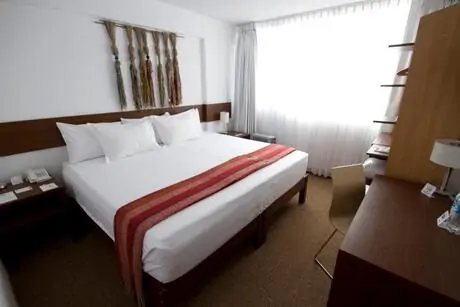
Located next to Puno’s main plaza, Tierra Viva Puno Plaza is one of the prime hotels in Puno. Everything from the spacious rooms and comfortable beds to the helpful staff was amazing. You cannot go wrong with this hotel in Puno!
Day 14: Back To Cusco for Your Flight
It is highly recommended that you leave from a city different than the one you came in. If you came into Peru from Lima, then exit in Cusco and vice versa.
If your flight out of Cusco is at night, you can take one of the morning buses from Puno to Cusco. If your flight leaves in the morning or afternoon, you should leave in the night on Day 13 to arrive in Cusco early morning. Either way, check busbud.com for all bus schedules in Peru.
It will be sad to leave such a beautiful country but don’t worry, you can always come back. Northern Peru has plenty of hidden gems such as Chachapoyas for you to explore next time!
2-Week Peru Itinerary With Inca Trail
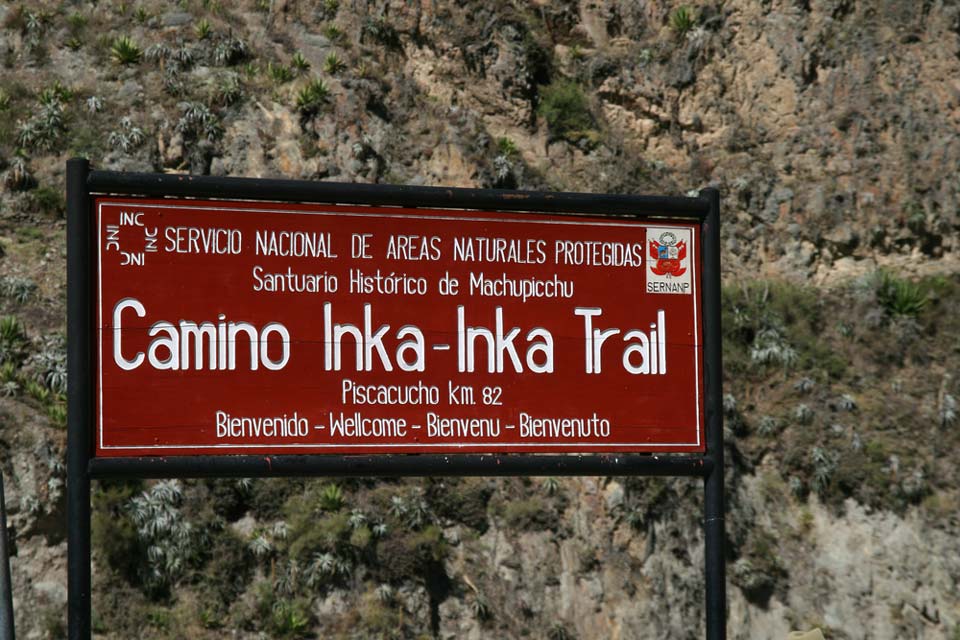
If you are planning on doing the Inca Trail in your two weeks in Peru, your itinerary will definitely look different. After all, the Inca Trail is a total of 4 days, which is a huge chunk of time of your trip. But believe me, it is totally worth the trek!
If you are doing the Inca Trail, we would recommend you to skip Puno and Lake Titicaca. Your Peru itinerary should look like this:
- Day 1-2 (2 days): Lima
- Day 3-5 (3 days): Ica, Paracas, Huacahina (Long-distance night bus to Cusco on Day 5 if not flying)
- Day 6-14 (8 days): Cusco and Inca Trail (Stay 2 days in Cusco before going on the Inca Trail for acclimatization purposes)
Right days might seem quite a bit for Cusco, but if you take in account. the two days you’ll need for acclimization and the one day you’ll want to relax after your hike. You don’t really have much time left.
📖 Note: If you are doing the Salkantay Trek inside of the Inca Trail, follow the same 2-week Peru itinerary just above. You’ll just spend 1 less day in Cusco.
More Than Two Weeks In Peru?
Do you have more than two weeks in Peru? If you have 3 weeks in Peru or even 1 month in Peru, here are some recommendations to add to your Peru itinerary.
Huaraz, The Hiking Captial of Peru
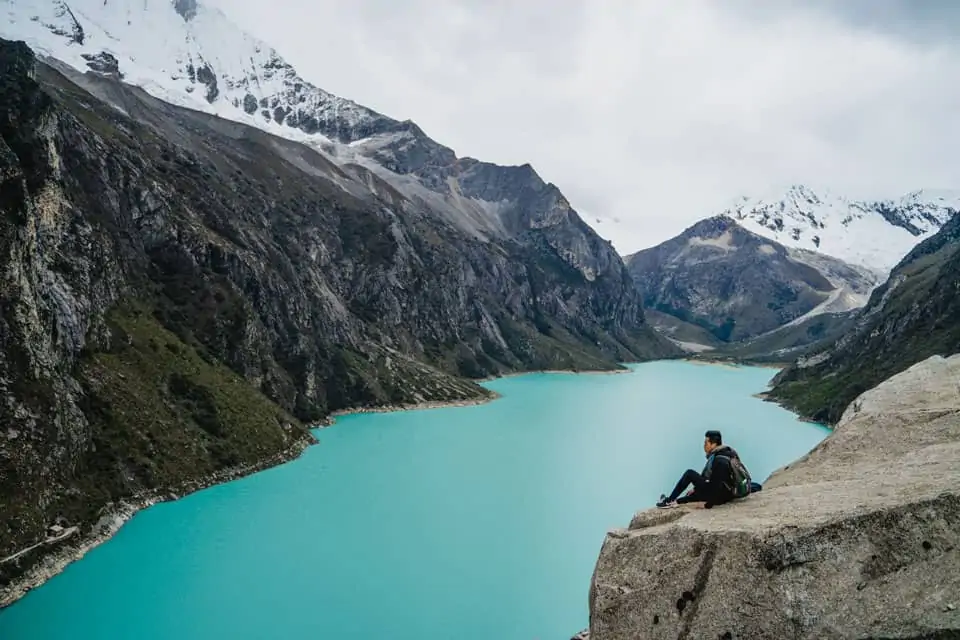
Peru is one of the safer countries in Latin America, but since it is still a poor South America country, there are inherent dangers when traveling in Peru. Some of the most common types of dangerous situations you’ll encounter are:
- Altitude Sickness – Altitude sickness is common for tourists, especially those visiting Cusco or anywhere near the Andes Mountain. Make sure you acclimatize properly to minimize your risk.
- Pickpockets and Thefts – This is fairly common in Peru, especially in nightclubs, bars, and other tourist areas. Be aware of your surroundings and stay alert.
- Robberies – Not as common as the other types of risky situations, but robberies have occurred to multiple travelers I’ve met in Peru, with most of them happening in Lima.
- Food Poisoning – It is bound to happen to travelers that are backpacking Peru. Avoiding street food will help with food poisoning, but there is no guarantee.
If you are visiting Peru (or any South America country), we highly recommend that you get travel insurance. It’ll also give you the peace of mind to fully enjoy this beautiful country!
Getting Around Peru

This is the end of our 2 week Peru itinerary! I hope this at least gave you a rough idea of the things you can do in Peru in 2 weeks. Any questions? Leave a comment!
Disclaimer: Some of the links above are affiliate links. That means if you book or make a purchase through the links, we will earn a small commission at no extra cost to you ! The money will help run this site! Thank you !
World Traveler, Travel Blogger, Photographer
LivingOutLau
Sean is the founder of the travel blog, LivingOutLau. He has been to over 30 countries in over 5 years of travel. Every day, he is traveling and sharing his discoveries of the world through exceptional travel guides on his blog!
2 thoughts on “2-Week Peru Itinerary: Lima, Cusco, Machu Picchu + More”
Thanks most helpful planning to go in November 🙂
Hi! Thank you for all the useful information. I hope to be able to visit Peru soon. I’ll keep reading your blog, it’s amazing!
Greetings from Panama 🙂
Leave a Comment Cancel reply
- About Career Gappers
- Our blogging journey
- Write for us
- Work with us

- The decision stage
- The planning stage
- The preparation stage
- Career break travel tips
- Returning home: what next?
- Career break travel insurance
- Inspirational stories
- What is remote working?
- Workation packages and deals 2023
- The wellbeing benefits of taking a workation
- Barcelona workation guide
- Cornwall workation guide
- Hamburg workation guide
- Lisbon workation guide
- Mallorca workation guide
- New Zealand
- Career Gappers Facebook Community
- Interviews with career gappers
- Workations Facebook Community
Destinations
Peru itinerary and travel guide: routes for 1 week – 4 weeks.
Ah, Peru… homeland of the Incas, nucleus of the Spanish Empire, and a landscape of incredible diversity. It has a special place in our hearts, as the country where we began our travel career break in South America. But with such an abundance of attractions, it can be hard to decide what to prioritise! This Peru itinerary maps out 4 weeks of travel based on our own experiences, plus alternative options for 1, 2 and 3 weeks. We cover everything you need to know about travel in Peru including transport, accommodation, safety, what to pack and when to visit.
This article contains links to products and services we love, from which we may make commission at no extra cost to you.
In this article:
Peru itinerary: background information
Who is this itinerary for.
Do you like to pack a range of activities into your travels and experience the local culture? If so, then this Peru itinerary is for you! Our full 4-week itinerary includes a blend of city exploration, sightseeing, trekking, food culture and insights into Peruvian history.
Of course, 4 weeks isn’t a fixed amount of time, and you can pick and choose what works for your own trip. We’ve thrown in some extra suggested itineraries for 1 week, 2 weeks and 3 weeks for different travel styles too. So whether you’re here for the history, culture or adventure, you will find a Peru itinerary here that works for you!
If you’re a hiking enthusiast, you may also want to read our guide to trekking in Peru , which includes a compilation of the country’s 35 best trails.
What is the budget for this Peru itinerary?
The accommodation, transport and food we highlight in this itinerary are based on a medium backpacker’s budget. As a general guide, as a couple we spent around $5,000 US dollars during a month in Peru, which included all costs and activities. You can read a complete and detailed breakdown of the costs for our travel in Peru here .
We actually spent quite a bit more in Peru than in other countries on our South America travels, and that was because of activities. Experiences like the Inca Trail and the Amazon jungle are utterly incredible and not to be missed, but they don’t come cheap. The Inca Trail alone accounted for nearly half of our total spending in Peru.
BudgetYourTrip is an excellent free resource for planning your travel spending. It provides travel budget estimates from budget to luxury for anywhere in the world. We’ve used it around the globe throughout our travel career break and found it to be extremely accurate. For Peru it provides detailed budget guides for each city.
How many days in Peru do I need?
There is no right or wrong answer to this. It depends entirely on what you want to do and your travel style. As a rough guide:
- 1 week: a flying visit to take in a quick bucket list of activities
- 2 weeks: a decent amount of time to explore 3–4 destinations within Peru without rushing too much
- 3–4 weeks: enough time to explore a wide range of Peru’s attractions at a steady pace, with flexibility for rest days and changes of plans
Peru itinerary: 4 weeks
Our itinerary begins in Lima and ends at Lake Titicaca, so it’s perfect for backpackers beginning in Peru and continuing into Bolivia on the ‘gringo trail’. Alternatively, if you are not planning on going anywhere else afterwards, you can fly back to Lima from Inca Manco Cápac International Airport in Juliaca near Puno.
Here’s our 4-week Peru itinerary at-a-glance (read on below for the finer details, including recommendations for accommodation, food and more):
- Days 1–3 | Lima : explore the districts of Miraflores, Barranco and Centro Historico, see the ruins of Huaca Pucllana, and get familiar with traditional Peruvian cuisine
- Days 4 | travel and rest day : flight from Lima to Iquitos
- Days 5–8 | Iquitos and the Amazon : discover Peru’s largest Amazonian city and take a tour into the jungle
- Day 9 | travel and rest day : back to Lima for overnight stop
- Days 10–11 | Huacachina : relax in this desert oasis village, with options for adventure activities (dune buggies, sandboarding)
- Days 12–13 | Nazca : fly over the legendary mysterious Nazca Lines
- Days 14–21 | Cusco and the Inca Trail : discover the capital of the old Inca Empire and take on the bucket-list hike to Machu Picchu
- Day 22 | travel and rest day : journey from Cusco to Arequipa
- Days 23–26 | Arequipa and the Colca Canyon : explore Peru’s White City and trek in the world’s second-deepest canyon
- Days 27–28 | Puno and Lake Titicaca : relax in the lakeside city and visit the floating islands of Uros
Stop 1: Lima – the colourful capital
Day 1: arrive in lima.
Spend a day getting used to the hustle and bustle of the city and check in to your accommodation.
Where to stay in Lima
Miraflores and Barranco are the most popular districts for backpackers to stay in Lima. Miraflores is packed with green parks, nice buildings, shops and bars, while Barranco is more of a laid-back, bohemian neighbourhood with colourful architecture. Check out our article on the best hostels in Lima for budget accommodation, or hop over to booking.com for more options.
We usually stay in Miraflores, and this itinerary works best from there, although both are great.
Days 2–3: Miraflores, Barranco and Centro Historico
Try the boardwalk from Miraflores to Barranco begin your Lima experience. This lovely coastal walk connects the two main tourist areas, and begins with the Parque del Amor.
At lunch, try a menú del día restaurant on the streets of Barranco. Don’t miss the best sights of this colourful neighbourhood, including Puente de los Suspiros, Plaza Chabuca Granda gardens and Iglesia La Ermita.
Back in Miraflores, check out the markets. Mercado Surquillo is a huge food market popular with locals, while Miraflores Indian Market is where you can find arts, crafts and souvenirs. Hang out on Parque Kennedy and watch street performers. If you’re a food lover, it’s also well worth squeezing the popular Miraflores Trending Flavours walking tour into your itinerary.
At night, try a tour of Huaca Pucllana in Miraflores, a restored 1,600-year-old adobe pyramid. You can visit during the daytime too, but it’s extra special after dark.
For dinner: our two favourite restaurants in Miraflores are Punto Azul and El Rincón de Bigote. These are both reasonably priced and top places to try the national dish ceviche, which consists of raw fish marinated in citrus and spices.
A short bus ride will take you from Miraflores/Barranco to the city’s historic centre. Here you can see fabulous Spanish colonial buildings such as Iglesia San Sebastián and Iglesia de Santa Rosa. The Plaza de Armas is one of the icons of the city and is a good pivot point for a walking tour. You can free Lima walking tour and be shown the highlights with narration from a local expert.
Walk out to the riverfront to see the colourful hill of Cerro San Cristóbal, before heading south of the main square to Plaza Grau and Parque de los Museos. This is where you can find some of Lima’s greatest museums, including MALI , the museum of art. A little further out you can see a stunning illuminated water show every evening at El Circuito Mágico del Agua.
Up for some adventure in Lima? Then you could consider checking out the surfing scene in Lima during your stay. Read our complete Lima surf guide to find out the best spots, seasons and how to book an experience.
Stop 2: Iquitos – the Peruvian Amazon
Days 4: fly to iquitos in the peruvian amazon.
The flight from Lima to Iquitos takes around two hours. You are transported back in time to the tuk-tuk-dominated city of Iquitos, which can only be accessed by boat or air. Once a major centre for the rubber trade, it is the largest city in the Peruvian Amazon.
Where to stay in Iquitos
In Iquitos it’s best to stay as close as possible to the city centre, ideally not more than 20 minutes’ walk from Plaza de Armas. You can find good accommodation from budget hostels to luxury hotels. But as you’re in the middle of the jungle, be prepared for slow wifi and unreliable hot water supplies! For budget options see our guide to the best hostels in Iquitos , or alternatively check out booking.com .
Days 5–8: Amazon jungle tour / explore the city
No visit to Iquitos is complete without taking a tour into the Amazon rainforest. We took a 2 day / 1 night Amazon tour , which fits neatly into this itinerary, but if you have more time and want to stick around longer there are extended tours available.
For multi-night jungle tours, check first if your accommodation offers them. We booked ours this way and it worked out great. Be sure to check reviews of the tour company though. If you can’t book through your accommodation, there are tons of agencies in the city centre you can try. Booking in advance isn’t necessary, there are always spaces available.
Take a couple of days either side of your jungle tour to explore the delights of Iquitos. Don’t miss Belén Market, a huge and sprawling local market that floats on the river when high. Morning is the safest time to visit and the the best time to see the market at its most chaotic.
For a slice of Iquitos and Amazonian history, drop into the Ayapua Boat Museum and the Museum of Indigenous Amazon Cultures. These are both located along the main riverfront boulevard, Malecón Tarapaca. While you’re here, enjoy the views with a coffee at Dawn at the Amazon, and come back in the evening for a drink and a dance in the city’s liveliest bars, Arandú Bar and Musmuqui.
Have lunch in the upstairs restaurant at Casa de Fierro, the ‘Iron House of Iquitos’. Legend has it this building was designed by none other than Gustavo Eiffel. Whether or not that’s true, it’s a cool building and has nice views over the main square, Plaza de Armas. This is also a great spot to wander around on foot and enjoy the city streetscapes.
Take half a day to pay a visit to the Manatee Rescue Center out of town. Manatees are large and docile water-dwelling mammals and sadly endangered, and this place looks after them. You can learn about them, meet them and feed them.
For dinner: treat yourself to a meal at the floating restaurant of Al Frio y Al Fuego. You need to take a short ferry ride to reach it, which is all part of the experience! Try the juane, which is a traditional Amazonian dish of chicken, rice and olives boiled in a bijao leaf.
Day 9: fly to Lima with possible overnight stop
Depending on the time of your flight, or how you like to travel, it is possible to fly from Iquitos to Lima and head straight on to Huacachina by bus in a day. We preferred to take it slow, enjoy another night in Lima and then head on the next morning.
Stop 3: Huacachina – the desert oasis
Days 10–11: get active on the sand dunes in huacachina, or just relax.
Catch an early morning bus from Lima to Ica (about four hours) and then take a taxi to the desert oasis of Huacachina. If you arrive in time, take a walk to the top of the sand dunes to see one of the most spectacular sunsets you’ll ever witness. Schlepping up the sand is a lot more effort than it looks, but totally worth it!
For an injection of adrenaline, you can take a late afternoon white-knuckle dune buggy ride. These usually run from around 4pm to 6pm and culminate in a desert sunset view. In the daytime, try your hand at sandboarding – this is one of the best places in the world to do it. Or, of course, you could just relax by the pool or take a leisurely boat ride on the village lagoon.
Where to stay in Huacachina
We highly recommend staying at Desert Nights Ecocamp in Huacachina. This is camping at its poshest. Tents are kitted out with double beds and power sockets, and the on-site pool has a swim-up bar serving craft beer and cocktails. For more options, see the Ica section on booking.com .
Stop 4: Nazca – home of the Nazca Lines
Days 12–13: fly over the legendary nazca lines and explore the city.
Nazca is just a couple of hours’ bus ride on from Huacachina (via Ica). The city is most famous for the ancient geoglyphs carved into the nearby desert. The figures of animals, birds, humans and geometrical shapes have mystified scientists and archaeologists for decades since their discovery. From Nazca, it’s possible to take a flight over the famous lines and see them up-close. Check out our guide to flying over the Nazca Lines for everything you need to know.
While Nazca isn’t the most exciting of cities, there’s still plenty to see for a few hours before you take a night bus on to Cusco. Archaeology enthusiasts in particular will enjoy Museo Arqueológico Antonini (the archaeological museum). There are also various day tours possible in the region, such as the Cahuachi Pyramids, Cantalloc Aqueducts and Chauchilla Cemetery.
Where to stay in Nazca
We stayed at Nanasqa Hostel for our two nights in Nazca. A budget option, this was one of the cheapest hostels we visited in Peru, but it covered everything we needed for our stay. It’s a 15-minute walk from the Plaza de Armas and has good facilities, as well as offering a range of tours around the area. Breakfast is available for an extra cost. For more places to stay, see the Nazca section of booking.com .
Stop 5: Cusco, the Inca Trail and Machu Picchu
Where to stay in cusco.
We stayed in the beautiful San Blas district of Cusco before our Inca Trail tour. Just a short walk up the hill from Plaza de Armas, it’s a historic district characterised by narrow, cobbled alleys, lively markets and colonial buildings. Its elevated position also gives a spectacular view over the city, especially at night.
We’ve compiled the best hostels in Cusco to help you choose from the best budget accommodation options in the city. For a wider range of accommodation, see the Cusco section of booking.com .
Days 14 and 15: arrive and acclimatise in Cusco
Cusco is 3,399m above sea level so it’s a best to arrive at least a couple of days before you take on any hiking. A day of general wandering around and relaxing is highly recommended. Don’t do anything too strenuous in the first 24 hours, and drink plenty of water.
There is a lot to do and see around the city, including various Inca ruin sites and museums. It’s a super photogenic city; head to the cobbled streets of the San Blas neighbourhood for some of the best views. The Plaza de Armas is the main square, where you can find iconic buildings like Cusco Cathedral and Iglesia de la Compañía de Jesús, plus it’s a short walk to Museo Inka, the Coricancha ruins and the famous twelve-angled stone.
Walk up the hill to the north-west of Cusco’s historic centre and you will reach Cristo Blanco, the 8-metre-tall statue of Christ that looks over the city. There’s a superb view from up here, and nearby you can visit the ruins of Sacsayhuaman, one of the most important fortresses of the Inca Empire.
Tip: for a slice of Cusco city life and a cheap lunch, head to San Pedro Market at midday. You can buy classic Peruvian dishes from various street-food style stalls at very low prices.
Day 16: visit the Sacred Valley
An hour’s drive from Cusco is the Sacred Valley, the heart of the Inca Empire. With Inca ruins to explore, stunning landscapes to see and welcoming local villages to visit, it’s an excellent getaway from the city.
Our visit to the Sacred Valley was included in our Inca Trail package (see below), but it’s also possible to book day tours from Cusco.
Days 17–20: hike the Inca trail to Machu Picchu
Now it’s time for the big bucket-lister. There are few experiences in life you will treasure more than the Inca Trail to Machu Picchu. One of the seven modern wonders of the world, it needs to be seen to be fully appreciated, and there’s no way more rewarding than the famous four-day trek. We did it with G Adventures ; check out our review of the tour and why we think it’s the best way to do it.
Booking the Inca Trail in advance is essential. It’s also a challenging hike and requires preparation. Read our guide to Inca Trail preparation for all you need to know, as well as our complete packing list for everything you need to take.
One final thing on the Inca trail: most tour companies require you to have travel insurance (they literally won’t allow you on the trail without it). See our section on travel insurance below for our recommendations.
Day 21: rest day in Cusco
After completing the Inca Trail you will need to rest your muscles. It’s also a good opportunity to try some of the local restaurants and bars. Drop into Sumaqcha for some great Peruvian food in a cosy family restaurant, and have a relaxing beer on the balcony of Norton Rat’s Tavern overlooking Plaza de Armas.
Day 22: explore Cusco, overnight bus to Arequipa
Take a final opportunity to enjoy Cusco and tick any final activities off your list before moving on to the next destination. If you have the stomach for an early start (we’re talking 2–3am), one excellent option is to take a day trip to Rainbow Mountain , Peru’s famous multi-coloured peak. Once you’re done, it’s time to hop onto a night bus to Arequipa.
Stop 6: Arequipa and the Colca Canyon
Day 23: arrive in arequipa and explore.
If you arrive early in Arequipa the chances are you won’t be able to check into your accommodation until the afternoon. Grab a breakfast in one of the terrace bars on the Plaza de Armas, or get to know the city with a tour of the landmarks and countryside .
Arequipa is known as the ‘White City’ as many of its buildings are constructed from a pale, volcanic stone. If you want to explore self-guided, check out the city-within-a-city at the Monastery of Santa Catalina, and the quaint old neighbourhood of San Lázaro. Also head across the river to the Yanahuara district for one of the best views of the towering Misti Volcano.
Tip: for a cheap lunch, find the upstairs section in the bustling local market of San Camilo. There are various food stalls here offering great deals at lunch. Try pork adobo, a classic regional dish.
Where to stay in Arequipa
Arequipa is Peru’s second-largest city and a popular stop-off for backpackers, and so it is well equipped with a range of accommodation options. We compile some of the budget options in our guide to the best hostels in Arequipa . For alternative options all the way up to swanky hotels, check out the Arequipa section on booking.com . If you would prefer a completely private space.
Days 24–25: Colca Canyon trek
The Colca Canyon is the world’s second-deepest canyon, and is twice the depth of its more famous counterpart, the Grand Canyon in the US. We took a two-day trekking tour, which included a stop to see majestic Andean condors in flight, and a dip in some thermal springs when the hike was complete.
Our trek wasn’t without its downsides. Read about our experience and our essential tips for booking and preparation here . While we saw some of the best scenery of our travels, it was a very tough trek. It’s important to be aware of the challenges before deciding on the best way to see the Colca Canyon. A reliable option is to book with GetYourGuide , who work with the most reputable local tour companies, and offer free cancellation with all tours.
If you don’t want to trek, it’s possible to take a day tour or overnight tour to see the amazing views of the canyon and witness the flight of the condor.
Day 26: rest day in Arequipa
Just as with the Inca Trail, you will want to take at least a day to rest after completing a Colca Canyon trek. If there’s anything else you want to do while you’re in the city, check out our article on things to do in Arequipa for ideas.
For dinner: try out Mirador Misti, a concealed rooftop restaurant behind the Basilica Cathedral. This is also a great spot to simply relax with a drink in the afternoon and enjoy the city views.
Stop 7: Puno and Lake Titicaca
Days 27–28: explore puno and visit islas uros.
The bus journey from Arequipa to Puno is a weighty one of six and a half hours, which will account for most of the day. If you take an early bus, you’ll arrive in Puno in good time to enjoy the sunset on Lake Titicaca.
With a full day there is plenty of time to explore the side streets of this little lakeside town. Finish off with a walk around Lake Titicaca and some fresh seafood at one of the lakefront stalls.
Alternatively, you can take a trip to Islas Uros . These floating islands are a real highlight of Lake Titicaca, constructed entirely of reeds from the lake. On a tour you can meet the Uros people and learn how they use the reeds to build their homes and boats.
Where to stay in Puno
The hostel we stayed in Puno has sadly closed down, but there is a lot of great value accommodation for backpackers. For places to stay, take a look at the Puno section on booking.com .
Travel on to Copacabana or back to Lima
Finish your 4 weeks in Peru by either heading back to Lima for a return flight, or by taking a bus across the border into Bolivia.
Peru itinerary: 1 week
One week in Peru is a limited amount of time, so your itinerary should be very focused. We’ve put together three alternatives to suit different kinds of travellers. If you want any specific tour recommendations, feel free to drop us an email .
Route 1: Lima + Cusco + Puno
This Peru travel itinerary focuses on Peru’s classic landmarks of Machu Picchu and Lake Titicaca. It starts in Lima and ends in Puno.
- Days 1–2 | explore Lima : spend two days exploring the highlights of Peru’s bustling capital.
- Days 3–5 | Cusco and Machu Picchu : spend the first day in Cusco acclimatising to the altitude and do some sightseeing at a slow pace. On the second day, take a day trip to Machu Picchu. You can book your entry ticket in advance . The next day, either explore more of the city or take another day trip from Cusco, such as Rainbow Mountain.
- Days 6–7 | Puno and Lake Titicaca : if your budget allows and it fits with your travel dates, take the PeruRail Titicaca train from Cusco to Puno. This is one of the world’s most beautiful train journeys and only departs on Wednesdays, Fridays and Sundays. Otherwise, take a morning flight to Juliaca and a taxi on to Puno. Relax in the evening with some fresh fish from the lake. On your final day, take a tour to the islands of Uros.
Route 2: Lima + Cusco + Arequipa
This Peru travel itinerary focuses on the wonder of Machu Picchu and the spectacular Colca Canyon. It starts in Lima and ends in Arequipa.
- Day 1 | explore Lima : spend two days exploring the highlights of Peru’s capital.
- Days 2–4 | Cusco and Machu Picchu : spend the first day in Cusco acclimatising to the altitude and do some sightseeing at a slow pace. On the second day, take a day trip to Machu Picchu. The next day, either explore more of the city or take another day trip from Cusco, such as Rainbow Mountain.
- Days 5–7 | Arequipa and the Colca Canyon : take a morning flight to Arequipa (or an overnight bus at the end of day 4 if you’re on a budget) and spend a day exploring Arequipa’s landmarks around Plaza de Armas. On the final two days, take an overnight trek into the Colca Canyon.
Route 3: jungle + ocean + desert
This Peru travel itinerary focuses on some of the extremes Peru’s wondrous natural scenery. It starts in Lima and ends in Nazca. The bus from Nazca back to Lima takes around six hours.
- Day 1 | half day in Lima + flight to Iquitos : spend the morning/midday in Lima before taking an afternoon/evening flight to Iquitos in the Peruvian Amazon. Either explore the Centro Historico at your own pace, or take a free walking tour (which run every day).
- Days 2–3 | Iquitos Amazon tour : take a two-day, one-night tour in the Amazon jungle. Check with your Iquitos accommodation in advance whether they can arrange this for you or recommend a tour company.
- Day 4 | return to Lima + explore : take a morning flight back to Lima and enjoy the rest of the day in the city at your own pace.
- Days 5–6 | Huacachina and Paracas : relax in the desert oasis village of Huacachina and visit the Paracas National Reserve, a beautiful protected coastal area of marine ecosystems and archaeological sites. Take an evening bus on to Nazca on the second day (2 hours from Ica/Huacachina, 4 hours from Paracas).
- Day 7 | Nazca Lines flight : fly over the legendary mysterious Nazca Lines in the desert.
Peru itinerary: 2 weeks
Two weeks in Peru gives you a little more flexibility to see more of the country’s attractions or take on a big activity like the Inca Trail. Once again, please feel free to contact us for any specific tour recommendations!
These are our suggested travel routes:
Route 1: Lima + Inca Trail
This itinerary option puts the famous Inca Trail to Machu Picchu at centre stage. It starts and ends in Lima.
- Days 1–2 | explore Lima : get to know Lima’s capital city.
- Days 3–4 | arrive and acclimatise in Cusco : take a morning flight to Cusco or an overnight bus if you’re on a budget. Take it easy for a couple of days as you get used to the altitude.
- Days 5–11 | the Inca Trail : this world-famous hike takes four days, but we recommend the 7-day Inca Trail package with G Adventures – and here’s why .
- Day 12 | rest day in Cusco : give your weary legs a bit of respite and hang out around the Plaza de Armas for a drink and some delicious Peruvian food.
- Days 13–14 | Lima + day trips : return to the capital city to finish your exploration. If you’re still feeling energetic, consider taking a day trip to Huacachina or Paracas.
Route 2: Peru highlights
This itinerary hops quickly through some of Peru’s greatest attractions, including Machu Picchu, the Amazon jungle, the Colca Canyon and Lake Titicaca. It starts in Lima and ends in Puno.
- Days 1–2 | explore Lima : spend two days exploring the highlights of Peru’s bustling capital.
- Days 3–5 | Cusco and Machu Picchu : spend the first day in Cusco acclimatising to the altitude and do some sightseeing at a slow pace. On the second day, take a day trip to Machu Picchu. The next day, either explore more of the city or take another day trip from Cusco, such as Rainbow Mountain.
- Days 6–9 | Puerto Maldonado Amazon tour : take a flight from Cusco to Puerto Maldonado in the Amazon jungle (flights are one hour and cheap if booked in advance). Book onto a three-day jungle tour – Puerto Maldonado Tours is one of the best operators.
- Days 10–12 | Arequipa and the Colca Canyon : take a morning flight to Arequipa (or an overnight bus at the end of day 9 if you’re on a budget) and spend a day exploring Peru’s White City. On the final two days, take an overnight trek into the Colca Canyon (you can book via a tour company in the city or through your accommodation).
- Days 13–14 | Puno and Lake Titicaca : the journey from Arequipa to Puno takes about five hours by road. When you arrive, it’s time to relax in this beautiful high-altitude lakeside town and take a day trip to the islands of Uros.
Route 3: Lima + jungle + Paracas + desert + Cusco
This itinerary combines trips to Peru’s two most popular cities, Lima and Cusco, with excursions into the Amazon jungle, Paracas National Reserve, Nazca desert and Machu Picchu. It starts in Lima and ends in Cusco.
- Days 3–6 | Iquitos and the Amazon : take a two-day, one-night tour in the Amazon jungle. Check with your Iquitos accommodation in advance whether they can arrange this for you or recommend a tour company. Either side of your tour, explore Iquitos at your own pace
- Day 7–8 | Paracas National Reserve : take an early morning bus from Lima to the bayside town of El Chaco, Paracas, and enjoy two days exploring the beautiful national reserve.
- Day 9 | Huacachina : make a stop-off in the desert oasis village of Huacachina for 24 hours. Get the adrenaline pumping with a dune buggy tour or sandboarding, or just relax by the pool at Desert Nights Ecocamp.
- Day 10 | Nazca Lines : take a flight over the enigmatic Nazca Lines.
- Day 11 | rest day and overnight bus to Cusco : the bus journey from Nazca to Cusco is a long one of 14–15 hours and needs to be done overnight. Get plenty of rest in Nazca before you set off.
- Days 12–14 | Cusco and Machu Picchu : spend the first day in Cusco acclimatising to the altitude and do some sightseeing at a slow pace. On the second day, take a day trip to Machu Picchu. The next day, either explore more of the city or take another day trip from Cusco, such as Rainbow Mountain.
Peru itinerary: 3 weeks
Three weeks in Peru gives you a lot more wriggle room to travel slowly and spend more time absorbing the culture in each place you visit.
Route 1: the classic
This itinerary follows the classic ‘gringo trail’ through Peru’s most popular tourist hotspots, with a trip up to the Amazon along the way. If you want to hike the Inca Trail, you could cut out the Colca Canyon to make the extra time needed (if you’re new to trekking it’s not a good idea to attempt both treks in a short space of time).
- Days 1–3 | explore Lima : take time to explore the capital city at a relaxed pace over three days.
- Days 4–8 | Iquitos and the Amazon : take a two-night or three-night tour in the Amazon jungle. Check with your Iquitos accommodation in advance whether they can arrange this for you or recommend a tour company. Either side of your tour, explore Iquitos at your own pace.
- Days 9–10 | Huacachina : spend a couple of days in the desert oasis village relaxing, with the option of trying out some adrenaline activities such as dune buggies and sandboarding. Take a bus on to Nazca on the final afternoon/evening.
- Day 11 | Nazca Lines and night bus to Cusco : rise early and take a morning flight over the Nazca Lines. Then get rested and board a night bus for the journey up to Cusco.
- Days 12–15 | Cusco and Machu Picchu : acclimatise to the altitude and do some sightseeing at a slow pace. On the second day, take a day trip to Machu Picchu. The next day, either explore more of the city or take another day trip from Cusco, such as Rainbow Mountain.
- Days 16–19 | Arequipa and the Colca Canyon : take a morning flight to Arequipa (or an overnight bus at the end of day 15 if you’re on a budget) and take your time exploring the centre of Arequipa, a UNESCO World Heritage Site. While you’re in town, take an two-day trek into the Colca Canyon (you can book via a tour company in the city or through your accommodation).
- Days 20–21 | Puno and Lake Titicaca : the final leg of this journey is from Arequipa to Puno, and takes about five hours by road. When you arrive, kick back and relax by Lake Titicaca, enjoy the local food and take a day trip to the islands of Uros.
Route 2: the trekker
This itinerary is especially geared towards hiking enthusiasts. It begins with a warm-up day hike from Lima, before tackling two of the world’s greatest multi-day trails: the Santa Cruz Trek and the Inca Trail, finishing up with a Colca Canyon trek. It starts in Lima and ends in Arequipa.
- Day 1 | explore Lima : begin your trip with some general sightseeing around Lima’s historic centre.
- Day 2 | day hike near Lima : take a trip out of the city for a day’s hiking. Three good options for day hikes near Lima are Lomas de Lúcumo, Lomas de Lachay and Palakala Falls.
- Days 3–4 | transport to Huaraz and acclimatise : travel from Lima to the city of Huaraz, a base for trekking in one of Peru’s most stunning mountainous regions, the Cordillera Blanca. Flights do not always operate, so you may need to get a bus, which takes 6–8 hours. Once you arrive, spend a day acclimatising, as the city is higher than 3,000 metres above sea level.
- Days 5–8 | Santa Cruz Trek : undertake one of the world’s classic multi-day hiking trails, winding through Huascarán National Park and the Cordillera Blanca. You can do this trek independently or with a guide, but only go solo if you’re experienced as it’s a tough route that reaches 4,760 metres altitude.
- Days 9–10 | rest and travel to Cusco : take a day or two to relax after the trek and make your way back to Lima at your own pace. You can then travel on up to Cusco by bus or flight.
- Day 11 | explore Cusco : your body should be pretty used to the altitude by now. Take a free day to see the sights of Cusco city.
- Days 12–18 | the Inca Trail : hike the legendary route to Machu Picchu. See the sections above for our Inca Trail recommendations.
- Days 19–21 | Arequipa and the Colca Canyon : take a transit day for the journey from Cusco to Arequipa while resting off as much as you can, before a final two-day trek in the stunning Colca Canyon.
Peru itinerary package tours
If organising an itinerary and making all your own arrangements from scratch doesn’t appeal, you have the option to book onto a package tour of Peru.
This is a more expensive option of course, but for a once-in-a-lifetime trip there are big advantages to having the stress of organisation removed. Package tours in small groups are also great for meeting people and sharing the experience with new friends.
G Adventures runs a whole range of excellent small group tours of Peru. If you haven’t already, check out our account of our unforgettable Inca Trail experience with them.
Here are some of the most popular G Adventures Peru packages:
- Absolute Peru (21 days) – covering the classic highlights such as the Inca Trail, Colca Canyon, Lima, Paracas, Puno and more
- Inca Empire (15 days) – from La Paz (Bolivia) to Lima, via Lake Titicaca and Cusco for the Inca Trail
- Peru and Bolivia – Machu Picchu to the Salt Flats (16 days) – the classics of Peru and Bolivia including the Inca Trail and a Salar de Uyuni tour
- Amazon to the Andes (9 days) – Cusco, the Inca Trail and Amazon exploration from Puerto Maldonado
- Amazon riverboat adventure in depth (9 days) – extensive Amazonian experience from the base of Pacaya Samiria National Reserve near Iquitos
- Peru Multisport (15 days) – exploring the country’s highlights through a mixture of hiking, biking, kayaking, whitewater rafting and more
For more of our top picks, see our guide to small group tours in Peru .
Peru travel guide and tips
The information in this Peru travel guide covers all the basics you need to know for planning a trip.
Best times to visit Peru
Peru is a country of great geographical diversity and the climate varies depending on the local conditions. The country is located entirely inside the tropical region, and so there is a wet season and a dry season. Temperatures do not differ drastically throughout the year.
The dry season, Peru’s winter, runs from May to September. Although it’s a little colder this is a good time to visit, especially for trekking, as you can expect a lot less rain.
We spent our month in Peru in June/July, at the high point of the dry season. The weather worked out perfectly for the range of activities we did throughout the country, including exploring the main cities, touring in the Amazon jungle and hiking the Inca Trail.
In April/May and September/October, at the beginning and end of the dry season, there are fewer tourists around. This makes it a good option if you want to avoid the crowds, but the weather is more volatile.
Getting around Peru
Travelling by bus is our favourite way to get around Peru. In general the services are high-quality and comfortable. It’s also the cheapest way to travel between major destinations, and on overnight buses you get the bonus of saving a night’s accommodation costs.
Several bus companies operate in Peru and there are usually multiple daily departures between the main cities and tourist destinations. Busbud is a great service for finding routes and comparing the best prices.
Our preferred bus company in Peru is Cruz Del Sur . We use them for all of our overnight journeys. Their buses are comfortable, equipped with an entertainment system and you are provided with blankets, pillows and food.
When booking buses you will often see different price options for varying standards of comfort. ‘Semi-cama’ usually features partially reclining seats, which we found to be fine for sleeping. ‘Cama’ is a premium option with fully reclining seats. If you don’t see these terms, then check the fine print to see the kind of seating you are booking.
An alternative option for travelling by bus is Peru Hop , which gives you an open ticket for multiple stops. It costs a bit more, but it’s well worth it if you want to maintain some flexibility in your schedule. You can also book tours through them, and they provide a hassle-free border crossing into Bolivia (we used this and it made the process completely straightforward).
Peru’s major cities and tourist destinations are well connected by air, and services are reasonably priced if booked in advance. Flying will save time and hassle if you’re not on the tightest of budgets. Some destinations in the Peruvian Amazon, such as Iquitos, can only be reached by flight.
Several airlines operate in Peru. We used StarPeru for our trip to the Amazon, which is the country’s main budget airline and often has the cheapest prices.
We recommend using Skyscanner to find the best available flights and prices. Tip: if you can be flexible with your schedule, set the travel dates to ‘whole month’ and then ‘cheapest month’.
The matrix below shows typical flight times and prices between major destinations in Peru. Prices are based on the cheapest fares booked in advance:
Safety in Peru
Peru, in general, is not a particularly dangerous country to travel in. However, crime against tourists does occur, especially in big cities. Trekking in Peru also comes with its risks if you are not adequately prepared.
These quick tips will help you stay safe in Peru:
- Always watch your belongings . Theft is by far the most common crime against tourists in Peru. Be particularly vigilant in bus stations, big cities and crowded areas. If anyone approaches you, take care not to be distracted from your valuables. We learned this the hard way in Buenos Aires .
- Educate yourself about the most common travel scams . This article on the most common travel scams in Peru will give you a good overview.
- Keep your valuables somewhere secure , and if you must carry anything expensive then don’t flash it about. Stay in accommodation that has lockers, and preferably 24-hour security.
- Don’t wander into any neighbourhoods you don’t know about , and always ask for advice from your accommodation about places to avoid.
- Avoid walking around at night . If you’re ever unsure, take a taxi. Also, only use ATMs in the daytime.
- Be careful and vigilant when crossing roads , especially in cities.
- Before you travel to your next destination in Peru, look up the standard taxi fares (or ask your accommodation). This will help you avoid getting swindled by taxi drivers when you arrive.
- Make sure you take the necessary steps to combat altitude sickness if you’re hiking in regions like Cusco. See our Inca Trail preparation guide for more advice on altitude.
- Don’t attempt any trekking unguided unless you are an experienced hiker. If you do want to trek independently, go in a pair or group, and make friends and family at home aware of the route you are taking before you set off.
In case anything does go wrong while you’re in Peru, you should make sure you are covered. Which brings me to…
Travel insurance for Peru
It’s wise to consider investing in travel insurance for your Peru trip. It’s unlikely you will come to any harm, but in case something does happen – such as having your bags stolen, or getting injured on a hike – it’s best to know that you will be covered. Medical care, in particular, can incur astronomical costs if you are not insured.
We recommend SafetyWing Nomad Insurance for travel insurance in Peru. They offer a choice of simple, affordable, subscription-based insurance policies that are designed for people who will be travelling overseas for long periods of time. If you’re in Peru on a one-off trip, they also provide the option to buy a one-off insurance policy for specific dates. See their pricing tool to get some costs in just a few seconds.
SafetyWing’s policies all include cover for hiking up to 4,500 metres, which is great news, as it means you’re covered for the Inca Trail!
Organised tours in Peru
Small group tours are growing in popularity as a safe way to explore Peru with health and hygiene concerns taken into consideration. G Adventures has capped most of its tour group sizes at 12, and introduced a Travel with Confidence policy with a range of new health and safety measures. Read our guide to the top 10 small group tours in Peru , which highlights our favourite packages.
What to pack for Peru
What you need to bring to Peru depends on where you’re going and when you plan to visit. If you are only planning to do general sightseeing in cities, then you can pack fairly light. However, if you’re heading to the Amazon jungle or planning to trek, then you will need to pack accordingly.
Our Inca Trail packing list gives an exhaustive lowdown of everything you need to bring for trekking in Peru. If you’re heading to the Amazon, our Iquitos travel guide includes a section on what you need to pack for the jungle.
If your Peru travels are part of a longer trip, then take a look at our guides to the best backpacks and best hiking boots for travel.
Budget travel tips
Peru is not an expensive country for general travel. However, if you’re not savvy then the costs can rack up quickly. These tricks will help you to avoid unnecessary expenditure:
- Try to avoid ATMs that charge withdrawal fees. Most in Peru don’t, but some (like the GlobalNet ATMs in airports) charge a few dollars for a withdrawal.
- Use a prepaid money card like Monzo or Revolut . These are great for managing your money, and they offer free withdrawal up to a certain threshold each month.
- Eat in menú del dia restaurants . You will find them in towns and cities across the country offering set-lunch meals at very low prices.
- Do your own cooking. If you’re staying in hostels, check that they have good kitchen facilities. Also look out for accommodation that offers free breakfasts.
- Shop in local markets whenever you can find them. Groceries are a lot cheaper in these than in shops and supermarkets.
- Tap water in Peru is not safe to drink, so you will need to buy bottled water. To save money, buy large bottles (supermarkets usually sell 7-litre bottles) and decant them into smaller bottles.
- Take overnight buses for long journeys. It’s the cheapest way to travel and saves you a night of accommodation costs.
- Never get into a taxi without agreeing a price.
- Consider Couchsurfing for free accommodation.
Useful Spanish phrases
Peru is a Spanish-speaking country and, like other places in South America, there is a lot of local slang incorporated as well. These handy Spanish and Peruvian slang phrases will help you to navigate your way through the country.
- Hola – hello
- Por favor – please
- Gracias – thank you
- Disculpe – excuse me / pardon
- De nada – you’re welcome
- Habla Inglés? – do you speak English?
- No hablo Español – I don’t speak Spanish
- Me llamo – my name is / I am called
- Buenos dias – good morning / good day
- Buenos tardes – good afternoon
- Buenos noches – good evening
- Mucho gusto – nice to meet you
- Cuánto es? – how much is it?
- La cuenta, por favor – the bill, please
- Socorro! – help!
- Una cerveza, por favor – a beer, please
Peruvian slang
- Luca – a Peruvian sol, the currency (like ‘buck’ for dollar or ‘quid’ for pound)
- Pata – friend/pal/mate
- Pitri mitri! – cool!
- Bacán! – cool!
- Tono – party
- Chela – beer
- Jama – food
- Porfa – please ( por favor in short)
- Bamba – fake
- Monse – stupid
Are you travelling elsewhere in South America? Check out our ultimate South America bucket list and our itineraries for Patagonia , Bolivia and Chile .
Love it? Pin it!
Alex Trembath
Alex is the co-founder and lead content creator at Career Gappers. He is an award-winning communications leader with 20 years of leadership experience, a career that has taken him across the world working with international organisations. Alex has travelled to over 50 countries and is a passionate advocate for blending work and travel by taking career breaks, sabbaticals, workations and business trips.
32 thoughts on “ Peru itinerary and travel guide: routes for 1 week – 4 weeks ”
The pictures of Huaraz look incredible, I wish we’d been there! Next time we visit Peru we’ll be sure to head north of Lima to explore some more.
Definitely! I’m hopefully hiking the Alpamayo circuit in the next year, which you should totally look into!
Wow this is such a detailed itinerary! Thank you so much for sharing everything you learned and experienced. It sounds like an awesome trip and is definitely a part of the World I would love to explore.
Peru is on my dream bucket list. Great post ?
Wow I love that this was such an in-depth guide! I really hope I get to make it to Machu Picchu one day, but I heard they may be closing it off to tourists in a few years!! I have to hurry up lol.
This is a great itinerary! Peru creeps a little higher on the list every time we see posts like these. The Jungle tour and seeing the dolphins sounds amazing.
I would love to have a month to explore this area. Your itinerary is so cool ?
Whenever I hear about Peru, it’s always about the Inca Trail and Machu Pichu but your itinerary covers so much more! I especially like the look of Puno and Lake Titicaca! Such a great itinerary!
I haven’t been to Peru but if I do, I’ll refer to your post for research. Thank you for writing such a comprehensive post!
Machu Picchu is definitely on my bucket list. Perfect itinerary to bookmark for future use!
This is such an elaborate post. One can find all possible information here. Thanks for sharing it.
Guys, you rock – this is like a short issue of Lonely Planet! I really appreciate thoroughly researched and written posts. I was there only for three weeks, so I missed most of the Amazonas-region, so I agree that 28 days are a good period of time – although pretty pricey.
You fished for piranhas?/ Very brave! Hope they taste amazing what with all the flesh they chow down. You definitely immersed yourself in the culture and went above and beyond what most travellers do. Peru is definitely on my list to explore. Peruvian food is said to be the French food of South America. They do own ceviche after all.
This article was great! Loved the pics! Very informative ?
This is amazing! I can’t believe you kept to your budget so well, I really need to learn the art of budgeting when travelling. I would absolutely love to spend a month travelling around Peru, it sounds like you got to see and do so much! I went to the desert for the first time this year in Jordan and absolutely fell in love, so would love to try sandboarding in Peru!
Well that’s a pretty impressive itinerary on good budget! Thanks for being so open about the money topic 🙂
This is amazing!! The ultimate guide to PERU!!! I wish I had 28 days to explore one country!! I even feel that wouldn’t be neough with all the history and stuff to do!! i loved that you shared your budget as it would be my husband and self as well. so keeps me realistic!
This is amazing!! Ya’ll did some serious leg work to put this itinerary together. I haven’t been to Peru yet but it’s on my list. And thanks for the travel tips – it’s always helpful to know which are the best companies to go with as far as buses and such!
This is just what I needed. Been trying to find something on Peru detailed to rest my heart for my trip and of year. Thanks for putting this together!
Such a useful guide! Looks like an amazing trip, you did well not to go too much over budget! Thanks.
I always love seeing itineraries from people to get an idea on how long to travel. It seems like a month would be great for the area and you saw and did a lot.
Is it really that expensive? Or you chose exclusive stuff! Cause Peru is one of the top of my bucket list and I have really small budget. god this is a lot!
super interesting. I’m literately in the process of deciding if I want to go to Peru or Chile, so this article was perfect for me. Looks amazing. I haven’t been to South America yet and I’m really looking forward to go
This is such an impressive post! Maccu Picchu is on top of my bucket list. I used to say to myself that the moment i visit Macchu Picchu and some parts of Peru, i will be ready to die. I love seeing such updated and detailed itinerary. I’ll be bookmarking this for future reference.
Peru looks amazing! I’d love to visit one day and this is such an amazing itinerary, I will definitely come back to this post if I plan a trip to Peru in the future ?
Fab article. So much info here might have to think about travelling here! Thanks
I will go to South America in the next few month. Not sure if I will go to Peru, but it looks really interesting. Did not plan anything so far 😉
Great! I’ve been hooked on Peru ever since the first time that I read ‘Tintin and the Prisoners of the Sun’. I Also studied Archaeology and Prehistory at university, and have a fascination with pre-Colombian civilisations in South & Central America. Basically, I guess I need to go there!
It s a pleasure seeing you guys travel like this. I simply love, love, love what you guys do. Need small help planning my Peru and Bolivia itinerary, wanted to know if trek to Huyana Pichu is possible the same day as Machu Pichu? or we come back to Aguas Calientes and trek the next day? And, should we come back to Ollantaytambo from Machu Pichu or is there any other going back to Cusco?
Hi Kaity, thanks for your comment, and it’s exciting to hear you are visiting Peru and Bolivia! It’s definitely possible to combine a trip to Machu Picchu and climbing Huayna Picchu on the same day. We didn’t do it ourselves, but we met others who did. You will just need to make sure you buy the necessary passes in advance (or if you are going with a tour company, they may be able to organise it for you). It would also be possible to do it over a couple of days with a stay at Agua Calientes if you are going independently. Also, it’s possible to take the train from Machu Picchu to either Ollantaytambo or Cusco 🙂
If you need any more help in planning your trip, feel free to drop us an email! I’m on [email protected] .
many thanks for thei guide it os really very helpful and ptragmatic , you guys you are amzing
Thank you! Glad you enjoyed it and found it useful 🙂
Leave a Reply Cancel reply
Your email address will not be published. Required fields are marked *
This site uses Akismet to reduce spam. Learn how your comment data is processed .
How to spend 14 days in Peru - 5 unique itineraries
Book your individual trip , stress-free with local travel experts
- roughguides.com
- South America
- itineraries
- 14-days-in-peru-itinerary
- Travel guide
- Itineraries
- Local Experts
- Travel Advice
- Accommodation
Plan your tailor-made trip with a local expert
Book securely with money-back guarantee
Travel stress-free with local assistance and 24/7 support
Nestled in the heart of South America, Peru stands as a vibrant tapestry of ancient civilizations, breathtaking landscapes, and rich cultural traditions. A 14-day odyssey through this enchanting country promises an immersive experience that transcends mere sightseeing, offering a profound exploration of history, nature, and the warm spirit of its people. Here’s our guide to creating your own Peru 14 days itinerary.
Is 14 days enough for Peru?
Places to visit on a 14-day peru itinerary, itinerary #1: essential peru, itinerary #2: the andes to the amazon, itinerary #3: peruvian inca domains, itinerary #4: peru - the modern, the iconic, the wild, prepare your 14 days peru itinerary, tailor-made travel itineraries for peru, created by local experts.

8 days / from 2429 USD
Peru: into the Incan Empire
Who were the Incas? What did they do? What happened to them? Discover the answers, and much more, with this unique trip into the heart of the former Inca Empire.

8 days / from 2822 USD
Female Empowerment Tour
From meditations in Miraflores over visits to craftswomen in Chincheros to gratitude rituals in the Sacred Valley. This itinerary will allow you to reconnect with your feminine energy and learn more about women's lives in Peru.

19 days / from 3510 USD
Culture, Nature and Adventure in Peru
Get to know Peru through its locals and breathtaking trails- full of history. Hop aboard a motorboat to get to know the local way of life of the Uros people, before you start the great Inca trail, where beautiful landscapes, archaeological sites and fresh air are waiting for you.
Tailor-made trips for Peru
Yes, 14 days is generally enough to explore key attractions in Peru, such as Lima, Cusco, Machu Picchu, and Lake Titicaca.
While it's challenging to explore all of Peru in just two weeks, this duration is sufficient for a well-planned itinerary covering key highlights. Focus on your primary interests, whether it's history, culture, or nature, and plan accordingly. Keep in mind that travel times and altitude adjustments may influence your schedule, so factor in some flexibility.

Paracas, Peru © Shutterstock
Peru, a country known for its rich cultural heritage, diverse landscapes, and ancient history, offers a plethora of fascinating destinations for travellers. From the bustling capital city of Lima to the awe-inspiring wonder of Machu Picchu, each region has something unique to offer.
As the capital and largest city of Peru, Lima serves as the gateway to the country's cultural and culinary treasures. Visitors can explore the historic centre, a UNESCO World Heritage Site, where colonial architecture blends with modernity. Lima is also renowned for its gastronomic scene, offering a variety of dishes that showcase the country's diverse culinary traditions.
Known for its stunning white volcanic stone architecture, Arequipa is a charming city nestled at the foot of the Andes. The Santa Catalina Monastery, a masterpiece of Spanish colonial architecture, is a must-visit. Arequipa also serves as a gateway to the Colca Canyon, one of the world's deepest canyons, where visitors can witness the majestic flight of Andean condors.

The Sacred Valley — a must-stop on any 14 days Peru itinerary © Shutterstock
Colca Canyon
Colca Canyon , a natural wonder carved by the Colca River, is a breathtaking destination. Besides the awe-inspiring landscapes, visitors can engage in trekking and witness the traditional way of life in the indigenous villages dotting the canyon. The Cruz del Condor viewpoint offers a spectacular vantage point to observe condors soaring on the thermal currents.
Sacred Valley
The Sacred Valley , located near Cusco, is a valley of unparalleled beauty and historical significance. This region was once the heart of the Inca Empire and is dotted with archaeological sites, vibrant markets, and picturesque villages. The terraced fields of Moray and the salt mines of Maras are among the must-see attractions.
Machu Picchu
No visit to Peru is complete without witnessing the ancient marvel of Machu Picchu . Perched atop the Andes, this Incan citadel is a UNESCO World Heritage Site and one of the New Seven Wonders of the World. The journey to Machu Picchu, whether by train or trekking the Inca Trail, is an adventure in itself, offering breathtaking vistas of the surrounding mountains.

Colca Canyon, Peru © Shutterstock
Formerly the capital of the Inca Empire, Cusco is a city steeped in history and culture. Its historic centre, with its colonial architecture and Inca ruins, is a UNESCO World Heritage Site. Cusco serves as a starting point for those heading to Machu Picchu, but it's also worth exploring in its own right for its vibrant markets, museums, and lively atmosphere.
Puno and Lake Titicaca
Puno, located on the shores of Lake Titicaca, is a city known for its rich cultural heritage. The lake, the highest navigable lake in the world, is dotted with islands inhabited by indigenous communities. A visit to the floating Uros Islands, made entirely of reeds, and Taquile Island provides insight into the traditions and customs of the local people.
Puerto Maldonado
For those seeking an adventure in the Amazon Rainforest, Puerto Maldonado is the gateway. This vibrant city offers access to the Tambopata National Reserve, known for its diverse flora and fauna. Visitors can embark on jungle excursions, boat trips, and wildlife spotting to experience the unparalleled biodiversity of the Amazon.
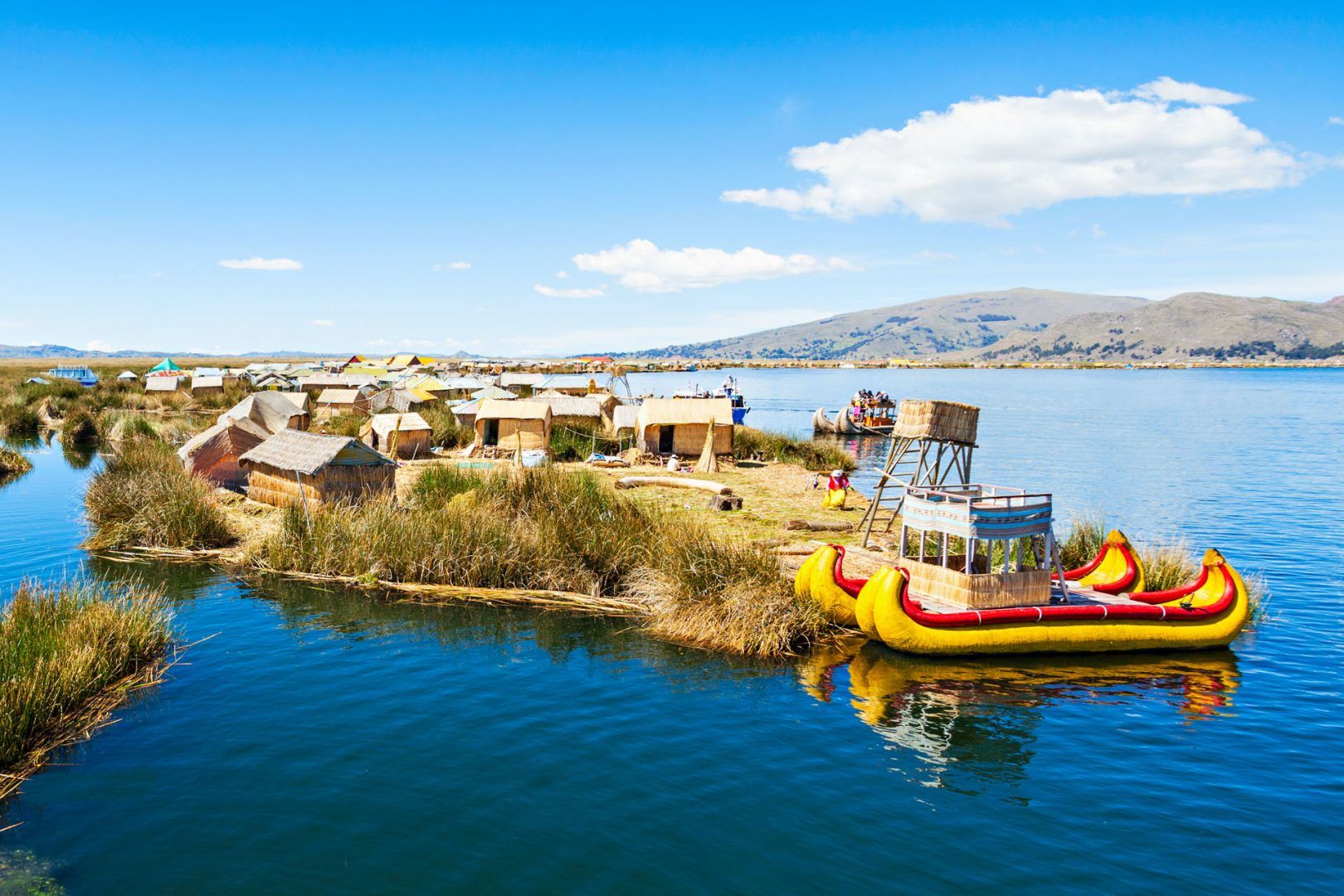
The serene Lake Titicaca © Shutterstock
Discover the highlights of Peru on this 14-day journey. Spend day 1 in Lima, where you'll acclimate and explore at your leisure. d ay 2 brings a half-day tour of Lima's historic center, immersing you in Peru's rich history and vibrant culture. On day 3 , you'll fly to Cusco and visit local artisans and markets, getting a true sense of Andean life. Day 4 takes you through the breathtaking Sacred Valley, with visits to Maras Saltpans and Moray terraces. The journey reaches a pinnacle on day 5 with a train ride to the awe-inspiring Machu Picchu.
Day 6 offers a serene sunrise at Machu Picchu and a relaxing visit to the local hot springs. You'll return to Cusco on day 7 , exploring its cobblestone streets and Inca heritage. Day 8 is a scenic train journey to Puno, where on day 9 , you'll kayak on Lake Titicaca and visit the unique Uros "Floating Islands." The adventure continues on day 10 to the Colca Canyon, a stunning natural wonder. Day 11 allows you to observe Andean condors and explore local villages.
You'll journey back to Arequipa on day 12 , enjoying the local landscapes, and spend day 13 touring Arequipa's historic sites. Finally, on day 14 , you'll depart from Arequipa. Read more .

Machu Picchu, an essential for any 14 days Peru itinerary © Shutterstock
Itinerary overview
Check out this Peru 14 days itinerary:
- Arrive at Lima International Airport.
- Explore Lima at leisure for the rest of the day.
- Half-day guided tour of Lima's Historical Center.
- Visit Plaza San Martin, Plaza Mayor, Government Palace, and more.
- Explore the Banco Central de Reserva Museum and Santo Domingo Convent.
- Stop at Larco Herrera Museum for a comprehensive overview of Peru's ancient past.
- Enjoy a meal at Café del Museo Restaurant.
- Experience Lima's nightlife and Pisco Sour lesson.
- Try Amazonian appetizers and create exotic ceviche.
- Transfer for a flight to Cusco.
- Visit Awanacancha Textile Center, Pisac Market & Pablo Seminario Ceramic Workshop.
- Learn about Andean textile art and dyeing techniques at Awanacancha.
- Explore Pisac Market and experience the vibrant atmosphere.
- Visit Pablo Seminario's Ceramic Workshop and see unique art expressions.
- Journey through the Sacred Valley to Maras Saltpans.
- Explore the seemingly never-ending terraces and learn about salt extraction.
- Visit Moray terraces, a former agricultural laboratory or place of worship.
- Explore the Inca fortress and citadel of Ollantaytambo.
- Lunch at a local restaurant.
- Transfer to the train station for a journey to Machu Picchu.
- Guided tour of the Citadel, including Main Plaza, Sacred Sun Dial, and more.
- Buffet lunch at Tinkuy Restaurant - Belmond Sanctuary Lodge.
- Explore Machu Picchu and enjoy the breathtaking surroundings.
- Enjoy a beautiful sunrise and stroll around Machu Picchu.
- Visit the Hot Springs in the Town of Machu Picchu.
- Second visit to the Citadel of Machu Picchu.
- Return to Ollanta and transfer to Cusco.
- Discover Cusco's cobblestone streets and original Inca walls.
- Visit Santo Domingo church, built on the foundations of the Inca Temple Koricancha.
- Head to San Cristobal viewpoint for panoramic views.
- Explore the Sacsayhuaman Archaeological site.
- Visit the Inca Baths of Tambomachay.
- Guided tour of the Cathedral in the Main Plaza.
- Transfer to Wanchaq Train Station.
- Board the Titicaca train for a scenic journey.
- Enjoy panoramic views and Andean landscapes.
- Arrival in Puno
- Visit Llachon Village on the Capachica Peninsula.
- Kayak along the banks of Lake Titicaca.
- Motorboat trip to Taquile Island.
- Lunch at the Town of Taquile.
- Walk through hills and archaeological sites.
- Visit the "Floating Islands" of the Uros.
- Depart from Lake Titicaca to the Colca Canyon.
- Enjoy landscapes, visit Lagunillas viewpoint, and observe Andean wildlife.
- Lunch in Chivay town.
- Free time to explore the surroundings or relax in hot springs.
- Early morning drive to "Cruz del Condor" observation point.
- Spot Andean condors soaring over the Colca Canyon.
- Visit traditional villages and towns.
- Return to the hotel and optional free time.
- Morning departure for a journey back to Arequipa.
- Drive through lookouts and villages.
- Arrival in Arequipa and transfer to the hotel.
- Half-day tour of Arequipa, including the main square and Cathedral.
- Visit La Compañia Church and Santa Catalina Convent.
- Explore the well-preserved cloister and gardens.
- Afternoon at leisure
- Transfer to Arequipa Airport for departure.
- Assistance with check-in procedures and departure formalities.
If this trip suits your taste, why wait? Customise your experience with our tailor-made trip service and book it today.

Marcahuasi, Peru © Shutterstock
Peru beckons adventurous travellers with a rich tapestry of experiences. This 14-day Peru itinerary begins with an arrival in vibrant Lima, where day 1 is all about leisurely exploration. Day 2 dives into Lima's rich history with a city tour.
On day 3 , you'll be whisked away to Arequipa, exploring its beauty. The excitement peaks on day 4 with a visit to the majestic Colca Canyon. Day 5 is a serene journey across Lake Titicaca. You'll transition to the historic Cusco on day 6, followed by a deep exploration of its treasures on day 7 . Day 8 leads you through the Sacred Valley. The iconic Machu Picchu awaits on day 9 , with an optional revisit on day 10 .
Days 11 and 12 transition you to Puerto Maldonado for a unique Amazon experience. Day 13 is filled with nature's wonders, and day 14 marks your departure, leaving you with a trove of unforgettable memories. Read more.

Mid-morning snack in Pisac, Peru © Shutterstock
Check out this Peru 14 days itinerary
- Arrival in Lima International Airport
- Leisure time to explore Lima
- Morning city tour of Lima's Historical Center
- Visit Plaza San Martin, Plaza Mayor, Government Palace, City Hall, Cathedral, and Religious Art Museum
- Explore the residential Districts of San Isidro and Miraflores
- Visit Huaca Pucllana, El Olivar Park, Central Park of Miraflores, and Larcomar
- Stop at Larco Herrera Museum to explore pre-Columbian art
- Air transfer from Lima to Arequipa at 07:00 AM
- Morning city tour of Arequipa
- Visit Main Square, Cathedral, La Compañia Church, and Santa Catalina Convent
- Overnight stay at Casa Andina Private Collection Arequipa
- Early morning departure to Colca Canyon
- Drive across Pampa Cañahuas, Aguada Blanca National Reserve, and various lakes
- Stop for "Coca Tea" and reach the highest point of the journey
- Lunch in Chivay, transfer to Colca Lodge Spa & Hot Springs - Hotel
- Visit Condor Cross in the morning
- Explore traditional villages with ancient terraces
- Lunch in Chivay
- Transfer to Puno, stopping at Lagunillas viewpoint
- Full day excursion to Uros & Taquile Islands
- Visit Taquile Island, Chucuito, and the "Floating Islands" of the Uros
- Overnight stay at Casa Andina Private Collection Puno
- Bus service Puno/Cusco including en route stops and lunch
- Visit Pucara, Abra La Raya, Raqchi, Checaupe, Andahuaylillas, and Wacarpay Lake
- Transfer to Hotel Casa Andina Private Collection Cusco
- Explore Cusco's historical monuments
- Visit Santo Domingo church, San Cristobal viewpoint, Sacsayhuaman, Inca Baths of Tambomachay, and Main Plaza
- Afternoon at leisure for personal activities
- Visit Awanacancha, Pisac Market, Pisac Ruins, and Ollantaytambo Fortress
- Overnight stay at Sol & Luna Lodge & Spa
- Excursion to Machu Picchu via roundtrip train
- Guided tour of Machu Picchu
- Return to Cusco by train and transfer to Hotel Casa Andina Private Collection
- Free time in Aguas Calientes
- Optional second visit to Machu Picchu
- Transfer to Cusco Airport for the next flight
- Arrival in Puerto Maldonado
- Transfer to Posada Amazonas Lodge
- Canopy tower visit
- Presentation on Infierno ecotourism project
- Tres Chimbadas Oxbow Lake visit
- Parrot Clay Lic
- Centro Ñape trail
- Transfer back to Puerto Maldonado and departure
Planning your trip to Peru? See our Peru itineraries for inspiration.

This 14 day trip starts in the bustling city of Lima. Day 2 unfolds with a panoramic tour, showcasing Lima's historic splendor. Day 3 brings an enchanting boat trip to the wildlife-rich Ballestas Islands. The adventure soars on day 4 with a flight over the enigmatic Nasca lines.
Discover Arequipa's charm on day 5 and journey through Pampa Cañahuas on day 6. Day 7 offers a spectacular view of soaring condors. Days 8 and 9 immerse you in Lake Titicaca's culture and a scenic route to Cusco. Day 10 and 11 reveal Cusco's hidden gems and the Sacred Valley's mystique. The climax on day 12 is a spellbinding tour of Machu Picchu.
Day 13 offers a restful pause, and day 14 gently brings you back, enriched and inspired, from your unforgettable Peruvian exploration. Read more f or the complete itinerary.

The Nazca Lines are a must for any 14 days Peru itinerary © Shutterstock
Check out this Peru 14 days itinerary
- Fly into Lima International Airport.
- Panoramic city tour covering Colonial Center, Main Square, Government Palace, Cathedral, Archbishop's Palace, and Municipality of Lima.
- Visit the Convent of San Francisco, showcasing cloisters and catacombs.
- Panoramic view of Huaca Pucllana and residential areas.
- End the tour with a panoramic view of the Pacific Ocean and Miraflores beaches.
- Transfer to Paracas Pier for a boat excursion to Ballestas Islands.
- View the giant Candelabra outlined on a hill.
- Observe Humboldt penguins, sea lions, gulls, and pelicans.
- Transfer to Nasca by public bus.
- Transfer to Ica/Nasca airfield.
- Fly over Nasca lines for approximately 30 minutes (1 hour from Ica).
- View giant zoomorphic and geometric figures on the desert sands.
- Transfer to Arequipa by public bus.
Day 5
- Explore Arequipa on your own in the morning.
- Afternoon city tour covering the Carmen Alto viewpoint, Yanahuara colonial district, and the Monastery of Santa Catalina.
Day 6
- Journey to Pampa Cañahuas, a Vicuna national reserve.
- Stop at the viewpoint of the Volcanoes.
- Arrival in Chivay, transfer, and accommodation in the hotel.
- Afternoon at leisure.
- Morning visit to the Cross of the Condor viewpoint.
- Witness the flight of condors and appreciate the depth of the canyons.
- Free time for lunch and continue the trip to Puno.
- Transfer to the pier for an excursion to Titicaca Lake.
- Visit the floating islands of the Uros, then Taquile Island.
- Experience the lifestyle and customs of the Uros and Taquile communities.
- Full-day journey on Titicaca Lake, the world's highest navigable lake.
- Transfer to the bus terminal for a tourist bus to Cusco.
- Visits to Pucara, "La Raya" viewpoint, Raqchi archaeological center, and Andahuaylillas church.
- Arrival in Cusco with a transfer to the hotel.
- Enjoy the morning at leisure in Cusco.
- Afternoon city tour covering the Main Square, Temple of the Sun, Cathedral of Cusco, Sacsayhuaman, Q'enco, Puca Pucara, and Tambomachay.
- Breakfast at the hotel.
- Tour Pisac town, handicraft market, Sacred Valley of Urubamba, and Ollantaytambo.
- Lunch buffet in the Sacred Valley.
- Explore the archaeological centre of Ollantaytambo.
- Transfer to Ollantaytambo Lodge.
- Transfer to the train station for an excursion to Machu Picchu.
- Guided tour of Machu Picchu.
- Lunch included in Aguas Calientes.
- Return to Cusco with a transfer to the hotel.
- Day of leisure
- Transfer to the airport in Cusco
Our itineraries are crafted by local travel experts and can be booked today.

Incan site of Choquehuirao, Peru © Shutterstock
On this 14-day journey you’ll be taken through the enchanting landscapes of Peru, where the iconic Machu Picchu, the mythical Titicaca Lake, and the untamed Amazon beckon.
It starts with your arrival in Lima and an exploration of its colonial charm. Day 2 is a culinary adventure in Barranco, tasting over 15 Peruvian delicacies. Day 3 takes you to Cusco with visits to ancient ruins and temples. The next day, a journey to the breathtaking Rainbow Mountain awaits. Day 5 explores the Sacred Valley and its markets. Machu Picchu is the highlight on day 6 .
Day 7 involves a transfer to Puno, followed by an exploration of Lake Titicaca on day 8 . Days 9 to 13 immerse you in the Amazon's wilderness, offering hikes, boat rides, and wildlife sightings. The journey concludes on day 14 with a return flight to Lima. Read more .

Islas Flotantes, Lake Titicaca, Peru © Shutterstock
- Private transfer from Lima International Airport
- Rest of the day at leisure to explore the colonial city.
Day 2
- Walking food tour in Barranco, sampling over 15 Peruvian foods and drinks.
- Interact with local hosts to learn to prepare ceviche and pisco sour.
- Explore historical and cultural details during the 4-hour food tour.
- Visit Love Park, Huaca Pucllana, and the city centre of Lima.
- Explore Main Square, Government Palace, Archbishop’s Palace, Cathedral, and Municipality.
- Visit the Convent of San Francisco to discover the Catacombs of Lima..
- Early morning transfer to Lima Airport for flight to Cusco.
- Welcome coca tea upon arrival in Cusco for acclimatisation.
- Visit the Cathedral, Koricancha (Temple of the Sun), and nearby ruins: Qenqo, Puca Pucara, Tambomachay, and Sacsayhuaman Fortress.
- Early morning pick-up for Rainbow Mountain adventure.
- Walk through beautiful landscapes to reach the rainbow mountain (Vinicunca).
- Spend one hour at the top and descend to return to Cusipata for lunch.
- Return to Cusco in the evening.
- Early morning journey through the Sacred Valley of the Incas.
- Visit Pisaq Market for quality handicrafts.
- Lunch in Urubamba and walk through the fortress of Ollantaytambo.
- Return to Casa Andina Premium Valle Sagrado Hotel & Villas for an overnight stay.
- Transportation to Ollantaytambo station for a train to Aguas Calientes.
- Bus to Machu Picchu and optional guided tour of Huayna Picchu.
- Explore Machu Picchu, enjoy lunch, and return to Cusco by train.
- Private driver to Cusco airport for a flight to Juliaca.
- Private transfer to Puno, free afternoon to explore.
- Pick-up for a motor boat to explore Lake Titicaca.
- Visit Uros, a floating island made of reeds, and Taquile Island.
- Enjoy a traditional lunch and return to the hotel in Puno.
- Morning pick-up, flight from Juliaca to Lima.
- Transfer to Lima airport
- Flight from Lima to Iquitos.
- Visit CREA wildlife rehabilitation centre and transfer to Grand Amazon Lodge.
- Jungle refreshment, settle into a private river-view bungalow.
- Morning hike to learn about medicinal and industrial plants.
- Boat ride up the Yanayacu River or explore lakes for wildlife.
- Sunset over Lake Moena, optional evening excursion or relaxation.
- Boat ride to see the Victoria Amazonica and Hoatzin birds.
- Boat ride to San Joaquin, car ride back to Iquitos airport.
- Flight to Lima and connect with international departure flight.
Debating what time of year to plan your trip? See our guide to when to go to Peru .
Our team of local travel experts has carefully designed each of these itineraries. Need more details? Check out our guide on the optimal time to visit Peru , the top activities in the country, or explore other Peru itineraries for ideas.
Alternatively, you can bypass the extensive research and planning typically required for crafting your dream trip. Take advantage of our tailor-made trip service , where every aspect is customizable to suit your preferences.
Excited to organize your own five-day adventure in Peru? Consult our Rough Guide to Peru, packed with expert insights to assist you in crafting the ideal itinerary.
The Rough Guides to Peru and related travel guides
In-depth, easy-to-use travel guides filled with expert advice.

Travel advice for Peru
From travel safety to visa requirements, discover the best tips for traveling to Peru
- Eating and drinking in Peru
- Getting around Peru: Transportation Tips
- How to get to Peru
- Travel Tips Peru for planning and on the go
- Best time to visit Peru
Find even more inspiration here

written by Dre Roelandt
updated 29.01.2024
Dre Roelandt is originally from the United States but lives and works in Berlin, Germany. Dre is a freelance writer and artist with a passion for travelling. They are an in-house Content Editor at Rough Guides.
Ready to travel and discover Peru?
Get support from our local experts for stress-free planning & worry-free travels.
- Where to stay
- Travel advice
I Travel Peru
All you need to know for your trip to Peru
The Best Peru Travel Itineraries: 7, 10, 21+ Days
Are you looking for the best Peru travel itineraries for your upcoming trip? As a Peruvian who has traveled all around Peru, in this post I will recommend you what I consider the top routes around the country’s highlights.
From the mystical Andes towns and sites, such as Cusco and Machu Picchu, to the sand dunes of Huacachina in the coast, and the vibrant Amazon rainforest, Peru has it all.
In this post we will take a look at what are some of the best itineraries around Peru, whether you land in Lima or are traveling overland from Ecuador, Chile or Bolivia.
I am proposing here several travel itineraries: 1 week in Peru, two different 10-day itineraries, a 3 week itinerary and a longer backpacking route. For that last one, the amount of time you will stay at each destination depends on the total amount of time you have.
1 Week Peru Itinerary: Lima and Cusco
- Day 1: Lima
- Days 2-3: Cusco city
- Day 4: Ollantaytambo, Aguas Calientes
- Day 5: Machu Picchu, Cusco city
- Day 6: Cusco city, Maras and Moray or Rainbow Mountain
- Day 7: Lima
You can read the itinerary overview below. For Days 2-6 you can find a detailed itinerary here: 5 days in Cusco .

Overview of this 1-Week Itinerary
The first of this Peru travel itineraries is the standard itinerary that most travelers who come to Peru for a week follow.
First, you land in Lima, where I recommend you stay for one day. In Lima, you can visit the historic center, walk around the boardwalk in Miraflores en Barranco, and enjoy Peruvian food at a good restaurant. If you didn’t know, some of the best restaurants in the world are in Lima!
Next, take a flight to Cusco city. Cusco city is the capital of the Cusco region, and it’s a very beautiful old city, a mix of nativa Inca heritage and Spanish colonial influence.
In total, spend 5 days in Cusco. . The first two days enjoy Cusco city, its cobblestone streets, Inca fortresses and traditional markets.
On Day 4, head from Cusco to the Sacred Valley and spend a day at Ollantaytambo , a cute old town with archaological sites amidst the Andes mountains.
On the evening of Day 4, take the train to Aguas Calientes, and sleep there. The early morning of Day 5, hike or take the bus to Machu Picchu . This will be the highlight of your trip! In the late afternoon or evening, head back to Cusco city via Ollantaytambo.
Day 6 is up to you. You can keep exploring Cusco city or take a a half day tour to the Maras pink salt mines and Moray ruins .
You can either fly back to Lima on the evening of Day 6 or early morning of Day 7. If you decide to fly back to Lima on Day 7, on Day 6 you could even visit the Rainbow Mountain. That is, if you have the energy, since it implies starting your day at 4am.
Spend day 7 doing some shopping in Lima and buying some nice Peruvian presents to take back home.
10-day Peru Itinerary (option 1): Lima, Cusco and Amazon Rainforest
- Day 2: Cusco city
- Day 3: Cusco city, Maras and Moray
- Day 4: Pisac and Ollantaytambo.
- Day 5: Machu Picchu
- Day 6: Manu National Park
- Day 7: Manu National Park
- Day 8: Manu National Park
- Day 9: Manu National Park
- Day 10: Lima. Fly back home.
You can read the itinerary overview below, or the detailed itinerary here: 10 Days in Peru

I have made two different Peru travel itineraries if you have 10 days to visit. The first one is this one, where on the first part you get to visit Lima, spend time in Cusco, the Sacred Valley and Machu Picchu. It’s much like the 1 week itinerary.
One difference is that I have added a stop at Pisac, in the Sacred Valley , before heading to Ollantaytambo. Pisac is famous for its ruins and its market, and it makes for a great morning trip.
On top of that, on this itinerary you will spend some days at the Manu National Park, in the Amazon rainforest. The Manu National Park is actually one of the most bio diverse places in the planet, so if you like nature you shouldn’t miss it!
There are several tour companies that will take you from Cusco to the Manu National Park . The tours involve sleeping in lodges in the jungle, doing walks in nature, spotting wildlife and exploring the jungle by boat. Then they take you back to Cusco, from where can catch a flight back to Lima.
You can get all the details in this post about a ten-day itinerary to Peru .
10-day Peru Itinerary (option 2): Lima, Arequipa and Cusco
- Day 2: Arequipa city
- Day 3: Arequipa city
- Day 4: Colca Valley
- Day 5: Colca Valley, Arequipa, Cusco city
- Day 6: Cusco city
- Day 7: Ollantaytambo.
- Day 8: Machu Picchu
- Day 9: Cusco. Optional: Maras and Moray.
- Day 10: Lima.

When writing this post about Peru travel itineraries, I decided to make a second 10-day option for those who think they might not enjoy the jungle. Instead of the rainforest, in this itinerary you will visit Arequipa, a region in the Peruvian Andes.
Arequipa city is the capital of the Arequipa province. It’s an old colonial city where you can spend two relaxing days (Days 2 and 3). Visit places like the Santa Catalina Monastery, exploring its squares and trying some local food. You can check out here more things to do in Arequipa .
On Day 4, head to the Colca Valley. To get there, you can either take a bus or book a 2-day tour. The way there has beautiful landscapes, with vicuñas and alpacas roaming around.
Spend the rest of Day 4 in one of the small towns in the valley, like Chivay or Yanque. Enjoy the views of the mountains and visiting some hot springs.
On Day 5, visit La Cruz del Condor, a view point from where you will get to spot Condors overflying the Colca Canyon which is is the 2nd deepest canyon in the world. Get back to Arequipa and fly to Cusco city in the afternoon.
The rest of the itinerary is much like this itinerary of 5 days in Cusco .
3 Weeks in Peru
- Days 1-2: Lima
- Day 3-4: Arequipa city
- Day 5: Colca Valley
- Days 6: Colca Valley, Arequipa city
- Day 7-8: Cusco city
- Day 9: Cusco with day trip to Maras, Moray and Chinchero
- Day 10: Pisac
- Day 11: Ollantaytambo, Aguas Calientes
- Day 12: Machu Picchu
- Day 13: Cusco city. Optional: hiking or Rainbow Mountain
- Days 14-17: Manu National Park
- Day 18: Cusco to Puno, with stops along the way
- Day 19: Lake Titicaca and islands (Uros and Amantani islands)
- Day 20: Taquile island and back to Lima
- Day 21: Lima
You can read the itinerary overview below, or find the detailed itinerary here: 3 Weeks in Peru .

Quick Overview of this 3-Week Itinerary
This travel itinerary is a combination of the two previous ten-day itineraries in Peru.
In your three weeks, you will start by visiting Lima, then head to Arequipa and the Colca Valley. From there, you will continue to Cusco, the Sacred Valley and Machu Picchu. Afterwards, you spend some days at the Amazon rainforest, get back to Cusco, and from there head to Puno and Lake Titicaca.
You can find all the details of that itinerary in this post about spending 3 weeks traveling around Peru .
If you are not a fan of the jungle, though, you could skip the Manu National Park. One option could be to get Cusco to Puno directly. Fly back to Lima earlier. From Lima, you can fly to Máncora , and spend 3 relaxing days at the beach.
Otherwise, you could use two of those nights before heading to Arequipa. After Days 1-2 in Lima, you could visit Paracas and the Ballestas Islands on Day 3 and exploring Huacachina on Day 4. From there you could either take a bus night to Arequipa, or get back to Lim and fly from there. The last extra day you could use it to visit the Rainbow Mountain in Cusco.
Peru Backpacking Travel Itinerary (North to South or Viceversa)
- Chachapoyas
- Cusco (Sacred Valley, Machu Picchu)
- Manu National Park – Cusco
- Colca Valley – Arequipa
- Cross to Chile or back to Puno if entering Bolivia
You can read the itinerary overview below. For your time in Lima, you can take a look at our Lima itineraries . And for your time in Cusco, this 5-day itinerary in Cusco can be a good guide.

In contrast to the previous Peru travel itineraries, this one is specifically tailored for backpackers. It’s a route along some of Peru’s highlights, as well as some off-the-beaten-path destinations in Peru .
This itinerary implies that you are entering Peru from Ecuador.
If you are entering from Bolivia or Chile instead, do the same route but backwards.
Quick Overview of This Peru Backpacking Travel Itinerary:
From the border, take a bus to Mancora, a nice and relaxing beach town and a great surfing destination.
Continue to Chachapoyas, in the high jungle of Peru . Take a cable car to Kuelap Fortress and hike to one of the tallest waterfalls in the world.
Head to Cajamarca, an off-the-beaten-path colonial city in the Andes in the middle of nature.
Return to the coast and visit Huanchaco , a small fishermen village near Trujillo.
Continue South to Huaraz, the hiking capital of Peru . Visit turquoise lakes surrounded by snow-capped mountains.
After that, visit Lima , the capital of Peru. Spend some days here with the conveniences of being back in a big city. Visit the historic center, modern Miraflores and artsy Barranco .
Go further South and enjoy the activities you can do in Paracas , like visiting the Ballestas Islands and the Candelabra. From there, visit Huacachina, a small oasis and enjoy sandboarding, dune buggy rides, and visit a pisco ( a Peruvian drink ) factory. You could do a day trip from there to overfly the Nazca lines.
Head West to Ayacucho , a small city in the Andes from which you can visit the Vilcashuaman ruins and the Millpu turquoise waters.
Continue your journey West towards Cusco , and enjoy Cusco city, the Sacred Valley, and Machu Picchu. If you have a lot of time, you can easily spend two weeks exploring Cusco, and even more if you plan to hike the Inca trail.
Afterwards, explore the jungle at the Manu National Park. Return to Cusco and take a bus to Puno. Enjoy the many things to do in Puno , like visiting the islands at Lake Titicaca.
Head to the colonial Arequipa city and spend some time at the Colca Valley and Colca Canyon.
Continuing Your Trip To Other Countries
At the end of your trip, depending on what your next destination is, from Arequipa either head back to Lima, continue towards Tacna to cross to Chile, or go back to Puno if you want to cross to Bolivia.
Custom Peru Travel Itineraries
Do you need help with a custom itinerary? I am Peruvian and have traveled all around Peru, to the places I write about and many others.
I can help you organize your trip according to your interests, time and budget . According to these, I can plan the best Peru travel itinerary for you, including recommendations of what to do at every place, help you with buses or train information, booking restaurants, hotel suggestions, etc. I live in Lima so I can also book for you a trustworthy English-speaking taxi driver from Lima airport.
The rate is 45 dollars per day of the personalized travel itinerary. If you are interested, write me an email at [email protected] .
FAQ About Planning a Peru Itinerary
Here are some questions that might come up when you are planning your trip to Peru.
For how long can I stay in Peru?
Foreigners are allows to stay up to 180 days over a period of 365 days. However, most tourists get a standard 90 day entry permit (or less). If you are planning to stay longer, talk to the customs agent before they register your passport information into their system. You are not guaranteed to get 180 days at once, but it’s possible you could.
How much should I budget for my travel itinerary in Peru?
It really depends on the city or town you are visiting.
In Lima, you can spend a lot if you want, by staying at high-end hotels and eating at fancy restaurants. A night at a 5-star hotel in Lima or Cusco will cost around USD$ 300 or USD$ 400 upwards, but a room at a dorm can cost USD$ 10-20. And meal at a nice restaurant can cost you USD$ 20 or more per person in Lima, and maybe USD10-15 in Cusco. But there are also high-end restaurants in Lima, like Maido or Central, which are around USD$350 per person.
In small towns you budget much less per day. In a town in the Sacred Valley for example, , you could have a meal for USD$4-7.
Do I need to bring cash or is it easy to pay by credit card?
In the cities you will have no problem paying by card at hotels, restaurants and shops. But if you are visiting small towns, markets, taking public transport, etc, you will need to have cash with you. Cash will also be handy for when you leave a tip in Peru , for example at restaurants or to your porters if you hike the Inca Trail.
What’s the best season to travel to Peru?
The best season is the shoulder season, April-May and October. These months are part of the dry season in Peru , so that you can enjoy a nicer weather if you are planning to hike or visit Machu Picchu. June to September are just in the middle of the dry season but there will be more crowds at Machu Picchu and the weather on the coast will be cold.
What kind of clothes do I need to bring to Peru?
If you visit Peru during the rainy season (November/December to March), bring summer clothes for Lima but a poncho for the Cusco and areas in the Andes. And if you travel during the dry season in Peru (April to November), bring winter clothes for the coast.
If you are traveling to Cusco, Arequipa, or other regions in the Andes, bring warm clothes regardless of the season, especially for the night. Days can be sunny and warm, and a T-shirt might be fine. But the nights are cold and usually you need a sweater and a jacket.
For more information about what kind of clothes to bring for Lima according to the season, you can read this post about what to wear in Lima .
I’m from Peru and share travel tips and experiences based on my trips around my country.
Popular Posts
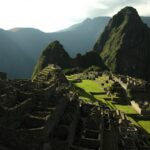
- Post published: October 13, 2023
- Post category: South America
The Ultimate 7 Day Peru Itinerary for Adventure-Lovers

This post contains affiliate links, which means that I may receive a small commission if you book through my links, at no extra cost to you.
Are you planning a trip to Peru and need help building the perfect 7 day Peru itinerary? You’ve come to the right place! I spent 7 days in Peru and it was absolutely incredible. I did a ton of research before my trip to plan out the best Peru Itinerary for 7 days, and I’ll give you our exact itinerary in this blog post so you can use it too!
Now, Peru is a big country. You definitely can’t see all of it with just 7 days in Peru. If you’re a first-timer to Peru, I recommend sticking to Southern Peru to see Machu Picchu as well as many other epic nature spots. My itinerary is perfect for adventure-lovers and it is JAM PACKED. If you can add a few days to your trip to incorporate some rest days into your Peru itinerary, that would be ideal! Not gonna lie – this trip was epic but exhausting (but so worth it). Keep reading for my full Peru itinerary for 7 days!
SEE ALSO: Cusco to Machu Picchu in One Day: Everything You Need to Know
7 Day Peru Itinerary: Trip Overview
- PTO/Vacation Days Needed: 6-7
- Currency: Sole
- Language: Spanish
- Time Zone: Central Time
7 Day Peru Itinerary Overview:
- Day 1: Ollantaytambo
Day 2: Day Trip to Machu Picchu
- Day 3: Sacred Valley to Cusco
- Day 4: 7 Lakes of Ausangate Hike
- Day 5: Rainbow Mountain
Day 6: Cusco to Lima
- Day 7: Huacachina Day Trip
I planned this 7-Day Peru itinerary in this exact order to give time to acclimate to the elevation. The town of Ollantaytambo is lower elevation than Cusco (8K feet vs 11K ft) and is closer to Machu Picchu, so it makes the most sense to start your trip there!
How to Get to Peru
The biggest airport in Peru is in the capital city of Lima (LIM). There are direct flights to Lima from LAX and several other US airports. For this itinerary, I recommend picking a flight that lands in the morning in Lima, and then taking a connecting 1-hour flight from there to Cusco to start your trip!
Pro Tip : I highly recommend using Taxidatum throughout your Peru trip to pre-book private transfers in advance (for instance, from the Cusco airport to Ollantaytambo, from Ollantaytamnbo to Cusco). Their website makes it super easy to request the exact type of ride you are looking for. They are super responsive – once you submit a request, you’ll receive an email from them in just a few minutes. You can also request to pay in advance if you want to use your credit card instead of cash.
Best Time to Visit Peru
The best time to visit Peru is in their dry season: May – October. I visited in late September and had perfect weather! It’s always a good idea to pack a rain jacket (even in the dry season) as it can rain on a moment’s notice.
Peru Packing List
As an Amazon Associate I earn from qualifying purchases.
- Travel Backpack (this is the one I have and I love it!)
- Packing Cubes
- Reusable water bottle
- Portable charger
- USB charger cord (this is something I wish I packed! We found ourselves needing it quite often, in some of the car rides, on the LATAM plane ride, on the PeruHop Bus, etc)
- Rain Jacket (this is the one I have!)
- Hiking Boots (these are the ones I have, but make sure you try some on & pick the ones that feel the best for you!)
- Hiking Socks (these are my fave)
- Sunscreen (this is my fave, and it’s travel sized!)
- Noise Cancelling Headphones (I use these on every single flight)
- Activated Charcoal (I bring these on every international trip, in case something I eat starts to hurt my stomach)
- Hydration Powder (this one has clean ingredients! I made sure to drink one every morning while I was there)
7 Day Peru Itinerary
Day 1: land in cusco, head to ollantaytambo & settle in.
The first day of your 7 days in Peru is a big travel day. Once you land in Lima, you’ll need to then take a connecting 1.5-hour flight to Cusco. I recommend giving yourself at least a 2-hour buffer for the layover, just in case there are long lines for customs.
Once you land in Cusco, take a private transfer or taxi 2 hours to the town of Ollantaytambo. I highly recommend booking a private transfer beforehand via Taxidatum . It makes it super easy! It’s also very affordable – our two-hour ride from Cusco to Ollantaytambo only cost $34 USD.
Once you arrive in Ollantaytambo, the adventure begins!
What to Do on Day 1 in Ollantaytambo

Ollantaytambo is a small town in the Sacred Valley of Peru. It’s very picturesque, with cobblestone streets, historical buildings, and some awesome Inca ruins right in the heart of town. I highly recommend staying here for the first two nights of your 7 days in Peru instead of Cusco. The town itself is such a good vibe, but also this way you can acclimate to the elevation (Ollantaytambo is 9K feet vs 11k ft in Cusco) AND you are closer to Machu Picchu than you would be if you were in Cusco (1.5 hours vs 3 hours away).
Get Some Food in Town
Once you get checked in, grab some food in town. I highly recommend:

- Sunshine Café : casual café for breakfast or lunch that has a balcony with a view!
- Uchucuta Cafe : has a great “American Breakfast” where they bring you out a full platter of bread with homemade jam, eggs, avocado, and fresh squeezed juice.
- Apu Veronica : One of my favorite meals I had the whole trip! I had the Pollo Saltado
Check out the Ollantaytambo Ruins

Afterwards, take a quick walk over to the Ollantaytambo Ruins, which are super impressive Inca ruins that are literally right on the outskirts of town. The ruins are comprised of many agricultural terraces, and the view from the top is amazing!
You have to buy a ticket to enter (boleta turistico). You can either buy the full boleta tursitico ($38, includes a ton of other sites), or the partial turistico ($21, includes the Sacred Valley ruins). We went with the partial ticket. Make sure you save it, as you’ll need it again for Day 3 of your 7 day Peru itinerary to get access to Moray and Pisac.
There are locals standing out front selling their services as a guide to come with you through the ruins. We opted out of this and just walked around it ourselves, however if you are really interested in the history and facts about this special spot, then hire one of the guides!

The views from up here looking down below at the town and the ruins are incredible. If you’re lucky, you might even see some wild Alpacas grazing.
Best Places to Stay in Ollantaytambo
There are quite a few great options of places to stay in Ollantaytambo! A few I recommend:

- Apu Lodge : located off a quiet side street just a few minutes walk from the heart of town. This spot has great reviews and beautiful views!
- Kamma Guest House : great reviews, conveniently-located, and awesome view from their rooftop
- Sky Lodge : if you’re looking for a unique lodging in Peru (and aren’t scared of heights!) – it would be so cool to stay here for a night or two! It’s about 30 minutes from Ollantaytambo, but they have a restaurant on site and the views (and overall experience) looks incredible. You’re literally hanging off the side of a mountain!
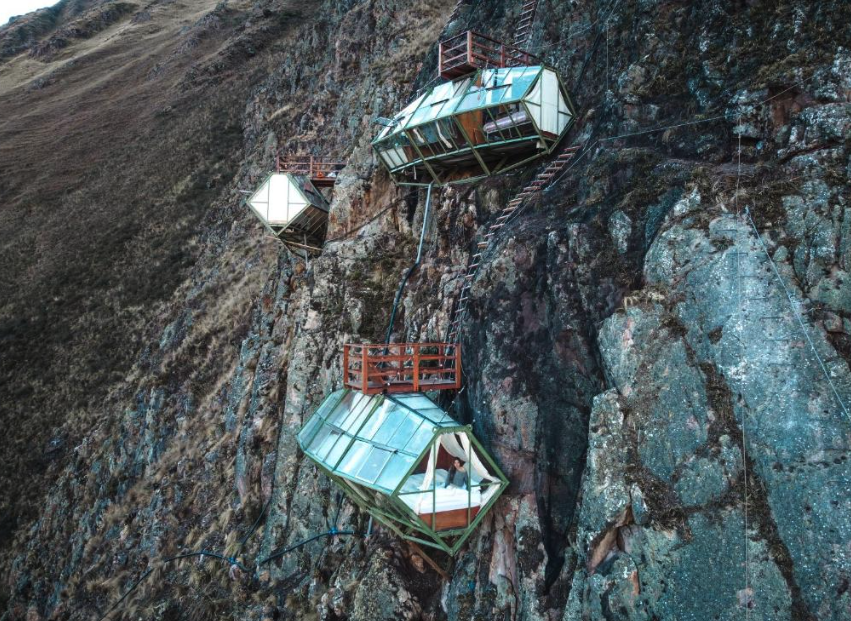
The second day of your 7 day Peru itinerary is an exciting one – you’ll get to see Machu Picchu, which is one of the 7 natural wonders of the world! I’m sure, like most people, that Machu Picchu was one of the main catalysts to inspire you to plan a trip to Peru ( I know it was for me!). Let me just tell you, it definitely lives up to the hype. Seeing it in person is just as epic as the pictures!

Booking Tickets for Machu Picchu
This is important!! You need to book your entry ticket to Machu Picchu ahead of time (I recommend at least two months ahead of time). It can sell out. Entry costs about $40-$60 depending on if you book direct through the government site (which can be a little hard to navigate) or if you want the easier experience booking through GetYourGuide (linked above). You select a ticket based not only of the date you are going, but also the one-hour time slot of when you can enter. Once you enter, you can stay as long as you like, but you HAVE to enter within the time frame of your ticket. They are strict about this. For instance, we booked a ticket for 11:00-12:00 entry, got up there at 10:55, and they made us wait 5 minutes before we could enter.
Note: On your 7 day Peru itinerary, I recommend avoiding Sunday as your Machu Picchu day. On Sundays, locals get in for free, so it can be even more crowded.
For more details on how to plan your day trip from Ollantaytambo to Machu Picchu, check out my other blog post: How to Plan a Day Trip to Machu Picchu .
If you have more than 7 days in Peru and want to do the Inca Trail hike to Machu Picchu, you’ll want to go on a guided Inca Trail trip like this one . It looks amazing, if you have the time to do it!
What to Do at Machu Picchu

You’ll take the train 1.5 hours from Ollantaytambo to Aguas Calientes (the town at the base of Machu Picchu), and then take a short 20-minute bus ride up to the top. Once you’re up there, you’ll see the entrance, as well as a restaurant and a little bar/cafe just outside of the entrance.
Enter Machu Picchu during the time slot you have allotted on your ticket, and get ready for some jaw-dropping views of this iconic landmark! Follow the signs for Circuit 1 & 2, which will lead you to the epic picture spot that you see all over social media. It’s even more breathtaking in person than it is in pictures!
We spent about 1.5 hours there, walking around, exploring and taking pictures. I would plan to spend around that (or more).
Afterwards, get back down to town and catch your train back to Ollantaytambo for the night!
Day 3: Ollantaytambo – Sacred Valley Tour – Cusco
On your third day of your 7-day Peru itinerary, it’s time to say goodbye to the cute town of Ollantaytambo and head to Cusco! The drive straight from Ollantaytambo to Cusco is about 2 hours, but I recommend making some stops in the Sacred Valley on the way.
The Sacred Valley is the area from Pisac (about 20 minutes from Cusco) to Machu Picchu, about 62-miles long, and is filled with Incan history and ruins. Ollantaytambo is part of the Sacred Valley.
You can, once again, book your private driver ahead of time via Taxidatum . Book your ride from Ollantaytambo to Cusco, but in the customize box, include a note that you want to stop at Moray, Maras Salt Mines, and Pisac on the way there. Ours ended up being around $60.
First Stop: Moray

The first stop on your way from Ollantaytambo to Cusco is Moray. It’s about 1 hour from Ollantaytambo. Moray is a spot with some interesting Inca ruins that almost look like a circular amphitheater set at the top of a hill. Your driver brings you right to the top at the parking lot/entrance where you can walk around and check it out. The most interesting thing about these ruins is that no one knows why they were created or what they were used for. There are a few theories (that it was used for farming/agriculture, an entertainment/amphitheater space, OR an alien landing!)
Second Stop: Maras Salt Mines
This next stop is just a 15-minute drive from Moray. The Maras Salt Mines are super cool. No one has exact info on how/when/why it was created, but apparently there’s a natural salt spring running through the area. The Incas cleverly created these different square pools and diverted the stream so that it runs into each of them. Currently, each square salt pool is owned by a different local family and they work to harvest it and turn it into salt. You can buy some of the salt here too – it’s really good!

Third Stop: Pisac (either the Pisac Market or the Pisac Ruins)
Pisac is about a 1 hour and 15 minute drive from the Maras Salt Mines.
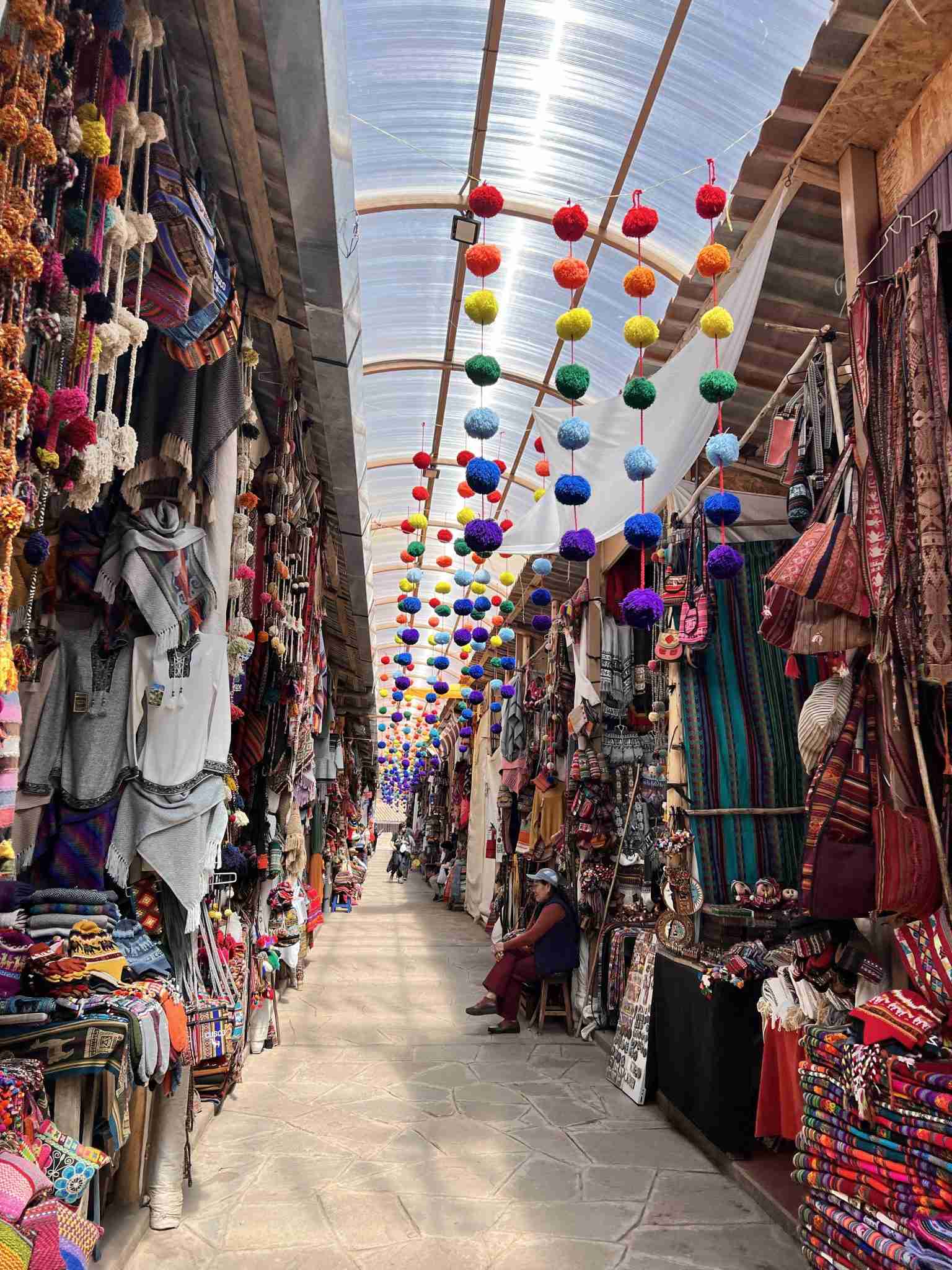
When I was doing research for this trip, everyone said to check out Pisac Market. I added it to my Peru itinerary but honestly, I wish I would have seen the Pisac Ruins instead of going to the Pisac Market.
The Pisac Market was cool – but I didn’t think it was anything special. The vendors are selling the same things that you can get at other street vendors in Ollantaytambo and Cusco. I will say though, this was the most peaceful market I’ve ever been to. I fully expected to be overwhelmed with people trying to get us to go to their stalls and buy something, but it was the complete opposite experience! Everyone was super nice and not pushy at all.
My friend and I each bought an Alpaca sweater and a hat. But then when we got to Cusco, we saw plenty of other sweaters (and the exact same hat).
The Pisac Ruins, however, look awesome. I recommend choosing the ruins over the market (or if you have time, you could do both!)
Next Stop: Cusco!

Cusco is a 50 minute drive from Pisac. It’s an amazing city full of old colonial architecture and is known as the main launching point to several different treks, day trips, and hikes. It
Once you arrive, check in and get some food!
Best Place to Stay in Cusco:
There are plenty of great options of places to stay in the historic city of Cusco!

Best Budget Option : Viajero Kokopelli Hostel
We stayed in a private room at Viajero Kokopelli Hostel and loved it! It was super nice and clean, in a GREAT location very close to the main square (Plaza de Armas), and there is a nice bar in the hostel that has a pool table and a lounge.
Best Mid-Range Option : Antigua Casona San Blas . This hotel is in the cute hipster neighborhood of San Blas. It’s an uphill walk to get to this neighborhood, but it’s worth it! It reminds me of streets/areas I’ve walked around in Italy or Greece. Very picturesque. This hotel has great reviews and is in an awesome location.
Best Luxury Option : Casa Cartagena Boutique Hotel & Spa . This hotel is actually a UNESO world heritage site! It’s a beautifully-restored antique home turned into a hotel right in the heart of the city.
Best Restaurants in Cusco
There are a ton of good restaurants in Cusco, but here are a few of our favorites that we tried!

- Organika : Organic farm-to-table restaurant. They had amazing Osso Bucco, homemade pasta, and sourdough pizza
- Morena Peruvian Kitchen : This is one of the best Peruvian restaurants in Cusco. It’s a nice slightly-upscale restaurant, and you’ll likely need a reservation. We walked up around 8pm on a Tuesday and had to wait about 30 minutes to get a table.
- La Bodega 138 : If you need a break from Peruvian food and are craving some pizza or pasta, this is a good spot
- Qura : Great breakfast or lunch spot with smoothies, avocado toast, and other health options!
Go to bed early if you can, tomorrow is a big day!
Day 4: Hike the 7 Lakes of Ausangate (Day Trip from Cusco)

The 7 Lakes of Ausangate hike was the highlight of our trip! The hike starts in a small remote village and weaves through the mountains, ending at 7 different alpine lakes. It’s absolutely incredible and I highly recommend including it on your 7 day Peru itinerary.
We did this hike with Salkantay Trekking , and the experience was great. It’s a group tour, but we ended up being the only two on it! This is a lesser-known day trip so it’s a great way to beat the crowds and be immersed in a peaceful mountain setting. We basically had the place to ourselves all day. The tour costs $100 per person, and is SO worth it.
PRO TIP : to help with the elevation, I recommend taking the following supplements leading up to your trip and during your trip (I’m not a doctor, but did a lot of research before my trip and this is what helped me):
- Ginkgo Balboa
What to Expect on the 7 Lakes of Ausangate Day Trip

Your guide will pick you up in a sprinter-type van around 4:30am and drive you 3 hours to Pacchanta, a tiny remote village at the base of these Andes Mountains. The town is super scenic, with snowcapped mountains in the background and natural hot springs that you can soak in after the hike. You’ll have breakfast in town (included in the price) before starting your hike!

The hike is about 6 miles round trip. It starts out pretty flat, but then has a steady incline. It normally wouldn’t be too hard of a hike, except for the fact that you’re at elevation! The hike starts out at 13.8K feet and goes up to about 15.6K feet.
Our guide, Fredy, was super helpful the whole time. He constantly checked in with us to make sure we were feeling ok with the elevation, and gave us Coca Leaves to chew on. Coca Leaves are a natural Peruvian remedy that helps with altitude sickness. It’s the same plant that cocaine is made from, but without the active properties of cocaine. You roll up some leaves, stick them in the side of your mouth, and chew on them for awhile.

You’ll see wild Alpacas on this hike, along with some cute dogs (that will hike with you sometimes), flowing streams, snowcapped mountains, and 7 awesome and unique alpine lakes. It’s truly amazing. I’ll let the pictures speak for themselves here!

After you finish the hike, you eat lunch in town (the best quinoa soup!!) and then have the opportunity to soak in the natural hot spring pools (so make sure you pack a swimsuit!). It costs 10 soles (about $2.50 USD) per person. It was a great way to cap off the day!
Then you’ll make your 3-hour van ride back to Cusco. Yes, it’s a lot of car time, but don’t let that deter you. It’s very much worth it!
Day 5: Rainbow Mountain (Day Trip from Cusco)

Ok, I will admit – this is an aggressive stretch of the 7 day Peru itinerary with two back-to-back day trips with 4am wake-ups… but if you can handle it, it was worth it! You can’t come all the way to Peru and not see Rainbow Mountain, right??
Which Rainbow Mountain Tour Should I Book?
I’m sure you’ve seen the iconic picture of Rainbow Mountain on Instagram before. It’s definitely a popular day trip (read: crowded) from Cusco. Rainbow Mountain is actually the second-most visited landmark in Peru, after Machu Picchu. If you want to experience Rainbow Mountain the right way by beating the crowds, you need to book a private tour instead of one of the group tours.
We picked this private tour from Airbnb Experiences with Coco. It was incredible and I’m SO glad we did it this way! He picked us up at 4am and we drove straight to Rainbow Mountain (about a 2-ish hour drive) and had blankets and pillows for us in the back seat so we could sleep. Since he is in a personal mini-van type of car, he was able to drive a bit faster than the big group tour busses heading to the same place. We passed about 20 tour busses on the way up. When we got to the parking lot, we were the FIRST ONES THERE! Incredible.
What to Expect on the Rainbow Mountain Hike
There are three bathrooms here – one in the parking lot, and two more along the trail. It costs 3 soles per person to use the bathroom, so make sure you bring some cash.
The hike itself is fairly short but what makes it a bit challenging is the elevation. At the top, it’s 5,036 M (16,522 feet), which is HIGH! For reference, this is about 2,000 feet higher than Mt Whitney, which is the highest peak in the United States. I do not recommend doing this hike if you have not acclimated to the elevation yet. But if you are following my same itinerary, at this point in the trip you should be fine! Especially since you will have done the 7 Lakes of Ausangate hike the day prior.
If you aren’t feeling up for the hike, you have the option to pay to ride a horse up 90% of the way (you still have to hike the last 10%) for about 60 Soles.

Once you’re at the top, the views are incredible and colorful. There are alpacas at the top and you can pay a donation to have them in your picture with you. Keep hiking up the last bit to get an even higher view of Rainbow Mountain (worth it). There are several different viewpoints (and photo-ops) here!
Coco was such an amazing and friendly guide. He had Coca Leaves for us and told us some interesting facts about the area. After the hike, he brings you to a beautiful breakfast/lunch spot out of someone’s house, about halfway back to Cusco. It was such a peaceful setting!
If you do this private day trip, you can expect to get back to Cusco by about 1 or 2 pm, so you’ll have some time to explore around the city.
Get a Massage in Cusco
One of the best ways to unwind after two back-to-back hiking days is to get a massage! You will find a lot of people in Plaza de Armas advertising their massages for about 20 soles. We opted to read some reviews online first and went with “Best Massage Cusco”, which is off a side street near the main square. It was amazing! We both got the “Inka Massage” which was about $45 for one hour. It’s basically a mix of a deep-tissue + shiatsu + hot stone massage, and a foot bath. It was so relaxing and just what we needed!
Explore the San Blas Neighborhood

One of the best things to do in Cusco is to explore the cute little vibey, picturesque, hipster neighborhood of San Blas. If you walk past the square and up the hill, you’ll get there! Walking up the hills of this neighborhood will leave you out of breath, but it’s worth it.
San Blas Viewpoint
First stop should be the San Blas viewpoint for a great view of the city of Cusco down below!

San Blas Rooftop Bar
There are quite a few rooftop bars and restaurants in San Blas with an amazing view looking down into Cusco. We went to ViewHouse and had a beer, and the views were amazing! I’ve heard that this bar brings a young, lively crowd at night, but we were there too early to experience any of that. Another popular option is Limbus Restobar .
Afterwards, get some dinner and drinks in Cusco!
We’re nearing the end of your 7 day Peru itinerary! The next and final stop is Lima. We opted for a 1pm flight to have some time to walk around Cusco in the morning and get some breakfast before saying goodbye to this picturesque, historic city. The airport is only a 20-minute drive from the heart of town. The reception at our hostel called a taxi for us, and it cost 12 Soles.
Best Place to Stay in Lima
There are two main neighborhood options that visitors choose from in Lima: Miraflores or Barranco. Miraflores is more city-like, with high rises along the coast. Barranco has more of a hipster, artsy-feel to it. They are only about 10-15 minutes apart from each other, so no matter which one you choose – you could still explore both areas.
We chose to stay in Barranco, and I’m so glad we did! I loved the vibe there.
Best Places to Stay in Barranco, Lima

- We stayed at Viajero Kokopelli Barranco hostel, and loved it. It’s set in the most amazing historic building and is walking distance to several awesome restaurants (and bars).
- Mid-Tier : Villa Barranco looks beautiful, great location, and amazing reviews!
If you’re staying in Barranco, after you check in to your hotel, spend some time walking around and exploring! Check out the famous Bridge of Sighs in the heart of the Barranco neighborhood. Legend has it – if you hold your breath while walking across this wooden bridge – all your wishes will come true. Follow the path under the bridge to the ocean/beach overlook for some coastal scenery!
Dinner in Lima
Lima is known for their food scene. In fact, the #1 ranked best restaurant in the world is in Lima! There are several ranked or Michelin Star restaurants to choose from.
If you want to go to the #1 restaurant in the world ( Central ), you’ll need to book at least 2-3 months in advance. It’s a prix fixe 12-course meal and is a high price point.
We opted for Isolina for dinner, which was amazing. It’s ranked #12 best restaurant in Latin America! They serve elevated Peruvian comfort in a cool colonial-style building. And to top it all off, it’s located in Barranco just a quick walk from where we were staying.
Some other restaurant options that I researched (but didn’t have time to go to) are:
Day 7: Paracas and Huacachina (day trip from Lima)
Your 7 day Peru itinerary is coming to a close with this epic day trip! Huacacina is an amazing, tiny town with a lake in the middle of desert sand dunes. It feels like a literal oasis! The surrounding sand dunes are incredible, and make for an exciting day of sandboarding, ATV’ing, and soaking in some sunset sand dune views. Here’s the deets:

Which Huacachina Day Trip to Choose From
I don’t recommend going to Huacachina on your own, as that would involve renting a car and driving 4.5 hours. Taking a day trip tour makes it super easy. You can just sit back, relax, and enjoy the day!
There are a few tour companies to choose from. This is the exact tour we went on through Peru Hop and it was great! I highly recommend doing this group tour with them. It costs $139/person for this full-day experience.
They pick you up around 6am with a big coach bus. The seats are comfortable, and they have a USB charging port if you need to charge your phone.
What to Expect at the Stop in Paracas

The tour makes a stop on the way to Huacacina to spend a few hours in the beach town of Paracas, which is a 3-hour drive from Lima. Once you get off the bus in Paracas, the tour then takes you on a boat ride around the Ballestas Islands, which are a group of small islands off the coast. I’ve heard these islands nicknamed as “the poor man’s Galapagos Islands”. They’re known for being home to over 1,500 species of birds, as well as a ton of sea lions. If you’re excited about marine wildlife, then this 2-hour boat tour (which is included in the price of your Huacachina day trip) will be great!

If you would rather skip the boat tour, I recommend heading over to the luxury Hotel Paracas instead! You can pay $55 for a day pass and lay by the pool overlooking the ocean. The day pass also includes a non-alcoholic drink + a snack. This is what we did, and it was amazing! Such a relaxing little 2-hour break for the last day of our 7 day Peru itinerary.
You’ll then meet back up with the rest of your group around 12:30 for lunch in town before boarding the bus and heading an hour to Huacachina.
What to Expect at Huacachina
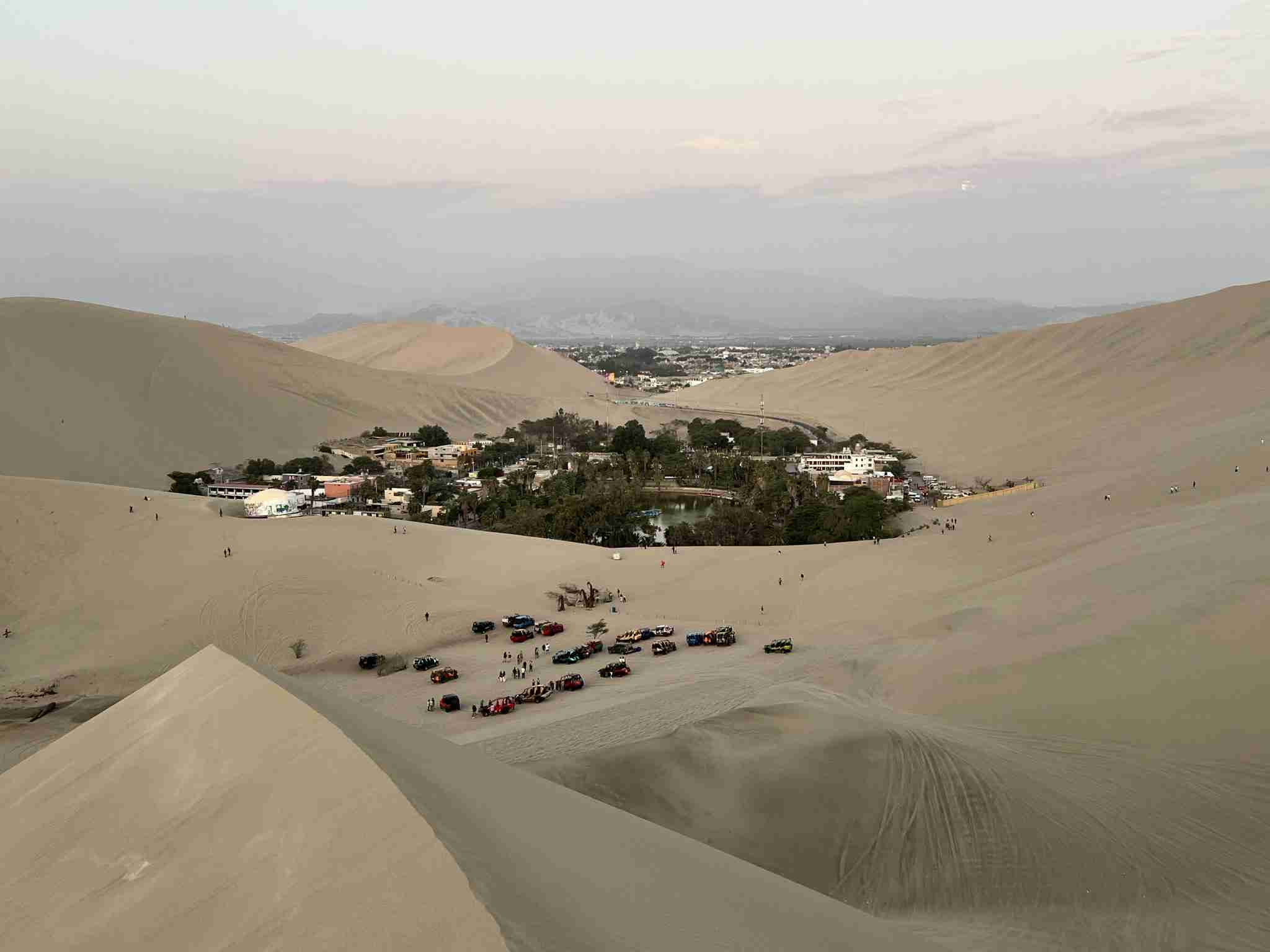
Once you arrive at Huacachina, you have about an hour or so of free time. Walk around the lake at the center of town and soak in the views of this unique desert oasis! Or, grab a snack or a beer at one of the many restaurants overlooking the lake.
Next up is the exciting part – the ATV ride + sandboarding on the huge dunes!
Should I Rent a Sandboard?

The “sandboard” included in the price of the tour is actually a sled. It does look super fun to just sled down the dunes, but if you ski or snowboard back home and want to try it out here on the sand, you’ll need to rent a board or skis in town. This is what we did! There are several places to rent from. It only costs about $12 USD for the 2 hours.
Exploring the Dunes of Huacachina

The ATV/dune buggy ride along the sand dunes is absolutely incredible, and thrilling! It feels like a rollercoaster at times, with your driver going up and down STEEP sand dunes. Note that you aren’t able to drive your own ATV, which I learned is a rule across the whole town there (and after riding in the ATV I can see why!).
You’ll make 4 stops on the ATV sand dune tour. The first stop is a lookout point. The second stop is where everyone can sled, ski, or snowboard down 3 different sand dunes (going from small, medium, to large & steep!). The third stop is for sunset, where you can watch the sun drop down below the dunes (so magical!). And the final stop is to see the iconic viewpoint of the town of Huacachina from above on top of the sand dunes.
The experience is absolutely incredible!

Afterwards, you’ve got about a 4.5 hour ride back to Lima. They make it very comfortable, though! They play a movie, (they played Mrs. Doubtfire on ours), turn the lights off, and pass out popcorn. You’ll be back in Lima before you know it!
Departure Day of Your 7 Day Peru Itinerary
The next day, wake up and head to the Lima airport! Note that Lima is known for having bad traffic. It took us about 45 minutes to an hour to get to the airport from the Barranco district. Give yourself enough time to get through the security and international check points!
Like what you see? Share it! Share this content
- Opens in a new window
You Might Also Like

The Best Things to Do in Salento, Colombia for a 2-Day Trip

Cusco to Machu Picchu in One Day: Everything You Need to Know
This post has 23 comments.
Fantastic. Thank you for this. Will plan our trip based on.
Your 7 day itinerary in Peru sounds like the kind of trip my husband and I like to take. He does likes to drive, but it sounds like it is best to take day tours to the different sights. We like to hike and the 7 Lakes of Ausangate Hike and Rainbow Mountain looked great! We are thinking of doing the One day Inca Trail tour with Machu Picchu in the afternoon. I will be looking into Taxidatum and see if Salkantay Trekking has day trips to some other spots we might want to explore. Thanks for all your information! Phyllis in Pennsylvania
Amazing! I normally am not the kind of traveler that likes to take organized “day trips” and prefer to just rent a car and go places on my own… BUT in Peru I feel like it makes the most sense to do it this way. Especially when you are on narrow, winding, mountain roads to get to the trailhead! You will absolutely love the 7 Lakes of Ausangate hike. It’s so unique, and also very remote and uncrowded. Such a hidden gem of a hike! I hope you have the best time!
Hi Lauren….this is so useful. I literally just booked an entire trip with my wife & kid following your blog! A question….on the supplements that you took for the altitude management….did you have all 3 of them a few days ahead of the travel (or when did you actually start having them)? Is there any other altitude sickness type pill that you took along? Thanks again
that’s so great to hear! Yes, I started taking them about 3 days before I left. I didn’t take any other type of altitude sickness pill (I know some people get a prescription for Diamox, but I wanted to go the natural/supplement route). I just made sure to drink a lot of water. I brought some electrolyte powder with me as well, and drank that in my water every morning. I hope you have an amazing trip!
Hi, I was wondering how much your trip cost you in total? And what was the cheapest this itinerary could be done for (plane tickets excluded)? Thanks!
I just checked my Splitwise, and it looks like the total cost ended up being about $1,800/person (not including flights) for the week-long trip. You can definitely do it cheaper, though. We ate at some nice restaurants and took private transfers, etc. The day visiting Machu Picchu is probably one of the most expensive, having to buy the train ticket + the entrance ticket. But of course, you can’t go to Peru and NOT see that! I bet a budget traveler could do the trip for $900-$1,000.
Hi, as per planning all this, did you pre-book all these activities before your flight online or did you pay in person in peru? how much to have on me per day $$? Did you mostly use cash, can we even use credit or card? also how did you navigate around? did you have a phone plan w data or buy a phone in peru>?
Hi! I booked pretty much everything ahead of time. The 7 Lakes of Ausangate and Rainbow Mountain day trips I booked just a few days before, but Machu Picchu is one that you need to book tickets for further in advance (at least a month or two) since it sells out. You will need cash on hand to tip for any day trips you book, and if you want to buy souvenirs. I was able to use credit card at most restaurants. I have T-Mobile which includes free international data, so I just used my normal phone plan, but prioritized using Wi-Fi when possible. I used Google Maps to get around! You can download the map ahead of time so that you can navigate even without cell service. Hope this helps! Have fun!
Hi! How and where did you book your train ticket from Ollantaytambo to Aguas Calientes? Also, will be using your itinerary for my upcoming trip!
I booked the train through Peru Rail. I meant to write another blog post with more details on the full day trip from Ollantaytambo to Machu Picchu, but then lost track of time and forgot to write it 🙂 I will do so soon! I hope you have an amazing trip, and glad my itinerary was helpful!
Hi Lauren, can you please share the link for your post: How to Plan a Day Trip to Machu Picchu?
Ah, thanks for the reminder. when I wrote this blog post I meant to write the “How to Plan a Day Trip to Machu Picchu” shortly after, but then time escaped me! I will respond here once I write it 🙂
Update: I just finished writing that blog post. Here it is: How to Plan a Day Trip to Machu Picchu
Hello! I loved this layout. Your’s is one of a kind! I am doing a month trip in November doing Mexico and Argentina. We wanted to add another country, and we were deciding between Brazil or Peru. After seeing this itinerary, I have to choose peru!
Our trip is as follows:
One week in Aguascalientes, Mexico One week in Peru (Following this itinerary) Two weeks in Argentina ( 4 cities: Rosario, Leones, Alberdi, and Buenos aires)
Hi! Could I ask what time of the year did you go?
I went in late September! The weather was perfect.
Hi, I’m looking to plan a trip to Peru following your amazing blog! I was wondering, though, if you wished you had taken one more day to acclimatize to the altitude before going to Machu Picchu? With our potential flight plan, we wouldn’t be getting into Ollantaytambo until close to 7 PM and would leave the next AM for Machu Picchu. Just don’t want to get stuck with nasty altitude sickness! Thanks for your words of wisdom!
Love hearing that my blog is helpful in planning your trip! 🙂 Honestly, I think you’ll be fine. Machu Picchu is only 8K elevation. If you were flying in and going straight to Cusco (11K elevation) and doing the high-elevation hikes around there, I would say that you would want an extra day to acclimate. But for Machu Picchu – you should be ok! I do recommend taking the supplements I recommended, starting a few days before you leave, which will help too. And drink lots of water!
Hi ! We are going to Peru next week and I literally want to do all activities you did!!! Looks incredible! My only thing is- we have a 9 year old- do you think it’s too hard for an active 9 year old to do 7 lakes and the rainbow mountain ? Was thinking to do the horse option for the rainbow mountain . Also how cold is it up there , I’m reading bring gloves and hats especially since hikes start early morning… thank you so much!!
hi! love to hear that! It’s hard to say without knowing how capable your 9-year old is. Does he/she have experience hiking? Rainbow Mountain is a shorter/easier hike than 7 lakes, but what makes it hard is the elevation. The option for the horse on that hike is good to have just in case! For 7 Lakes – there are some tours that take horses on the trail instead of hiking, so maybe you could look into that as an option as well! The 7 Lakes hike was SUCH a highlight for me, so I hope that you guys do it! 🙂
I didn’t bring gloves, (I just put my hands in my pockets if I’m cold) but I did bring a beanie and a down jacket. Definitely helps for the early morning hiking when it’s chilly!
This itinerary is excellent! Wow so helpful….exactly how I will be planning my trip.
So glad to hear that! I hope you have an amazing trip! 🙂
Leave a Reply Cancel reply
Save my name, email, and website in this browser for the next time I comment.

1-Month Peru Travel Itinerary: Where to Go & What to See in Peru
Peru is one of those countries that I keep coming back to again and again. Part of the reason is that I have family there, but the other reason is that there is so much too see and experience. No matter how much time I spend in Peru – I’ve been there 3 times in the last 2 years alone! – I still keep finding new places to add to my bucket list .
Some travellers quickly skip through Peru only making time to visit Cuzco and Machu Picchu, but there is so much more to this country than Inca ruins. Today I’m going to share my 1-month Peru travel itinerary , which to be honest, I feel barely skims the surface and only touches on some of the country’s main highlights, but you have to start somewhere! Consider this travel itinerary an introduction to Peru and if you enjoy the country as much I do, then you can always plan a return and head into the more remote and harder to access regions. Now here’s a look at how to spend 1 month in Peru.
Peru Travel Itinerary

Let’s start in the capital, Lima, since that is where you’ll likely be flying into. Lima is the second most populous city in all of South America and it can be a bit overwhelming if you don’t know where to go. People will often tell you to skip it entirely and just continue on to Cuzco, but I like Lima and I think it has quite a bit to offer, so I’m going to try to convince you otherwise.
There are 3 neighbourhoods, which I think are great for first-time visitors: Miraflores, Barranco and Centro. Miraflores is located along the water and it is an affluent neighbourhood with seafront properties, beautiful parks and lots of great restaurants. Here you’ll want to visit El Parque del Amor , shop at the Hippie Fair in Parque Kennedy , and if you’re feeling brave you can even try paragliding .
Barranco has more of an artsy bohemian flair and it’s also known for its nightlife. In Barran, o you’ll want to enjoy all the street art , walk across the Bridge of Sighs , and pop into the various museums and art galleries .
Lastly, in Centro you can visit Plaza de Armas , tour the catacombs inside the San Fracisco Monastery , and watch the changing of the guard at the Presidential Palace . And that is just a quick introduction; you can read this other article for more ideas of things to do in Lima and this other one will give you ideas of easy weekend trips .
Now let’s move on to the food. Since Lima is on the coast, you’ll have to sample ceviche , a raw fish dish that has been cured in lime, and is served with corn, sweet potato, and red onions. It is delicious and a must try ! If you’re more adventurous, then go for anticuchos , which are grilled meat skewers (typically cow heart!) served with a side of corn. I know it sounds a bit strange, but it tastes just like steak.
Where I stayed:
I usually stay with family when I visit Lima, but regardless, I would recommend staying in the neighbourhood of Miraflores . Located right by the seaside, this is one of the nicest areas in the city, plus you also have easy access to Barranco and plenty of tours into the historic centre. There are plenty of hotels, hostels and guesthouses in this neighbourhood, plus AirBnB has a great range of properties, and if it’s your first time using it, you can get a $40 discount code here .

I would suggest spending at least 3-4 days in Cuzco since the first two days will likely be a write off depending on how well you handle altitude sickness . When you fly into Cuzco, it’s recommended that you spend your first day resting and that you follow that up with some light sightseeing on the second day. Some people aren’t affected by the altitude and can hit the ground running, but I’ve seen other people be standing one minute and then hit the ground like a sack of potatoes the next, so it’s better to take precautions.
Once you’ve been able to acclimate, it’s time to start exploring and luckily there’s plenty to see and do in Cuzco. Some of the main sights in Cuzco include: Qorikancha , the most important temple in the Inca Empire which was dedicated to the Sun God; Plaza de Armas , the main square where you’ll find Cuzco Cathedral; the Pre-Columbian Art Museum , which houses an art collection in a mansion-turned-convent; and the Inka Museum , which showcases gold-work, pottery, textiles, and even mummies.
For those with a bit of a sweet tooth, you may be interested in the ChocoMuseo , which covers the history of chocolate, and the Pisco Museum , which is a bar that offers pisco tastings.
Foodwise, the cuisine in Cuzco is quite different from what you’ll have experienced in Lima . We found the meals to be a lot heartier. Some traditional dishes you may want to sample include: chairo , a thick soup made with lamb and vegetables; alpaca skewers , very tender cuts of alpaca meat cooked over the grill; and guinea pig , which is usually served roasted (be prepared to get the whole animal on your plate!) Dishes feature a lot of potatoes, corn, and various root vegetables, and coca tea is a staple at every meal.
While in Cuzco I stayed at Tika Wasi , which is a boutique hotel that sits on the neighbourhood of San Blas overlooking the city. It was a peaceful setting with a cool courtyard and plenty of lounging space, and I also liked that each of the rooms had its own unique design. It was a 7-minute downhill walk into the town, and I feel like this helped us train for the Inca Trail!
Sacred Valley
Keep in mind that you can also take various day trips from Cuzco. Some of your options include: Maras Salinas , the famed terraced salt flats; Pisac , a small town known for its huge Sunday market; Ollantaytambo , the place where the Incas retreated after the Spanish seized Cuzco; and Moray , an agricultural laboratory known for its round terraces where the Incas were able to cultivate resistant varieties of plants high in the Andes. Alternatively, you could book yourself on a full-day tour of the Sacred Valley which hits some of these as well as other sites along the way. Whichever way you do it, the Sacred Valley is a place that you should definitely tack on to your Peru travel itinerary .

Inca Trail + Machu Picchu + Aguas Calientes
We did the 2-day Inca Trail to Machu Picchu and it was hands down one of the coolest adventures of our visit to Peru. Our first day involved a full day of hiking, and then the second day we had a guided half-day tour of Machu Picchu where our guide brought the city to life with his storytelling. We then had free time that afternoon, so Sam and I spent that time filming and taking pictures.
If you’re walking the Inca Trail or spending more than one day visiting Machu Picchu, then you’ll end up spending at least one night in the town of Aguas Calientes. If you’re feeling sore from all the hiking, you can enjoy a soak in the hot springs that give the town its name , or you could treat yourself to a massage. Alternatively, there are a few easy hikes from Aguas Calients, or you can shop for crafts and souvenir at Mercado Artesanal. Lastly, if you really want to treat yourself to a good meal, head straight to El Indio Feliz , which is run by a French cook who knows how to combine French and Peruvian cuisine to create a culinary masterpiece.
Where I stayed:
In Aguas Calientes, we stayed at Terrazas del Inca which sits right by the river. All I remember is that the hotel had really hot showers and a super comfortable mattress, which was greatly appreciated after all that hiking. They also had a really hearty breakfast, which we gladly gobbled at 4:30 in the morning before heading over to Machu Picchu.
I have to admit, Puno was not one of my favourite stops in Peru, however, if you want to do one of the overnight Lake Titicaca tours there’s really no other way around it. We ended up spending one night in the town before our tour and another night after. During that time we managed to visit the main square, shop along the pedestrian street, and eat at a few different restaurants. Here’s a look at what to pack for Lake Titicaca if you’re doing an overnight stay.
Where I stayed: After one awful night at Duque Inn, we checked ourselves into Hotel Hacienda Plaza de Armas which is located right on the main square and it was worth the small splurge. The rooms were very comfortable, the staff was incredibly helpful, and the location was much more central as opposed to the former property which was located up a very steep hill.

Lake Titicaca
When it comes to visiting Lake Titicaca , you can choose between a day tour or an overnight tour that includes a local homestay . The day tour only takes you as far as the reed islands which are settled by the Aymara, whereas the overnight tour takes you a bit further to some of the island communities settled by the Quechua.
We opted for the 2-day overnight tour (you can do longer ones) which took us to a total of 3 islands: Uros , Amantaní , and Taquile .
In Uros, we visited a reed island called Corazon del Lago , where we met the families who live there and learned about their daily life on a floating island. We had an interpreter with us the whole time, which allowed us to ask the types of questions that cross every visitor’s mind: Where are the bathrooms? How do you have electricity? Isn’t it dangerous for young children to live so close to the water? The answers: They now have outhouses. Solar panels have been installed. And children learn to swim at a very young age.
The second island we visited, Amantaní , was my favourite since we got to stay with a host family and this gave us a unique glimpse at their culture and way of life. Our host mom cooked us a delicious lunch, then we did some hiking in the afternoon, we later had a delicious dinner which was also prepared by our host mom, and after that, we were taken to the local community hall for some music and dancing.
On our final day, we hiked around Taquile , which is an island with UNESCO status for its “Masterpieces of the Oral and Intangible Heritage of Humanity”, namely handwoven textiles and knitting. It was also fascinating to watch our guide interpret the local dress for us; the way men wear their hats can indicate whether they are happy, sad, having an average day, single, married, or an authority figure in the community. That’s a lot of meaning based on the way you wear a hat!
During our tour, we stayed with a local family on the island of Amantaní. We booked our tour through All Ways Travel and once we met our guide, she gave us the option of doing a rustic homestay (no electricity and outhouses) or a more modern homestay (electricity and toilets with running water).

Paracas + Islas Ballestas
If you’re doing a big trip around South America but you don’t have time for the Galapagos Islands, Peru’s Islas Ballestas are often said to be the next best thing; and while they may lack the size and diversity of the Galapagos, the Peruvian islands are an important sanctuary for wildlife plus they do give you a chance to see animals in their natural habitat.
The boat trip from Paracas to Islas Ballestas is just 24 kilometres and it is 30 minutes each way with one hour of sightseeing in between. We got to see a lot of really cool animals including Humboldt penguins, sea lions, sunfish, pelicans, cormorants, terns and more.
If you suffer from motion sickness this may not be the best excursion for you since the waters can be a bit choppy, but otherwise, it’s a nice way to break up the journey down to Huacachina.

So I only visited Huacachina as a day trip , but once I got there I was wishing I had booked something longer since it’s such a cool destination. Huacachina is a tiny oasis in the middle of the desert; you have a green lagoon surrounded by palm trees, and around that you have a small village that only stretches a few streets back. The place has a very laid-back hippie vibe , and if you’re tired from your travels, this is a great place to just relax.
There are two main activities in Huacachina: sandboarding and dune buggy riding . We tried both. The steep dunes make this the perfect playground and it really felt like we were on a rollercoaster. We booked our tour through a hostel once we arrived in town, and we were out on the dunes within 10 minutes. Our driver also had boards in the buggy, so after tossing us up, down and around, he finally parked atop one of the steepest hills and let us try our hand at sand boarding. Apparently, sandboarding can be a little tricky if you don’t have any previous snowboarding experience, so I ended up sliding down headfirst on the board. Yes, it was terrifying, but it was also a blast!
If you’re looking for something a bit tamer, you can rent paddle boats to take out on the small lagoon, or you can hike up the dunes to watch a killer sunset.

If you’re already going to Huacachina, you may also want to consider adding a couple of days in Ica to your Peru travel itinerary . While Ica itself is far from being a beautiful city, the area is home to many vineyards and wineries , and once you’re in the outskirts of Ica it’s a whole different world. If you’re looking for a bit of a luxury weekend where you can unwind and relax , this may well be the place for you.
Sam and I booked ourselves in at Viñas Queirolo and we basically stayed on the premises all weekend. We went on a vineyard tour, attended wine tastings , and ate at the in-house restaurant which had some of the most beautiful plates of ceviche I have ever seen in my life.
We stayed at Viñas Queirolo , which is in the outskirts of Ica. It’s a beautiful property and well worth the splurge for a night or two.

Iquitos marked the start of our trip into the Peruvian Amazon, and again, while many people tend to skip over this city, I enjoyed having a few days to experience it. Here you can visit the stilt village of Belen , stroll along the promenade at sunset , enjoy the colonial architecture, or cool down with a drink at one of the many riverfront cafes on Malecon Maldonado . You can read the following article for some ideas of things to do in Iquitos .
Since Iquitos is in the heart of the jungle, the food is quite different from what you’ll have experienced along the coast or in the sierras. The majority of the dishes here feature fish, rice and tropical fruits. If you’re a foodie , you may want to sample: tacacho y cecina , roasted plantain balls served with a side of dry pork meat ; juane , a steamed dish made of rice and chicken cooked inside a giant leaf; and patarashca de paiche , a large freshwater fish which is steamed in a leaf.
While in Iquitos I stayed at the Epoca Hotel , which is a beautiful heritage property right on the shores of the Amazon. The hotel has a colonial hacienda feel with tall ceilings, iron balconies, and a beautiful tiled exterior. Also, the staff was incredibly friendly and helpful, so I can happily recommend them.

Our visit to the Amazon started out with a treehouse stay in the middle of the jungle . We booked 2 nights at the Treehouse Lodge, and it was one of the coolest experiences ever. When we weren’t hanging out in our cool treehouse, we were going on wildlife excursions , fishing for piranhas , or visiting local villages . If you’re adventurous and want to live up in the trees a la Jane and Tarzan, this is a cool experience to consider.
After our treehouse stay, we did a 4-day cruise on the Amazon River which saw us travelling up and down the mighty river. Once again, there were plenty of excursions to keep us busy. We went kayaking along the tributaries , did a canopy walk across a series of hanging bridges , and saw all sorts of wildlife . This was one of those lifelong bucket list experiences and a must add to your Peru travel itinerary!
I spent the first two nights at the Treehouse Lodge and from there I spent the next 3 nights aboard the Delfin I . If you’re thinking of doing both, I would suggest doing the treehouse stay first since it’s a more rustic experience, and then finishing things off with a the cruise since that offered a bit more pampering. Also, here’s a look at what to pack for your trip to the Amazon .
One month in Peru
So that brings us to a grand total of 28 days of travel around Peru . Tack on a few transportation days, including flying and out of the country, and you’ve got yourself a whole month dedicated to exploring some of the gems Peru has to offer. Like I mentioned earlier, I feel this itinerary barely scratches the surface and it only focuses on some of the better known destinations in the country, however, it does cover a mix of cities and rural areas , as well as destinations along the coast, sierras, and jungle. I hope this one month Peru travel itinerary will help whet your appetite and hopefully you’ll be back for more!
PIN ME FOR LATER!
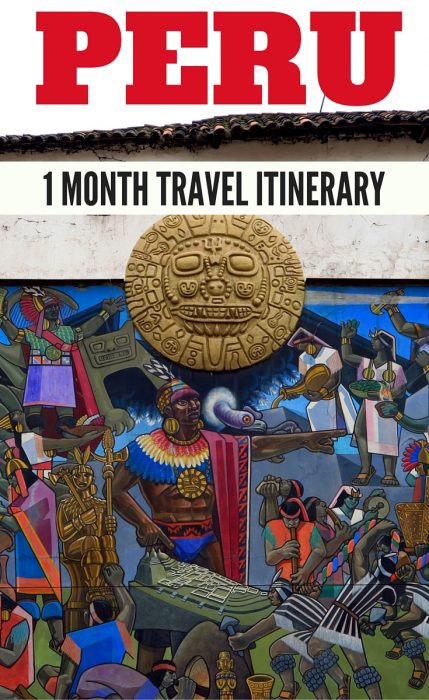
What are your favourite places in Peru? Any other destinations you’d add to this Peru travel itinerary?
14 Comments
Ica looks so beautiful!
I loved the winery in Ica! It’s such an easy weekend getaway and it’s quite the change from the city.
Seems like you saw a whole lot of Peru in just a month. You really had some incredible experiences; it’s no wonder a lot of travellers always want to get back to Peru again. I hope I’ll get to visit Peru too!
Wow! This is a packed itinerary… Peru is definitely on my list. 🙂
Looks like you had good weather for Machu Picchu — that would be my biggest concern!
I’ve always wanted to go to Peru. Do you think there’s enough there to keep children happy?
how much would u say 2 people will spend in peru if they wanna go for a month. it looks amazing, i would love to go to lima, cuzco, the amazon and see the north of peru i have heard the beaches are beautiful. do u have any idea?
How much money did you spend?
What was the estimated cost for this 1 month trip?
Hi Callie, It’s hard to give you an exact figure because this will all depend on your personal travel style. Will you be doing hotels or hostels, dining in restaurants or cooking for yourself, taking guided tours or exploring places on foot, etc. I would start off by looking at accommodations in your price range, and then you can decide what tours you’re most interested in and research the costs. Best, Audrey
We are hoping to travel Peru for a month next year for our honeymoon as this has been massively useful to us, thank you. I’ve done a bit of travelling myself and i always think its best to get opinions and recommendations from others.
Such a great article Audrey, I literally feel how much you love this place and amazing, that you’ve been there 3 times already! Must be special 🙂 Thanks for sharing all those tips with us, appreciate that!
Thanks for the great info about the different places, helped me a lot to plan my trip. I really loved the alternative tour to the rainbow mountains in Cusco, that I did on my last day in the city of the Incas haha. It was a lot better than the normal tour that almost everyone does because we left Cusco later (at 5:00am) so I could sleep a little longer, we only hiked for 45 minutes (instead of 3 hours) and we saw various rainbow mountains (not just 1)…and we also hiked through the red valley!! Just amazing 🙂 Did the tour with exploorperu, a local Peruvian travel company and they were great. I found out they have a article about the rainbow mountains, I’ll just leave it here for anyone interested (and hope you guys can visit it the next time you’re in Cusco) https://exploorperu.com/blogs/exploor-peru-travel-blog/discover-the-best-route-to-the-famous-rainbow-mountains-of-peru
How did you guys travel around? Did you rent a car or take the bus? I’ll be going for 3 weeks solo and am curious whether its cheaper to rent a car.
Hi Kiah, we did a combination of flights and overnight buses since the distances between these destinations are quite far. You could technically drive from Lima to Ica and Huacachina, but it’s so much easier to take the bus, especially considering what traffic in and around Lima is like.
Your email address will not be published. Required fields are marked *

Travel Blog | Travel Inspiration
2 Weeks In Peru: Experience The Best Of Peru, Including The Inca Trail

Peru is a mysterious, exciting country, full of wonders. If you have two weeks in Peru, it will be packed with beautiful places, fascinating culture and delicious food. Check out my itinerary for spending two glorious weeks in Peru, including the iconic Inca Trail hike, Cusco, Rainbow Mountain, Lake Titicaca, the Nazca Lines and the vibrant capital city, Lima.
Disclosure: This article contains affiliate links. These are links to products or experiences I recommend and if you were to buy something after clicking on them, I might earn a small commission at no extra cost to you. Any earnings go towards the upkeep of this blog, which I appreciate.
Table of Contents
Why Visit Peru?
Peru is a very well-known country and has been a popular destination for travellers for decades. Even though it is firmly on the beaten path, it is still a wonderful place to visit, with lots to discover.
Consider travelling to Peru if you like:
- Ancient civilisations – the Inca and the Nazca are probably the best-known civilisations from Peru, but there are actually many different pre-Columbian civilisations known to have lived in this fascinating land
- Preserved local traditions – throughout Peru you will get the chance to observe a traditional way of life for many of those who live in Peru
- Dramatic landscapes , including deserts, mountains, lakes and forests
- Hiking – Peru has many hiking opportunities, including the iconic Inca Trail
- Food – Peru has a varied and lively cuisine, including piquant ceviche, a bewildering variety of corn and potatoes and tasty meats like alpaca and cuy. Around Lake Titicaca, you can eat delicious freshly caught trout.
This itinerary for 2 weeks in Peru is designed to give you a bit of everything on this list.

Are 2 Weeks In Peru Enough Time?
It’s such a hard question… Peru is a big country with a lot of attractions, so you could certainly spend much more than two weeks in Peru and not feel like you’re dragging it out.
And in two weeks, you will have to be selective about where you go and what you do – you cannot visit everywhere of interest in Peru in two weeks.
However, if you only have two weeks (as many travellers do, because of work or other commitments), I don’t think this should hold you back from visiting Peru. Whilst you can’t experience everything Peru has to offer in two weeks, you can experience some of the best things. And I am confident you will really enjoy the time you have there!
I’ve based this itinerary on the two weeks I spent in Peru, but I’ve tweaked it, based on what worked and didn’t work on my own trip.

How To Get To Peru
There are several international airports in Peru, but most travellers fly into Lima, the capital city. For that reason, Lima is where this itinerary starts and finishes.
Check Skyscanner for flight deals from where you are.
2 Weeks In Peru: Itinerary At A Glance
- Day 1: Arrive in Lima, the capital of Peru (stay 2 nights)
Day 2: Exploring Lima
- Day 3: Fly to Cusco (stay 4 nights)
- Days 4-6: Cusco & surrounding area, including Rainbow Mountain and the Sacred Valley
- Days 7-10: Inca Trail & Machu Picchu (camping 3 nights, return to Cusco for 4th night)
- Day 11: Bus to Puno (stay 2 nights)
- Day 12: Explore the islands of Lake Titicaca
- Day 13: Return to Lima (stay 2 nights)
Day 14: Nazca Lines
- Day 15: Return home
2 Weeks In Peru: Itinerary In Detail
Day 1: arrive in lima, the capital of peru (stay 2 nights).
Fly into Lima, and then get settled into your hotel. For many, it’s a long flight to Lima and you might be jet-lagged, so don’t plan to do too much other than have a pisco sour at the hotel and sleep.
Where To Stay In Lima
I stayed in two different hotels in Lima, both of which were very comfortable. The San Agustin Exclusive and Casa Andina Select are both located in the affluent coastal area of Miraflores.
Where To Eat In Lima
There are some amazing restaurants in Lima, including La Mar for top-notch ceviche. I also liked the old fashioned vibes at El Cordano in the historic centre of Lima.

Lima is a big, sprawling city, with a lot to see and experience. Check out my guide for details on the things to do in Lima , which includes:
- The colonial centre, including the grand Plaza de Armas , ornate 16th-century church Iglesia de La Merced and the canary yellow Convento de San Francisco de Lima
- Attractive coastal neighbourhoods of Miraflores and Barranco
You could explore independently as I did, but there are guided city tours of Lima if you prefer that kind of thing.
Day 3: Fly To Cusco (Stay 4 Nights)
Cusco is a worthy destination in and of itself but is also the jumping-off point for those doing the Inca trail and those visiting Machu Picchu the easy way, by train. It is possible to get there by road, but it’s a long, slow option, so I suggest flying, which will take approximately an hour and 25 minutes (and you will enjoy the mountain scenery on the way!).
Cusco is located in a valley within the Andes – at 3400m above sea level. The air is thin up there and if you’re like me, you will notice this high altitude not long after you get off the plane: I felt lightheaded picking up my bags.

Where To Stay In Cusco
I stayed at the San Agustin El Dorado which was really conveniently located not far from the centre of Cusco. It was also very comfortable.
Where To Eat In Cusco
For places to eat in Cusco, check out my guide to the best restaurants in Cusco .
Days 4-6: Cusco & Surrounding Area, Inc. Rainbow Mountain & The Sacred Valley
As you’re doing the Inca Trail, you will need a few days to acclimatise to the high altitude. I was recommended to stay in Cusco for 3-5 days and I allowed only 2.5 days – and I struggled with altitude sickness symptoms the first couple of days on the Inca trail. So, to learn from my mistake, I am suggesting you have at least 3.5 days in Cusco (half-day a day on the day you arrive and then three full days).
Cusco is perfect for acclimatising because it is a similar elevation to the start of the Inca Trail and also because it has plenty to do in the city itself or as day trips in the Cusco region .
If you feel the effects of altitude (eg light-headedness, shortness of breath, headaches), you might only feel up to easy-going, laid-back activities, including:
- Strolling around Plaza de Armas
- People-watching in San Pedro Market
- Learning about pre-Columbian cultures at Museo De Arte Precolumbiano
- Visiting Qorikancha , an important Inca site in Cusco

For more details and ideas, I have a whole post on laid-back things to do in Cusco that will help you fill your days.
If you acclimatise quickly, you could get more active and consider fitting in one or more day trips from Cusco to Rainbow Mountain and/or the Sacred Valley of the Incas, Moray and the salt mines of Maras or the ruins at Pisac .
I didn’t visit Rainbow Mountain on my trip (somehow it just wasn’t on my radar when I planned my trip), but I wish I had!
Days 7-10: Inca Trail & Machu Picchu (Camping 3 Nights, Cusco 4th Night)
On Day 7 you will pack and leave for the Inca Trail , one of the most captivating hikes in the world, leading you tot he legendary Inca citadel, Machu Picchu .

You can leave anything you don’t need on the trail in a bag at the hotel (most Cusco hotels have a secure luggage lock-up as standard, as so many visitors do this)
I’ve suggested you do the classic 4-day Inca Trail to Machu Picchu because it is most common. There’s quite a lot you need to know and to prepare before you do the trail, so check out my ultimate guide to preparing for the Inca trail .
And if you want some inspiration about the spectacular scenery along the hiking route, I also wrote about the stunning Inca ruins you will see along the Inca Trail .

Accommodation On The Inca Trail
For the three nights of the Inca Trail, you will be camping – and my guide to the Inca trail gives you some details about what to expect and how to prepare and pack for that.
On Day 10, you’ll explore Machu Picchu and then return by train to Cusco , when you’ll go back to the same hotel you were at before.
Day 11: Bus To Puno (Stay 2 Nights)
From Cusco, you’ll now head east, over the high altitude altiplano toward Lake Titicaca. There is an airport in Juliaca, near Puno, but a bus is a good option. It is a slow journey, but the scenery will keep you engaged: you’ll pass small towns, traditional farms, snow-capped mountains and vast plains. Puno itself is a small town on the shores of Lake Titicaca.

Where To Stay In Puno
In Puno, I stayed at the Royal Inn Hotel , which was very smart and centrally located.
Where To Eat In Puno
In Puno, I tried Cuy at La Casona . It was tasty (soft, like chicken, but saltier, like bacon) but not my favourite because of the fat and bones. Be warned: they often come served whole, heads and everything! There’s also plenty of fresh trout available around Lake Titicaca, so that can be a good option in Puno, too.
Day 12: Explore The Islands Of Lake Titicaca
The best thing to do in Puno is to take a boat trip out on Lake Titicaca , which is a vast, deep, freshwater lake in the Andes on the border of Bolivia and Peru, often called the “highest navigable lake” in the world.
One of the most fascinating features of Lake Titicaca is its island communities . Amantani is an island where around 4,000 Quechua-speaking people lead a very traditional life. It is possible to stay with them, living as they do (but unfortunately, I don’t think you have time for this in only two weeks).
Therefore, instead, I suggest you do a boat tour which will visit both the Uros floating reed islands and Isla Taquile.
Uros Islands
The Uros reed islands are an amazing example of human ingenuity: the Uros community live on an archipelago of 60 artificial islands: floating structures made from the reeds which grow in the shallows of the lake. So much is made from the reed: the floor is a bed of reeds, up to two metres thick; houses are made from reeds and even boats.

Isla Taquile
Isla Taquile is further out in the lake: a small, car-free island with panoramic views of the lake. Life is very traditional here, too and there are specific customs of dress which you can learn about from your guide. Taquileños speak Quechua and are known for their handicrafts, including knitting and weaving, in which both men and women have traditional roles.
Visiting Isla Taquile was one of the unexpected highlights of my time in Peru: it was so peaceful and so beautiful.

You can read more about these islands in this post I wrote about the islands of Lake Titicaca . And you can take a boat tour from Puno which will include both the Uros islands and Isla Taquile .
Day 13: Return To Lima (Stay 2 Nights)
From Puno, take a short bus to Juliaca, then a flight to Lima . The flight will take around an hour and 35 minutes.
Again, the San Agustin Exclusive and Casa Andina Select are two good mid-range options. If you fancy somewhere more upmarket, if I went back, I’d be tempted to try Miraflores Park , which has a pool and ocean views.
On my trip to Peru, I reserved Central for my final night. Central offers high-end Nouvelle Cuisine including an innovative tasting menu inspired by the elevated terrain of Peru. Central is also number 4 on the list of the World’s Best Restaurants in 2021. It was the perfect (and indulgent) way to end a spectacular trip.

Your final excursion is into the desert south of Lima, which you can do as a day trip from Lima.
On the vast gravel plains of the Nazca desert are mysterious lines and hieroglyphs, known as the Nazca Lines . These date from between 500BC and 500AD and are thought to have been created for astronomical or religious purposes. The best way to see the Nazca lines is from above, so I recommend taking a Nazca lines flight, from Pisco airport.

However, you should know, that it’s not an easy flight and some people get sick. For more detail on seeing the Nazca Lines from the air, check out my guide to taking a Nazca Lines flight .
There are various Nazca Lines flight packages you can book, including one that includes the Nazca Lines, Ballestas Islands & Huacachina Oasis – the only oasis in South America.
Day 15: Return Home
Your Peru adventure is over, so after one final Pisco sour, head back to the airport, richer in memories of this captivating, mysterious land.
If You Have More Than 2 Weeks In Peru
If you can spare more time in Peru than two weeks, that is not a problem – there is plenty to see and do. If you have three weeks in Peru or longer, here’s what you could consider for the extra days:
- Colca Canyon to see condors
- The Peruvian Amazon rainforest in northern Peru
And if you have plenty of extra time, consider spending time in neighbouring Bolivia . When I visited Peru, I spent nearly a week in Bolivia as well – taking the bus from Puno to Copacabana in Bolivia. I visited Isla del Sol, on the Bolivian side of Lake Titicaca and the sprawling capital La Paz. However, the high for me was the spectacular Salar De Uyuni – the largest salt flats in the world .
Map: 2 Weeks In Peru Itinerary
Here’s a route map of this Peru itinerary route, with key attractions marked:
How To Use This Map : Click the tab in the top left-hand corner of the map to view the layers. If you click the icons on the map, you can get more information about each one. If you click the star next to the map’s title, it will be added to your Google Maps account. To view it on your phone or computer, open Google Maps, click the menu, go to ‘Your Places’ or ‘Saved’, then click Maps and you will see this map in your list.
When Is Best To Go To Peru?
If you want to do the Inca Trail , I suggest avoiding December to March, which is the wet season and therefore it can be very rainy (and it is closed in February anyway). The coolest, driest season is June to August, which does make it rather popular.
I did my trip in September, which was mainly dry except for one night of rain on the Inca Trail and some drizzle in Lima. It also wasn’t heaving with people everywhere we went (other than Machu Picchu, which was very crowded).

If You Need Help Planning A Trip To Peru
I put my original itinerary for 2 weeks in Peru together with the help of Sun Gate Tours , a Peruvian tour company based in Cusco. They are locally owned, which I liked, as I prefer my travel money to go to the community as much as possible, They were also amazing – looking after me every step of the way and treating me and my husband like a VIP. I’m not an affiliate of theirs, but I’d love to see them thrive and I have no hesitations recommending them to you.
The Last Word
Hope You Enjoy Your Time In Peru!
Let me know if you have any questions about this itinerary for 2 weeks in Peru (there’s a comment box below). And if you’ve already been, let me know what your favourite experiences were!
If you like this article, I'd be delighted if you shared it!
About The Author
Martha Knight
Related posts.

Iceland In Summer: Why It’s Amazing, What To Expect & Things To Do In 2024

15 Spectacular Things To Do In Ilulissat In Summer

Best Ilulissat Tours: First-Hand Reviews

Iceland Super Jeep Tour Review: Highlands & Landmannalaugar

Norway Itinerary: 7 Days Of BreathTaking Beauty

Tour Lake Titicaca: The Uros Floating Islands, Isla Taquile And Isla Amantaní
Leave a comment cancel reply.
Your email address will not be published. Required fields are marked *
Save my name, email, and website in this browser for the next time I comment.
This site uses Akismet to reduce spam. Learn how your comment data is processed .
Privacy Overview

- July 3, 2018
The Ultimate 7 Day Peru Itinerary
- South America
My first time visiting Peru was during a 9 hour layover in Lima back in January 2018. I really didn’t know what to expect during my trip to Peru, but my short time there turned out to be so magical, I knew I would travel back there sooner rather than later. I spent 9 adventurous and fulfilling days in Peru . I traveled in June and split my journey between Lima, Ollantaytambo, and Cusco , where I got to experience some of Peru’s jaw-dropping landscapes, ranging from a desert oasis to mystical mountain ranges.
Here’s a sample 7 day Peru itinerary, including a Peru budget that I’m sure will leave you with an unforgettable Peru vacation.
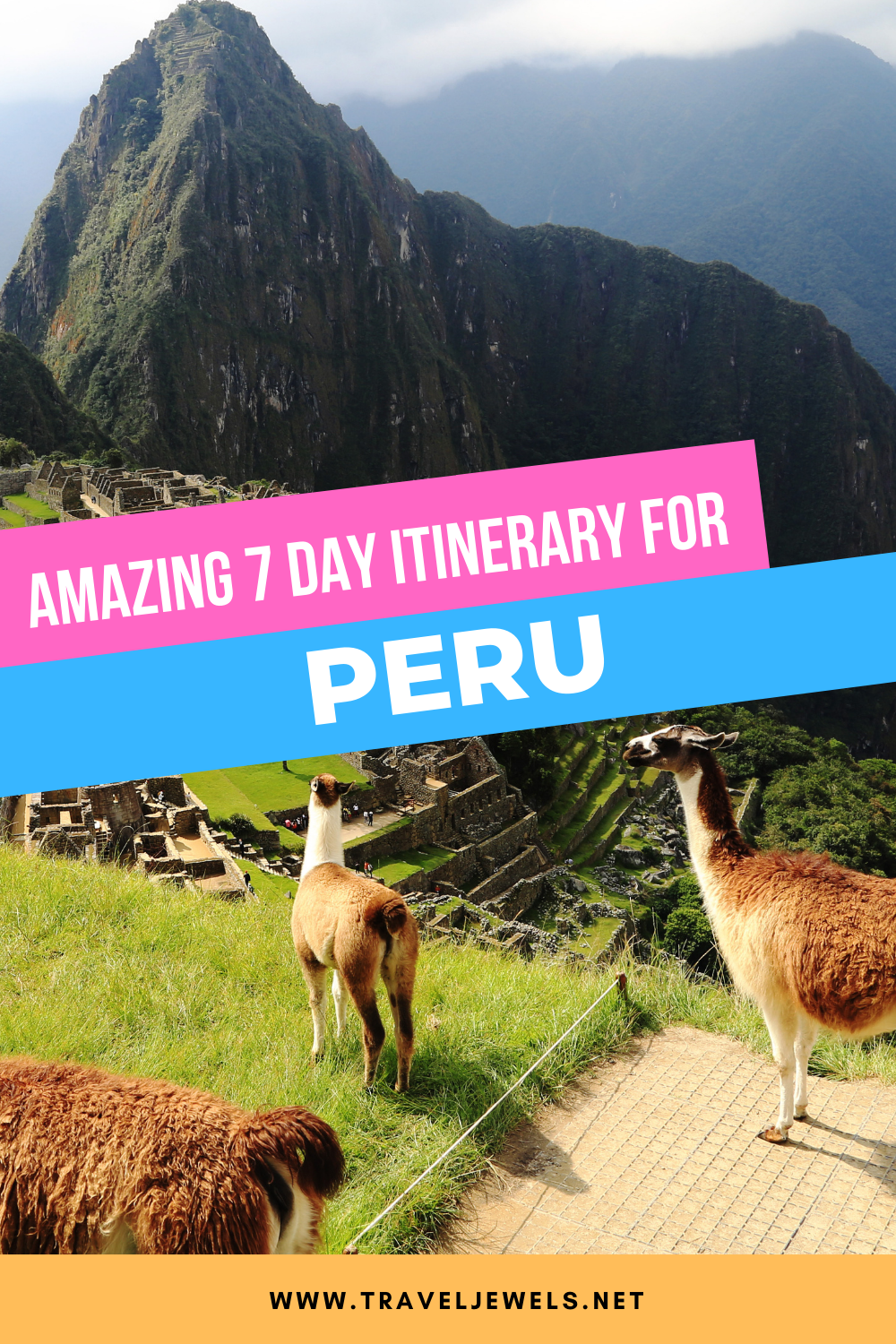
View fullsize

Day 1 (Lima):
Pisco sour & ceviche cooking class with the lima gourmet company.
Cooking Class Cost- $40
One of my favorite ways to learn about a culture is through its food. Of course, I jumped at an opportunity to take a Lima cooking class. After all, it is the world’s leading culinary destination. Pisco sour is Peru’s national drink and ceviche is the national dish. We took a one-hour pisco sour and ceviche cooking class with the Lima Gourmet Company . It was one of the most fun, educational, and delicious things to do in Lima, Peru!
This Lima cooking class was held at a cevicheria at noon. Cevicherias have a rustic and open look modeled after traditional fisherman houses. Before the creation of refrigeration, Peruvians only ate ceviche during the day because fresh fish would go bad before nightfall. Till this day, the tradition remains, as the majority of Peruvians still eat ceviche only during the afternoon, and several of Lima’s traditional cevicherias only operate during lunch hours.
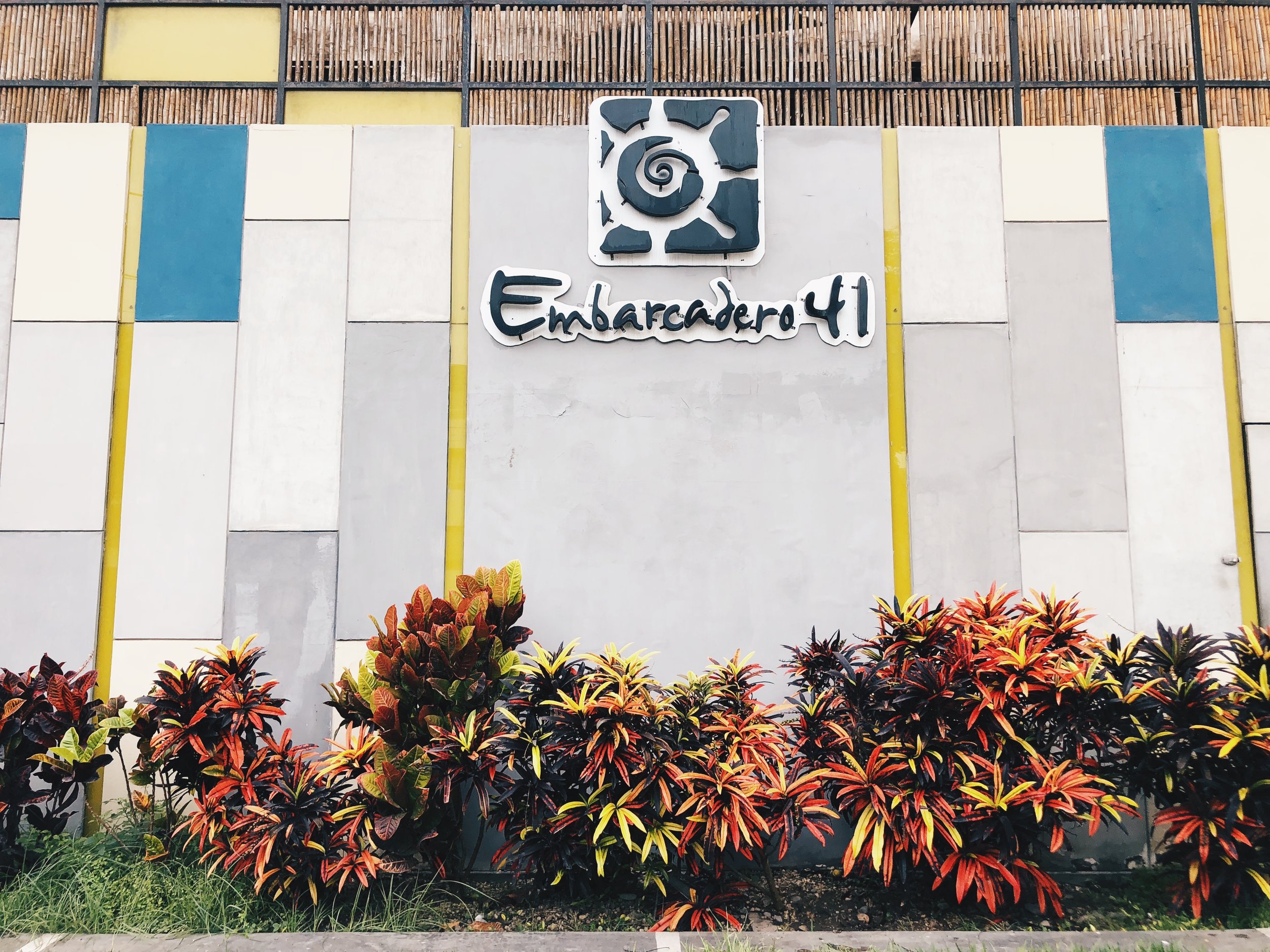
We started our class working in pairs to make pisco sour. If you never had a pisco sour, try one ASAP — it’s basically the equivalent of having happiness in your mouth. The cocktail consists of egg whites, simple syrup, lemon juice, and of course, pisco! Pisco is a brandy. There are eight kinds of grapes that make pisco. The grape varieties are classified in two ways: aromatic piscos, primarily used to clear the palate before a meal and to help with digestion after a meal, and non-aromatic piscos, which are used to make the pisco sour. Beware, one pisco sour has an alcohol volume of 42%! There were also a variety of interesting ingredients available to infuse our cocktails with, but we decided to keep ours classic.
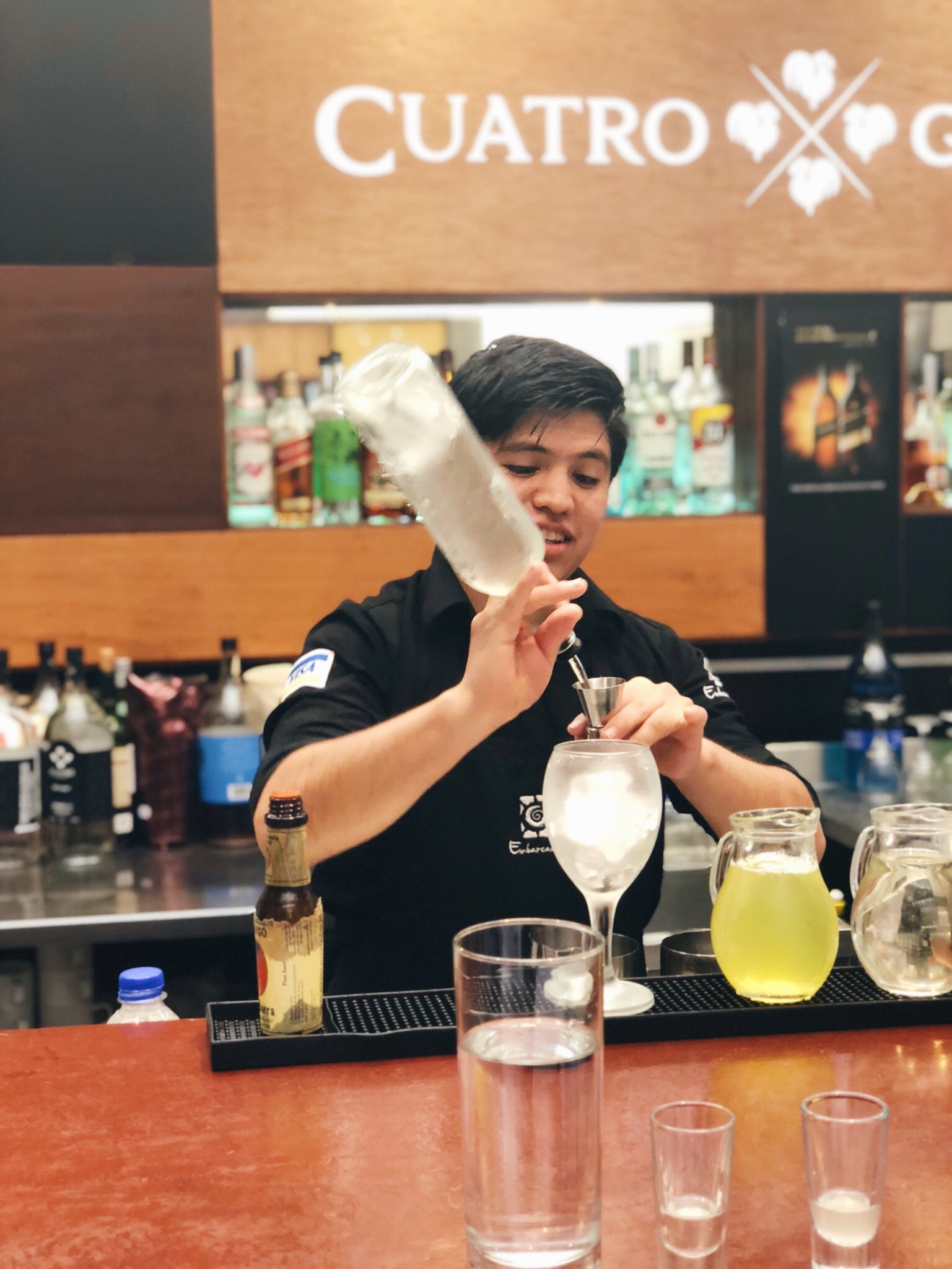
After making our drinks and getting a little toasty, we made ceviche. Prior to this, I’ve never had ceviche, so I didn’t know what to expect. Ceviche is made from fresh raw fish cooked in citrus juices, such as lemon or lime, and spiced with chili peppers. We cooked the ceviche family-style alongside the chef. I was surprisingly proud of the way my ceviche turned out, and it tasted similar to the chef’s!
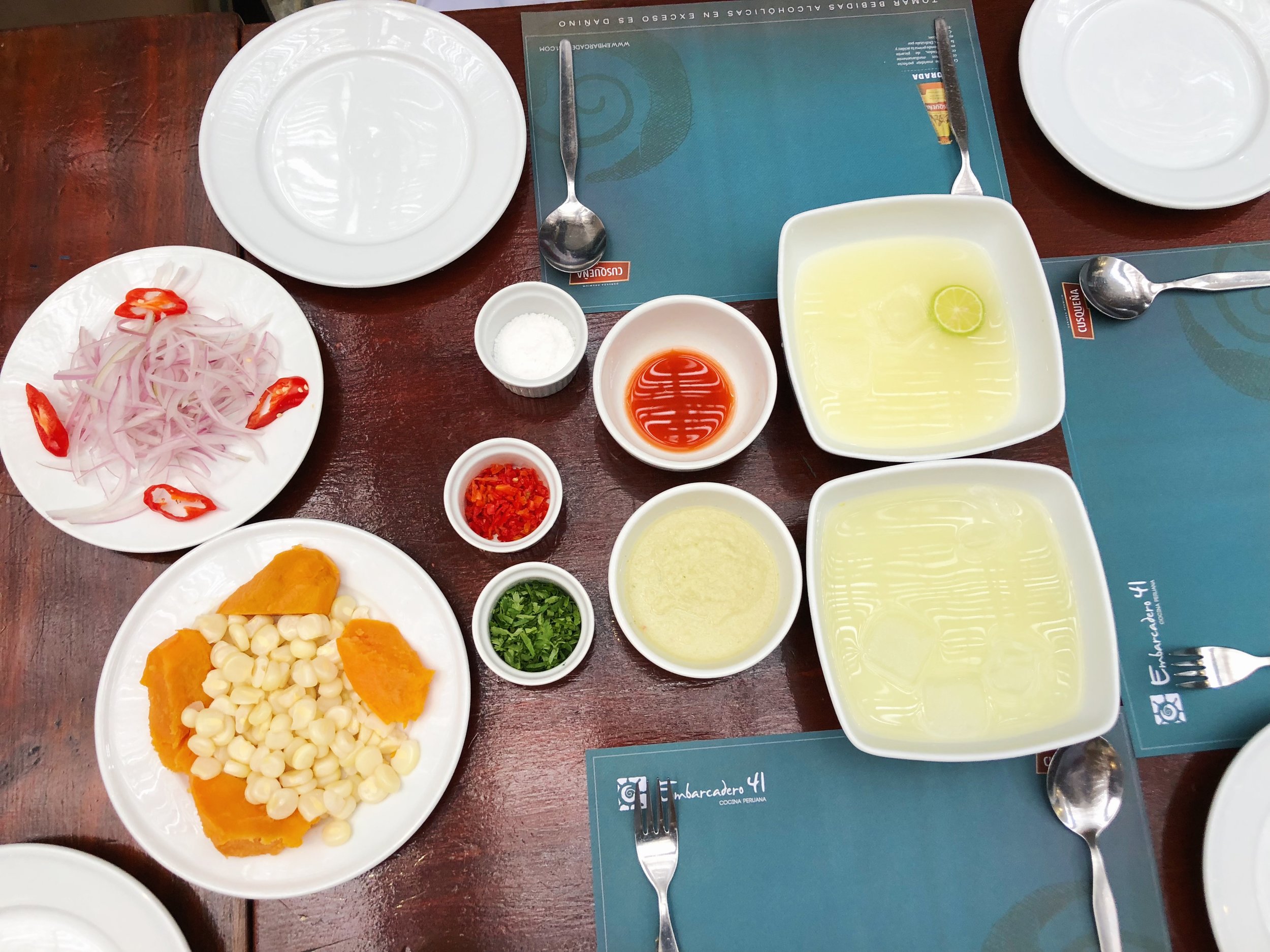
Lima Gourmet’s cooking class was the perfect way to start our Peru itinerary. The staff was really fun and we got to keep our aprons as a souvenir. The next time I do some more Lima, Peru travel, I want to check out their award-winning food tour!

The two lovely co-owners of the Lima Gourmet Company and I.
Day 2 (Paracas & Huachachina):
Day trip from lima to ballestas islands & huachachina with peru hop.
Day Trip Cost- $119
Peru is filled with an abundance of beautiful and diverse landscapes. I was on a mission to maximize our time and see as much as possible during our Peru itinerary. Peru Hop is a safe, flexible, and affordable way to tour Peru. Their buses operate hop-on/hop off style where you can easily reach some of the top destinations in Peru. Peru Hop truly made exploring the Ballestas Islands and Huachachina a fun and painless process!
Ballestas Island
Our day started at 6am with a 4-hour bus ride to the Ballestas Islands, a group of rocky islands that are off the Pacific coast near the town of Paracas. The Ballestas Islands are a top Peru destination and are known for their abundant wildlife. They have over 1,500 species of marine birds and a lot sea lions. We explored the islands for two hours by speedboat. Despite it being a gloomy day, I was enamored by the beautiful caves, arches, and soaring birds.
Pro-tip:
If you get motion sickness (something I’m notorious for), be sure to take a Dramamine . I was fine while the boat was in motion, but when we stopped to animal watch, I got really nauseous and felt like I was going to throw up (thankfully I didn’t). I took one Dramamine pill, but the next time I’m on a speedboat tour, I will take two.
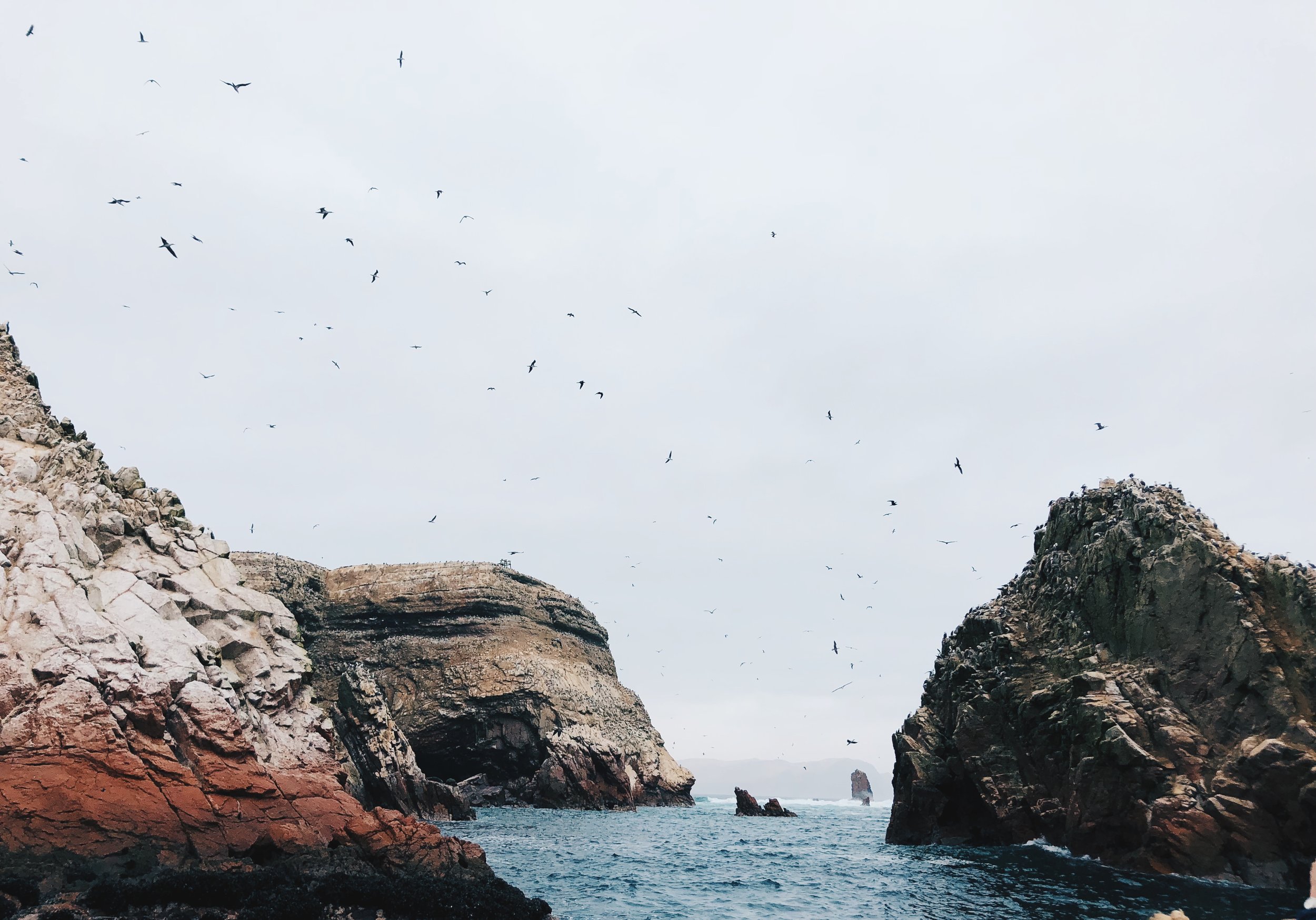
Huachachina
After the Ballestas boat tour, we quickly grabbed a snack and got on the bus for an hour bus ride to Huachachina, the only desert oasis in South America. While there, we went on a Huachachina dune-buggy tour and then sand boarding! We ate a light lunch at a restaurant called Desert Nights, which has the best view of Huachachina from its rooftop. I chose a salad because I didn’t want to be too full before the bumpy dune-buggy ride.
The buggy ride was so exhilarating and fun, but I could have cut the time spent in the buggy in half. The ride was bumpier than I imagined, and I’m pretty sure all my organs shifted during this experience! But, I’m definitely glad I did the dune buggy tour and they did a good job of breaking up the ride with rest stops.
If you have any health conditions that can be worsen with extreme motion, I would avoid doing the buggy ride. You will be shaken to your core!
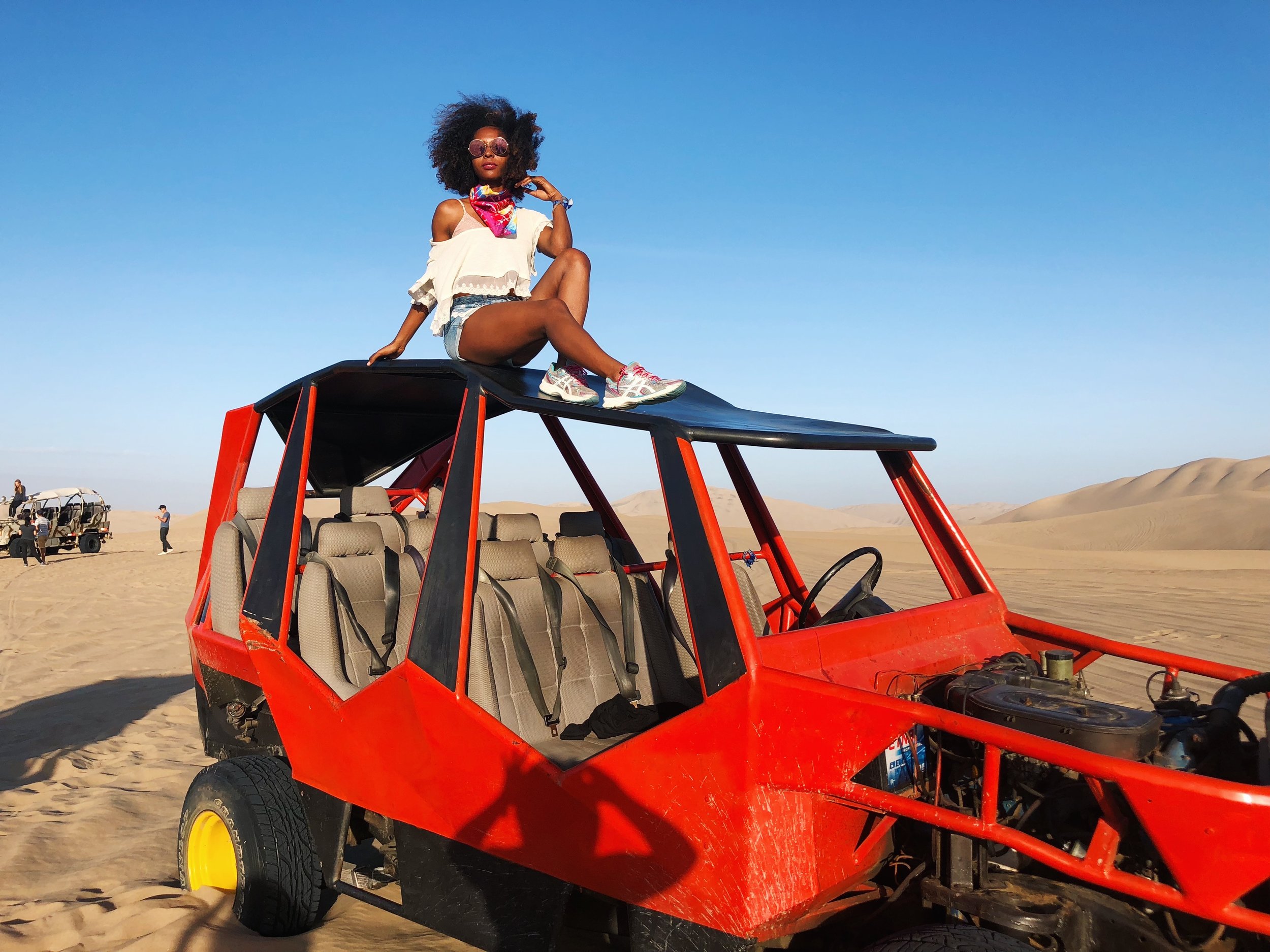
Sandboarding was also a lot of fun. It was my first time trying and I was quite nervous after seeing how steep the first slope was. Our driver, David, gave us chalk to apply to our boards and gave us detailed instructions on how to properly ride the board. As first time sandboarders, we were advised to start on our tummies. We went down three slopes; after going down the steep one first, the other two were a piece of cake. The experience ended with us watching a lovely sunset.

Day 3 (Ollantaytambo):
Travel day: cusco to ollantaytambo via chinchero.
Private Driver Cost- $33.58
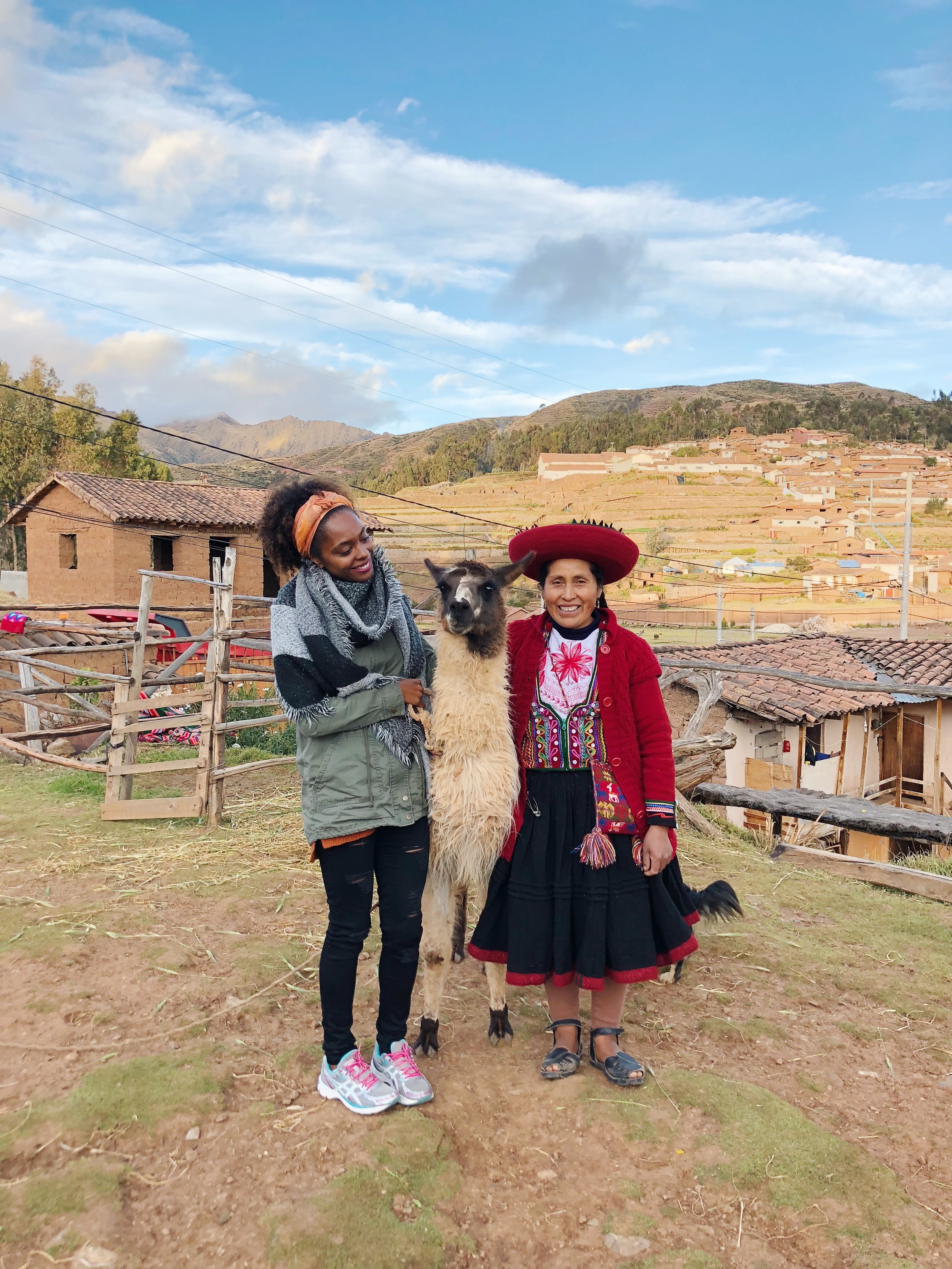
Day 3 of our Peru itinerary was a travel day where we flew from Lima to Cusco and then took a taxi from Cusco to Ollantaytambo. Our two hour drive was broken up with a stop in Chinchero. Chinchero is a quaint town where its residents are very much routed in traditional Incan culture. We stopped by the Chinchero Weaving Factory and Demonstration Center to learn about how locals extract, clean, and dye alpaca fur and about the traditional weaving process. Once you’re in Peru, you will immediately notice the beautiful colorful textiles and alpaca clothing everywhere! It was nice to gain insight into how these masterpieces are produced and to support the women by purchasing some items.
Day 4 (Aguas Caliente):
Day trip from ollantaytambo to machu picchu.
Total Cost- $232.52
Machu Picchu Ticket- $48.52
Peru Rail Train Tickets (roundtrip)- $150
Bus from Agua Calientes to Machu Picchu (round trip)- $24
Tour Guide- $10
Day 4 was a dream come true! We went to visit the iconic Incan city, Machu Picchu. It is known as the Lost City of the Incas because it was never discovered by the Spainards. Machu Picchu is one of the new Seven Wonders of the World, so visiting Machu Picchu should be at the top of everyone’s Peru itinerary. There is a lot that goes into visiting Machu Picchu. Read my Machu Picchu travel guide to learn more.

Day 5 ( Cusco ):
Travel day: ollantaytambo to cusco via sacred valley of the incas.
Total Cost- $110.56
Sacred Valley Admission- $21
Animal Sanctuary Admission- $4.56
Private Driver- $85
On Day 5, we hired a driver/tour guide and traveled from Ollantaytambo to Cusco and did a Cusco tour via the Sacred Valley of the Incas. The Sacred Valley is one of the top things to do in Cusco and was once the epicenter of the Inca Empire. This area includes the Andean mountains and the valley around the Urubamaba River. On our way back to Cusco, we stopped by the Ollantaytambo and Pisac Ruins. At the Ollantaytambo ruins, we purchased the 2-day tourist ticket that allows you to explore Ollantaytambo, Pisac, Chinchero, & Moray. I would have loved to visit all four of the sites included in our ticket, but we prioritized listening to our bodies and sleeping in a little later. There is also a 10-day tourist pass that allows you to explore Pisac, Chinchero, Moray, Saqsayhuaman, Tambomachay, Q’engo and Ollantaytambo and other museums and historical sites. These passes can be purchased with cash only at the entrances of any of these attractions.
The Ollantaytambo ruins is another top Cusco attraction. Its large stone terraces are remarkable and the site is well-preserved. At the top of the ruins, we saw the most incredible view of the town.

Pisac has stunning large agricultural terraces surrounded by steep mountain drops. Within the stone crevices of the mountains, there is an ancient cemetery where about 3,000 Inca are believed to be buried. The best part about our Pisac day trip was the lack of tourists there! I was shocked but happy to have to experience without the typical huge peak season crowds. Also, I loved learning about how the Incas were able to create sustainable agricultural systems by working with nature and not against it.

The Cusco ruins are best explored with a local guide who can provide history and context. If you are pressed on time, you could potentially see Ollantaytambo, Pisac, Chinchero, & Moray if you start at 7am when the sites open. You can easily spend at least 2-3 hours in each place. If you have more flexibility in your Cusco travel schedule, I recommend focusing on 2 ruins per day and spending more time at each while you tour Cusco.
After Pisac, we went to visit the Santuario Animal de Ccochahuasi. It is a family-owned and operated animal sanctuary that rescues animals that have been abused or brought into the black market. They also protect endangered species.
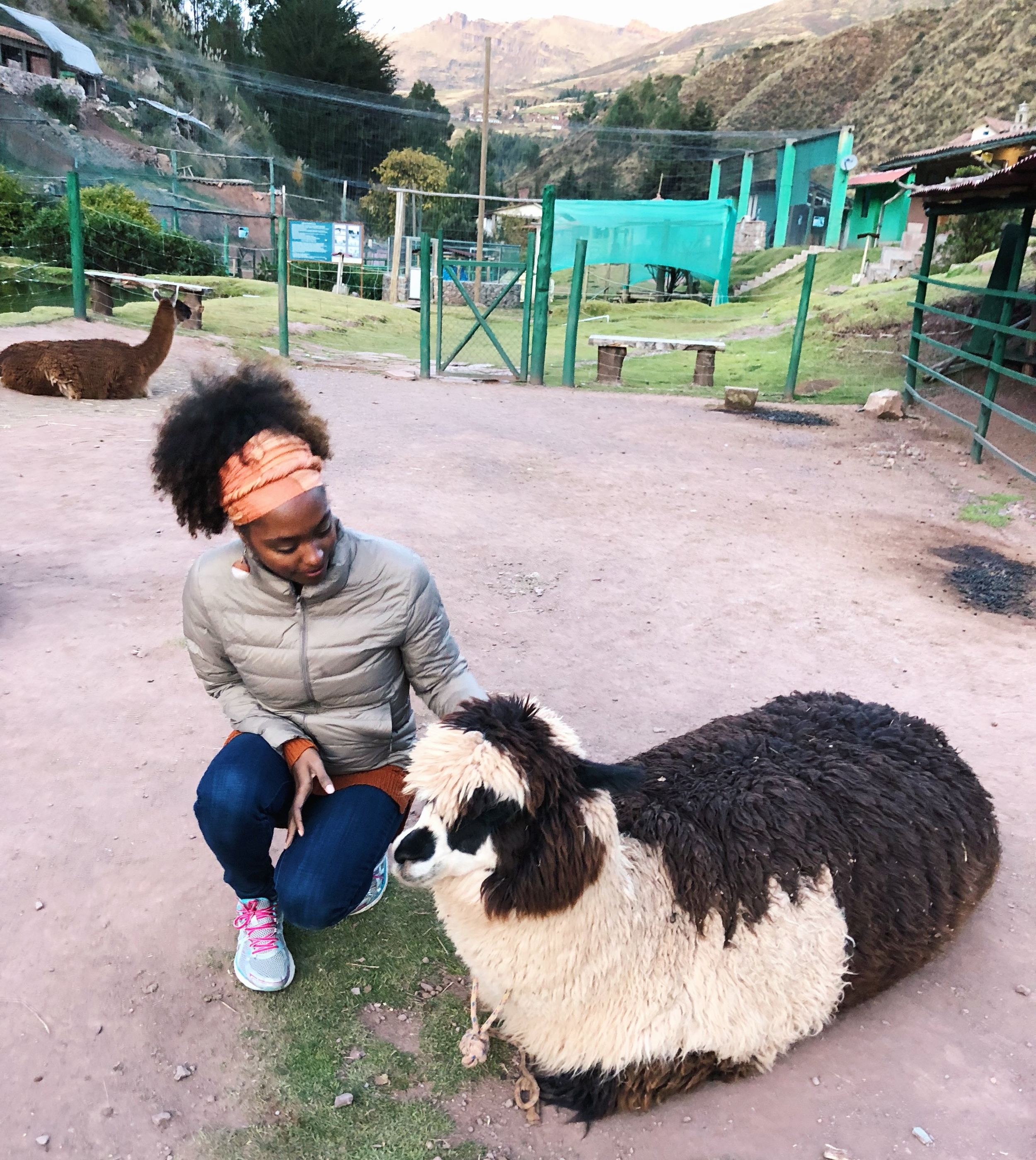
Day 6 (Vinicunca):
Day trip from cusco to rainbow mountain with wayna peru expeditions.
Total Cost- $42.74
Rainbow Mountain Tour – $27.48
Rainbow Mountain Admission – $3.05
Horse rental one-way – $12.21
On Day 6, I checked off another bucket list item of mine — a Rainbow Mountain Trek, also known as Vinicunca. This varicolored mountain stands 16,000 feet above sea level and was just discovered 5 years ago. I had a wonderful time doing a Rainbow Mountain tour with Wayna Peru Expeditions.
Check out my Rainbow Mountain travel tips for getting through this challenging experience
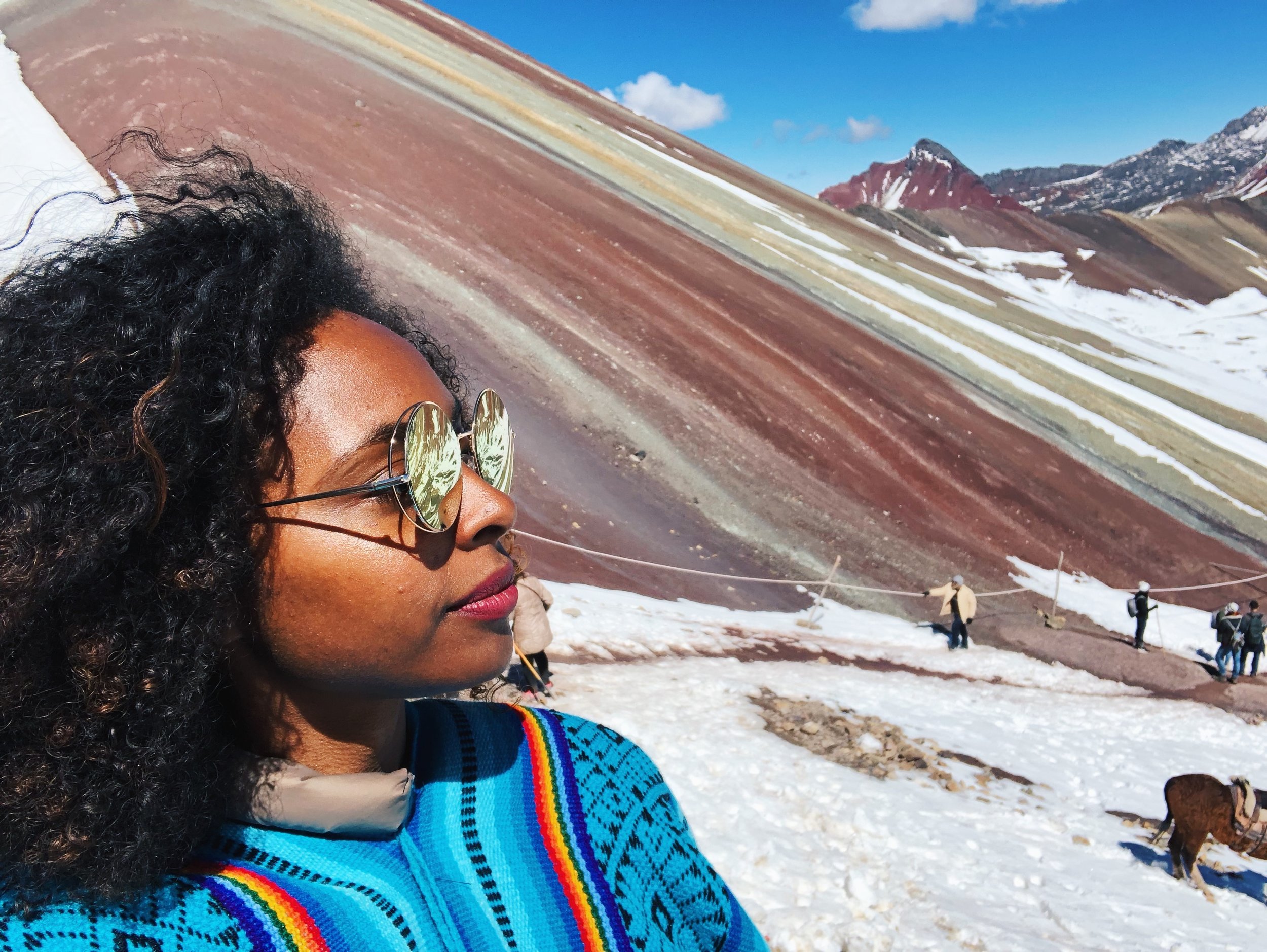
Day 7 (Lima):
Temple of the sun visit in cusco & travel to lima .
Admission Cost- $3.04
Before traveling back to Lima we went to visit the Temple of the Sun, Coricancha , which is said to be the most important temple in the Incan Empire and one of the top Cusco points of interest. Not only did the temple honor the sun god, but it was constructed in alignment with stellar and planetary motion, which permitted for a precise stream of golden sunlight to beam through its windows every solstice for the Andean New Year.
The first thing I asked myself when I walked in the Temple of the Sun was, why does it look like a Catholic Church? That’s because the Spanish colonists destroyed the temple and used its foundations to build the Church of Santo Domingo. We were one of the first people to arrive at the temple, and there weren’t any tour guides available at that time. There also weren’t many posted signs or placards to provide detailed information about the site. So we started talking to Mario, a gardener at the temple, who happily provided us with some interesting information about the temple’s history.
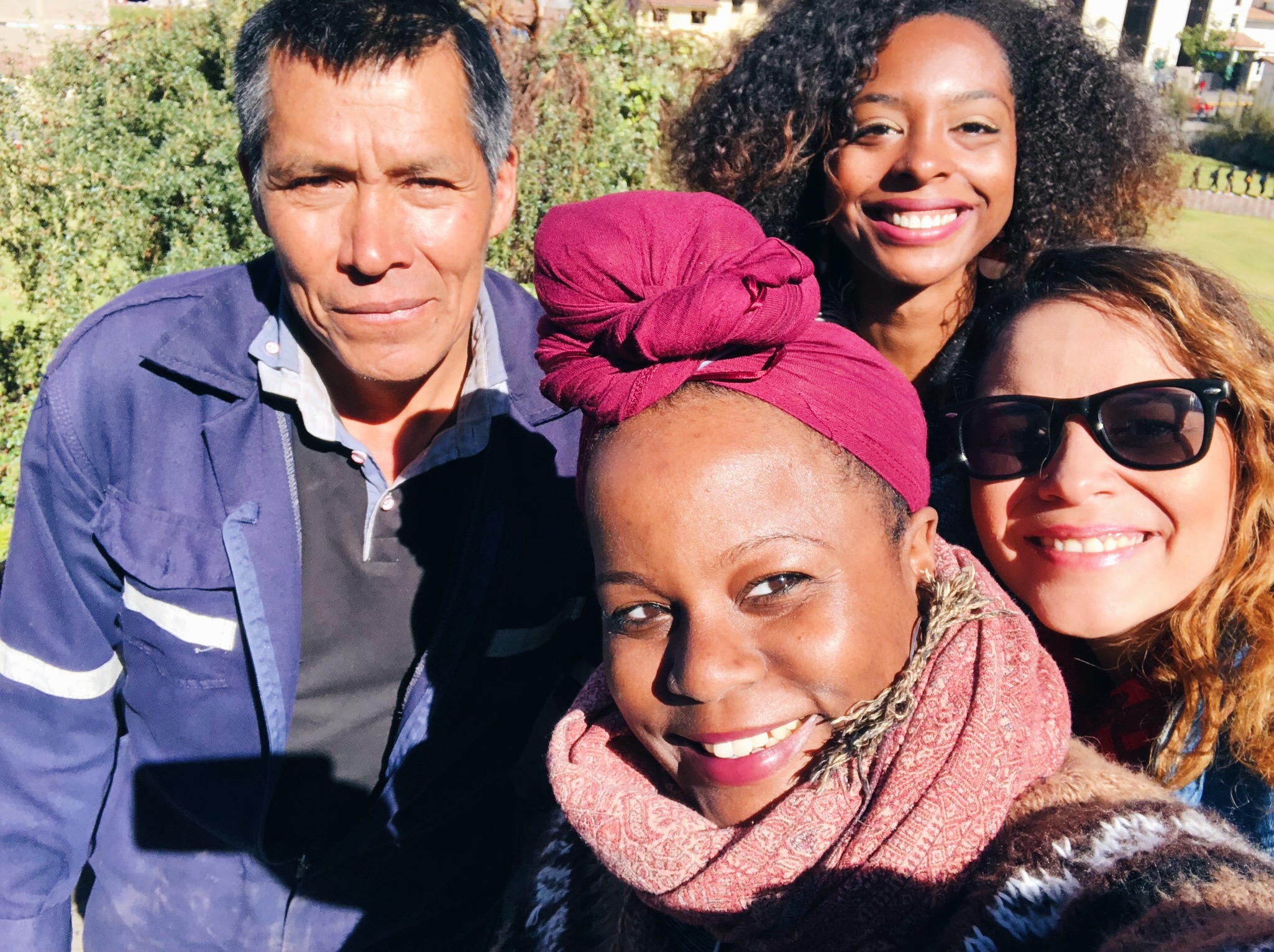
Cusco- Plaza De Armas Exploration & Spa Day
We had planned to see more ruins around Cusco, but that was before we realized that Peru was playing against Denmark in the World Cup! They haven’t been in the World Cup in over 30 years, so this was a huge deal. So we bought some jerseys and watched the game in Plaza De Armas. The crowd was massive and the energy was insane. Even though Peru didn’t win, it was still a special moment to be a part of! If you have extra time in Cusco, be sure to check out the Plaza De Armas because they often have interesting public events happening.
After the game, we got a well-needed full body and hot stone massage near Plaza De Armas for $12. It was one of the best massages I’ve had in a while and a great way to end a very active trip.

Peru Budget
With its charm and mystery, Peru left a big impression on our hearts. Here’s the total per person cost (based on a group of 3) for our trip to Peru:
Roundtrip flight from NYC to Lima in June- $679
Roundtrip flight from Lima to Cusco in June- $68
Private Driver from Cusco to Ollantaytambo – $11.19
Private Driver/ Guide from Ollantaytambo to Cusco via Sacred Valley- $28
Accomodations- $238
Food & Drink- ~ $150
Pisco Sour & Ceviche Cooking Class- $40
Day trip to Paracas & Huachachina from Lima- $119
Machu Picchu- $232.52
1-hour Full Body Massage- $12
Rainbow Mountain- $42.74
Temple of the Sun: $3.04
Total Cost- $1,649
Have you ever gone on a Peru vacation? Let me know about your Peru travel experience in the comment box below!
Liked it ? Pin it!
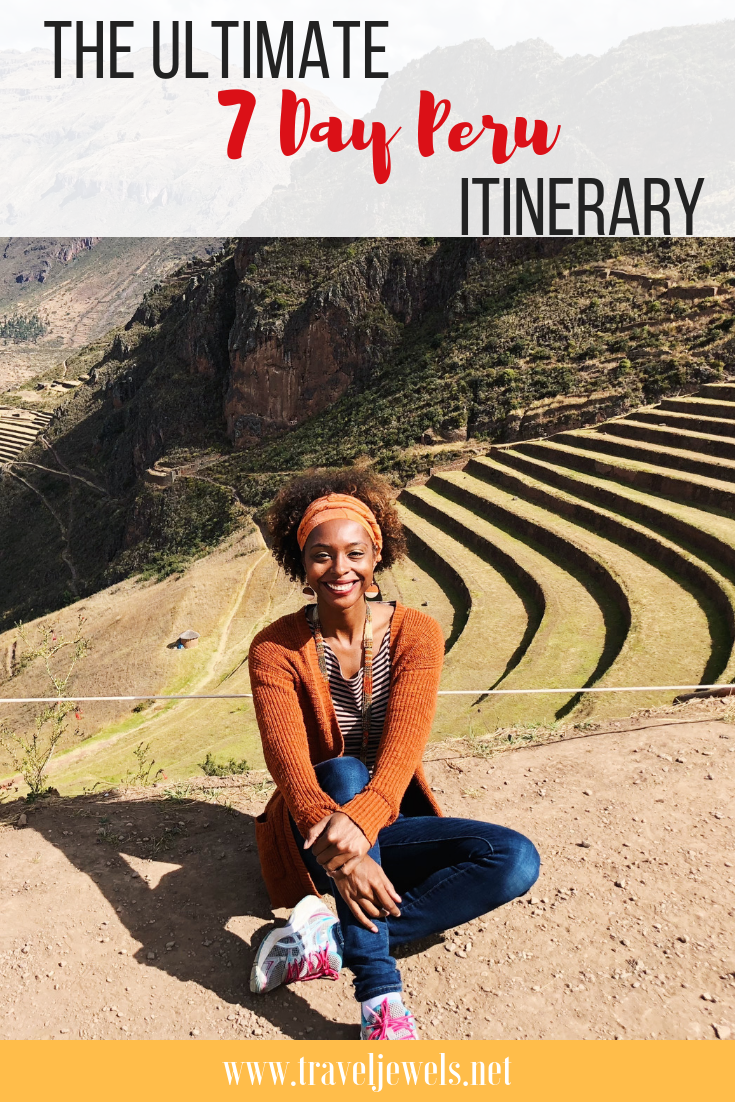
Disclaimer: I was a guest of the Lima Gourmet Company, Peru Hop, and Wayna Peru Expeditions, but all opinions expressed here are my own. This post contains affiliate links, which means I receive a small commission if you make a purchase through them, at no extra cost to you. This helps me keep this site up and running and bring you useful free content. Thanks so much for your support!

Jewels Rhode
Frequent Flyer. Chief Enjoyment Officer. Helping you make your travel dreams a reality!
Recent Posts
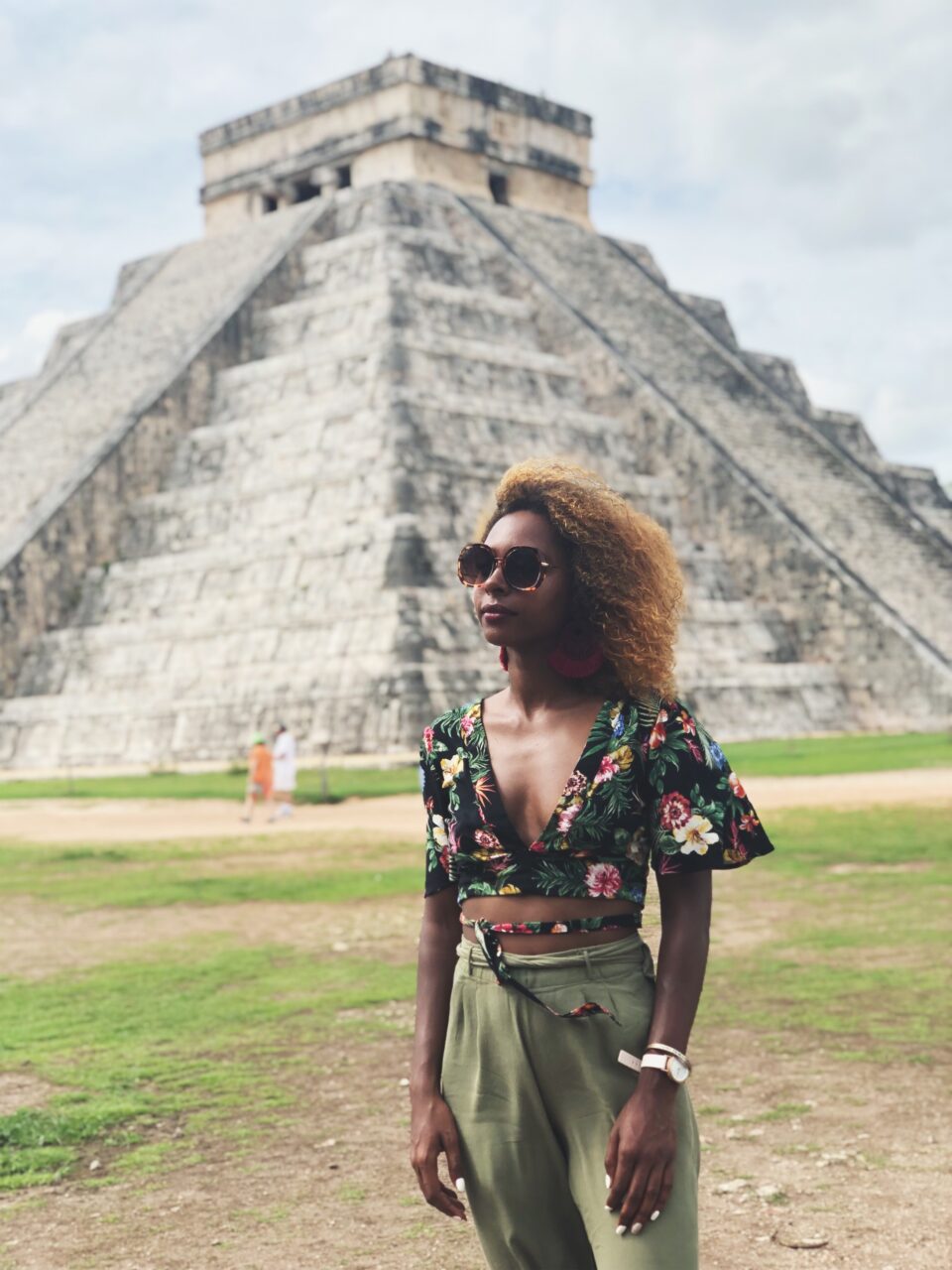
3-Day Tulum Travel Guide
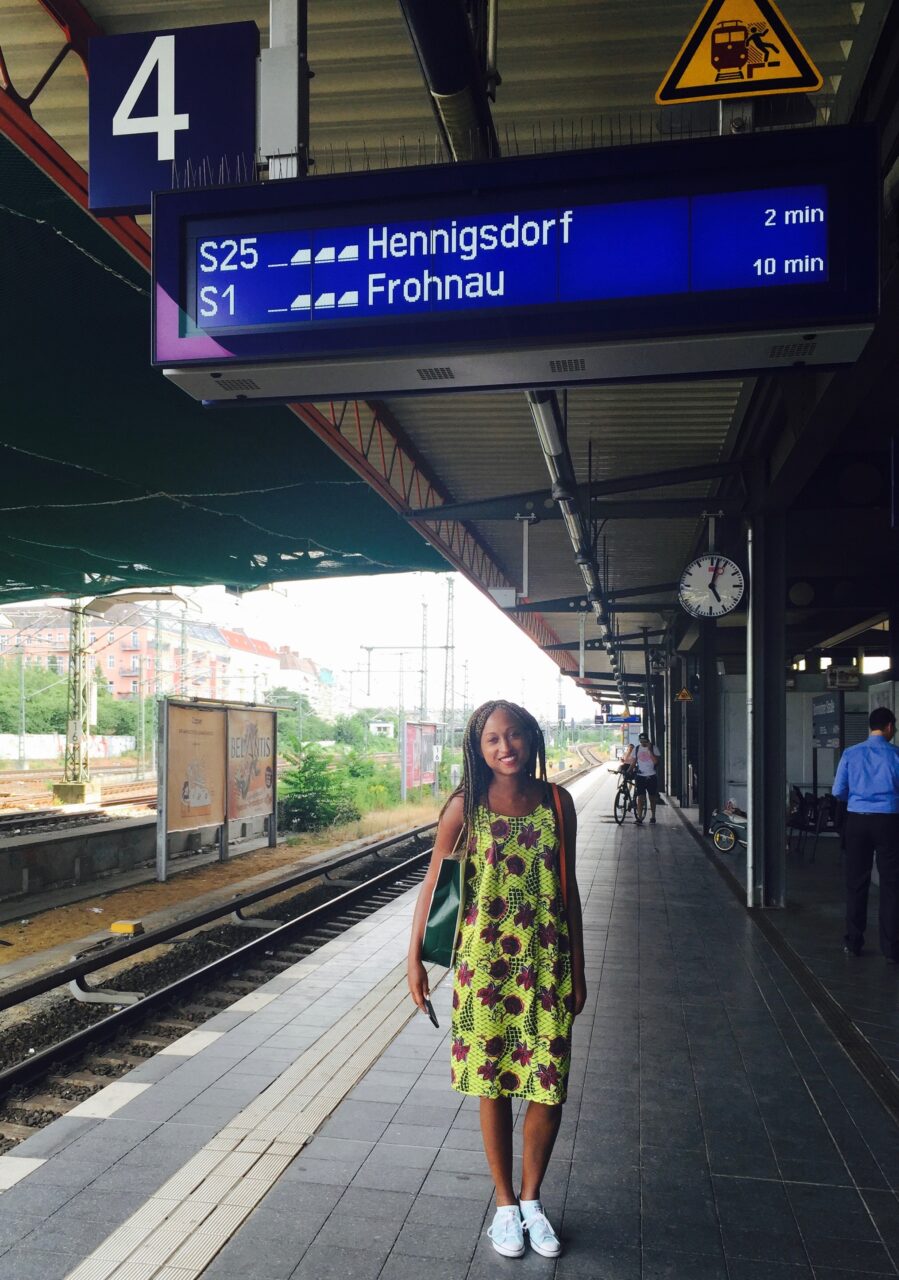
7 Tips for Traveling with Lupus

Top 12 Travel Moments of 2018
Join the journey.
Subscribe to Travel Jewels for exclusive travel tips, wellness insights, and unforgettable adventures delivered straight to your inbox.
- The Caribbean
- North America
- Central America
I provide you with the information and inspiration to explore new horizons, nourish your well-being, and embrace a healthier and more adventurous you.
Copyright 2024 All Rights Reserved | Privacy Policy | Travel Jewels, LLC
Search traveljewels.net

How to Plan an Epic Peru Family Vacation
W hether you want to cross exploring the ancient ruins of Machu Picchu off your family’s travel bucket list, or you long to explore the magnificent geological features of Rainbow Mountain near Cusco, Peru represents the perfect spot for a multi-generational family vacation . We’ve been wanting to visit Peru for awhile and have always appreciated Our Whole Village ‘s philosophy and itineraries.
Our Whole Village (OWV) is a family-focused travel agency that designs meaningful and culturally immersive trips for families who want to create lasting memories, travel more consciously, and give back. I asked OWV to put together this Peru guide, including their favorite activities and accommodations.
*Disclosure: This post may contain affiliate links, which means we may receive a commission if you click a link and purchase something that we have recommended. Please check out our disclosure policy for more details. Thank you for your support!
Peru Family Vacation Guide
Why take a family vacation to peru.
Peru contains stunning natural beauty, from high-elevation lakes to remote deserts and prime Amazon rainforest. Its rich and varied history means there are archaeological treasures from civilizations as diverse as the Norte Chico, Wari, Nazca, and Inca scattered across the land.
From the colonial charm of Cusco to the ancient splendor of Sacsayhuaman, the iconic llamas and alpacas of the Sacred Valley to the lush rainforests of Puerto Maldonado, there’s something for every age and interest in Peru. What’s more, the “Land of the Incas” boasts some of the best food in the world, founded on agricultural practices left unchanged for more than 2,000 years.
Where Is Peru?
South America is moderately easy to reach from the United States. While Peru has 234 airports, only 24 of those receive regularly scheduled flights from Peru’s leading domestic airlines. Most travelers fly directly into Lima’s Jorge Chávez International Airport (LIM) before catching connecting flights to final destinations such as Cusco (CUZ) or Puerto Maldonado (PEM) (for a visit to the Amazon Basin).
What to Know Before You Travel to Peru
Peru currency.
The official currency of Peru is the nuevo sol (S/) or Peruvian sol . Since the nation still operates primarily on cash, keep plenty of paper money and coins on hand. Don’t expect to find ATMs or currency exchanges in small villages and towns.
While US dollars may also be accepted, expect change given in the local currency. So, you’ll have to do a little math to make sure you receive the correct change.
Peru safety
In certain parts of Peru, such as the Columbian and Peruvian border area in the Loreto region, criminal activity is more common. The American government also recommends avoiding the area in central Peru known as the Valley of the Rivers Apurimac, Mantaro, and Ene.
Remain aware of your surroundings and stay vigilant as you would with any location that you’re visiting while at home or abroad. Use common sense and don’t venture out after dark. For more information on safety during your vacation, check out the latest update s .
Vaccinations for Peru
The CDC does recommend travelers to Peru take certain precautions. Hepatitis A is an important one, as well as Typhoid, and Tetanus. Check out these travel vaccines for Peru recommended by Passport Health (which is a great place to go for your shots) to see what you might need to have before a visit.
Transportation in Peru
There is a vast diversity when it comes to forms of transportation in Peru , from antiquated trucks to modern air fleets. As you travel through the countryside, you will need to strike a balance between comfort, practicality, cost, and safety. Better yet, work with a travel company that can organize transportation needs in advance, relying on the most comfortable and modern standards.
Peru Challenges and Concerns
When traveling to Peru, prepare for soaring heights and panoramic vistas. Of course, these views come with the potential for altitude sickness (or soroche ). Prevention through acclimatization to higher elevation remains the best line of defense.
Recognizing the telltale signs of altitude sickness is important. They include loss of appetite or nausea, headaches, lethargy, and poor sleep. To avoid altitude sickness, make rest a priority, avoid alcohol, and eat in moderation.
Healthcare in Peru
The public healthcare system provides all Peruvians with access to medical care regardless of their income. The private health sector is mainly centered in the capital city of Lima.
Private clinics provide a much higher standard of care than public health facilities, and they have up-to-date medical equipment, supplies, diagnostic equipment, medicine, and well-trained nurses and physicians. Tourists to Peru should purchase an international health insurance policy before arrival to cover any expenses that arise while abroad.
When is the Best Time to Visit Peru?
As with any vacation, you’ll need to choose the right time for you, but here is what you can expect when traveling to Peru. Dry Season: May to October. Rainy Season: November through April. High Season: July and August, mid-December to mid-January.
Optimal Travel Times: April to June or September to November. It’s a good choice to travel during these times so that you can enjoy lighter crowds, warmer temperatures, and fewer rainy days.
What to Pack for Peru?
When in Peru, prepare to dress for a variety of microclimates found at various elevations. The nation contains 28 of the 32 world climates. What does this mean for multigenerational travelers? Remember to pack for temperature fluctuations. In other words, layering will be your friend.
Choose wrinkle-free materials that pack easily and can be washed on the go and air-dried. Don’t forget a compact raincoat for the occasional drizzle and a light down jacket for evenings when temperatures can drop drastically.
You’ll also want to invest in comfortable walking shoes that can handle brief treks through the mountains or jungle. Plus, make sure to leave some extra room to bring back souvenirs from Peru .
Things to do in Peru with kids
Paddleboard or kayak on piuray lagoon.
Enjoy a 15-minute yoga session before heading out onto Piuray Lagoon for a paddleboarding or kayaking lesson . The calm, mirror-like waters of the lake are perfect for practicing new skills while enjoying breathtaking vistas of the surrounding countryside.
Enjoy an Immersive Visit to the Huilloc Community
Experience the vibrant indigenous culture of the Sacred Valley of the Incas (or Urubamba Valley) while being symbolically integrated into the Huilloc community. You’ll get dressed in typical clothes and use traditional tools to participate in the lifeways of the Andean people.
Explore the Peruvian Amazon
From the Tambopata National Reserve to Manú National Park, enjoy spectacular views and many family-friendly activities. These include river cruises, accessible jungle hikes, visits to indigenous villages, and plenty of wildlife observation. A Peruvian Amazon tour is a great way to break up your trip.
Take the Vistadome Train to Machu Picchu
Savor the dramatic scenery of the Andes on a scenic train journey to the station at Agua Calientes. There, board a coach for a 25-minute ride to Machu Picchu , the fabled “Lost City of the Incas” built circa 1450 by the Inca emperor Pachacuti.
What to Eat in Peru?
Peruvian food is enjoying a moment and with good reason. This cuisine reflects the diverse history, culture, and local resources of the nation while offering plenty of mouthwatering recipes. What should you order while in Peru? Some of our favorite dishes include:
- Aji de Gallina : A chicken dish crafted using Peru’s famous bright yellow Aji Amarillo peppers. The slight spiciness of the meal keeps it from descending into boredom without proving “too hot” for kids.
- Salchipapas : This mixture of papas (potatoes) and salchidas (sausage) will put a smile on any kid’s (or adult’s) face. It also represents a hearty treat that’ll stick with you throughout the day.
- Papas a la Huanca í na : This glorious mixture of huancaína , a creamy cheese sauce, over boiled Peruvian potatoes and hard-boiled eggs tastes both rich and satisfying.
- Mazamorra Morada : This popular dessert is made from purple corn and fruit and will please just about any sweet-loving palate.
From Aji de Gallina to Salchipapas , there’s no end to yummy Peruvian food for kids. What’s more, the Peruvian reliance on local vegetables and fruits translates into nutritious dishes sure to satisfy without causing a sugar rush.
Accommodations in Peru
Multigenerational travels to Peru provide ample opportunity for three generations (or more) of your family to come together for unforgettable memory-making. It’s important to find accommodations that fit the needs of your family.
Where to Stay in Peru with a Family
Here are a few more upscale options for the most luxurious traveler:
- Belmond Miraflores (Lima)
- Tambo del Inka (Sacred Valley)
- Titilaka (Lake Titicaca)
- Inkaterra (Machu Picchu)
- Belmond Monasterio (Cusco)
Peru Itinerary ideas
A family vacation to Peru should be a minimum of 10 or 11 days long to allow for travel both ways. A flight from New York to Lima takes approximately eight hours. Peru family travel will also require time to acclimate to the high altitude of places within the Sacred Valley, including Cusco and Machu Picchu.
Peru itinerary: Lima to Cusco
Fly into Lima and spend a couple of days exploring the city. Head to Cusco to start your Sacred Valley experience. At Piuray Lagoon, enjoy a kayaking or paddleboarding lesson before taking a traditional Andean ceramics class.
Continue to Chinchero, Maras, Moray, and Ollantaytambo, to learn more about the vibrant Inca Civilization. In Huilloc, enjoy a community-based experience that provides a behind-the-scenes look into daily life. Then, take a scenic Vistadome train ride to Machu Picchu, a UNESCO World Heritage Site, where you’ll savor the mystique and adventure of the “Lost City.”
While visiting Machu Picchu, you can also stop into the small town of Aguas Calientes, nestled along the banks of the Urubamba River. There, the whole family can enjoy shops and eateries, or soaking in the hot springs. Then, take a short walk to the Machu Picchu Site Museum and Botanical Garen where you can explore a wide variety of local flora.
You can also discover the architectural wonders of Cusco and Sacsayhuaman or enjoy a horseback riding expedition in the Andes Mountains with a tour guide. For a sweet stop, participate in a chocolate-making workshop at a chocolate museum.
This is the Peru itinerary we looked at for planning a trip.
Amazon Extension: Puerto Maldonado
Take a short flight from the Lima Airport into Puerto Maldonado Airport and head to the pier just 15 minutes away. From there, spend 45 minutes sailing along the Madres de Dios River to your hotel, experiencing expansive vistas of the forest along the way.
Choose from a variety of excursions that allow you to explore the rainforest at your own pace. Options include a guided walk to learn more about the Amazon Basin, passing by impressive trees such as the Shihuahuaco and the strangler fig. Or, explore the river by night, keeping an eye out for the rainforest’s nocturnal creatures — owls, capybaras, nightjars, alligators, and more.
The post How to Plan an Epic Peru Family Vacation appeared first on Groups Are A Trip .


COMMENTS
10 days in Peru. Overview of this 10-day Peru trip planner: Days one through three: Cusco and the Sacred Valley. Days four through seven: The Inca Trail. Day eight: Machu Picchu. Days nine and ten: Lima. 10 days in Peru is the perfect length of a trip that allows you to add the Inca Trail to your Machu Picchu trip.
Day 2: Sacsayhuaman ruins. The ruins of Sacsayhuaman. Day 2 of our 10 days in Peru brought an early-morning flight to Cusco and the real start of our Peruvian adventure. The first stop on our Peru itinerary was the ruins at Sacsayhuaman in the Sacred Valley, northwest of Cusco. Built around 1100, this was the historic capital of the Inca Empire.
Intrepid Scout's Tips for 12 Days in Peru Itinerary. Embarking on a 12-day journey through Peru is an adventure of a lifetime, a tapestry woven with ancient wonders, vibrant cultures, and breathtaking landscapes. From the mystical ruins of Machu Picchu to the enigmatic Nazca Lines, every destination offers a glimpse into the country's rich ...
Costs of Traveling in Peru. Travel on a budget in Peru, from $340 − $450 USD weekly per person, mid-range $1000 − $2070 USD, and high-end from $2030 − $2930 USD. However, costs depend on factors like accommodation, transportation, and activities. We did not include flights. Check flight prices here.
With our 7-day Peru Itinerary, we want to ease your travel plans, convince you to travel to Peru, and show you the beauty of this incredibly diverse country. Chapters. Peru Itinerary Overview. In Peru, there a a ton of things to do and see. We read a lot of unrealistic, squeezed, and overambitious itineraries when we were crafting our 1-week ...
Peru Itinerary - Days 19 -21: Machu Picchu. Aah Machu Picchu - the Incan masterpiece that is the subject of many a reverie. It's hard to say what makes the Incan ruins of Machu Picchu just so special. The mountain air is thick with mystery and anticipation here.
From the Nazca Lines to Colca Canyon, Lake Titicaca, and Machu Picchu, this 14-day itinerary takes you to Peru's major highlights. Fly over the Nazca Lines - some of the world's most impressive geoglyphs, then spend some time exploring the metropolitan city of Lima before heading out to explore the colonial city of Arequipa. Next, explore Colca Canyon, one of the world's deepest canyons, then ...
Here's a list of some of the top things you can do along this itinerary when in Peru: Go Sandboarding in Huacachina. Hike the Inca Trail. Visit the Catacombs in Lima. Summit El Misti Volcano in Arequipa. Visit the ancient citadel of Machu Picchu. Spot Wildlife in the Ballestas Islands.
A Travel Guide to Peru with ️ Travel Itineraries, ️ Top places to visit in 2024, ️ Safety, and more! Peru. Travel Guide. Incan wonders at Machu Picchu, the colorful stripes of Rainbow Mountain, and the wild sounds of the Amazon rainforest. Itineraries; Best places; Map;
Day 16-19: Salkantay Trek (Hike One of the Most Beautiful Treks in the World) If you love hiking and trekking then you should add the Salkantay Trek to your 3 week Peru itinerary. It is a 75km (46 mi) long trek through the Peruvian Andes and is one of the most popular ways to get to Machu Picchu. The Salkantay Trek is still less popular or as ...
2. Ballesta Islands (Isla Ballestas) and Paracas National Reserve. 3. Nazca Lines. Day 6-11 (6 Days): Cusco (Capital of the Incas) and Machu Picchu. How To Get From Ica To Cusco. Things to Do in Cusco, Peru. 1. Machu Picchu.
A map and a quick rundown of each day's activities are provided below, with more in-depth information to follow. DAY 1 - LIMA. DAY 2 - AMAZON RAINFOREST. DAY 3 - AMAZON RAINFOREST. DAY 4 - CUSCO. DAY 5 - SACRED VALLEY. DAY 6 - TREKKING THE INCA TRAIL. DAY 7 - TREKKING THE INCA TRAIL. DAY 8 - TREKKING THE INCA TRAIL.
Route 3: Lima + jungle + Paracas + desert + Cusco. This itinerary combines trips to Peru's two most popular cities, Lima and Cusco, with excursions into the Amazon jungle, Paracas National Reserve, Nazca desert and Machu Picchu. It starts in Lima and ends in Cusco.
This site is owned by Apa Digital AG, Bahnhofplatz 6, 8854 Siebnen, Switzerland. Rough Guides® is a trademark owned by Apa Group with its headquarters at 7 Bell Yard London WC2A 2JR, United Kingdom. Explore the best 14 days in Peru itineraries. Our local travel experts crafted the best itineraries to make the most out of your trip.
I am proposing here several travel itineraries: 1 week in Peru, two different 10-day itineraries, a 3 week itinerary and a longer backpacking route. For that last one, the amount of time you will stay at each destination depends on the total amount of time you have. 1 Week Peru Itinerary: Lima and Cusco. Day 1: Lima ; Days 2-3: Cusco city
Day 2: Day Trip to Machu Picchu. Day 3: Sacred Valley to Cusco. Day 4: 7 Lakes of Ausangate Hike. Day 5: Rainbow Mountain. Day 6: Cusco to Lima. Day 7: Huacachina Day Trip. I planned this 7-Day Peru itinerary in this exact order to give time to acclimate to the elevation. The town of Ollantaytambo is lower elevation than Cusco (8K feet vs 11K ...
Watch on. Alpaca a la Parrilla: Eating Alpaca Meat in Cuzco, Peru. Watch on. Hiking the Inca Trail to Machu Picchu Documentary. Machu Picchu Travel Guide Documentary. Peru travel itinerary for anyone with one month to travel across the country. Here are the best places to visit on your first trip to Peru.
Itinerary #1: Explore the Heart of the Inca Empire. Tour the remains of the Inca Empire on this journey to the ancient citadel of Machu Picchu, the floating islands of Lake Titicaca, and the Inca capital of Cusco. Start your trip with a night in Lima before the next day's transfer to Cusco.
Day 1: Arrive in Lima, the capital of Peru (stay 2 nights) Day 2: Exploring Lima. Day 3: Fly to Cusco (stay 4 nights) Days 4-6: Cusco & surrounding area, including Rainbow Mountain and the Sacred Valley. Days 7-10: Inca Trail & Machu Picchu (camping 3 nights, return to Cusco for 4th night) Day 11: Bus to Puno (stay 2 nights)
Your Peru travel itinerary isn't complete without a day tour to the spectacular Rainbow Mountains! The Rainbow Mountains are by far the most popular day trip from Cusco, located a few hours deeper and higher in the Andes (over 5,000 meters in altitude!). This dreamlike landscape, filled with colors, mountains, llamas, and alpacas will take your ...
A nice balance of attractions for your Peru itinerary. Recommended nights: 2-3 nights maximum in Lima is required. Taxi Green or Uber can be booked from the airport to Miraflores. Lima to Paracas: Approximately 3 - 4 hours. Lima to Màncora (see below): 17 - 19 hours (1-hour 45-minute flight approximately)
With its charm and mystery, Peru left a big impression on our hearts. Here's the total per person cost (based on a group of 3) for our trip to Peru: Roundtrip flight from NYC to Lima in June- $679. Roundtrip flight from Lima to Cusco in June- $68. Private Driver from Cusco to Ollantaytambo - $11.19.
Peru Itinerary ideas A family vacation to Peru should be a minimum of 10 or 11 days long to allow for travel both ways. A flight from New York to Lima takes approximately eight hours.